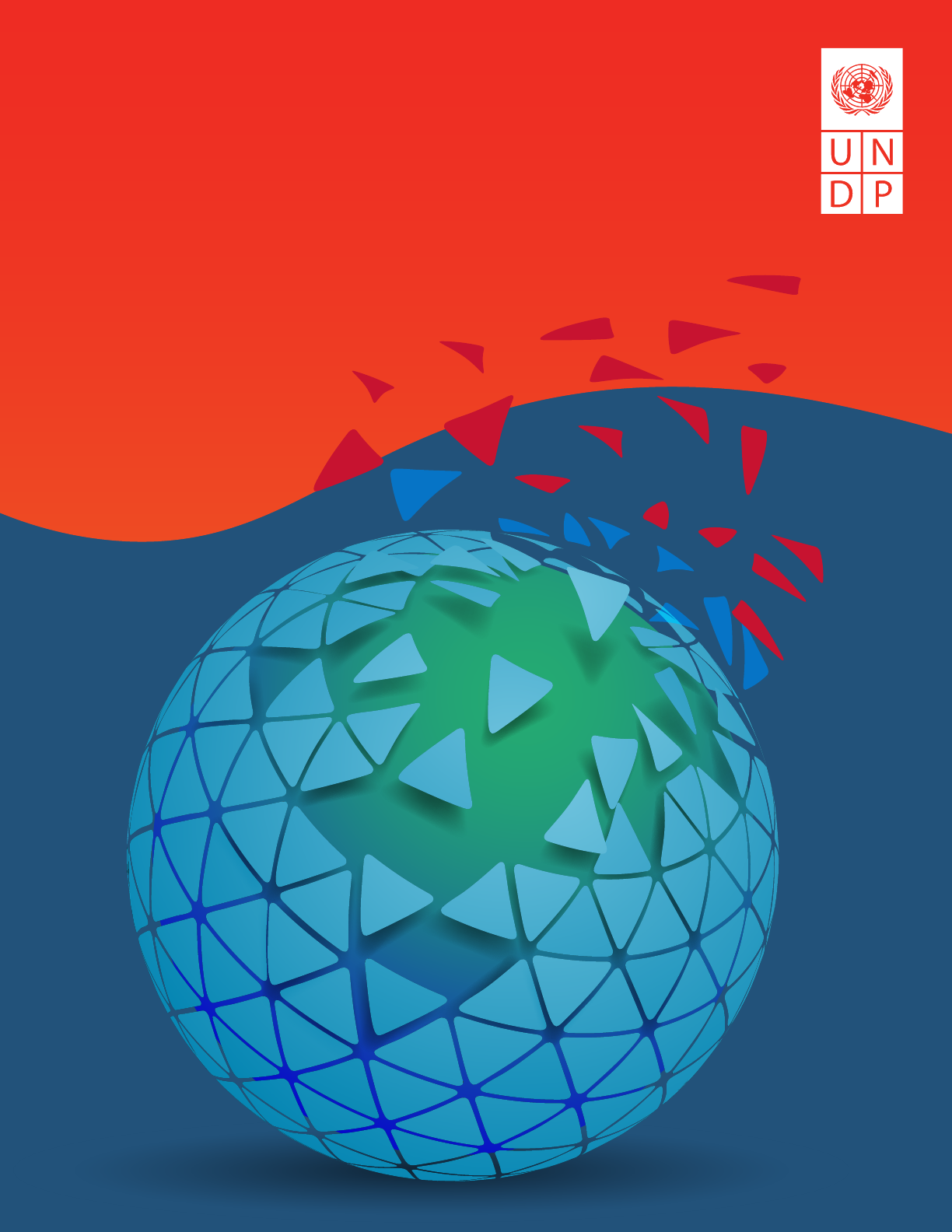
2022 SPECIAL REPORT
New threats to human security
in the Anthropocene
Demanding greater solidarity
New threats to human security in the Anthropocene
Demanding greater solidarity

Copyright @ 2022
By the United Nations Development Programme
1 UN Plaza, New York, NY 10017 USA
All rights reserved. No part of this publication may be reproduced,
stored in a retrieval system, or transmitted, in any form or by means,
electronic, mechanical, photocopying, recording, or otherwise, without
prior permission.
General disclaimers. The designations employed and the presentation
of the material in this publication do not imply the expression of any
opinion whatsoever on the part of the Human Development Report
Office (HDRO) of the United Nations Development Programme (UNDP)
concerning the legal status of any country, territory, city or area or of its
authorities, or concerning the delimitation of its frontiers or boundaries.
Dotted and dashed lines on maps represent approximate border lines
for which there may not be full agreement.
The findings, analysis, and recommendations of this Special Report
do not represent the official position of the UNDP or of any of the UN
Member States that are part of its Executive Board. They are also not
necessarily endorsed by those mentioned in the acknowledgments or
cited.
The mention of specific companies does not imply that they are
endorsed or recommended by UNDP in preference to others of a similar
nature that are not mentioned.
Some of the figures included in the analytical part of the report where
indicated have been estimated by the HDRO or other contributors to the
Report and are not necessarily the official statistics of the concerned
country, area, or territory, which may use alternative methods. The
published material is being distributed without warranty of any kind,
either expressed or implied.
The responsibility for the interpretation and use of the material lies with
the reader. In no event shall the HDRO and UNDP be liable for damages
arising from its use.
Additional resources related to the Report can be found online at
http://hdr.undp.org. Resources on the website include digital versions
and translations of the Report and the overview, an interactive web
version of the Report. Corrections and addenda are also available
online.

New threats to
human security in the
Anthropocene
Demanding greater solidarity
SPECIAL REPORT 2022
Empowered lives.
Resilient nations.

SPECIAL REPORT 2022
Team
The report was prepared by a team led by Heriberto Tapia under the
guidance of Pedro Conceição. The core team was composed of Ricardo
Fuentes-Nieva, Moumita Ghorai, Yu-Chieh Hsu, Admir Jahic, Christina
Lengfelder, Rehana Mohammed, Tanni Mukhopadhyay, Shivani Nayyar,
Camila Olate, Josefin Pasanen, Fernanda Pavez Esbry, Mihail Peleah and
Carolina Rivera Vázquez. Communications, operations, and research and
production support were provided by Dayana Benny, Allison Bostrom,
Mriga Chowdhary, Maximilian Feichtner, Rezarta Godo, Jonathan Hall,
Seockhwan Bryce Hwang, Fe Juarez Shanahan, Chin Shian Lee, Jeremy
Marand, Sarantuya Mend, Stephen Sepaniak, Anupama Shroff, Marium
Soomro and I Younan An.
The High-Level Advisory Panel of Eminent Experts provided support and
guidance: Laura Chinchilla and Keizo Takemi (co-chairs), Amat Al Alim
Alsoswa, Kaushik Basu, Abdoulaye Mar Dieye, Ilwad Elman, María Fernanda
Espinosa Garcés, Haishan Fu, Toomas Hendrik Ilves, Amy Jadesimi, Jennifer
Leaning and Belinda Reyers.
ii NEW THREATS TO HUMAN SECURITY IN THE ANTHROPOCENE / 2022

We are faced with a development paradox. Even though
people are on average living longer, healthier and wealthier
lives, these advances have not succeeded in increasing peo-
ple’s sense of security. This holds true for countries all around
the world and was taking hold even before the uncertainty
wrought by the COVID-19 pandemic.
The pandemic has increased this uncertainty. It has imper-
iled every dimension of our wellbeing and amplified a sense
of fear across the globe. This, in tandem with rising geopo-
litical tensions, growing inequalities, democratic backsliding
and devastating climate change-related weather events,
threatens to reverse decades of development gains, throw
progress on the Sustainable Development Goals even fur-
ther off track, and delay the urgent need for a greener, more
inclusive and just transition.
Against this backdrop, I welcome the Special Report
on New threats to human security in the Anthropocene:
Demanding greater solidarity, produced by the United
Nations Development Programme (UNDP). The report
explains this paradox, highlighting the strong association
between declining levels of trust and increased feelings of
insecurity.
It suggests that during the Anthropocene—a term pro-
posed to describe the era in which humans have become
central drivers of planetary change, radically altering the
earth’s biosphere—people have good reason to feel inse-
cure. Multiple threats from COVID-19, digital technology,
climate change, and biodiversity loss, have become more
prominent or taken new forms in recent years.
In short, humankind is making the world an increasingly
insecure and precarious place. The report links these new
threats with the disconnect between people and planet,
arguing that they—like the Anthropocene itself—are deeply
entwined with increasing planetary pressure.
The contribution of this report is to update the concept
of human security to reflect this new reality. This implies
moving beyond considering the security of individuals and
communities, to also consider the interdependence among
people, and between people and planet, as reflected in the
2030 Agenda for Sustainable Development.
In doing so, the report offers a way forward to tackle to-
day’s interconnected threats. First, by pursuing human secu-
rity strategies that affirm the importance of solidarity, since
we are all vulnerable to the unprecedented process of plan-
etary change we are experiencing during the Anthropocene.
And second, by treating people not as helpless patients, but
agents of change and action capable of shaping their own
futures and course correcting.
The findings in the report echo some of the key themes
in my report on Our Common Agenda, including the impor-
tance of investing in prevention and resilience, the protection
of our planet, and rebuilding equity and trust at a global
scale through solidarity and a renewed social contract.
The United Nations offers a natural platform to advance
these core objectives with the involvement of all relevant
stakeholders. This report offers valuable insights and analy-
ses, and I commend it to a wide global audience as we strive
to advance Our Common Agenda and to use the concept of
human security as a tool to accelerate the achievement of
the Sustainable Development Goals by 2030.
António Guterres
Secretary-General
United Nations
Foreword
iiiFOREWORD

Acknowledgements
This Report builds on cumulative contributions over close
to three decades that started with the seminal 1994 Human
Development Report (led by Mahbub ul Haq), which popu-
larized the concept of human security, continuing with the
groundbreaking work of the Human Security Commission,
led by Sadako Ogata and Amartya Sen, published in 2003.
The preparation of this Report would not have been pos-
sible without the support, ideas and advice from numerous
individuals and organizations.
The Report benefited deeply from the intellectual advice,
guidance and continuous encouragement provided by
the High-Level Advisory Panel of Eminent Experts. We are
particularly grateful to Co-Chairs Laura Chinchilla and Keizo
Takemi for their intellectual leadership, commitment and
hard work through countless sessions (virtual, hybrid and in
person) throughout 2021. The other members of the Advisory
Board were Amat Al Alim Alsoswa, Kaushik Basu, Abdoulaye
Mar Dieye, Ilwad Elman, María Fernanda Espinosa Garcés,
Haishan Fu, Toomas Hendrik Ilves, Amy Jadesimi, Jennifer
Leaning and Belinda Reyers.
We are grateful to the participants of the virtual sympo-
sium, A New Generation of Human Security, held 8–11 June
2021, including Vaqar Ahmed, Michael Barnett, Lincoln C.
Chen, Alison Fahey, Andreas Feldmann, James Foster, Des
Gasper
*
, Rachel Gisselquist, Anne-Marie Goetz, Oscar A.
Gómez
*†
, Toshiya Hoshino
*†
, Mary Kaldor, Raúl Katz, Erika
Kraemer-Mbula, Staffan Lindberg, Koji Makino
†
, Vivienne
Ming, Joana Monteiro, Toby Ord, Racha Ramadan, Uma
Rani
†
, Pablo Ruiz Hiebra, Siri Aas Rustad
*
, Joaquin Salido
Marcos, Anne-Marie Slaughter, Dan Smith, Frances Stewart,
Shahrbanou Tadjbakhsh
†
, Tildy Stokes, Yukio Takasu, Am-
brose Otau Talisuna and Shen Xiaomeng.
We are thankful for especially close collaborations with
our partners: the Climate Impact Lab (a consortium formed
by the University of California, Berkeley; the Energy Policy In-
stitute at the University of Chicago; the Rhodium Group; and
Rutgers University), the Human Development and Capability
Association, the International Labour Organization, the Ja-
pan International Cooperation Agency, the Migration Policy
* Also author of a background paper.
† Also a peer reviewer.
Institute, the Peace Research Institute Oslo, the Stockholm
International Peace Research Institute, the United Nations
Children’s Fund, the United Nations Human Security Unit, the
United Nations Office for South-South Cooperation and the
World Bank Group.
We also extended our appreciation for all the data, writ-
ten inputs, background papers and peer reviews of draft
chapters to the Report, including those by Faisal Abbas,
Enrico Calandro, Cedric de Coning, Andrew Crabtree,
Karen Eggleston, Erle C. Ellis, Andreas Feldman, Juliana de
Paula Filleti, Pamina Firchow, Rana Gautam, Jose Gómez,
Daniela S. Gorayeb, Martin Hilbert, Daniel M. Hofling, Flo-
rian Krampe, Martin Medina, John Morrissey, Ryutaro Mu-
rotani, Ilwa Nuzul Rahma, Ilse Oosterlaken, Monika Peruffo,
Thomas Probert, Sanjana Ravi, Diego Sánchez-Ancochea,
Tobias Schillings, Parita Shah, Amrikha Singh, Mirjana
Stankovic, Behnam Taebi, Jeroen Van Den Hoven and Yuko
Yokoi.
Several virtual consultations with thematic and regional
experts were held between October and December 2021.
We are grateful for inputs during these consultations. Further
support was also extended by others too numerous to men-
tion here. Consultations are listed at http://hdr.undp.org/en/
new-gen-human-security. Contributions, support and assis-
tance from partnering institutions, including UNDP regional
bureaus and country offices, are also acknowledged with
much gratitude.
Our deep appreciation to Hajime Kishimori and Hiroshi
Kuwata for their strategic and logistical support throughout
the process leading to this Report. Many UNDP colleagues
provided advice, support for consultations and encourage-
ment. We are grateful to Ludo Bok, Khalida Bouzar, Cecilia
Calderón, Michele Candotti, Christine Chan, Joseph D’Cruz,
Mandeep Dhaliwal, Keiko Egusa, Almudena Fernández,
Ayako Hatano, Tatsuya Hayase, Boyan Konstantinov, Raquel
Lagunas
†
, Luis Felipe López-Calva, Tasneem Mirza, Ulrika
Modeer, Paola Pagliani, Maria Nathalia Ramirez, Noella Rich-
ard, Isabel Saint Malo, Ben Slay, Mirjana Spoljaric Egger, Ma-
ria Stage, Bishwa Tiwari, Hisae Toyoshima, Swarnim Wagle,
ACKNOWLEDGEMENTS v
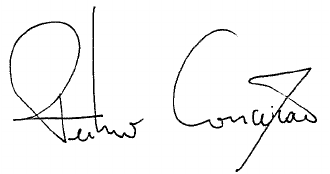
Kanni Wignaraja, Lesley Wright, Yoko Yoshihara and Yan-
chun Zhang.
The preparation of this Report is part of the work lead-
ing to the 2021/2022 Human Development Report. The
Human Development Report Office extends its sincere
gratitude for the financial contributions from the Govern-
ment of Japan, the Republic of Korea and the Government
of Sweden.
We are grateful for the highly professional work of Stronger
Stories on strategic narratives and of the editors and layout
artists at Communications Development Incorporated —
led by Bruce Ross-Larson with Joe Caponio, Mike Crumplar,
Christopher Trott and Elaine Wilson. A special word of
gratitude to Bruce, who brought unparalleled scrutiny and
wisdom — and a bridge to history, as the editor of both the
1994 Human Development Report and the 2003 Ogata-Sen
report.
To conclude, we are extremely grateful to UNDP Admini-
strator Achim Steiner, for giving us the space, encourage-
ment and support to write this report on human security and
for pushing us to make sense of the insecurities faced by
people everywhere in our interconnected planet, which we
hope will help set the foundations for a new generation of
human security strategies.
Pedro Conceição
Director
Human Development Report Office
vi NEW THREATS TO HUMAN SECURITY IN THE ANTHROPOCENE / 2022
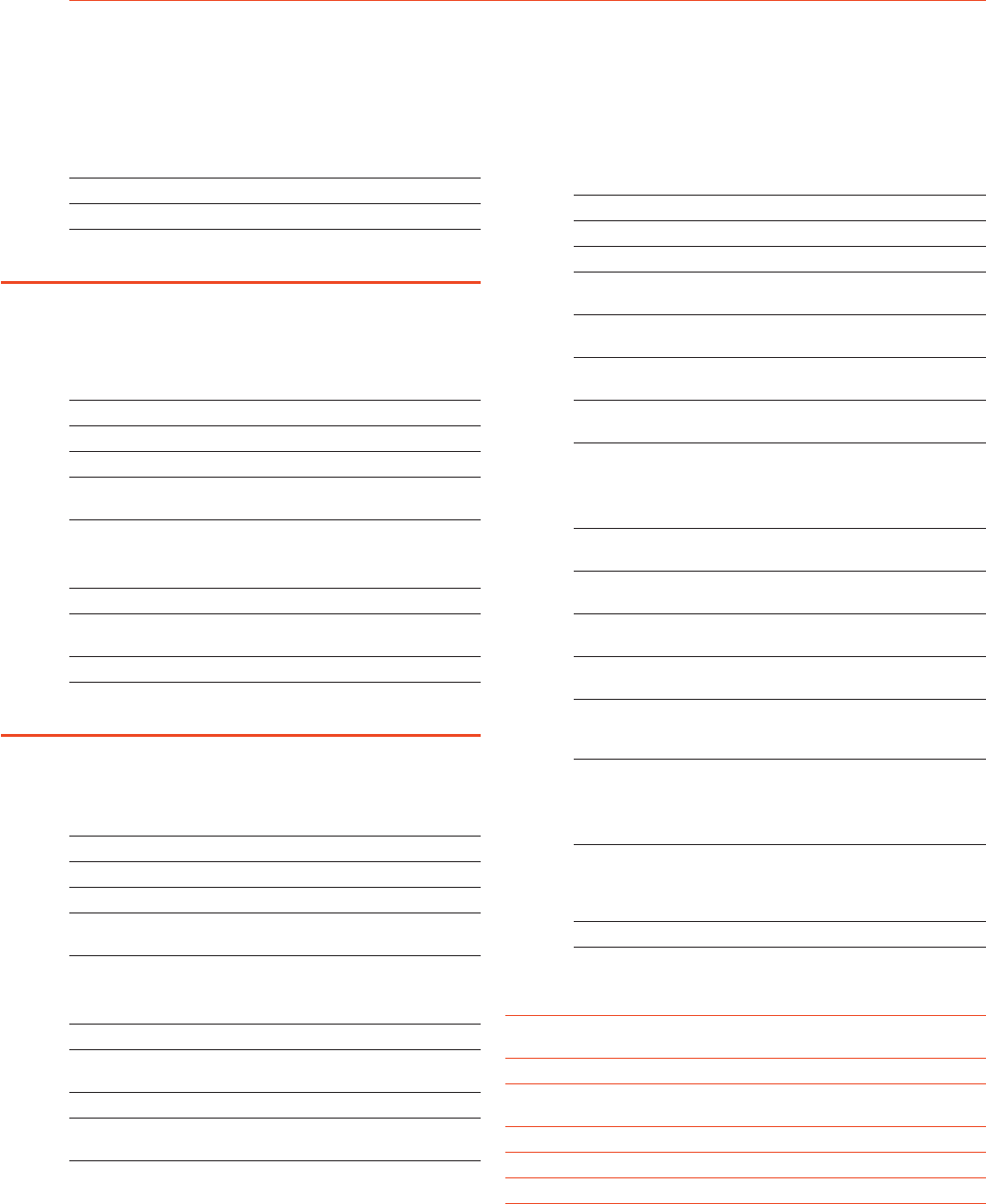
Contents
Foreword iii
Acknowledgements v
Overview 1
PART I
Expanding human security through greater solidarity in the
Anthropocene 9
CHAPTER 1
Human security: Apermanent and universal imperative 11
Becoming richer amid a vast sea of human insecurity 15
Towards human security through the “eyes of humankind” 24
Annex 1.1. A brief account of the origins, achievements and
challenges of the human security concept 34
Annex 1.2. The Index of Perceived Human Insecurity 38
CHAPTER 2
The Anthropocene context is reshaping human security 43
The self-reinforcing interaction between dangerous planetary
changes and social imbalances 46
Compounding threats to human security 50
Human security in the Anthropocene context 58
PART II
Tackling a new generation of threats to human security 63
CHAPTER 3
Digital technology’s threats to human security 65
Cyberinsecurity and unintended consequences of technology 67
Upholding human rights in addressing harms on social media 68
Artificial intelligence–based decisionmaking can undermine
human security 70
Uneven access to technological innovation 73
CHAPTER 4
Unearthing the human dimension of violentconflict 77
Systemic interaction of conflict with threats to human security
calls for systemic responses 79
Agency connects empowerment and protection for peaceful lives 83
The dynamics of violent conflict are evolving under the new
generation of human security threats 83
Putting people at the heart of conflict analysis, conflict
prevention and sustaining peace shows the power of the
human security approach 87
CHAPTER 5
Inequalities and the assault on human dignity 91
Horizontal inequalities undermine human dignity 93
Threats to human security along the lifecycle 94
Violence and economic discriminations harm the human
security of women and girls 98
Inequalities in power across race and ethnicity hurt everyone’s
human security 100
People on the move can be forced to follow paths of human
insecurity 102
Ending discrimination against different expressions,
behaviours or bodies enhances human security for all 105
Eliminating horizontal inequalities to advance human security:
The salience of agency and the imperative of solidarity 107
CHAPTER 6
Healthcare systems outmatched by new human security
challenges 117
As economies bounce back from the Covid-19 pandemic,
people’s health remains under threat 120
An evolving disease burden is driving adjustments to
healthcare systems 123
Reinforcing human security though enhanced healthcare
systems 125
Strategies to enhance human security based on solidarity:
Towards the new generation of universalism in healthcare
systems 128
Annex 6.1. The Healthcare Universalism Index: Coverage,
equity and generosity 136
CONCLUSION
Greater solidarity: Towards human development with
humansecurity 139
Notes 144
References 155
BOXES
1.1 The Covid-19 pandemic as a deep human security crisis
continues into 2022 13
1.2 Trust’s many faces 19
1.3 Agency in policy design: An example of participatory
development 26
1.4 Human security and the Sustainable Development Goals 32
2.1 Human security for a more-than-human world 45
2.2 Biodiversity loss, food security and disaster risk reduction 53
3.1 Estonia’s e-governance: Technology follows values 69
CONTENTS vii

3.2 Facial recognition technology: dangerous and largely unregulated 71
4.1 Adaptive peacebuilding: Insights from complexity theory
for strengthening the resilience and sustainability of social-
ecological systems 81
4.2 Social protests have intensified over the past three years 86
4.3 Measuring conflict-affected populations 88
4.4 Everyday Peace Indicators 90
5.1 Femicide: The killing of women and girls because of their gender 101
5.2 Understanding transfemicide 106
6.1 The mental health crisis is a human security emergency 124
6.2 From global institutional weakness to the last pandemic 134
FIGURES
1 Perceptions of human insecurity are widespread worldwide 4
2 The Covid-19 pandemic has caused an unprecedented decline
in Human Development Index values 5
3 The new generation of human security threats 6
4 Enriching human security for the Anthropocene 7
1.1 Even in very high Human Development Index countries, less
than a quarter of people feel secure 17
1.2 Human insecurity tends to be higher in countries with lower
Human Development Index values 17
1.3 Human insecurity is increasing in most countries— and surging
in some very high Human Development Index countries 18
1.4 Where human security is higher, trust tends to be higher,
regardless of satisfaction with one’s financial situation 18
1.5 A new generation of threats to human security is playing out
in the unprecedented context of the Anthropocene 21
1.6 Higher Human Development Index values have come with
higher planetary pressures 22
1.7 Nonstate conflict fatalities have been increasing in high
Human Development Index countries 23
1.8 The virtuous cycle of agency, empowerment and protection 27
1.9 Advancing human security in the Anthropocene context:
Adding solidarity to protection and empowerment 30
2.1 The Anthropocene context is reshaping human security
through the interaction of dangerous planetary changes and
social imbalances 46
2.2 The destabilizing dynamic of climate change: More developed
countries tend to capture more benefits from planetary
pressures and less of their costs 48
2.3 Increasing asymmetries—net lives saved by mitigation 49
2.4 The distribution of mortality risks caused by climate change is
expected to be unequal between and within countries 50
2.5 A large fraction of the population facing water shortage lives
in subnational territories with low Human Development Index
values and high gender inequality 51
2.6 Hunger and food insecurity are on the rise 52
2.7 In a very high emissions scenario some regions of the world
might face climate change–induced mortality rates similar to
those of the main causes of deaths today 54
2.8 The Anthropocene context affects forced internal displacements 56
2.9 Climate change is expected to affect’s people ability to work 57
3.1 Digital labour platforms are growing 72
3.2 Covid-19 vaccine-related patents are concentrated in just a
few countries 74
4.1 Violent conflict is increasing in parallel with progress in human
development 79
4.2 The number of violent conflicts is rising again 87
4.3 The number of forcibly displaced people is at a record high 89
5.1 Different groups of people experience new threats to human
security differently 95
5.2 The change in functional capacity over the lifecycle has
different implications for human security challenges and thus
requires different policies 96
5.3 There is great inequality between high-income and low-
income countries in young people’s internet access at home 96
5.4 Different forms of violence against women and girls: Linking
the iceberg model to the violence triangle 100
5.5 Migration and displacement on a path of insecurity 103
5.6 Black women have higher unemployment rates in Brazil and
South Africa, first quarter of 2021 107
5.7 Building blocks to advance human security by reducing
horizontal inequalities 108
S5.2.1 A new generation of human security threats for children 113
6.1 The global economy is recovering, but people’s health is not 121
6.2 The disparities in Covid-19 vaccination across countries are stark 122
6.3 More people are dying from noncommunicable diseases
today than in the past 123
6.4 Progress with inequality: Widening gaps in healthcare over time 130
6.5 There is a strong negative association between Healthcare
Universalism Index value and child probability of death up to
an index value of around 0.6 130
6.6 At a Healthcare Universalism Index value of about 0.4 and
higher, the probability of death at ages 50–80 drops quickly
as index value increases 131
6.7 As Healthcare Universalism Index value increases
from 0.5, there is a strong relationship between it and
noncommunicable disease–related deaths 131
6.8 Up to a value of about 0.4, Healthcare Universalism Index value
is not associated with Global Health Security Index value, but
above that level, the relationship is strongly positive and significant 132
6.9 The greatest threats to human security in the Anthropocene
context are likely to be experienced where Healthcare
Universalism Index values are lower 132
A6.1 Dimensions and indicators used to calculate the Healthcare
Universalism Index 136
SPOTLIGHTS
1.1 Exploring how the human security approach can illuminate
the overlaps between the response to Covid-19 pandemic and
climate change 40
5.1 A feminist perspective on the concept of human security 110
5.2 Children and human security 113
TABLES
1.1 Evolution of the action framework for human security in the
Anthropocene context 31
A1.2.1 Dimensions and subdimensions of the Index of Perceived
Human Insecurity 38
S1.1 Promoting empowerment, protection and solidarity in a world
of interconnected threats: Example 41
5.1 Number of people age 65 or older, by geographic region, 2019
and 2050 97
A6.1 Limits of the generosity and equity indices 137
viii NEW THREATS TO HUMAN SECURITY IN THE ANTHROPOCENE / 2022

OVERVIEW
New threats to
human security in
the Anthropocene:
Demanding greater
solidarity

2 NEW THREATS TO HUMAN SECURITY IN THE ANTHROPOCENE / 2022
OVERVIEW
New threats to human security in the Anthropocene:
Demanding greater solidarity
As the Covid-19 pandemic got under way, the world
had been reaching unprecedented heights on the
Human Development Index (HDI). People were, on
average, living healthier, wealthier and better lives
for longer than ever. But under the surface a growing
sense of insecurity had been taking root. An estimat-
ed six of every seven people across the world already
felt insecure in the years leading up to the pandemic
(gure 1). And this feeling of insecurity was not only
high — it had been growing in most countries with
data, including a surge in some countries with the
highest HDI values.
The Covid-19 pandemic has now aected every-
one, imperilling every dimension of our wellbeing
and injecting an acute sense of fear across the globe.
For the rst time, indicators of human development
have declined — drastically, unlike anything experi-
enced in other recent global crises. The pandemic
has infected and killed millions of people worldwide.
It has upended the global economy, interrupted ed-
ucation dreams, delayed the administration of vac-
cines and medical treatment and disrupted lives and
livelihoods. In 2021, even with the availability of very
unequally distributed Covid-19 vaccines, the eco-
nomic recovery that started in many countries and
the partial return to schools, the crisis deepened in
health, with a drop in life expectancy at birth. And the
HDI, adjusted for Covid-19, had yet to recover about
ve years of progress, according to new simulations
(gure 2).
It is not hard to understand how Covid-19 has
made people feel more insecure. But what accounts
for the startling bifurcation between improvements
in wellbeing achievements and declines in people’s
perception of security? That is the motivating ques-
tion for this Report. In addressing it, we hope to avoid
returning to pathways of human development with
human insecurity.
In the background of the human development–
human security disconnect looms the Anthropocene,
the age of humans disrupting planetary processes.
Development approaches with a strong focus on eco-
nomic growth and much less attention to equitable
human development have produced stark and grow-
ing inequalities and destabilizing and dangerous
planetary change. Climate change is an example, and
Covid-19 may very well be. The 2020 Human Devel-
opment Report showed that no country has achieved
a very high HDI value without contributing heavily
to pressures driving dangerous planetary change. In
addition to climate change and more frequent dis-
ease outbreaks that are linked to planetary pressures,
we confront biodiversity losses and threats to key
ecosystems, from tropical forests to the oceans. Our
pursuit of development has neglected our embedded-
ness in nature, leading to new threats as a by-product
of development: new health threats, increased food
insecurity and more frequent disasters, among many
others. Recognizing that our development patterns
drive human insecurity forces us to revisit the human
security concept and understand what it implies for
the Anthropocene.
When introduced in 1994, the human security ap-
proach refocused the security debate from territori-
al security to people’s security. This idea, which the
UN General Assembly endorsed in 2012, invited se-
curity scholars and policymakers to look beyond pro-
tecting the nation-state to protecting what we care
most about in our lives: our basic needs, our physical
integrity, our human dignity. It emphasized the im-
portance of everyone’s right to freedom from fear,
freedom from want and freedom from indignity. It
highlighted the close connection among security, de-
velopment and the protection and empowerment of
individuals and communities. This Report explores
how the new generation of interacting threats, play-
ing out in the Anthropocene context, aect human
security and what to do about it.
Part I of the Report shows how the human security
concept helps identify blind spots when development
is assessed simply by measuring achievements in
wellbeing and suggests ways to enrich the human se-
curity frame to account for the unprecedented chal-
lenges of the Anthropocene context. Part II discusses
four threats to human security that are superimposed
on the Anthropocene context (gure 3): the down-
sides of digital technology, violent conict, horizon-
tal inequalities, and evolving challenges to healthcare
systems. While the underlying challenge of each
threat taken individually is not new, the threats are
novel in the expression that they acquire in the An-
thropocene context and their interlinked nature,
which has been building over time. Current develop-
ment journeys have often missed that point, focusing
on addressing problems in silos when designing or
evaluating policy.
OVERVIEW 3
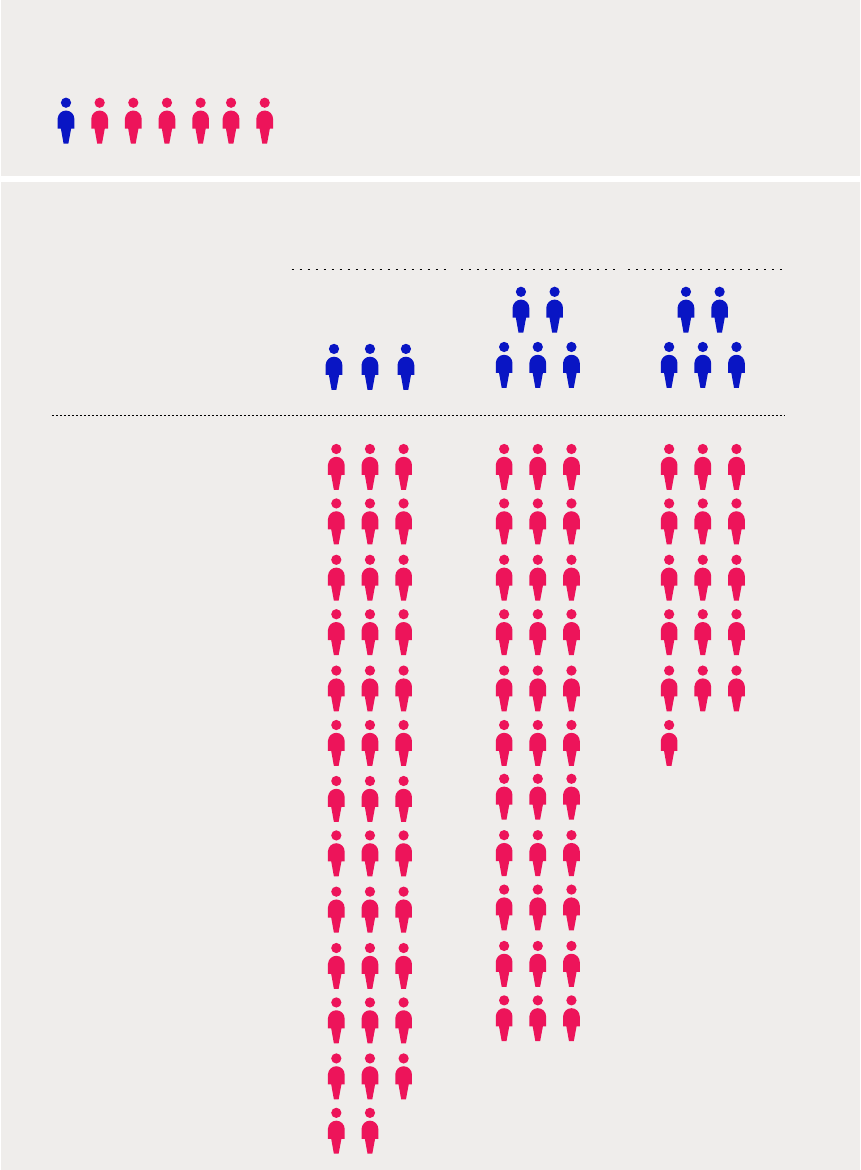
Figure 1 Perceptions of human insecurity are widespread worldwide
Source:
People feeling secure
People feeling moderately or
very insecure
Low and medium
HDI countries
High
HDI countries
Very high
HDI countries
Out of 100 people
More than 6 in 7 people worldwide perceived feeling moderately or very insecure
just before the outbreak of the Covid-19 pandemic.
4 NEW THREATS TO HUMAN SECURITY IN THE ANTHROPOCENE / 2022
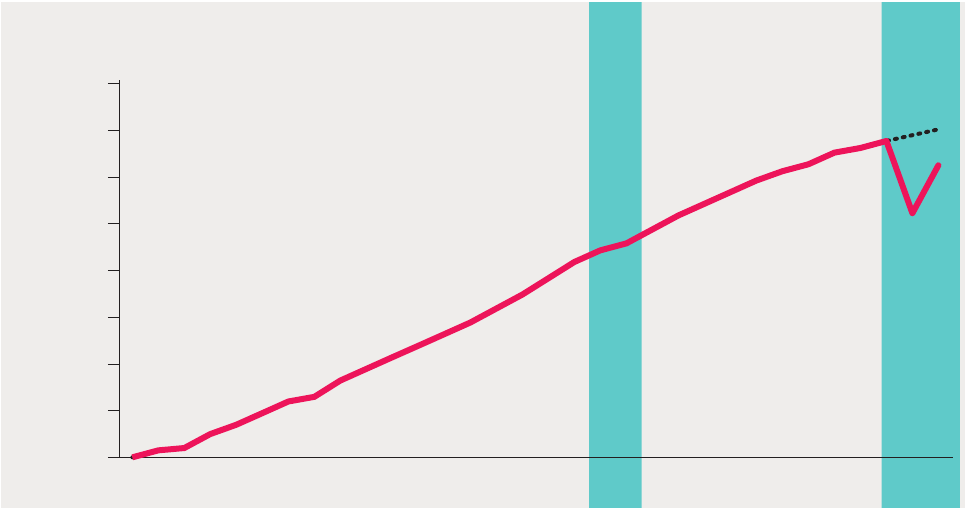
The Covid-19 pandemic makes these interconnec-
tions more apparent and unmasks new accumulat-
ing threats to human security. The uneven pain and
devastation have been widely documented. Women
face the brunt of adaptations to remote work and the
dramatic increase in violence against them. Informal
workers are left outside social protection systems.
People living in urban poverty are hit particularly
hard by the health and economic consequences of the
pandemic. Yet Covid-19 is only one manifestation of
the new Anthropocene context. The Report includes
novel work and estimates of the scale of the threats in
the Anthropocene context.
• Hunger is on the rise, reaching around 800 million
people in 2020, and about 2.4 billion people now
suer food insecurity, the result of cumulative so-
cioeconomic and environmental eects that had
been building before 2019 but were boosted by the
pandemic in 2020 and 2021.
• Climate change will continue to aect people’s vital
core. Even in a scenario with moderate mitigation,
around 40 million people worldwide could die,
mostly in developing countries, as a result of higher
temperatures from now to the end of the century.
• The number of forcibly displaced people has dou-
bled in the past decade, reaching a record high of
82.4 million in 2020.
And forced displacement may
be further accelerated as long as climate change
remains unmitigated.
• Digital technologies can help meet many of the
Anthropocene challenges, but the rapid pace of
digital expansion comes with new threats that
may exacerbate ongoing problems related to, for
example, inequalities and violent conict. Not only
did the ongoing pandemic accelerate a digital shift
in the productive economy, but cybercrime also
skyrocketed, with annual costs projected to reach
$6 trillion by the end of 2021.
• The number of people aected by conict is reach-
ing record highs: today approximately 1.2 billion
people live in conict-aected areas, 560 million of
them outside fragile settings, reecting the spread
of dierent forms violent conict.
• Inequalities are an assault to human dignity.
Lesbian, gay, bisexual, transgender and intersex
people and members of other sexual minorities
face particular risks of harm to their person in soci-
eties where diversity is not tolerated.
In 87 percent
of 193 countries,
they lack the right of recognition
of their identity and full citizenship.
• Violence against women and girls is one of the cru-
ellest forms of women’s disempowerment.
Subtle
Figure 2 The Covid-19 pandemic has caused an unprecedented decline in Human Development Index values
Source:
0.600
0.620
0.640
0.660
0.680
0.700
0.720
0.740
0.760
The global
financial crisis
Covid-19-adjusted
Human Development Index value
1991
1992
1993
1994
1995
1996
1997
1998
1999
2000
2001
2002
2003
2004
2005
2006
2007
2008
2009
2010
2011
2012
2013
2014
2015
2016
2017
2018
2019
2020
2021
1990
Covid-19
OVERVIEW 5
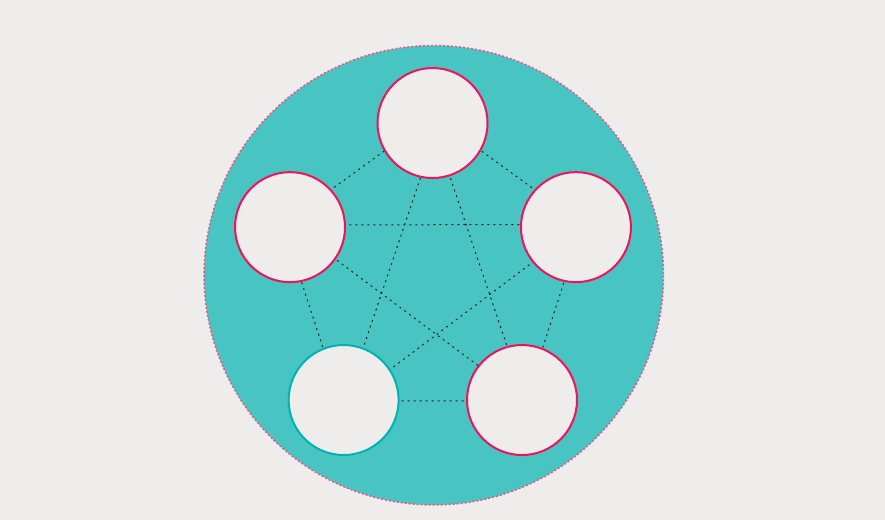
forms of violence and so called microaggressions
build up to such severe forms of violence as rape
and femicide.
In 2020, 47,000 women and girls
were intentionally killed by their intimate partner
or their family. On average, a woman or girl is killed
every 11 minutes by an intimate partner or family
member.
• The gap is large and growing between very high
and low HDI countries in the universalism of
healthcare systems. Countries with weaker, less
universal healthcare systems also face the great-
est challenges in health: the increasing burden
of noncommunicable diseases and the eects of
pandemics.
The Report argues for expanding the human secu-
rity frame in the face of the new generation of inter-
connected threats playing out in the context of the
Anthropocene. It proposes adding solidarity to the
human security strategies of protection and empow-
erment proposed by the 2003 Ogata-Sen report.
Solidarity recognizes that human security in the
Anthropocene must go beyond securing individu-
als and their communities for institutions and poli-
cies to systematically consider the interdependence
across all people and between people and the planet.
For each of us to live free from want, from fear and
anxiety and from indignity, all three strategies must
be deployed — for it is protection, empowerment and
solidarity working together that advances human
security in the Anthropocene. Agency (the ability to
hold values and make commitments, regardless of
whether they advance one’s wellbeing, and to act ac-
cordingly in making one’s own choices or in partici-
pating in collective decisionmaking) lies at the core
of this framework (gure 4). Emphasizing agency is a
reminder that wellbeing achievements alone are not
all we should consider when evaluating policies or as-
sessing progress. Agency will also help avoid the pit-
falls of partial solutions, such as delivering protection
with no attention to disempowerment or committing
to solidarity while leaving some lacking protection.
This proposal for enriching the human securi-
ty frame is made in a very particular context, where
perceptions of human insecurity are associated with
low impersonal trust, independent of one’s nancial
situation.
People facing higher perceived human
insecurity are three times less likely to nd others
trustworthy,
a trend particularly strong in very high
HDI countries. Trust is multifaceted and essential for
everyday life, but given this association, trust — across
Figure 3 The new generation of human security threats
Source: Human Development Report Office.
Digital
technology
threats
Health
threats
Inequalities
Violent
conflict
Other
threats
A
n
t
h
r
o
p
o
c
e
n
e
c
o
n
t
e
x
t
6 NEW THREATS TO HUMAN SECURITY IN THE ANTHROPOCENE / 2022
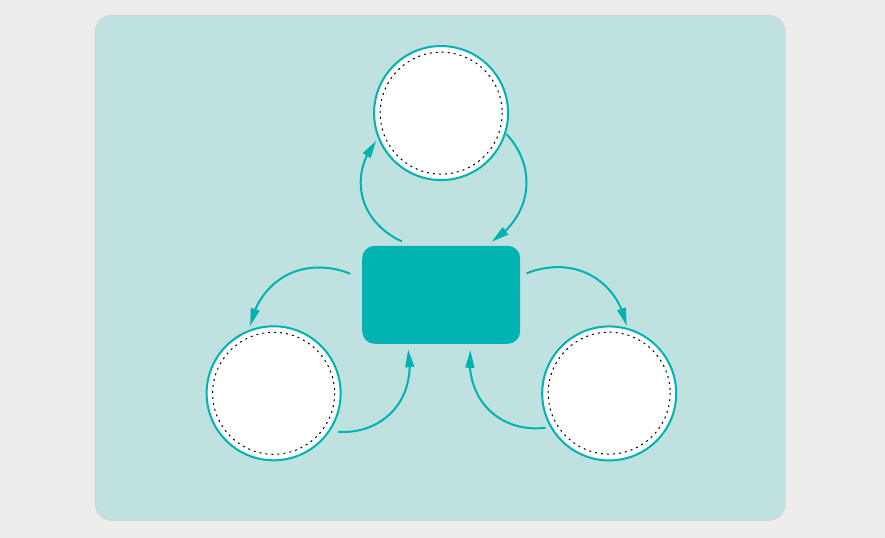
people, between people and institutions, across
countries — may enable or hamper the implementa-
tion of protection, empowerment and solidarity strat-
egies to enhance human security.
The Anthropocene context, with interlinked
human security threats, calls for a bold agenda to
match the magnitude of the challenges, put forward
with humility in the face of the unknown. The alter-
native is accepting fragmented security approaches,
with responses likely de-equalizing, likely reactive,
likely late and likely ineective in the long term. Per-
manent and universal attention to an enriched frame
of human security can end the pathways of human
development with human insecurity that created the
conditions for the Covid-19 pandemic, the chang-
ing climate and the broader predicaments of the
Anthropocene.
The 2030 Agenda for Sustainable Development
and the Sustainable Development Goals provide an
ambitious set of multidimensional objectives that
inform action at all levels (from the local to the na-
tional) and mobilize the international communi-
ty. But eorts remain largely compartmentalized,
dealing separately with climate change, biodiversity
loss, conicts, migration, refugees, pandemics and
data protection. Those eorts should be strength-
ened, but tackling them in silos appears insucient
in the Anthropocene context. It is imperative to go
beyond fragmented eorts, to rearm the principles
of the founding documents of the United Nations,
the Universal Declaration of Human Rights and the
UN Charter, which are also the central ideas un-
derpinning the concept of human security. Echoing
the UN Secretary-General’s Our Common Agenda,
doing so in the Anthropocene implies a systematic,
permanent and universal attention to solidarity —
not as optional charity or something that subsumes
the individual to the interests of a collective, but as
a call to pursue human security through “the eyes of
humankind.”
Figure 4 Enriching human security for the Anthropocene
Source: Human Development Report Office.
Protection
Empowerment
Solidarity
Agency
Enables
Promotes Promotes
Enables
Trust
Enables Promotes
OVERVIEW 7


Expanding
human security
through greater
solidarity in the
Anthropocene
PART
I


Human security:
Apermanent and
universal imperative
CHAPTER
1

12 NEW THREATS TO HUMAN SECURITY IN THE ANTHROPOCENE / 2022
CHAPTER 1
Human security: A permanent and universal
imperative
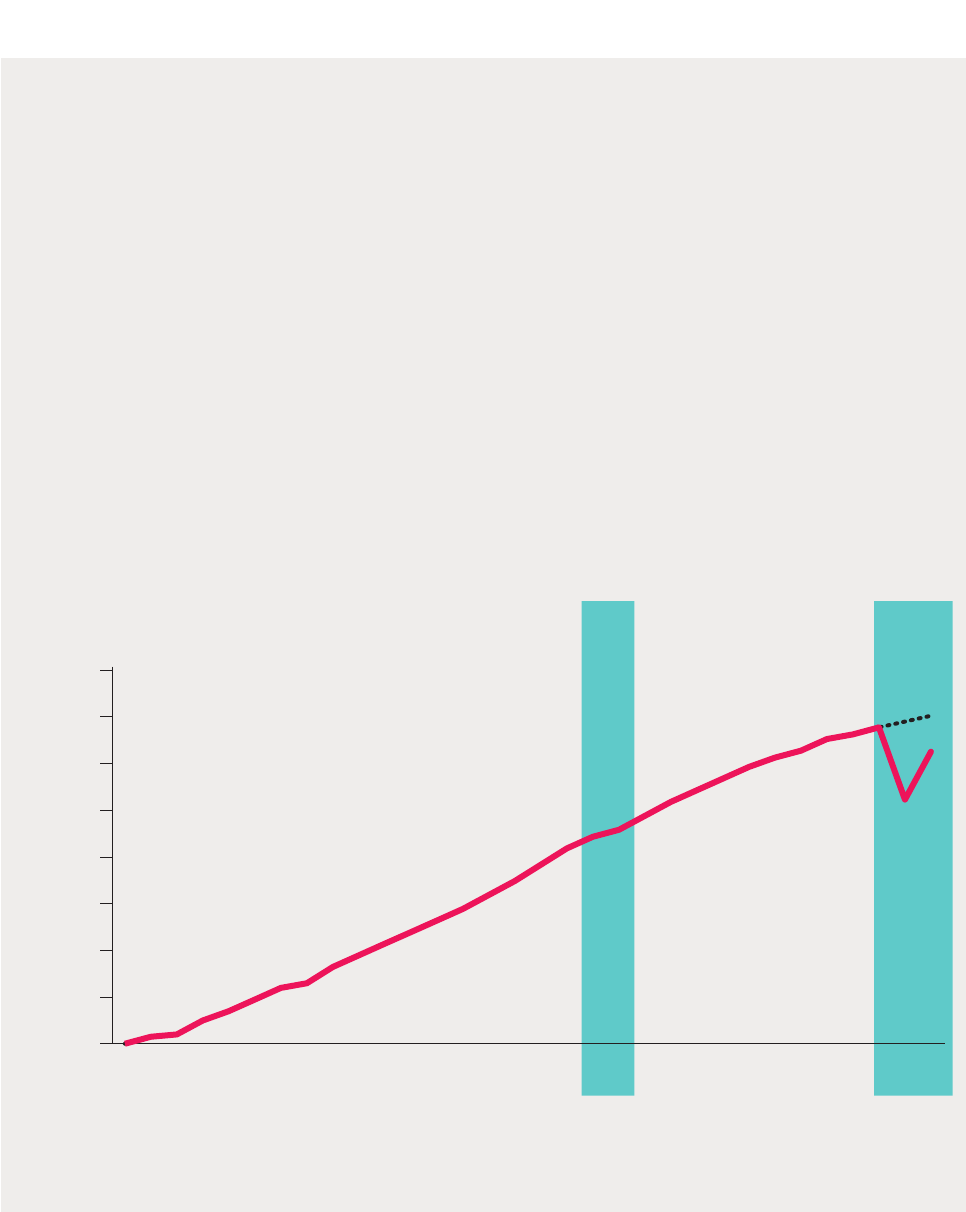
Just before the Covid-19 pandemic hit, as the world
reached unprecedented development levels, six of
every seven people around the world felt insecure.
Indeed, as many development indicators were mov-
ing up, people’s sense of security was coming down.
The pandemic put a stop to progress in human devel-
opment, deepening the continuing onslaught on peo-
ple’s perceptions of security (box 1.1).
It is not hard to understand how Covid-19 has led
people to feel more insecure.
But what accounts for
Box 1.1 The Covid-19 pandemic as a deep human security crisis continues into 2022
The Covid-19 pandemic has affected nearly everyone
and turned into a full-fledged human security and
human development crisis. The most tragic impact
has been a worldwide death toll of more than 10 mil-
lion (the excess mortality in 2020–2021).
1
But impacts
go well beyond this distressing record. Most countries
have suffered acute recessions. School closures and
restrictions on people’s movement have disrupted
the education of millions of children worldwide, with
the resulting costs to learning still to be assessed.
Many countries turned to remote learning, but an
estimated two-thirds of the world’s school-age chil-
dren lack internet access in their homes.
2
There have
been serious setbacks in women’s empowerment
and gender equality and increasing violence against
women.
3
Women have also been disproportionately
affected by job losses.
4
It is possible to track part of the pandemic’s effects
on human development through the Covid-19-adjusted
Human Development Index. The index retains the
standard Human Development Index (HDI) dimen-
sions but modifies the expected years of schooling
indicator to reflect the effects of school closures and
the availability of online learning on effective at-
tendance rates. In 2020 there was a sharp reduction
across all the three dimensions of the HDI: health,
knowledge and living standards.
The crisis continued in 2021, with human develop-
ment levels (as measured by the Covid-19-adjusted
HDI) remaining well below pre-Covid-19 levels. Even
with the availability of — very unequally distributed
— Covid-19 vaccines, the economic recovery that
started in many countries and the partial adaptation
of education systems, the crisis deepened in health,
with a continued decline in life expectancy at birth. In
2021 the global Covid-19-adjusted HDI value had yet
to recover the equivalent of approximately 5 years of
progress, according to new simulations (see figure).
The Covid-19 pandemic has caused an unprecedented decline in Human Development Index values
Source:
Institute for Health Metrics and Evaluation, the International Monetary Fund, International Telecommunication Union, the Human Mortality Data-
base, the United Nations Department of Economic and Social Affairs and the United Nations Educational, Scientific and Cultural Organization.
Notes
1.IHME 2021. 2.UNICEF and ITU 2020. 2.UN Women 2021b; Vaeza 2020. 3.ILO 2021a.
0.600
0.620
0.640
0.660
0.680
0.700
0.720
0.740
0.760
The global
financial crisis
Covid-19-adjusted Human
Development Index value
1991
1992
1993
1994
1995
1996
1997
1998
1999
2000
2001
2002
2003
2004
2005
2006
2007
2008
2009
2010
2011
2012
2013
2014
2015
2016
2017
2018
2019
2020
2021
1990
Covid-19
13
the startling bifurcation between the improvements
in people’s wellbeing and the declines in their per-
ception of security that was unfolding before the pan-
demic? That is the question that animates this Report.
To address it, the Report takes the premise that
the concept of human security provides a unique per-
spective that is both insightful and fruitful in suggest-
ing how to advance human development with less
insecurity. And in so doing, building on decades of
analytical and policy work, the Report also aims to
enrich the frame of human security.
“
The Report takes the premise that the
concept of human security provides a
unique perspective that is both insightful
and fruitful in suggesting how to advance
human development with less insecurity
There may be many reasons for people to feel inse-
cure, and they will vary according to social and indi-
vidual contexts. They are manifestations of objective
threats. Some social imbalances
have been build-
ing for decades, as the 2019 Human Development
Report highlighted.
But awareness is now growing
about dangerous planetary changes that compound
other well-identied drivers of human insecurity. For
example, social tensions and their implications for
conict interact both with climate hazards (droughts,
wildres, storms) and with what the energy transition
means for jobs and opportunities. Or indeed, how a
global pandemic that followed more frequent out-
breaks of new or emerging zoonotic diseases is linked
to pressures on biodiversity.
As pandemic response
veteran Richard Hatchett notes, “Except we’re now
in a dierent world. This is denitely not a once-in-
a-century problem. Covid-19 is the seventh global
infectious-disease crisis of the 21st century: SARS,
avian inuenza, swine u, MERS, Ebola and Zika
preceded it. It looks like roughly every three years
you’re going to have a global infectious-disease crisis,
and that tempo is probably increasing.”
As the 2020 Human Development Report ex-
plored,
dangerous planetary changes result from
human pressures on planetary processes — from the
climate system to material cycles disrupted by the use
and introduction of materials at an unprecedented
scale and speed and to the threats to the integrity of
ecosystems from tropical forests to coral reefs and to
entire oceans. Those changes are so unprecedented
in human history and in the 4.6 billion year geological
timeline of the planet that they have been described
as a new geological epoch or event: the Anthropo-
cene, the age of humans. There are glaring inequali-
ties in contributions to planetary pressures — now and
historically — and in power between those overextract-
ing and those bearing the consequences. This hap-
pens across countries but, crucially, within countries
as well, with some groups systemically more aect-
ed than others. Human rights violations overlap with
the destruction of ecosystems, as with the forced and
slave labour in the very shing eets that are destroy-
ing ocean ecosystems. Biodiversity losses often par-
allel not only the destruction of livelihoods but also
cultural losses, such as the disappearance of languag-
es, aecting many indigenous peoples and local com-
munities. Collective decisions, national and global,
that could ease planetary pressures are more dicult
to reach and implement, thus slowing, or even pre-
venting, action to ease planetary pressures.
With this the dichotomy of “human development
with human insecurity” may appear far less puzzling
— because the patterns of development that we have
been pursuing inict many of the drivers of insecu-
rity we are confronting. This chapter explores how
the human security concept is a useful lens through
which to understand this new context, elaborated
further in chapter 2, and how the human security
frame can be enriched to provide new perspectives
on specic threats to human security that play out in
this new context and are interconnected, global and
mostly human-made — threats explored in part II of
the Report.
This chapter has two main ndings. First, the
human security frame points to the limitations of
evaluating policies and measuring progress by look-
ing at wellbeing achievements alone. The chapter
identies the neglect of agency as a major blind spot
and suggests making agency a central focus of atten-
tion for decisionmakers. Second, the human securi-
ty frame itself can be enriched by addressing a blind
spot of its own: the neglect of the new Anthropocene
reality and what that implies. The chapter rearms
the relevance of the individually centred approaches
of protection and empowerment to advance human
security. It suggests adding an approach based on
solidarity — beyond borders and across peoples,
14 NEW THREATS TO HUMAN SECURITY IN THE ANTHROPOCENE / 2022

cognizant of our interdependencies in a globalized
world and our common fate on a planet undergoing
dangerous changes as a result of our actions.
Becoming richer amid a vast
sea of human insecurity
An age of widespread — and growing —
perceptions of human insecurity
Human security is about living free from want, free
from fear and free from indignity. It is about protect-
ing what we humans care most about in our lives. In
2012 the UN General Assembly reected a consensus
that human security would be considered, “The right
of people to live in freedom and dignity, free from
poverty and despair. All individuals, in particular
vulnerable people, are entitled to freedom from fear
and freedom from want, with an equal opportunity
to enjoy all their rights and fully develop their human
potential.”
Annex 1.1 provides a brief account about
the origins and progression of the human security
concept, which continues to evolve.
“
Human security is about living free
from want, free from fear and free from
indignity. It is about protecting what we
humans care most about in our lives
When the human security concept was introduced
in the 1994 Human Development Report,
it was
rapidly recognized as a radical departure from the
predominant view of security at the time, because it
shifted the focus towards the real subjects — people —
and away from territorial security. That seminal work
also emphasized three additional characteristics of
human security — universal, multidimensional and
systemic — which have heightened relevance today
as issues aecting people’s security become part of a
new set of interlinked threats on a planet undergoing
dangerous changes because of human pressures.
Using a human security lens implies considering
people’s views.
What constitutes fear, want and dig-
nity depends largely on people’s beliefs, which are
formulated based on a combination of very specic
and objective factors, along with elements that may
be more subjective. But this is not a problem because
attention to subjectivities — considering how people
themselves view and understand their situation, vul-
nerabilities and limits — is core to the analytical fram-
ing of human security.
As argued in more detail later
in the chapter, beliefs are important elements inu-
encing people’s choices, values and commitments.
In fact, Kaushik Basu, in exploring the relationship
between law and economics, has argued for the cen-
tral role of beliefs in shaping even attitudes towards
the law:
“The might of the law, even though it may be
backed by handcus, jails, and guns, is, in its ele-
mental form, rooted in beliefs carried in the heads
of people in society — from ordinary civilians to the
police, politicians and judges, intertwining with
and weaving into one another, reinforcing some
and whittling down others, creating enormous ed-
ices of force and power, at times so strong that
they seem to transcend all individuals, and create
the illusion of some mysterious diktat enforced
from above. In truth, the most important ingredi-
ents of a republic, including its power and might,
reside in nothing more than the beliefs and expec-
tations of ordinary people going about their daily
lives and quotidian chores.”
So, it is useful to explore how living free from
want, living free from fear and living free from indig-
nity relate to beliefs and interact with one another,
starting by considering dignity, which is most direct-
ly a belief.
• Dignity. Dignity is grounded on the universal belief
that everyone has equal inherent worth and value,
enshrined in Article 1 of the Universal Declaration
of Human Rights: “All human beings are born free
and equal in dignity and rights.”
Its importance
was reiterated as a central aspiration of the 2030
Agenda for Sustainable Development: “to ensure
that all human beings can full their potential in
dignity.”
Threats to one’s dignity emanate not only
from objective deprivations (such as not having
basic needs met, linking to the aspiration of being
free from want) but also from stigma. Sometimes,
the very interventions that seek to address material
deprivations may hurt people’s dignity by stigma-
tizing them and inducing emotions of shame,
especially when poverty is attributed to negative
individual dispositions.
Dignity goes beyond
15

avoiding being physically harmed or shamed to
having autonomy
and agency — a central idea
that is the core of arguments developed later in the
chapter. Implications of this understanding of dig-
nity include that interventions aimed at addressing
freedom from want with dignity imply the need to
both mitigate stigma and promote empowerment
and that interventions need to be culturally sensi-
tive and responsive.
• Fear. Beliefs are also important in triggering emo-
tions (even if not the only determinant; percep-
tual elements also matter). The emotion of fear
involves beliefs about bad things that may happen
in the future (if something bad is certain to happen,
it is likely to trigger an emotion of despair),
often
associated with perceiving “low certainty and low
sense of control.”
Thus, the emotion of fear, a
powerful driver of behaviour,
is inuenced by a
host of factors, from individual cognitive processes
to external and contextual conditions. People form
beliefs about the possibility that painful and harm-
ful events may unfold in the future, often based on
objective elements that can give them reason to be
fearful.
This includes the possibility of suering
“assaults on their sense of dignity,”
once again
showing the interlinkages across the three aspira-
tions that dene human security.
• Want. Beliefs also come into play when assessing
want, which is determined not only by meeting
basic metabolic needs but also by individual aspi-
rations and relative assessments of what people in
a community are expected to achieve. As Amartya
Sen has often reminded us, Adam Smith’s deni-
tion of not being in poverty was to be able to wear
a linen shirt — not because linen protects someone
from the elements but because it is required to
interact socially in the community, without shame.
Thus, there are interlinkages between freedom
from want and living in dignity. This echoes anthro-
pological perspectives on want. As Mary Douglas
put it, “At the local level, wants are part of a feed-
back cycle between the relations of production and
consumption. Wants and needs are not ordered
according to private preferences. Other people
collectively try to solve problems of coordination,
the solutions impose ordering on ego’s preferences.
The cultural process denes wants, and poverty is
culturally constructed.”
“
In addition to being high, the perception
of human insecurity has increased over time
for most countries with comparable data
The formulation of beliefs is thus clearly the result
of a complex constellation of factors. It is not easy,
and it may be impossible, to measure beliefs with
the precision that we can assign to objective indica-
tors such as income or education achievements. But
that does not imply that there are not objective vul-
nerabilities that stimulate particular beliefs and that
this is often the result of well-reasoned processes. As
argued later in the chapter, and more extensively in
chapter 2, there are strong reasons to associate the
new context of the Anthropocene, and the inequali-
ties that characterize it, as the background against
which a new generation of threats to human security
is playing out.
The Index of Perceived Human Insecurity
To get a sense of how people understand and per-
ceive their security beyond what can be grasped from
objective indicators of achievements in wellbeing,
this Report introduces the Index of Perceived Human
Insecurity (I-PHI; see annex 1.2 for details).
It is
based on population- representative data from the
World Values Survey for 74 countries and territories
covering more than 80 percent of the world’s people.
It captures perceived threats across dierent dimen-
sions of daily life in citizen security, socioeconomic
security and violent conict.
The results are striking.
Most people in the world feel insecure: fewer than 1
in 7 people at the global level feel secure or relatively
secure.
More than half of the global population feels
aected by very high human insecurity, as specied
on the I-PHI.
Perceived human insecurity is high across all
Human Development Index (HDI) groups, with more
than three-quarters of the population feeling inse-
cure, even in very high HDI countries (gure 1.1). But
lower HDI countries register even higher perceived
human security, suggesting a negative association be-
tween HDI value and I-PHI value (gure 1.2).
In addition to being high, the perception of human
insecurity has increased over time for most countries
with comparable data. This increase registered across
16 NEW THREATS TO HUMAN SECURITY IN THE ANTHROPOCENE / 2022
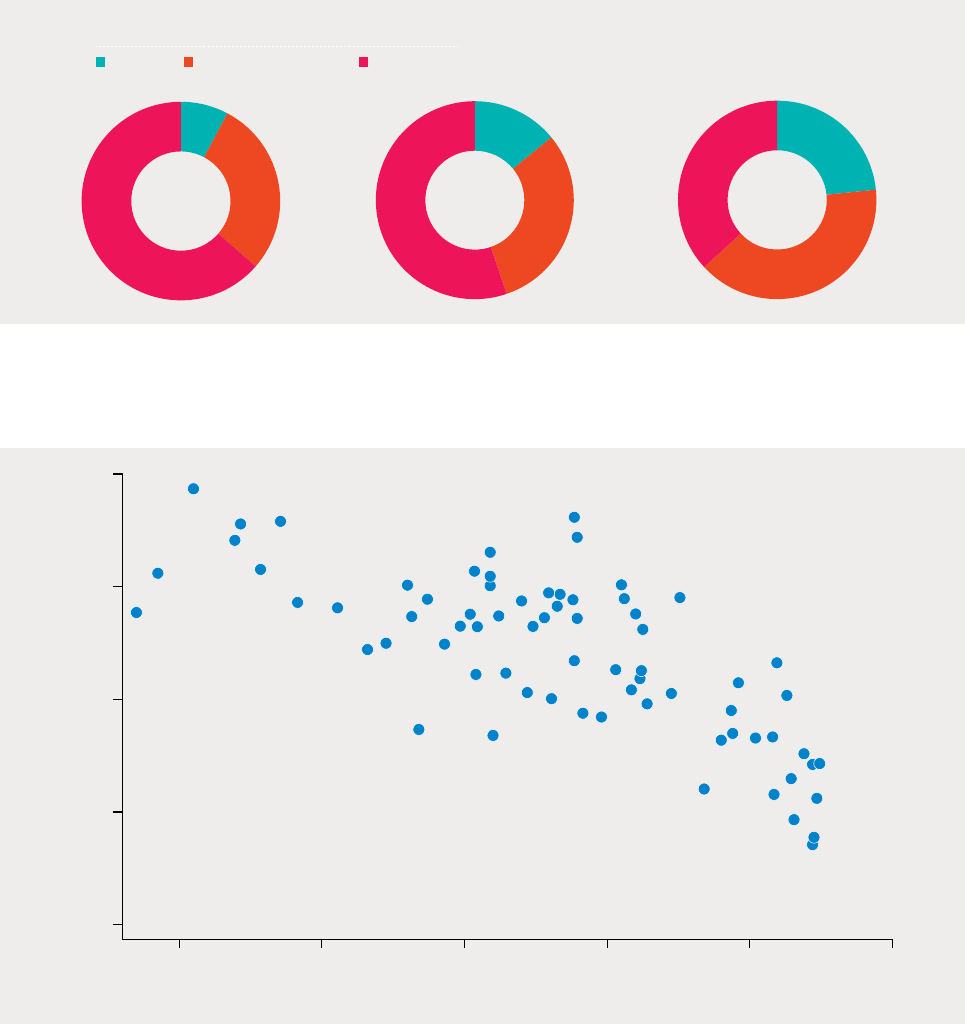
all HDI groups, but some of the largest increases were
in very high HDI countries (gure 1.3).
This suggests that the positive association be-
tween HDI value and I-PHI value gleaned from the
cross-sectional analysis may not reveal much about
the extent to which achievements in wellbeing can
insulate people from feeling insecure. In fact, when
individuals, rather than countries, are grouped by
I-PHI value, the higher the perception of human se-
curity, the higher the level of trust in others tends to
be, a result that holds for dierent levels of satisfac-
tion with the nancial situation (gure 1.4). But the
opposite is not the case: for people who feel very in-
secure, greater nancial satisfaction is not associated
Figure 1.1 Even in very high Human Development Index countries, less than a quarter of people feel secure
Source: Human Development Report Office, based on World Values Survey, latest available wave.
8%
29%
64%
Low and
medium Human
Development
Index
Secure Moderately insecure Very insecure
14%
31%
55%
23%
40%
37%
High
Human
Development
Index
Very high
Human
Development
Index
Perceived insecurity:
Figure 1.2 Human insecurity tends to be higher in countries with lower Human Development Index values
Source:
0
Index of Perceived Human Insecurity value, most recent year
0.8
0.500 0.600 0.900 1.0000.700 0.800
Human Development Index value, 2019
0.6
0.4
0.2
17

Figure 1.3 Human insecurity is increasing in most countries— and surging in some very high Human
Development Index countries
Note: Bubble size represents the country population.
a. Refers to the change between waves 6 and 7 of the World Values Survey for countries with comparable data.
Source:
Change in Index of Perceived
Human Insecurity value
a
0.500 0.600 0.900 1.0000.700 0.800
Human Development Index (HDI) value, 2019
Increase in
perceived
insecurity
Reduction in
perceived
insecurity
Very high
HDI countries
0.15
0.10
0.05
0
–0.05
–0.10
Figure 1.4 Where human security is higher, trust tends to be higher, regardless of satisfaction with one’s
financial situation
Note: Pooled individual-based data with equal weights across countries.
Source:
0.13
0.19
0.26
0.15
0.24
0.35
0.16
0.25
0.44
0
0.1 0.2 0.3 0.4 0 0.1 0.2 0.3 0.4 0 0.1 0.2 0.3 0.4
Dissatisfied
Moderately
dissatisfied Satisfied
Relatively secure
Perception of insecurity
Moderately insecure
Very insecure
Satisfaction with financial situation
Level of trust
Level of trust Level of trust
18 NEW THREATS TO HUMAN SECURITY IN THE ANTHROPOCENE / 2022

with a signicant jump in trust. This strong link be-
tween human security and trust also holds when in-
come and life satisfaction are controlled for.
Given
the importance of this nding for the conclusions
later in the chapter, it is crucial to be clear about the
meaning that emanates from answers to the World
Values Survey’s trust question, how it can be inter-
preted and the cautions that must be borne in mind.
What is trust?
Trust is yet another belief.
But what is trust, exact-
ly? It has been dened in multiple ways in dierent
contexts (box 1.2). In the context of the World Val-
ues Survey, it is measured by answering the ques-
tion, “Generally speaking, would you say that most
people can be trusted or that you can’t be too careful
Box 1.2 Trust’s many faces
Trust is a complex concept. As sociologist Blaine
Robbins wrote, “Despite decades of interdisciplinary
research on trust, the literature remains fragmented
and balkanized with little consensus regarding
its origins.”
1
Even with this lack of consensus in
the definition and origins, there is widespread
belief that trust has been an important element in
the development and sophistication of societies
throughout history — mainly because it has been
essential for cooperation and collective action.
One of the purported paradoxes around trust
relates to there being higher trust than a rational
agent model where people pursue their self-interest
would suggest. Most economic theory assumes
that trust arises when people are optimistic about
the trustworthiness of others, but evidence shows
that people trust at higher rates than predicted
by reasons to be trustworthy (including past
behaviour). This excess trust seems to be driven by
norms — either social or moral.
2
This result provides
reason for optimism: this excess trust could be a
lever for increased cooperation among strangers
and beyond the close ties usually associated with
reciprocal relationships.
The result has been reflected, for instance, in
the voluntary payment of taxes. In 1972 Michael
Allingham and Agnar Sandmo modelled tax evasion
under a standard rational utility maximization
framework where the agent conducts a cost-benefit
calculation between the cost of being caught
evading tax systems and the monetary benefit of
the evasion.
3
But empirical evidence has shown that
the model consistently underestimates the amount
of taxes people pay. This paradox has promoted the
literature on tax morale — or the reasons beyond
pure rational maximization of self-interest driving
people to comply with the tax authorities.
Trust has been important both in interpersonal
relations and in institution building. Institutional
evolution is closely linked to trust in at least two ways,
as Benjamin Ho explains. First is that institutions rely
on trust to function — modern money, for instance,
depends on the belief that it will be accepted as a
medium of exchange regularly and independent
of who carries it. The second is that institutions are
often designed to create and facilitate trust, in ever
expanding scales of complexity.
4
Not all trust is good, though, and institutional
development has been imperfect across time and
countries. Some institutions have been designed
to expand trust among groups sharing similar
traits — known as in-group trust. In-group trust can
thus promote polarization, be detrimental to equity
and democracy and be exploited by some political
leaders.
5
The challenge when promoting trust in the
context of human security strategies is to promote,
support and use existing generalized trust and
address the behavioural biases and institutional
designs that favour in-group trust. Cosmopolitan
views and moral universalism — altruism towards
strangers compared with altruism towards in-group
members — may be invoked when designing and
implementing strategies to advance human security,
as elaborated later in the chapter. Some evidence
shows that universalist views are associated
with demographic characteristics: age, place of
residence, religious beliefs and income level.
6
Yet a
recent study by the United Nations Children’s Fund
and Gallup shows that young people are almost
twice as likely as older people to declare their
identification with the world as opposed to local or
national community.
7
Notes
1.2.Dunning and others
2014. 3.Allingam and Sandmo 1972. 4.Ho 2021. 5.Gjoneska and
others 2019. 6. Enke, Rodriguez-Padilla and Zimmermann 2021.
7.UNICEF and Gallup 2021.
19

in dealing with people?” The answer appears to con-
form to actual behaviour when people interact with
others.
It captures what has been characterized as
generalized trust (the trust placed in others in general
and not for a particular reason or interest
) or imper-
sonal trust (establishing a default way of interacting
with strangers
).
Understood in this way, it is clear that social life,
in any context, would be very dicult, if not impos-
sible, without impersonal trust.
Trust matters be-
cause it enables cooperation, which “is conditional
on the belief that the other party is not a sucker (is not
disposed to grant trust blindly), but also on the belief
that the other will be well disposed towards us if we
make the right move.”
Therefore, trust is not some-
thing that should always be maximized: even for in-
dividual welfare too much or too little trust is shown
to be harmful.
And we may want less trust among
groups that are threatening us (when engaged in illicit
activities, for instance), so it is not possible to say that
more trust is always desirable.
Given the importance of trust for cooperation, dif-
ferences in impersonal trust across countries are as-
sociated with several economic and social outcomes.
Higher average impersonal trust for countries is posi-
tively correlated with income, economic productivity
and government eectiveness and negatively correlat-
ed with corruption. Evidence suggests that impersonal
trust is part of a cultural and psychological package of
pro-social norms, expectations and motivations that
are historical antecedents of these outcomes.
This cross-country analysis needs to be interpret-
ed carefully, for trust increases when individuals are
socially closer.
And the answer to the World Values
Survey question in some contexts — particularly in
East Asia — is interpreted as trusting others premised
on the existence of dense social networks that create
social and economic interdependence, as opposed
to trusting “strangers” unconditionally. More impor-
tant, there are very large dierences in trust within
countries, even larger than across countries.
Factors
associated with individual preference “types” (being
more or less altruistic, for instance) appear to account
for a large amount of variation in trust across people,
more than can be explained by the country where
people live.
In this context it is crucial to emphasize
again that the ndings of an association between high
human insecurity and low interpersonal trust are at
the level of individuals — not based on a cross-country
analysis.
The individual-level association between human
insecurity and impersonal trust matters for four main
reasons.
• First, evidence suggests that there are low and
declining levels of trust related to important in-
stitutions and policy outcomes, especially those
predicated on cooperation.
• Second, while motives, interests and incentives
are crucial for cooperation, even if people (or
countries) have the appropriate motives and inter-
ests, they still need to “know about each other’s
motives and trust each other”
— this takes us back
to Kaushik Basu’s emphasis on the importance of
beliefs noted earlier in the chapter — even if laws
are codied and enforced.
“
A human- development- with- human- insecurity
duality emerges from how the advancement of
human development has been pursued and from
fragmented security approaches that focus on
wellbeing achievements while neglecting agency
• Third, as this chapter develops later, agency is
central to implementing strategies to advance
human security. It is predicated on people having
freedoms, which include the possibility of disap-
pointing and frustrating others. That is why trust is
closely associated with freedom, having even been
described as a “device for coping with the freedom
of others,”
something that acquires heightened
relevance in contexts of uncertainty.
• Fourth, the importance of trust is likely to increase
in coming years, given that “in the twenty-rst
century, remote collaboration with both unknown
and known counterparts is increasing (in part due
to the recent pandemic), and much economic life is
now happening outside the boundaries of organiza-
tions, regions, and nations, making trust a ubiqui-
tous concern.”
Reasons to feel insecure: The Anthropocene context
and a new generation of threats to human security
This section argues that a human- development- with-
human- insecurity duality emerges from how the
20 NEW THREATS TO HUMAN SECURITY IN THE ANTHROPOCENE / 2022
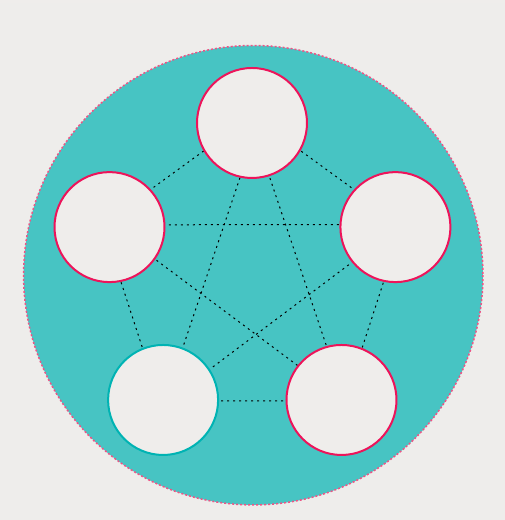
advancement of human development has been pur-
sued and from fragmented security approaches that
focus on wellbeing achievements while neglecting
agency. Along with a persistent upward trend in well-
being achievements across regions, a new generation
of human insecurities has been emerging, to a signi-
cant degree as a byproduct of how development was
being pursued. This is evident from the emergence
of the Anthropocene context, in which new threats
to human security emerge, all linked to human ac-
tion and, for the most part, to activities that have until
now fuelled improvements in wellbeing.
The unprecedented context of the Anthropocene
is the backdrop for a new generation of threats that
are global, systemic and interlinked. This new reali-
ty gives strong objective reasons for people not only
to perceive high human insecurity but also to believe
that wellbeing achievements — previously conceived
of as development achievements — are insucient to
address human security concerns. This section high-
lights threats related to digital technologies (though
much good can also come out of their diusion), vi-
olent conict, inequalities across groups (to focus
on the notion of social imbalance) and inadequacies
in current healthcare systems. All these exhibit new
characteristics compared with what was covered in
previous seminal reports on human security, nota-
bly the 1994 Human Development Report and the
2003 Ogata-Sen report,
but are not meant to be an
exhaustive list. Rather than organize the discussion
around groups of people, the focus is on these four
threats, as elaborated in part II of the Report, be-
cause this approach allows for a more exible under-
standing of the structural challenges and the possible
structural responses (gure 1.5).
“
Ensuring that people live free from want,
fear and indignity requires a comprehensive,
systemic approach. We have come to realize
that higher incomes, for instance, do not
automatically bring about peace and that a
society without violent conict is not a sucient
condition for people to live in dignity
These four threats, in their interconnectedness,
present a growing challenge for decisionmakers, for
the development journeys unfolding have often un-
derplayed not only agency but also the interactions
across threats. The attention of the public and pol-
icymakers has been on separate aspects when de-
signing or evaluating policy, leading to the pursuit of
solutions to problems in silos, failing to recognize the
possibility that each solution may have unintended
consequences and may exacerbate other problems.
To address this challenge, the relevance of the
human security concept becomes apparent in part
because one of the most important aspects empha-
sized since its inception is the recognition that the
three aspirations that dene it cannot be thought of
independently, as noted above.
Ensuring that peo-
ple live free from want, fear and indignity requires a
comprehensive, systemic approach. We have come to
realize that higher incomes, for instance, do not auto-
matically bring about peace and that a society with-
out violent conict is not a sucient condition for
people to live in dignity.
As Oscar Gomez and Des
Gasper write, “Even a human development perspec-
tive, focused on improvement for persons in all major
areas of life which they have good reason to value,
rather than centred on measured economic growth or
technological display, is insucient for dealing with
Figure 1.5 A new generation of threats to human security
is playing out in the unprecedented context of the
Anthropocene
Source: Human Development Report Office.
Digital
technology
threats
Health
threats
Inequalities
Violent
conflict
Other
threats
A
n
t
h
r
o
p
o
c
e
n
e
c
o
n
t
e
x
t
21
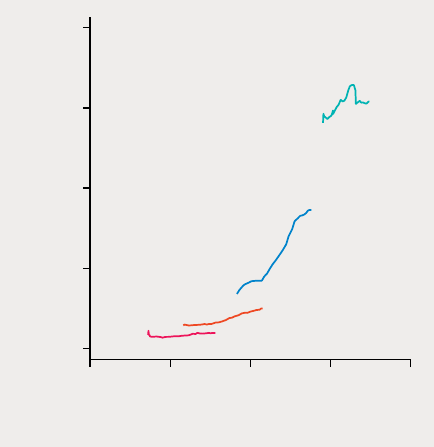
the real world of interconnecting threats and recur-
rent crises, if it retains the linear model.”
One could argue that everything has always been
connected to everything else, but the Anthropocene
context heightens the importance of recognizing
these interdependencies. Virtually all people’s eorts
to nd solutions to development problems result in
actions that are mounting planetary pressures in one
way or another.
The 2020 Human Development
Report argued that industrial societies today meet
their energy and material needs in ways that result in
planetary pressures that drive dangerous planetary
change.
To meet our energy needs, we continue to
rely primarily on fossil fuels, which results in green-
house gas emissions that are driving climate change.
And we use materials with little concern for the dis-
ruptions to material cycles: the use of nitrogen in fer-
tilizer is just one example. For an illustration of how
the solving-one-problem-at-a-time approach may be
problematic, consider how the increased use of re-
newable energy and batteries is leading to increased
extraction of minerals that we know are limited and
for which we have few substitutes at present, often in
contexts where there are massive threats to biodiver-
sity and violations of human rights.
As countries have increased their Human Devel-
opment Index value, planetary pressures have inten-
sied, on average, as measured by a new index of
planetary pressures (gure 1.6). This index combines
two indicators, carbon dioxide emissions (to account
for the pressures emanating from the reliance on fos-
sil fuels for energy) and material footprint (to indicate
the extent to which we do not consider the disrup-
tion to material cycles). No country has been able to
reach a very high HDI value without exerting high
planetary pressures. These pressures are now causing
new forms of risks linked to climate change (storms,
oods, heat waves), biodiversity loss (irreparable but
also with implications for the productivity and resil-
ience of ecosystems) and zoonotic diseases (of which
Covid-19 is the latest in a series of more frequent
events).
“
No country has been able to reach a very
high HDI value without exerting high planetary
pressures. These pressures are now causing new
forms of risks linked to climate change (storms,
oods, heat waves), biodiversity loss (irreparable
but also with implications for the productivity and
resilience of ecosystems) and zoonotic diseases
It is against this background that part II of the Re-
port explores the nature and implications of four
types of threats to human security.
• Digital technology threats. Advances in digital
technologies have been key to advances in many
dimensions of human development (from access
to health and education services to fostering
capabilities linked to access to information and
communication), but they carry signicant risks.
Some aspects of new information and digital
technologies are reshaping social and family inter-
actions, working conditions and leisure activities.
The concentration of power among some new
corporate players and the speed of the changes un-
folding create challenges for policymakers and so-
cieties. These dynamics aect those immersed in
the digital world as well as those outside (3 billion
people without access to internet).
Some of these
changes present negative side eects on many
fronts: abuse of power and political domination
can result from the concentration of the control of
information and data by technological providers
Figure 1.6 Higher Human Development Index
values have come with higher planetary pressures
Note: The index of planetary pressures is based on carbon dioxide
Source:
Low HDI
Medium HDI
High
HDI
Very high
HDI
Index of planetary pressures value
0.200 1.000
Human Development Index (HDI) value,
1990–2019
0.400 0.600 0.800
0.200
0.150
0.100
0.050
0.000
22 NEW THREATS TO HUMAN SECURITY IN THE ANTHROPOCENE / 2022
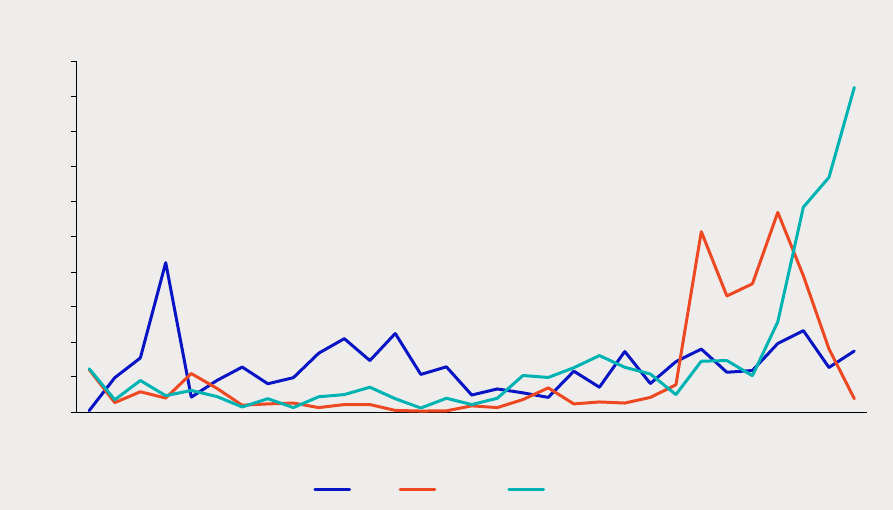
and governments, curtailing liberties, widening
inequalities and spreading misinformation that
fuels polarization.
• Violent conict. Higher income co-exists with
growing numbers of people aected by conict —
today, more than one in four people in the world is
aected by conict. In 2020 the number of forcibly
displaced people — many of whom are eeing from
violent conict — reached 82.4 million,
twice the
level in 2010.
Killings of environmental activists
(linked again to the intersection of violence and
the Anthropocene context) have risen consistently
over the last two decades.
Nonstate conict fatal-
ities have shot up in high HDI countries (gure 1.7).
• Inequalities across groups. This Report primarily
explores inequalities across groups as assaults on
dignity because there is no reason to treat people in
a discriminatory way simply because they choose
to self-identify as a member of or are otherwise
associated with a group (among possibly many
others). These inequalities remain pervasive today.
This is true across countries but also within coun-
tries. Inequalities in power relations also hurt the
dignity of people, sometimes independent of their
socioeconomic status, if they are insuciently
empowered. The #MeToo movement has shown
the pervasive gender inequalities across industries
and societies. Even a group of highly accomplished
women faced hidden forms of violence and, for
a long time, did not believe that conditions per-
mitted them to expose their aggressors. That this
happened in the high-prole entertainment in-
dustry, where women are visible and have millions
listening to what they say, highlights the day-to-
day abuse elsewhere when women are voiceless.
It is also a reminder that what we consider success
often hides areas of deep insecurity, and it pro-
vides a concrete example of the duality of human
insecurity with income achievements. This Report
shows how many other groups remain consistently
and historically marginalized, suering systematic
assaults on their dignity and therefore their human
security.
• Healthcare systems. The eects of Covid-19, de-
clared a pandemic in March 2020, have spread
to nearly everyone in the world, attacking all
Figure 1.7 Nonstate conflict fatalities have been increasing in high Human Development Index countries
Note: Excludes very high Human Development Index countries because of the lack of reported data over time. The very high HDI countries
Source: Human Development Report Office based on Uppsala Conflict Data Program Non-State Conflict Dataset version 21.1.
0
2,000
4,000
6,000
8,000
10,000
12,000
14,000
16,000
18,000
20,000
1990 1992 1994 1996 1998 2000 2002 2004 2006 2008 2010 2012 2014 2016 2018 2020
Low Medium
Human Development Index group
High
Nonstate conflict fatalities
23

dimensions of human development.
By the sec-
ond quarter of 2020, most economies were con-
tracting at record rates, and 90 percent of children
were unable to physically attend schools. This is
unprecedented because it was mediated by a high-
ly interconnected and globalized world with the
highest level of human development on record. It
exposed the limitations of health systems, nation-
ally and internationally, especially the widespread
lack of coordination at many scales, reected more
glaringly in large disparities in vaccine access
across countries and in vaccine use within some
countries.
The corollary is that improvements in wellbeing,
measured by, say, the HDI, do not guarantee human
security.
And this gap between human develop-
ment and human security could be exacerbated by
the reinforcing dynamics among the four threats.
For example, climate change adds pressure to the
forces displacing people and to the scarcity of some
resources. However, this does not imply that human
development should not be pursued or that human
development never promotes human security. To the
contrary, the two can be compatible and complemen-
tary. That is why, in advancing human development,
human security should be a consistent — indeed a
permanent — focus of attention.
“
Not every “security action” leads to greater
human security, particularly if it leads to
greater security for one group at the expense
of the security of other groups or if it promotes
some freedoms while restricting others
However, the human security concept’s ability to
account for the complexity of today’s world and gen-
erate agency cannot be taken for granted. Not every
“security action” leads to greater human security,
particularly if it leads to greater security for one group
at the expense of the security of other groups or if it
promotes some freedoms while restricting others.
Take the siloed or fragmented views of security.
Policies for food security can increase planetary pres-
sures through deforestation and single crop practic-
es, resulting in greater risks due to climate change
and biodiversity loss. Policies to enhance economic
security, such as expanding nancial markets to di-
versify risks and smooth consumption, can become
procyclical and increase systemic risks. National se-
curity policies can generate an arms race, diverting
resources from human needs. Another case is the
use of the security narrative to justify hegemony.
In
other words we cannot rule out that the true motive
behind a security policy (including one labelled as a
human security policy)
is to entrench power in po-
litical, economic and social institutions. States, com-
panies, political actors and patriarchal structures can
use “security concerns” to defend or promote priv-
ileges. In such cases short-term protection can be
achieved at the expense of long-term agency.
The rest of the chapter shows how the human se-
curity concept can illuminate how the gap emerges
between wellbeing achievements and perceptions of
human insecurity and how the human security frame
itself may need to be enriched to account for the new
planetary and social reality of the Anthropocene.
Towards human security through
the “eyes of humankind”
The heightened relevance of human
security: Bringing agency to the fore
The concept of human security is almost three dec-
ades old. It came about in a very specic context of
geopolitical change. After the fall of the Berlin Wall,
there was a renewed sense of possibility — with the
expectation of a new era of peace, including a repur-
posing of military spending for other goals, since the
cloud of military confrontation between two major
powers had cleared (see annex 1.1). So, what makes
it relevant today, in a very dierent world, with so
many of the hopeful expectations of the mid-1990s
shattered?
It is relevant because the expectation — or maybe
hope — that higher incomes would, by themselves,
bring about human security has been clearly dashed.
As documented in part II of the Report, military
spending shows no signs of abating — instead of a
peace dividend, we confront a world with violent con-
ict aicting more than a billion people. As argued
in the preceding sections, even before the Covid-19
pandemic perceptions of human insecurity were high
and growing — and surging in places with the highest
HDI values. And in 2021, with the world hitting re-
cord high GDPs per capita, deaths related to Covid-19
24 NEW THREATS TO HUMAN SECURITY IN THE ANTHROPOCENE / 2022

surpassed 5 million people.
Poverty and hunger are
greater than just ve years ago, and a generation-wide
education crisis will have long-lasting consequences.
Moreover, the human security concept was not fro-
zen in 1994. Many scholars and practitioners have
added nuance, extensions and claims that it repre-
sented something that was important to them. It
evolved to an extent that, as Shahrbanou Tadjbakhsh
put it, “What was supposed to be a simple, noble and
obvious idea soon became engulfed in a cacophony
of political and academic debates centred on its de-
nitions, their advantages and weak points, and on its
theoretical and practical applicability.”
“
Under the background of the Anthropocene
context, threats to human security are interlinked
And yet the concept survives and gains salience —
perhaps primarily because it captures the core of the
intersection of human rights, peace and develop-
ment, building on the UN foundational documents:
the Universal Declaration of Human Rights and the
UN Charter. Many national governments and inter-
national organizations, as well as civil society and
academia, have devoted considerable energy and re-
sources to making human security a central part of
the debate on international cooperation. Over time
the human security concept has evolved towards
what may be better described as a discourse with
many dierent strands — as a concept and objective,
as an analytical frame, as a policy philosophy and as
a policy planning approach.
These dierent strands
remain anchored on a set of ideas tied to the UN
foundational documents that will continue to evolve.
So, in using the term “human security frame,” this
Report means those foundational ideas, which have
been used in dierent ways to arm dierent im-
plementation principles:
people-centred, compre-
hensive, context-specic, prevention-oriented and
focused on promoting protection and empowerment.
The previous section showed the relevance of being
people-centred and having a comprehensive perspec-
tive, under the background of the Anthropocene con-
text, where threats to human security are interlinked.
The frame of human security acquires heightened
relevance in light of the protection and empower-
ment strategies underscored in the 2003 Ogata-Sen
report. In their own words: “Protection strategies,
set up by states, international agencies, NGOs [non-
governmental organizations] and the private sector,
shield people from menaces. Empowerment strat-
egies enable people to develop their resilience to dif-
cult conditions.”
The preceding section, and the
analysis in part II of the Report, make abundantly
clear the major shortcomings that exist today in pro-
tecting and empowering people. So it is crucial not
only to rearm the importance of these strategies
for human security but also to strengthen them in the
face of a planet undergoing dangerous changes for
people and many other forms of life.
These dangerous planetary changes are the result
of actions by people themselves. The main threats to
human security today, in the Anthropocene context,
do not emanate from a massive volcanic eruption or
an asteroid hitting Earth — which we may even be able
to prevent. Toby Ord has estimated that, for the rst
time in human history, existential threats to human-
kind are anthropogenic, as opposed to being linked
to natural hazards.
As chapter 2 makes clear, the
implications of these dangerous planetary changes
are being felt all around, and in many cases they are
exacerbating inequalities — even if people with high
incomes are not spared from the harmful eects, as
they too report feeling insecure, despite having the
means to cope with many of the threats.
If people are the drivers of dangerous planetary
changes, they have to be the agents that bring about
what it takes to implement protection and empow-
erment strategies. It is in this context that agency
acquires central importance. Agency is used here
as dened by Amartya Sen: “someone who acts and
brings about change, and whose achievements can
be judged in terms of her own values and objectives,
whether or not we assess them in terms of some ex-
ternal criteria as well.”
What is agency?
Agency is instrumental in enacting protection and
empowerment strategies, and in part it means
meaningful participation at dierent levels of deci-
sionmaking. When this happens, tensions between
protection and empowerment may be more appar-
ent than real, because agency implies that protection
is provided in a context of participation, deliberation
and dialogue. This is not a mere abstraction (box 1.3),
25

nor does it imply that designing or implementing
strategies with broad participation, deliberation and
dialogue is easy. Still, the challenges should not limit
the ambition of participatory processes and commu-
nity engagement. Some international conventions
have paved the road for active participation of groups
in matters that aect them directly. The International
Labour Organization’s Indigenous and Tribal Peoples
Convention — commonly referred to by the number,
169 — includes a clear directive on the participation
of indigenous peoples in identifying priorities and
designing policies through free, prior and informed
consent.
A focus on agency thus brings legitimacy to specif-
ic strategies and initiatives. A way of summarizing
the importance of the instrumental role of agency
for human security is to consider it an enabler of pro-
tection and empowerment strategies that are legiti-
mate and eective. Achievements related to agency
do not necessarily overlap with those related to well-
being: people can act based on values and commit-
ments that may or may not advance their wellbeing.
For instance, people care about how others are treat-
ed and about what they see as fair and may care in-
trinsically about many aspects of nature, even if that
has no bearing on their wellbeing — and may even be
detrimental to it. If we measure development pro-
gress, or evaluate policies, on the basis of wellbeing
achievements alone, we can neglect — or even ignore
— agency. That blind spot was revealed in the preced-
ing sections, and the exploration of human security in
this section helps illuminate it.
“
Agency is instrumental in enacting
protection and empowerment strategies, and
in part it means meaningful participation
at dierent levels of decisionmaking
In addition, as Amartya Sen argued forcefully,
agency matters beyond the achievements that emerge
from people acting on their value and commitments.
Not only is it crucial to illuminate the blind spots left
when outcomes linked to agency are neglected, but
it is also central to consider the freedoms that people
Box 1.3 Agency in policy design: An example of participatory development
How could agency and active participation look in
policy design?
There are some useful examples on environ-
mental policy. Claudia Pahl-Wostl describes the
European water policy under the Water Framework
Directive, which “requires public information and
participation and encourages the active involve-
ment of all affected parties in the development of
the management plan.”
1
Pahl-Wostl clearly differentiates between par-
ticipation of the general public and participation of
stakeholders. In her words:
2
• “General public: Citizen participation involving
the public at large in issues of general concern
e.g., citizens in their role as voters who have to
decide on adopting energy taxes.”
• “Stakeholder participation: involving specific
stakeholder groups — the various groups are ad-
dressed in their specific roles and relative to their
stakes in a particular environmental issue — e.g.,
the inhabitants of an area directly affected by
an air pollution problem.”
An additional aspect of the participatory frame-
work refers to the stage of the decisionmaking
process that will require the participation of the
general public and stakeholders. These stages, ac-
cording to Pahl-Wostl, are:
3
• “Agenda setting: an early stage of issue definition
as soon as a problem enters the public agenda.
The goal of the participatory process here is to
map out the diversity of arguments and opinions
on the issue.”
• “Shaping the issue: developing a plan for resolving
the issue, when implementing an integrated river
basin management plan for example. The goal
of the participatory process here is to guarantee
that the management plan takes the various
perspectives into account.”
• “Implementation: in conflict situations arising from
specific issues in relation to the implementation
of certain measures. The goal of the participatory
process here is to achieve consensus to emerge
with a set of measures that can be realized.”
Elements of the participatory framework can
easily be exported to issues beyond environmental
policy.
Notes
1.Pahl-Wostl 2002. p. 5. 2.Pahl-Wostl 2002. p. 5. 3.Pahl-Wostl 2002. p. 5.
26 NEW THREATS TO HUMAN SECURITY IN THE ANTHROPOCENE / 2022
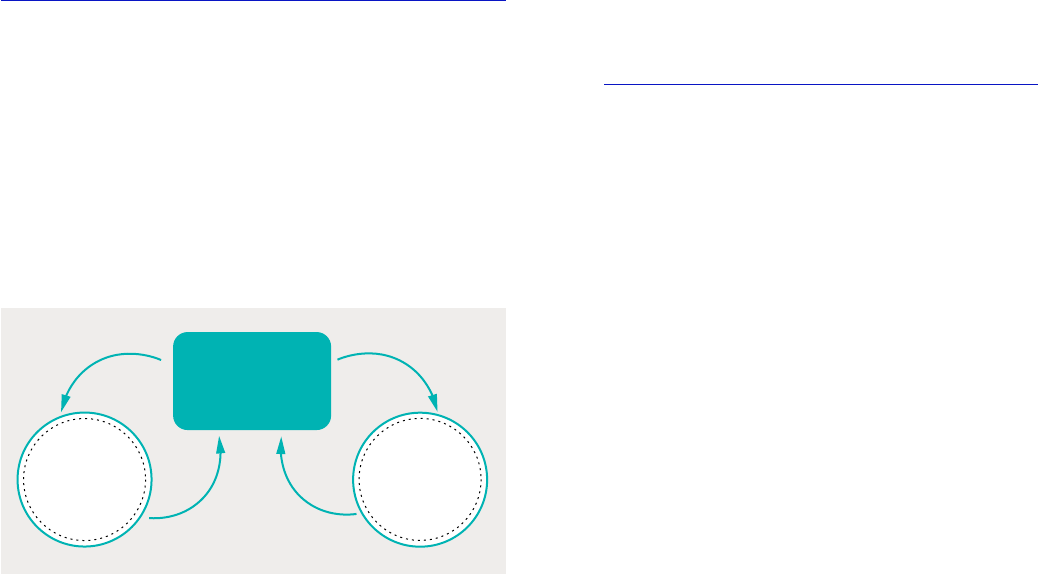
have to think and deliberate, whether they decide to
act or not: “Greater freedom enhances the ability of
people to help themselves and also to inuence the
world, and these matters are central to the process
of development.”
To achieve these freedoms, pro-
tection and empowerment are often essential. There
is thus a loop: agency is an enabler of protection and
empowerment, and protection and empowerment
provide conditions under which agency can be pro-
moted (gure 1.8). Because agency matters intrinsi-
cally (not only instrumentally), human security needs
to be a focus of permanent concern, something also
already recognized in the 2003 Ogata- Sen report.
The discussion thus far has rearmed the central-
ity of empowerment and protection and justied the
heightened relevance of the human security frame
for today’s world. But it did so within already estab-
lished frames for the human security concept — in
particular, the 2003 Ogata-Sen report. In the next
section the chapter concludes by exploring how to
further enrich the frame of human security for the
Anthropocene context and how to address more eq-
uitably and eectively the new threats discussed in
part II of the Report.
Affirming our common humanity on a changing
planet demands greater solidarity
The virtuous loop between human agency, on the
one hand, and empowerment and protection, on
the other, is focused mostly on individuals (or the
communities they form). But Oscar Gomez and Des
Gasper have emphasized the need to recognize that
human security depends on what happens across
communities that are connected: “One group can
typically only be secure if the groups with whom it is
signicantly connected are secure too.”
More fun-
damentally, the human security concept is founded
in part on highlighting “human interconnectedness,
including the interconnections of nations.”
The
universality of human security was already acknowl-
edged in the 1994 Human Development Report, even
if its instrumentalization has been rather slow.
Many aspects of these interconnections are not
new. In the context of the Covid-19 pandemic, we
have all heard that if the virus is spreading some-
where, people everywhere are vulnerable. But the
movement of people has spread new and old commu-
nicable diseases across continents for millennia. Still,
in today’s world this interconnection is global and ex-
panding to more aspects of life, as a large literature on
globalization has documented. How to ensure human
security in this interconnected world? Who partici-
pates in, designs and implements the protection and
empowerment strategies? Clearly, each sovereign
state has a central responsibility, with some arguing
that “human security is best guaranteed in the sov-
ereign state which is governed under the rule of law
with full respect for the human rights and fundamen-
tal freedoms of those who reside in its territory.”
States, each on its own, cannot
guarantee human security
But can each sovereign state, on its own, full this re-
sponsibility? The answer in our interconnected world
is clearly no, and it is possible to learn about how to
enhance human security in an interconnected world
from several eorts exploring how to “manage glo-
balization” in a world governed by sovereign states.
For example, the recognition of the need to provide
global public goods can enhance, rather than con-
strain, sovereignty.
Or how global governance is
already characterized by an intricate network of mul-
tiple actors.
Ngozi Okonjo-Iweala, Tharman Shan-
mugaratnam and Larry Summers set out a series of
specic proposals on how to transform multilateral-
ism for what they call a pandemic era — placing the
Covid-19 pandemic in a broader context of short-
comings in the provision of global public goods.
Figure 1.8 The virtuous cycle of agency, empowerment
and protection
Source: Human Development Report Office.
Protection
Empowerment
Agency
Enables
Promotes Promotes
Enables
27

Recognizing that each state alone cannot fully
guarantee human security does not absolve states of
the responsibility to pursue it. Many — if not most —
of the practical actions that advance human security
are within the purview of national and subnational
governments, including local governments. And civil
society has a key role at the local level, including in
violent conict settings. As Mary Kaldor argued while
defending a broad denition of civil society, “I refer
to civilians or active citizens who are not involved in
ghting and who are concerned about the public in-
terest, especially women, and who oer a political al-
ternative to sectarian identities.”
“
As a new generation of threats to human
security looms large under the Anthropocene
context, the response needs to recognize that much
depends on the relationship between state and
society — and on the mutual trust between the two
Accepting that several actors and entities are at play
in enhancing human security, as a new generation of
threats to human security looms large under the An-
thropocene context, the response needs to recognize
that much depends on the relationship between state
and society — and on the mutual trust between the
two. A good deal has been made about the erosion of
trust in government institutions, dicult though it is
to dene with clarity the actual subject of trust. Is it
competence? Honesty? Military institutions are often
among the most trusted but also the most feared in
some countries. Is this high degree of trust in insti-
tutions a good thing?
To complicate things further,
evidence suggests that government institutions lack
trust in people’s ability to interpret information and
act responsibly and therefore to overprescribe with
much precision the behaviours to follow, further
hurting trust in government institutions.
Enhanced social contracts are not enough
One compelling way of strengthening this relation-
ship is renewing the social contract between the
state and people, as argued forcefully by UN Secre-
tary-General António Guterres in the 2020 Nelson
Mandela Annual Lecture: “A New Social Contract
within societies will enable young people to live in
dignity; will ensure women have the same prospects
and opportunities as men; and will protect the sick,
the vulnerable, and minorities of all kinds….Peo-
ple want social and economic systems that work for
everyone. They want their human rights and funda-
mental freedoms to be respected. They want a say in
decisions that aect their lives.”
In that same lecture Guterres recognized that en-
hanced social contracts are not enough and argued
for a “new global deal,” reecting that sovereign
states need to come together in some way to address
challenges related to our global interconnected-
ness. In Our Common Agenda, the Secretary-General
eshed out this broad notion in a series of more con-
crete recommendations, some resonating with the
reections noted above about how to manage glo-
balization in a world governed by nation-states.
It
is urgent to pursue this agenda, and, as argued next,
the human security frame can support this eort, es-
pecially if enriched to account for the Anthropocene
context.
Before elaborating on the implications of the An-
thropocene context, it is useful to reect further on
why better social contracts alone are not enough.
One reason is practical, as already noted. In an in-
terconnected world of sovereign states, internation-
al organizations, treaties and incentives must be
mobilized to bring states together to address shared
challenges. But Amartya Sen, in The Idea of Justice, ar-
ticulated a more fundamental set of reasons: “Assess-
ment of justice demands engagement with the eyes
of mankind. First, because we may variously identify
with the others elsewhere and not just with our local
community; second, because our choices and actions
may aect the lives of others far as well as near; and
third, because of what they see from their respective
perspectives of history and geography may help us to
overcome our own parochialism.”
Sen’s argument is in the context of the require-
ments for determining the conditions under which
ethical claims can be seen as impartial and fair, but
his caution about the limitations of a contractual ap-
proach can apply with force to a reection on human
security in today’s world. This is because, as argued
in this chapter, the world is not only interconnected
but also characterized by deep interdependencies
across people as well as between people and the plan-
et. The Anthropocene context gives greater urgen-
cy to recognizing these interdependencies using the
28 NEW THREATS TO HUMAN SECURITY IN THE ANTHROPOCENE / 2022

“eyes of humankind” as we consider how to enhance
human security.
Enter solidarity
When it comes to strategies to promote human se-
curity, protection and empowerment may not have
sucient force to enable us to enhance human secu-
rity through the “eyes of humankind.” It is not easy
or obvious what should be added or how. But here we
propose two elements as a contribution to enriching
the human security frame. First, to retain the central-
ity of agency, given that the arguments in the preced-
ing section remain even more relevant in light of this
discussion. Second, we propose to complement pro-
tection and empowerment strategies with solidari-
ty, understood as a commitment to work together to
navigate the challenges of the Anthropocene. Sol-
idarity sometimes connotes charity, an option that
people may or may not feel inclined to pursue, or im-
plies the need for collectivized actions that subsume
the interests of the individual to a collective pursuit —
neither is implied here. To be clear, solidarity in our
proposal takes the meaning suggested by Caesar Atu-
ire and Nicole Hassoun: “broadly, a sympathetic and
imaginative enactment of collaborative measures to
enhance our given or acquired relatedness so that to-
gether we fare well enough.”
Central to this under-
standing is that solidarity in this context binds us in
our shared humanity, above and beyond the many
reasons for having solidarity within groups.
“
We propose to complement protection
and empowerment strategies with solidarity,
understood as a commitment to work together
to navigate the challenges of the Anthropocene
The relevance of solidarity echoes the UN Secre-
tary-General’s appeal in Our Common Agenda
and
links to the concept of common security articulated
by Oscar Gomez and Des Gasper.
A commitment
to solidarity may appear as something inadequate in
the face of the unprecedented reality of the Anthro-
pocene and the new generation of threats to human
security explored in this Report. A more concrete
recommendation for something more binding and
denitive certainly has great appeal. But recall the
quote by Kaushik Basu at the outset of this chapter,
which reminds us how much we depend on beliefs,
including when we think about laws and the institu-
tions with the power to enforce them. In addition,
appeals to protect others from threats appear to be a
more evocative and powerful motivator for eliciting
“cosmopolitan behaviour” — meaning, caring more
about the world as a whole than one’s national in-
group — than appeals to transfer from the well-o to
those less privileged.
In other words appeals grant-
ing security to others are more powerful than appeals
to redistribute benets.
Moreover, the unprecedented nature of the
Anthropocene — and the commitments to transform
our economies and societies — implies uncertainty
that might even make it impossible to specify with
precision the policies and institutions needed. Some
may have to be created from scratch. Adding solidari-
ty to empowerment and protection may not give con-
crete answers about what these might be, but doing
so may still provide for a systematic commitment to
consider the reality of dangerous planetary chang-
es. What is important to safeguard is the process
that enables public deliberation and reasoning from
where institutions and policies emerge to respond to
evolving threats to human security, recognizing that
people, in the words of Albert O. Hirschman, are
“self-evaluating beings.”
At the same time, as with the 1994 Human Devel-
opment Report, this proposal is made in a very spe-
cic context. Today we confront a context with, as
documented earlier in the chapter, a strong associa-
tion between perceptions of lack of human security
and low interpersonal trust. It is dicult to establish
causality in this relationship, though it probably runs
both ways. On the one hand, evidence suggests that
when insecurity increases, trust goes down. On the
other, low interpersonal trust spills over to low trust
in many government institutions and governments
themselves, creating conditions under which peo-
ple may feel less secure. As discussed earlier in the
chapter, trust is complex and multifaceted, with great
diversity in interpersonal trust across and within
countries. But it is not dicult to accept that, for the
most part, with the prevailing levels of interpersonal
trust and other types of trust today, it might be di-
cult to make systematic commitments to solidarity.
This section concludes by bringing together the
threads that led to the proposal to enrich the frame
29
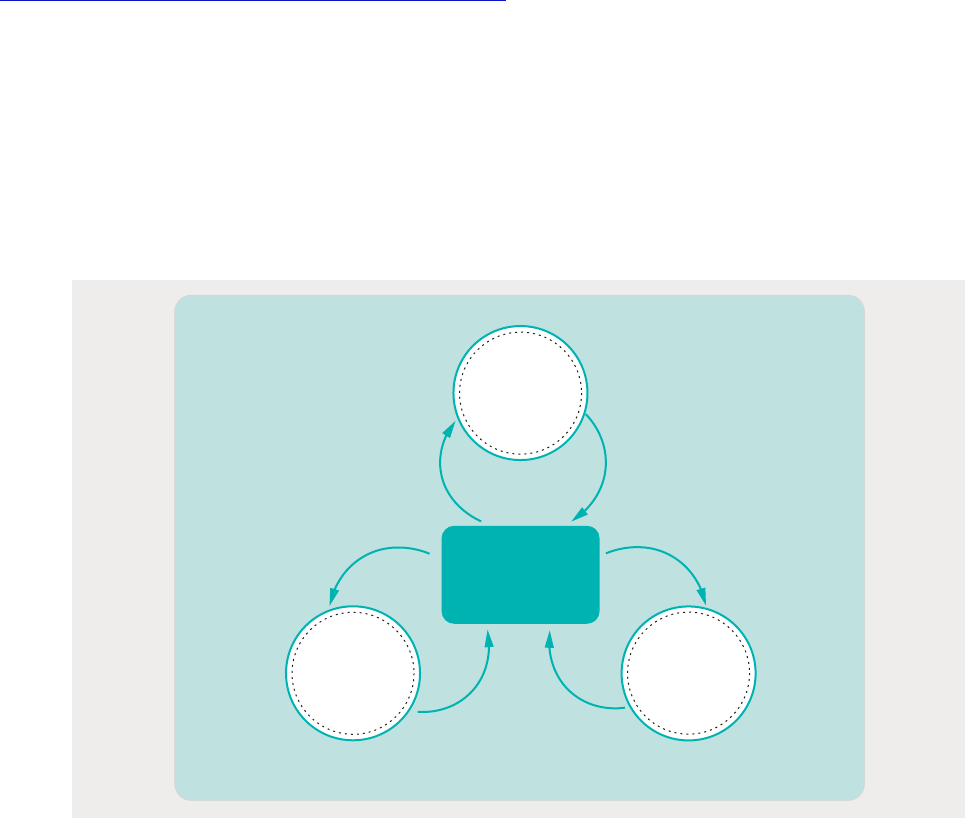
of human security (gure 1.9). Agency remains cen-
tral for human security but is something that enables
not only empowerment and protection but also soli-
darity. Solidarity, in turn, promotes agency in a way
that is mindful of the deep interdependencies across
people, and between people and development, in the
Anthropocene. In the current context trust demands
concern and attention. It is not added structural-
ly to the framing, because other relevant issues may
emerge over time that determine how the framework
functions — and because, from a more hopeful per-
spective, it may improve to levels that no longer make
it a concern. What remain central, however, are agen-
cy and the pursuit of protection, empowerment and
solidarity to advance human security in the Anthro-
pocene context.
Towards the next generation of human
security: From strategies to actions
The analysis of the previous sections species the
three main strategies for human security in the An-
thropocene: protection, empowerment and solidarity,
boosted by enhanced agency. But practical questions
remain about action and implementation: Who acts?
For whom? Why? How? And with which objective?
“
On the one hand, evidence suggests that
when insecurity increases, trust goes down. On
the other, low interpersonal trust spills over to
low trust in many government institutions and
governments themselves, creating conditions
under which people may feel less secure
A revised framework for action in the next gener-
ation of human security is built on the shoulders of
the 1994 Human Development Report,
the 2003
Ogata-Sen report
and the UN Secretary-General’s
2013 report on human security.
The innovations re-
ect not only the analysis previously presented in this
chapter but also the cumulative learning over the last
decade, including insights from the Human Security
Handbook,
relevant academic work and discussions
at the June 2021 Symposium on Human Security con-
vened to inform the preparation of this Report.
The human security concept — based on freedom
from want, freedom from fear and freedom from
Figure 1.9 Advancing human security in the Anthropocene context: Adding solidarity to protection and
empowerment
Source: Human Development Report Office.
Protection
Empowerment
Solidarity
Agency
Enables
Promotes Promotes
Enables
Trust
Enables Promotes
30 NEW THREATS TO HUMAN SECURITY IN THE ANTHROPOCENE / 2022
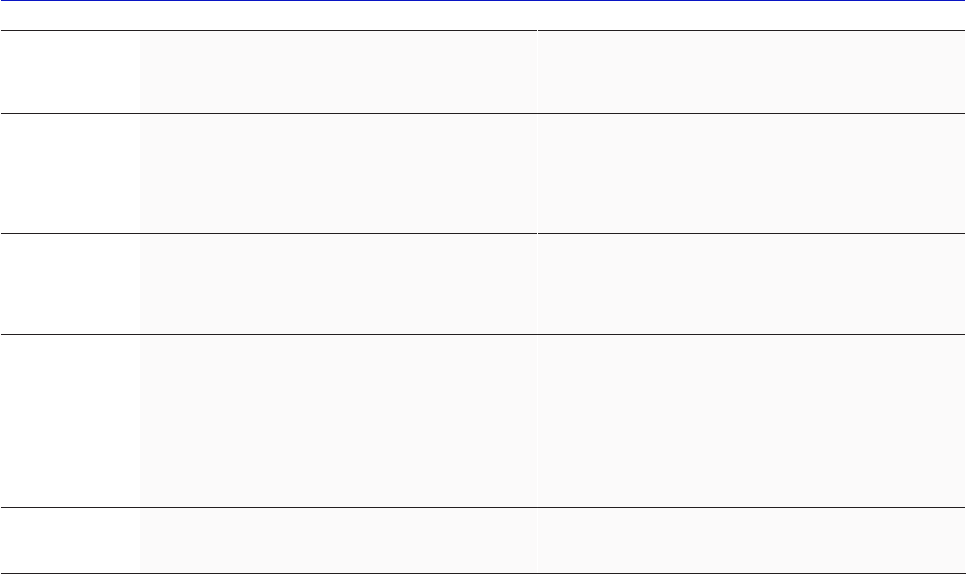
indignity — and main principles for action — people-
centred, comprehensive, context-specic and
prevention-oriented — continue to be as relevant as
ever (table 1.1).
But the analysis in this Report suggests possible up-
dates in emphasis and some new elements.
• On the agents: Move beyond traditional agents for
change. While governments and multilateral or-
ganizations retain their fundamental roles, the
next generation of human security builds on the
role of a wider set of agents acting in new ways. For
instance, the Covid-19 pandemic has shown how
everyone can be an active agent of human security
by following rules of social behaviour. Similarly, in-
digenous groups should be acknowledged as agents
of human security through their local actions in the
sustainable management of forests.
• On the targets: Move beyond human security for
developing countries. The Anthropocene is global,
with dierentiated (and often interconnected)
local eects. Several of the compounded eects of
climate change, biodiversity loss, technology-led
threats, conicts, forced displacement, inequalities
and pandemics require action of global scope from
multilateral organizations, national governments
and local actors. This new view should strengthen
action for human security in developing countries
— but as part of a broader framework that stresses
both the universal and intrinsic importance of
human security and its instrumental role. The
Covid-19 pandemic shows how the local contain-
ment of new variants can have positive global
eects.
“
Move beyond traditional agents for
change: While governments and multilateral
organizations retain their fundamental roles, the
next generation of human security builds on the
role of a wider set of agents acting in new ways
• On the threats: Move beyond siloed security ap-
proaches. Human security in the face of the in-
terlinked threats of the Anthropocene context
cannot be attained in silos. The human security
framework for action can be an integrator. Again,
the health shock of the Covid-19 pandemic aect-
ed all dimensions of human development. Future
preventive approaches should be integrated across
Table 1.1 Evolution of the action framework for human security in the Anthropocene context
Component Existing Next generation
Principles People-centred
Comprehensive
Context-specific
Prevention-oriented
People-centred
Comprehensive
Context-specific
Prevention-oriented
Agents Governments and UN entities
Nongovernmental actors
Governments and UN entities
Nongovernmental actors
Enhanced role for the agency of people everywhere.
Integrated networks of agents: networked multilateralism,
greater emphasis on collective action and greater space for
social norms at the local and global levels.
Targets Universality
People, mainly in developing countries
Universality
People everywhere through common security, for one’s
security depends on the security of others.
Reduce planetary pressures.
Enhance resilience of ecosystems
Threats Widespread in communities, cross-cutting across
Widespread in communities, cross-cutting across sectors,
Anthropocene context of compounded threats
Anthropocene risks
Advanced technologies
Inequalities as an assault to dignity
Violent conflict
New health challenges
Key strategies Protection–empowerment Protection–empowerment–solidarity
Foster agency to strengthen the links among protection,
empowerment and solidarity
Source:
31

sectors, with a global view. For instance, the ine-
quality in the distribution of vaccines in 2021 can
have enormous costs for human security in com-
ing years if it contributes to the emergence of new
variants.
“
Move beyond siloed security approaches:
Human security in the face of the interlinked
threats of the Anthropocene context cannot
be attained in silos. The human security
framework for action can be an integrator
• On the key strategies: Add solidarity for human
security in an interconnected world. Agency simul-
taneously boosts the strategies of protection, em-
powerment and solidarity. These strategies can be
expanded and scaled up under a human security
policy framework if they are backed by a broader
set of implementation tools. At the global level the
key strategies should lead to the adequate and eq-
uitable provision of global public goods.
Human security is an intrinsic complement to
human development in the Anthropocene context.
Permanent and universal attention to the next gen-
eration of human security can end the development-
with-human insecurity pathways that produce
pandemics, climate change and the broader predic-
aments of the Anthropocene. The 2030 Agenda for
Sustainable Development and the Sustainable De-
velopment Goals set ambitious multidimensional ob-
jectives that not only inform action at these levels but
also mobilize the international community. But cur-
rent eorts are still largely compartmentalized, deal-
ing separately with climate change, biodiversity loss,
conicts, migration, refugees, pandemics and data
protection. Those eorts should be strengthened, but
tackling them in silos is insucient in the Anthropo-
cene. The next generation of human security should
Box 1.4 Human security and the Sustainable Development Goals
The 2030 Agenda for Sustainable Development
and Sustainable Development Goals (SDGs) were
agreed in September 2015
1
because of the rec-
ognition that the world would not be sustainable
unless “we the peoples” take transformative steps
in mindset, norms and lifestyle. The 2030 target
seemed symbolic, but it turned out to be prescient.
If we, everyone on the planet, fail to change course,
we may miss the last opportunity to make our world
sustainable. The 2030 Agenda resolution stressed
this point succinctly:
Today we are also taking a decision of great his-
toric significance. We resolve to build a better fu-
ture for all people, including the millions who have
been denied the chance to lead decent, dignified
and rewarding lives and to achieve their full hu-
man potential. We can be the first generation to
succeed in ending poverty; just as we may be the
last to have a chance of saving the planet. The
world will be a better place in 2030 if we succeed
in our objectives.
The resolution stresses that “the dignity of the hu-
man person is fundamental,” that “we wish to see the
Goals and targets met for all nations and peoples
and for all segments of society” and that “we will
endeavour to reach the furthest behind first.” It also
includes elements of resilience and prevention as
part of the SDGs, though none of the 17 goals refers
explicitly to crisis management or shock responses.
A systemic approach and a consultative nature are
two common guiding features from the SDGs and
of policies inspired by the human security concept.
The SDGs explicitly recognize the interlinkages of
current threats and challenges. Moreover, the 2030
Agenda was the result of a consultative process
— and the ideas of collaboration and partnership
are embedded in SDG 17. The SDGs also recognize
multilayered responsibilities and actions to tackle
current threats.
Successful implementation of both the 2030
Agenda and the pursuit of human security would
benefit from the constant learning between the two
connected and similar, if distinctive, approaches.
Specifically, SDG reporting, analysis and policy
design can use some ideas explored in human
security analysis: asking people about their
perceptions of priority values, threats and security;
identifying hotspots and using indexes; alternating
comprehensive comparative studies with in-depth
studies focusing on priorities (an approach called
flexible focusing); and systematically comparing
alternative policy routes.
2
Source: Human Development Report Office.
Notes
1.UN 2015a, para. 4. 2.Gasper 2011.
32 NEW THREATS TO HUMAN SECURITY IN THE ANTHROPOCENE / 2022
match the interlinked nature of the Sustainable De-
velopment Goals with comprehensive action that has
a system view (box 1.4).
“
Human security is an intrinsic complement
to human development in the Anthropocene
context. Permanent and universal attention to the
next generation of human security can end the
development-with-human insecurity pathways
that produce pandemics, climate change and
the broader predicaments of the Anthropocene
The role of human security as an integrator is not
simple — because social and natural systems are
complex, with high nonlinear interrelations among
their elements. Sensible implementation warrants
constant identication of the dynamics within the
system, by decisionmakers, stakeholders and citi-
zens. And the action framework needs to be embed-
ded within the dierent layers — local, national and
global — that aect people’s human security. It is a
high challenge but one that, as the Covid-19 pandem-
ic has shown us, cannot be avoided.
The human-development-with-human-insecurity
pathway, paired with the new generation of threats to
humanity, are powerful drivers to reassess and rethink
how we take action to ensure that all of humanity lives
free from want, free from fear and free from indigni-
ty. The rest of this Report uses integrated analysis of
compounding threats to show how we may respond to
the epochal changes in the way humans live — together
and in relation to our natural environment.
33

Annex 1.1. A brief account of the
origins, achievements and challenges
of the human security concept
Based on Fuentes-Nieva and Lengfelder (2021).
The origins and the 1994 Human Development Report
The 1994 Human Development Report introduced
the modern concept of human security with a simple
central idea: moving away from national protection
towards individual security.
It was initially based
on the goals of freedom from want and freedom from
fear that were part of the foundational narrative be-
hind the creation of the international institutions of
the post–World War 2 era, including the Universal
Declaration of Human Rights, whose preamble en-
visioned “a world in which human beings shall enjoy
the freedom of speech and belief and freedom from
fear and want has been proclaimed the highest aspi-
ration of the common people.”
By 1994 the end of the Cold War had created enor-
mous opportunities to rethink elements of the world
order. It was time, the 1994 Human Development Re-
port argued, to move away from the discussion of nu-
clear threats and potential conict between states and
to start paying attention to the day-to-day plight of
people around the world. In the report’s own words:
“For most people, a feeling of insecurity arises more
from worries about daily life than from the dread of
a cataclysmic world event. Will they and their fami-
lies have enough to eat? Will they lose their jobs? Will
their streets and neighbourhoods be safe from crime?
Will they be tortured by a repressive state? Will they
become a victim of violence because of their gender?
Will their religion or ethnic origin target them for
persecution?”
The eort to put the individual at the centre of
security discussions and policies was a radical one
at the time. As later observers noted, “The overall
goal was to expand the concept of security, which
had ‘for too long been interpreted narrowly, as secu-
rity of territory from external aggression, or as pro-
tection of national interests in foreign policy or as
global security from the threat of nuclear holocaust.’
Human security was thus meant to change the ref-
erent object of security ‘from an exclusive stress on
territorial security to a much greater stress on peo-
ple’s security.’”
The human security concept was conceived as a
central part of an ambitious policy agenda under the
proposal of a new world social charter. This overar-
ching proposal included specic recommendations
such as increased resources for closing gaps in human
development to meet a set of global targets (a precur-
sor to the Millennium Development Goals), a global
human security fund to nance responses to crises
with a global logic and the establishment of the UN
Economic Security Council “to review the threats to
global human security and agree on the necessary
actions.”
A fundamental point in the 1994 Human Develop-
ment Report was capturing the peace dividend (the
savings from military spending) to support human
development. During the Cold War a large share of
scal resources were devoted to maintaining the mil-
itary balance, with an ensuing arms race. But total
military spending fell by 15 percent in industrialized
countries between 1987 (when it peaked) and 1991.
This change in spending priorities created an oppor-
tunity to relocate these resources elsewhere (and to
reduce decits). Most military spending focused on
national security, and merely suggesting to use some
of these resources to nance individual wellbeing
was important. The proposal included setting aside
this money in a demilitarization fund and then identi-
fying the development needs on where to use them.
The 1994 Human Development Report highlighted
four key characteristics of human security: universal-
ism, interdependence, prevention and people-cen-
tredness. Seven dimensions were identied as part of
a people-centred concept of security:
• Economic security (an assured basic livelihood de-
rived from work or reliable social safety nets).
• Food security (ready physical and economic access
to basic food).
• Health security (access to personal healthcare and
protective public health regimens).
• Environmental security (safety from natural disas-
ters and resource scarcity attendant upon environ-
mental degradation).
• Personal security (physical safety from violent
conict, human rights abuses, domestic violence,
crime, child abuse and self- inicted violence, as in
drug abuse).
34 NEW THREATS TO HUMAN SECURITY IN THE ANTHROPOCENE / 2022

• Community security (safety from oppressive com-
munity practices and from ethnic conict).
• Political security (freedom from state oppression
and abuses of human rights).
This characterization — admittedly overlapping
and incomplete — was eective to communicate the
idea of human security on several fronts, by match-
ing common policy portfolios (linked to ministries or
department titles) and facilitating the generation of
sectoral agendas.
Evolution of the concept: The 2003 Ogata-Sen
report and the UN General Assembly definition
The opportunity to revise the human security con-
cept came in the context of the 2000 UN Millennium
Summit, as UN Secretary-General Ko Annan called
for a world free of want and free of fear. In response,
the Commission on Human Security was established
in January 2001, co-chaired by Sadako Ogata and
Amartya Sen. Its nal report, Human Security Now,
was presented in May 2003.
Human Security Now oered a new denition of
human security centred around ensuring the integ-
rity of a “vital core” in human lives, often interpret-
ed as set of basic capabilities: “to protect the vital
core of all human lives in ways that enhance human
freedoms and human fullment. Human security
means protecting fundamental freedoms — freedoms
that are the essence of life. It means protecting peo-
ple from critical (severe) and pervasive (widespread)
threats and situations. It means using processes that
build on people’s strengths and aspirations. It means
creating political, social, environmental, economic,
military and cultural systems that together give peo-
ple the building blocks of survival, livelihood and
dignity.”
This denition was not static; it was meant to be
adapted to dierent contexts and to evolve over time:
“The vital core of life is a set of elementary rights and
freedoms people enjoy. What people consider to be
‘vital’ — what they consider to be ‘of the essence of
life’ and ‘crucially important’ — varies across individ-
uals and societies. That is why any concept of ‘human
security’ must be dynamic. And that is why we refrain
from proposing an itemized list of what makes up
human security.”
The report also pushed for two reinforcing spaces
of action. First, empowerment strategies, enabling
people to act on their behalf — and on behalf of others
— to develop resilience to dicult conditions. People
are agents of their destiny if given the tools. Agen-
cy, dignity and opportunities are particularly crucial
for people facing vulnerability. Second, protection
strategies, setting up institutions to shield people
from menaces beyond their control. The report em-
phasized the complementarity of both strategies:
“People protected can exercise many choices. And
people empowered can avoid some risks and demand
improvements in the system of protection.”
In so
doing, the report sought to bridge the gap between
those working in the humanitarian space and those
working in the development space. Conventional
approaches had followed separate tracks, with hu-
manitarian crisis responses getting immediate, short-
term, reactive support that was politically driven and
the development interventions seen as the outcome
benets that accrued to, and was aorded by, stable
countries already on the path towards peace and eco-
nomic prosperity. What was highlighted was the in-
trinsic humanitarian–development–peace nexus: that
peace was necessary for spurring development and
that development was critical for establishing lasting
peace, which the human security approach eectively
pointed out.
Building on the Ogata-Sen report, in 2012 the UN
General Assembly reected a consensus that human
security would be considered “the right of people to
live in freedom and dignity, free from poverty and
despair. All individuals, in particular those facing
vulnerability, are entitled to freedom from fear and
freedom from want, with an equal opportunity to
enjoy all their rights and fully develop their human
potential.”
As researchers have argued, since the (re)inception
of the idea of human security in the 1994 Human De-
velopment Report, three elements are constant in the
discussion: freedom from want, freedom from fear,
and human dignity.
• Freedom from want: conditions that allow for pro-
tection of basic needs, quality of life, livelihoods
and enhanced human welfare.
• Freedom from fear: conditions that allow indi-
viduals and groups protection from direct threats
to their safety and physical integrity, including
35
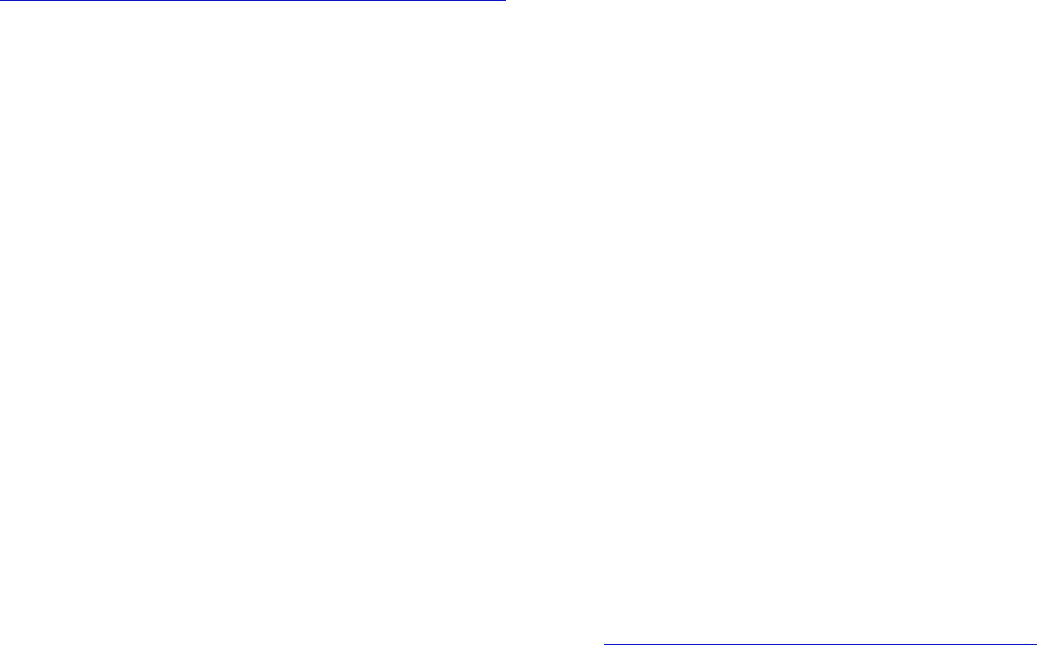
various forms of direct and indirect violence, in-
tended or not.
• Freedom from indignity (human dignity): condi-
tions where individuals and groups are assured
of the protection of their fundamental rights and
allowed to make choices and take advantage of
opportunities in their everyday lives.
These three elements, acknowledged by the UN
General Assembly’s denition, are the basis for
current work on human security by international
organizations.
Human security in practice
The human security approach has shown practical
value. First, it appeals to numerous national govern-
ments and international organizations. In the past 25
years many of these stakeholders and decisionmakers
have invested nancial, human and political resources
to push forward a human security agenda. There have
been some achievements as a result of these eorts
and debates in both practical and analytical terms.
Recent years have seen the human security approach
take on a more practical role for programme design
or policy recommendations.
A recent survey by the
UN Human Security Unit found, particularly among
stakeholders of the UN system and nongovernmental
organizations, an appreciation for the human security
approach, specically in the following areas:
• As an analytical and planning tool that helps im-
prove the conception, design and execution of
policies and programmes.
• As a tool that helps identify interlinkages across
insecurities and promotes multisectoral solutions
to address interconnected issues.
• As a tool that fosters multistakeholder partnerships
and improves the coherence of responses across
sectors.
• As an approach that emphasizes and guides prac-
tical strategies to reach those most vulnerable,
enhances local capacity and community-driven
solutions to stem the cycle of crisis and promotes a
preventive lens essential to reducing vulnerability
and building resilience.
• As a tool that ensures greater sustainability and
resilience by combining protection and empower-
ment and enhancing state–society relationships.
The human security approach has been interpret-
ed as a bottom-up approach, mainly because it puts
people at the centre of security concerns, where the
process of debate and deliberation in communities
and people facing vulnerability is just as important as
the end result of a process. The importance of a bot-
tom-up approach in practice is close to Amartya Sen’s
idea of agency (or the ability to act on behalf of what
is important). This exibility has been useful as a sup-
porting tool for the Sustainable Development Goals.
A review of the academic literature on human se-
curity shows that the rst and most obvious success
of the human security approach was the fundamen-
tal challenge it represented to traditional security
studies. It adapted methodologies to understand and
manage the day-to-day threats that people face in dif-
ferent contexts. “Human security analyses of what
are or should be priorities bring a focus on questions
of what it is to be human.”
By focusing on people
and not states, the approach allowed a broader un-
derstanding of the requirements to protect and pre-
vent against dierent and changing threats and risks.
However, there is no explicit connection with systems
thinking that provides a common ground for under-
standing the interdependencies and complexity of
current realities.
These broad characteristics have particularly ben-
etted critical studies on security.
Critical feminist
literature was an early adopter of the human securi-
ty approach and extended the work of the women,
peace and security agenda initiated by UN Securi-
ty Council Resolution 1325 in October 2000.
The
human security approach allowed critical feminist
authors to highlight dierent forms of insecurities,
expanding the search for empowerment and dignity.
Challenges and concerns over the years
The same ambition and broad perspective that some
people interpret as strengths of the human security
approach are interpreted by others as two of the main
weaknesses. As some observers described it, the con-
cept is so broad and elusive that “everyone is for it,
but few people have a clear idea of what it means.”
Others have argued that by having so many elements
under the approach’s umbrella, “we end up prioritiz-
ing everything.”
And that the consequence is “if
everything is being prioritized, then by denition,
36 NEW THREATS TO HUMAN SECURITY IN THE ANTHROPOCENE / 2022
nothing is.”
These types of criticisms came very
early on during the debate on human security.
A more general contention relates to the idea that
the human security approach has securitized devel-
opment and human rights, a point that has led to po-
litical disagreement about the scope of the concept.
This has been reected over the years in the dierent
interpretations by national governments and their re-
spective foreign aairs ministries.
Criticism of the human security approach can be
grouped into ve categories.
• Conceptual: The approach could be interpreted as
too wide ranging but without the accompanying
rigour to provide policy insight or to unpack com-
plex dynamics among peace, development and
human rights.
• Analytical: The lack of methodology and recog-
nition of the systemic nature of the approach are
only partially responsible for the “siloed” analysis
of the approach’s dierent elements. Measurement
also remains unresolved, as it would be dicult
enough to identify the variables and indicators that
could describe the elements of human security in a
meaningful way for the dierent contexts existing
in a given moment around the world.
• Political: The approach undermines the traditional
view of the state as the sole provider of security.
• Moral: Security can be used to promote hegemonic
interests of some states. Opposed to this concern is
the idea that the approach could fail to distinguish
between individual and universal security con-
cerns, which could undermine attention to issues
of common public good, collective interests and
solidarity.
• Operational: The broad nature of the approach
makes operationalization dicult because the vast
number of elements make prioritization dicult — a
challenge that aicts the humanitarian–devel-
opment–peace nexus. Moreover, the many bidi-
rectional interplays among dimensions of peace,
development and human rights create diculties
in identifying specic initial actions.
As the world faces another historic juncture, with a
truly global catastrophe (the Covid-19 pandemic) and
the looming climate crisis, we are well poised to revis-
it the concept of human security and the human se-
curity approach. It is in light of these truly collective
threats and downturn risks that aict us as a com-
mon humanity, albeit with dierent resources and
capability to cope and adapt to the challenges ahead.
An enrichened human security approach is one of the
fundamental ways in which we can reconceptualize
the solidarity needed to tackle these collective chal-
lenges as a truly global, international community.
37
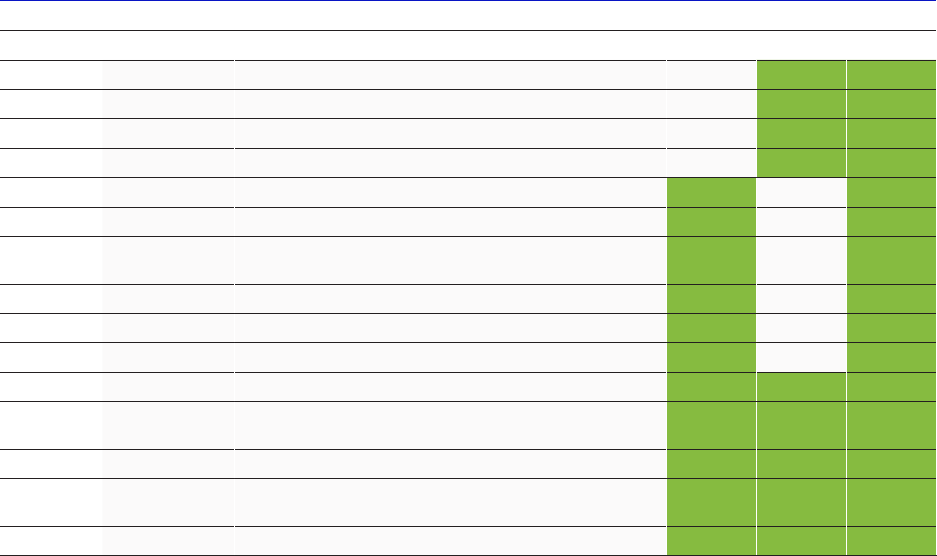
Annex 1.2. The Index of
PerceivedHuman Insecurity
The experimental Index of Perceived Human Securi-
ty is based on waves 6 (2010–2016) and 7 (2017–2020)
of the World Values Survey.
It therefore reects the
pre-Covid-19 period for the most part. The index is
computed for 74 countries and territories, covering
around 81 percent of the world’s people. Intertempo-
ral comparisons are possible for only 31 countries and
territories (with 27 percent of the world’s people). The
index combines 17 variables covering insecurities
from violent conict, socioeconomic insecurities and
insecurities at the personal and community levels
(table A1.2.1). These insecurities reect challenges to
freedom from want, freedom from fear and freedom
from indignity.
• For violent conict insecurities the index uses
variables reecting worries about a war involving
the country of residence, a civil war or a terrorist
attack.
• For socioeconomic insecurities the index uses
variables representing explicit worries (losing job,
not being able to give children education) and
actual deprivations in health, food and economic
security.
• For personal and community insecurities the index
uses variables of exposure to crime, changes in
habits because of security concerns, perceptions
of safety in the neighbourhood and assessments
of specic risks, including robbery, alcohol and
drugs on the streets, abuse by law enforcement and
racism.
The socioeconomic insecurity variables predomi-
nantly capture challenges to freedom from want. The
deprivations (hunger, having no money, not being
able to aord medicines) and worries about the fu-
ture (about children’s education or having a job) also
indicate a threat to human dignity, in line with the
common aspirations dened the Universal Declara-
tion of Human Rights and the 2030 Agenda for Sus-
tainable Development.
The variables on violent conict and personal
and community insecurities capture challenges to
freedom from fear. They also capture challenges to
human dignity and the “right to life, liberty and se-
curity of person,” as acknowledged in the Universal
Declaration of Human Rights. The variables relating
Table A1.2.1 Dimensions and subdimensions of the Index of Perceived Human Insecurity
Weights Freedom from:
Dimensions Subdimensions Want Fear Indignity
Fear of violent conflict
War
Civil war
Terrorist attack
Socioeconomic insecurity
Worried about giving children a good education
Worried about losing/finding job
Personal and community insecurity
a
a
Overall insecurity in neighbourhood
a. Each indicator within the subdimension is equally weighted.
Source: Human Development Report Office.
38 NEW THREATS TO HUMAN SECURITY IN THE ANTHROPOCENE / 2022
to incidents of racism and abuse from enforcement
authorities reect some of the eects of horizontal in-
equalities on dignity.
The aggregation follows a standardized approach:
each indicator is transformed into a binary variable,
with 1 indicating insecurity and 0 indicating freedom
from insecurity. Then, the indicators are aggregat-
ed using a weighted arithmetic average through dif-
ferent subdimensions and dimensions of insecurity,
using equal weights (see table A1.2.1).
39
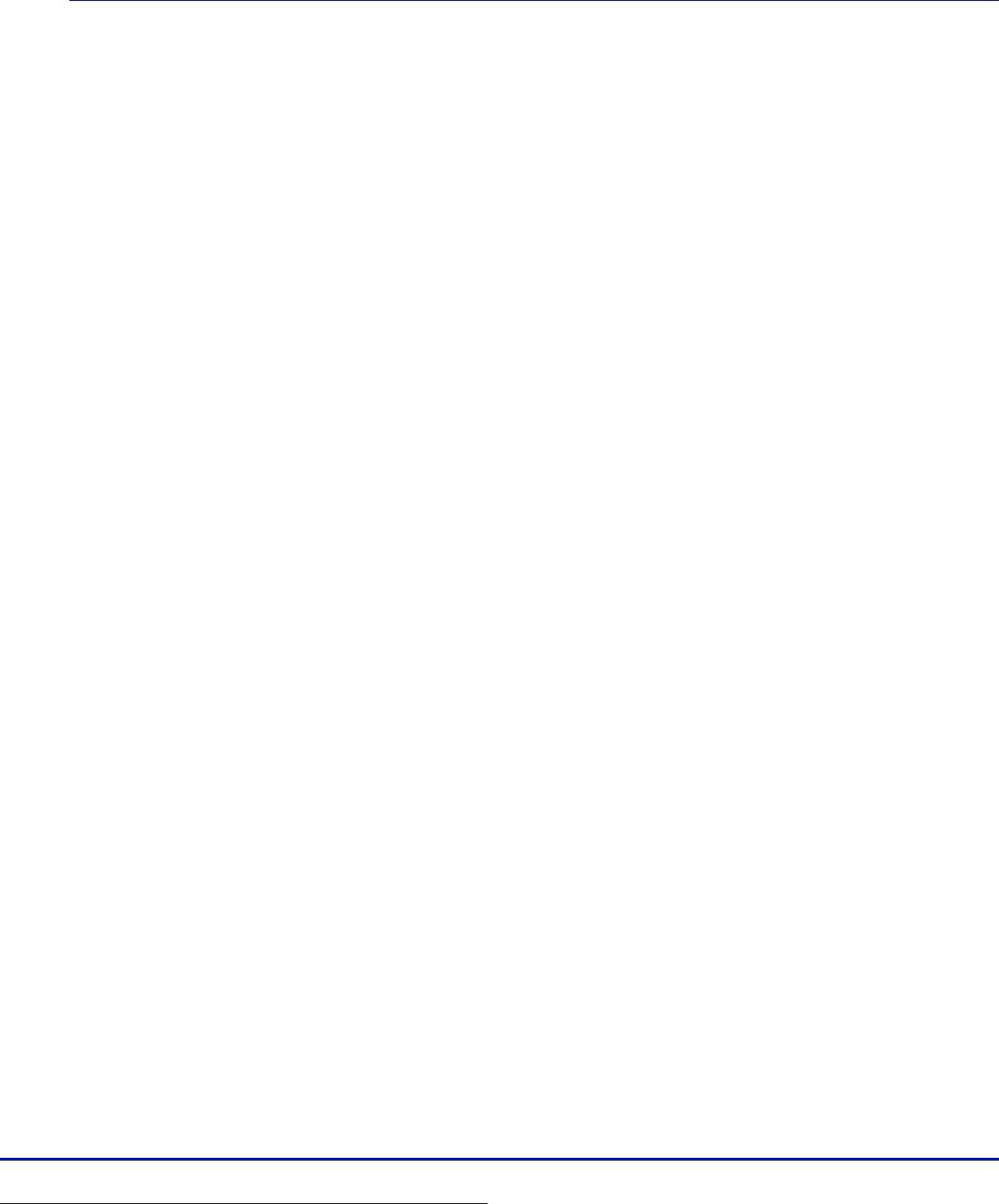
Contrary to the general perception, many concrete
policies, both global and local, already can contribute
to enhancing the human security interests of those
aected by the new generation of threats in the An-
thropocene context. Probably the best examples,
with challenges and achievements, are the local and
global responses to the Covid-19 pandemic and cli-
mate change. The two challenges are enormous, and
the eorts are still fragmented. Yet the concept of
human security, if used strategically, has the power to
enhance policy outcomes by integrating and aligning
those fragmented policy eorts to protect the vital
core of all humans in ways that enhance human free-
doms and human fullment.
New challenges to human security emanate from
both the Covid-19 pandemic and the climate crisis,
reected in the Anthropocene context. Specic is-
sues from dierent areas show that, while each has
its distinctive solutions, they are often interrelated.
Moreover, by putting people at the centre, there is an
opportunity to explore cross-sectoral collaboration
(table S1.1). Global implementation and local imple-
mentation have the potential to be connected — and
linked to the Sustainable Development Goals. Glob-
al implementation of human security approaches
includes providing global public goods, using global
governance norms and mechanisms and promoting
people’s own eorts to change their mindsets and
pursue more transformative lifestyles. Local imple-
mentation includes the two main human security
strategies of protection and empowerment, based on
the existing frame of human security.
Responses to the Covid-19 pandemic include
pursuing universal health systems, reviewing
international health regulations, introducing a new
international pandemic facility and creating new
mechanisms for vaccine development and distri-
bution, notably the Access to Covid-19 Tools Accel-
erator and COVAX. The global health governance
architecture, though still in the formative stage, start-
ed sharing vaccines. The World Health Organization
took the lead, despite many challenges, and other UN
entities contributed their expertise. Public-private
partnerships, private foundations, businesses and
civil society organizations have all worked in tandem.
And strategic partners have committed to interna-
tional cooperation, even when each state had its own
domestic challenges.
This type of response could inspire action to tack-
le the climate crisis and other processes of dangerous
planetary change, with global, macro-level tools and
local, micro-level tools. The human security frame
can assist in designing, mapping and implementing
policy tools for climate action. Consider how many
people are highly vulnerable to both Covid-19 and cli-
mate change–induced extreme weather events. This
overlap suggests the possibility of supporting those
facing multiple crises through a human security lens.
The human security approach is comprehensive.
Even if a policy is meant to be human-centred, it is
not part of a full human security approach unless it
is packaged and implemented to full people’s mul-
tifaceted needs to ensure their freedom from want,
fear and indignity. As the responses to the Covid-19
pandemic have shown, a health focus cannot satisfy
people’s human security unless it is combined with
socioeconomic measures and measures that uphold
human rights.
NOTE
1 Ogata and Sen 2003.
SPOTLIGHT 1.1
Exploring how the human security approach can illuminate
the overlaps between the response to Covid-19 pandemic
and climate change
Based on Hoshino (2021)
40 NEW THREATS TO HUMAN SECURITY IN THE ANTHROPOCENE / 2022
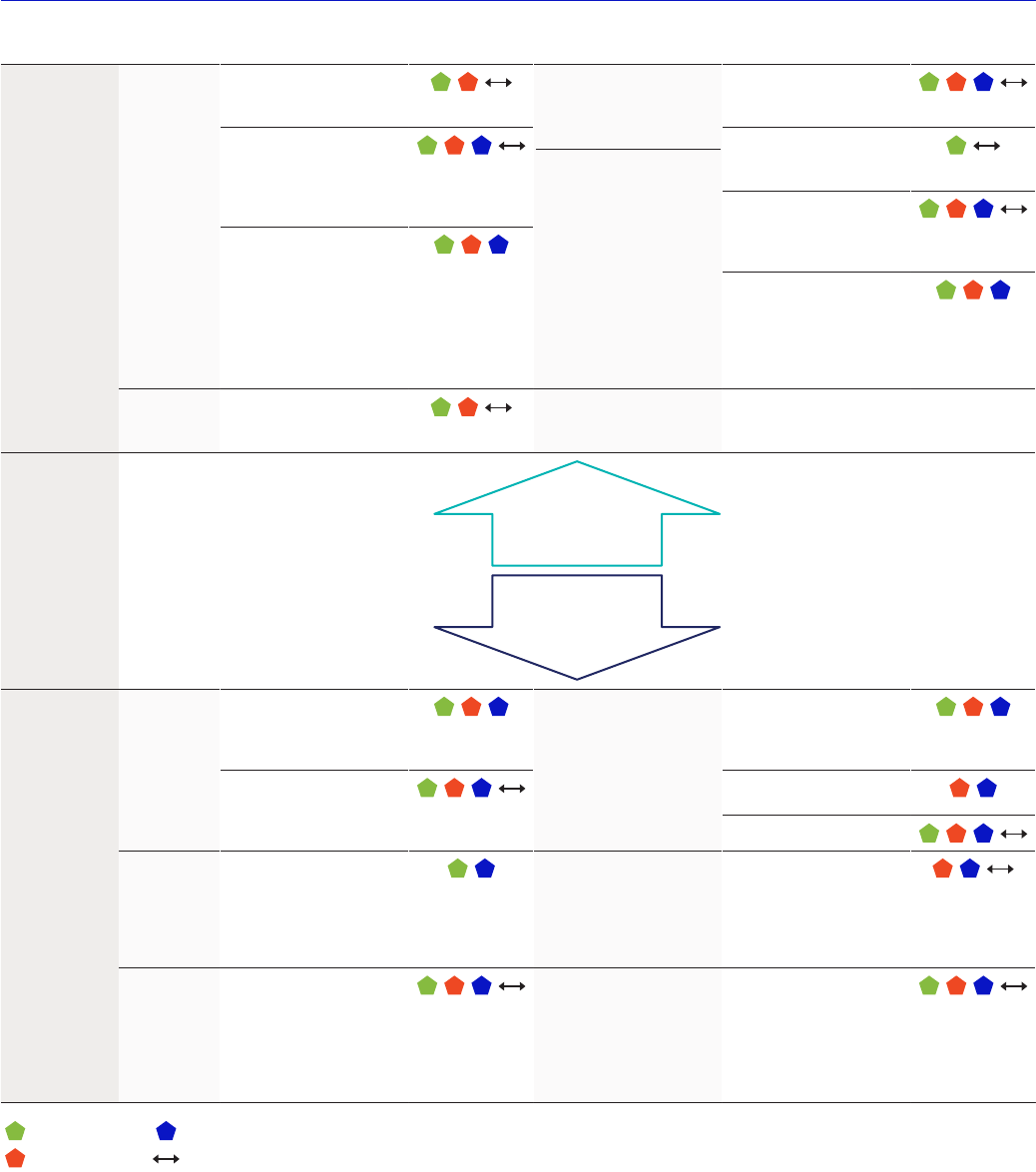
Table S1.1 Promoting empowerment, protection and solidarity in a world of interconnected threats: Example
Health threats: Pandemics, including reference
to COVID-19 (Sustainable Development Goal 3) Links
Anthropocene context: climate change
(all Sustainable Development Goals
directly or indirectly affected)
Global
implementation
Global
institutional
mechanisms
and public
goods
A new International
Pandemic Financing
Facility
Incorporating health issues
in monitoring climate
impacts and formulating
action
Including climate-related
health threats in pandemic
preparedness efforts
New compact for climate
action
Network of national
pandemic coordinators
who are accountable
to heads of state and
government
Integrated systems to
monitor hazards and
response
Risk-sharing mechanisms
to both address
adaptation needs and
promote mitigation
Clinical reagents,
tests, vaccines and
medicines, COVID-19 Tools
Accelerator, prenegotiated
platform for tools and
supplies
New standards to
consistently measure
the effects of climate
change across human
development dimensions
and across local areas
Global social
norms
Open data and scientific
collaboration
Cross-disciplinary
collaborations on climate–
health nexus
Local–global
links
National
and local
implementation
Promoting
agency
Universal healthcare
systems
Equipping healthcare
systems to better address
health risks due to climate
change
Community participation
in monitoring hazards
disaster response,
mitigation and adaptation
Participation and
accountability in health
and response measures
Inclusion of indigenous
peoples and knowledge
Nature-based solutions
Social norms Social distancing and
masking
Social norms based on the
idea of common security
and responsible behavior
People’s values can
contribute to mitigation
efforts through direct
action and demands for
change from companies
and governments
Upholding
human rights
Right to health
Right to life, right to
self-determination, right
to development, right to
health, right to food, right
to water and sanitation,
right to adequate housing,
cultural rights
Protection Solidarity
Empowerment
Dissemination of local
best practices
Institutionalization,
regional application and
localization of global
measures
41


CHAPTER
2
The Anthropocene
context is reshaping
human security

44 NEW THREATS TO HUMAN SECURITY IN THE ANTHROPOCENE / 2022
CHAPTER 2
The Anthropocene context is reshaping human
security

We live in a moment of dangerous and unprecedent-
ed planetary changes. In 2020 the human-made mass
overtook the total living biomass on Earth, and at
current rates of growth, it is expected to double over
the next two decades.
Current atmospheric concen-
trations of carbon dioxide are higher than at any time
in at least 2 million years, and increased pollution in
our air, water and land causes some 9 million prema-
ture deaths a year.
This new context can be charac-
terized as the Anthropocene — the age of humans.
With societies closely interconnected, through the
ow of people, goods and information, the human se-
curity of one group is closely linked to that of others
(a notion that has been characterized as “common se-
curity”).
The inequalities and interdependencies be-
tween people and societies have made the relevance
of common security plain to see, but the analysis in
this chapter suggests that the Anthropocene reali-
ty adds another more forceful reason to rearm the
importance of solidarity for human security, together
with protection and empowerment.
The Anthropocene context demands far-reaching
changes in how we manage human embeddedness in
nature (box 2.1), moving away from actions that drive
planetary imbalances in the pursuit of narrow notions
of development and security. The uncharted territory
of the Anthropocene makes greater demands on the
capacity of societies to broaden and reassess what
it means to pursue development and security amid
great uncertainty. Solidarity strategies in the context
of an enriched frame of human security gain special
signicance for navigating this reality, supporting
deliberations to act responsibly and collaboratively
so that we are all more secure amid truly existential
challenges.
“
The Anthropocene reality adds another more
forceful reason to rearm the importance
of solidarity for human security, together
with protection and empowerment
This chapter describes some of the dangerous plan-
etary changes already under way and their implica-
tions in several areas that are posing threats to human
security. It is not meant to be comprehensive in cov-
ering all dimensions of the Anthropocene — but to use
Box 2.1 Human security for a more-than-human world
In the wake of the Covid-19 pandemic, have we
reached an inflection point in thinking critically about
our interconnected sense of planetary precarious-
ness? Has the pandemic elicited enough reflection
on the wider set of overlapping human–environ-
mental crises to have an impact on how we define
and frame security for our overarching human and
nonhuman worlds?
In seeking to build a consensus on visions of se-
curity for the future, it is important to consider how
global human–environmental security is about
shared interests and can be enhanced by acting
collectively, responsibly and cooperatively. In this
endeavour transcending anthropocentric concep-
tualizations of security could be helpful but would
necessitate carefully documenting the planet’s inter-
secting human and environmental precariousness
and detailing why and how we must address them
holistically.
Human security strategies in practice have
typically involved compartmentalized engagements
with artificially separate human and environmental
concerns. The concept of human security would
benefit from recognizing the planet’s intertwined
human–environmental precariousness. A reframing
of security in the context of the Anthropocene reaf-
firms the systemic view of humans as part of the
natural world.
Consider climate change. Confronting it as an
exclusive concern for environmental security will
ultimately be ineffective if it ignores other human se-
curity elements such as food security, health security
and community security, as highlighted in the 2020
Human Development Report.
1
Siloed security strate-
gies for the environment have “become increasingly
divorced” from their “heterodox and critical roots in
human security” and thus overlook how security
threats arise “out of the interconnections between
different aspects and forces in particular situations.”
2
This is why “the value added from human security
analysis comes [from its] functioning as a boundary
concept to transcend those divisions, flexibly.”
3
In this
sense the very elasticity of the concept of human
security is its strength in responding to nonhuman
security challenges in context-sensitive ways.
Source: Morrissey 2021.
Notes
1.UNDP 2020c. 2.Elliott 2015, p. 11. 3.Gasper and Gómez 2015, p. 100.
45

a few illustrations to unearth what the broad process
of planetary changes means for human security. It
highlights agency and the importance of adding soli-
darity to protection and empowerment for human se-
curity in the Anthropocene.
The self-reinforcing interaction
between dangerous planetary
changes and social imbalances
Dangerous planetary changes are part of a self-rein-
forcing cycle, resulting from the interaction of plane-
tary imbalances
and social imbalances (inequalities
in opportunities, wealth and power across groups of
people that can have social destabilizing impacts; g-
ure 2.1). This interaction shows how the Anthropocene
context compounds threats to human security, which is
indicated by the arrow owing from planetary to social
imbalances. However, social imbalances feed through
social, economic and political processes that exacer-
bate planetary imbalances (thus the arrow in the other
direction). Countries with lower human development
will face the worst eects, due in part to their limited
ability to adapt. Within countries the negative impacts
will be felt the most by those already otherwise vulner-
able. Those experiencing the worst impacts are also
those with less power and opportunity to shape policy
and decisionmaking. And the lack of agency diminish-
es the prospects of breaking this vicious cycle through
deliberation and collective action.
“
Those experiencing the worst impacts are also
those with less power and opportunity to shape
policy and decisionmaking. And the lack of agency
diminishes the prospects of breaking this vicious
cycle through deliberation and collective action
Dangerous planetary change
Climate change, already considerable, is accelerat-
ing. Without decisive reductions in emissions over
the next two decades, temperatures may surpass the
threshold of 1.5 degrees Celsius above preindustrial
levels — and may do so earlier than previously esti-
mated.
Even under relatively optimistic scenarios,
the threshold of 2 degrees Celsius could be reached
by mid-century.
Human inuence has unequivocally
impacted the planet, with greenhouse gas emissions
causing global surface temperature and sea levels
to rise, Arctic ice area to diminish, extreme weather
events to multiply and intensify and annual global
Figure 2.1 The Anthropocene context is reshaping human security through the interaction of dangerous
planetary changes and social imbalances
Source: Human Development Report Office.
Dangerous planetary
change:
- Climate change
- Biodiversity loss/extinction
- Zoonotic diseases
- Pollution and
environmental
degradation
Human security crises:
- Health challenges: food
security, physical integrity
- Violent conflicts
- Technology/economic
security
- Inequalities
Anthropocene context:
compounded effects on
human security
Destabilizing dynamics
Planetary
imbalances
Social
imbalances
46 NEW THREATS TO HUMAN SECURITY IN THE ANTHROPOCENE / 2022
precipitation to increase.
In the most ambitious sce-
narios for reducing greenhouse gas emissions (cou-
pled with targeted air pollutant reduction and
anthropogenic removal of carbon dioxide), air quality
could improve in the medium term, and ocean acidi-
cation would be reversed. But even in this case, ris-
ing sea levels and ice and glacier loss are likely to be
beyond the point of reversal and set to continue their
path for decades or millennia to come.
This reality
reframes the context for expanding human develop-
ment
and advancing human security, as ambitious
emissions reduction and carbon dioxide removal
strategies will need to be urgently considered.
Biodiversity loss and threats of extinction are alarm-
ing. The population of species of mammals, sh, birds,
reptiles and amphibians fell by an average of 68 per-
cent between 1970 and 2016.
Up to 1 million species
are estimated to be facing extinction.
For instance,
wild mammals today account for only 4 percent of the
global mammal biomass, while livestock and pets ac-
count for 62 percent and humans the remaining 34 per-
cent.
This process is driven by human action. A direct
driver of substantial biodiversity loss has been food
production, which involves converting animal habi-
tats into agricultural land.
An estimated 420 million
hectares of forest have been lost through conversion
to other land uses since 1990.
More than a third of
the world’s land surface and nearly 75 percent of fresh-
water resources are now devoted to crop or livestock
production,
increasing pressures on scarce water re-
sources (2.3 billion people live in water-stressed coun-
tries
). These imbalances in the planetary system
have become the source of threats to human security
through multiple channels: from disrupting food and
water systems to the emergence of zoonotic diseases.
“
Greater resilience to natural hazards
that t with longer-term historical patterns
has allowed for the reduction of human
vulnerability to shocks. But the natural
hazards, as well as exposure and vulnerability
patterns, are changing in the Anthropocene.
Climate- and weather-related disasters have
increased rapidly in the last few decades
Biodiversity loss is projected to continue, given that
121–219 species will become threatened under cur-
rent rates of forest loss over the next 30 years in the
high-risk zones of Borneo, the central Amazon and
the Congo Basin.
The intensity of land use and ris-
ing temperatures can also lead to major reductions
in pollinating species, with knock-on eects on food
security and resilience, mostly in the tropics.
The
diversity of life on Earth also represents a source of
adaptive capacity to navigate future risks. As biodi-
versity losses increase, this adaptive capacity is un-
dermined, with consequences for human security.
Pollution and environmental degradation have
reached dangerous levels. Anthropogenic air pollution
is related to the combustion of various types of fuel.
Only 4 of 45 megacities with measurements satised
World Health Organization guidelines for air quality.
Burning fossil fuels emits pollutants, such as sulphur di-
oxides and nitrogen oxides, which can cause acid rain,
damage soil and plants and put aquatic life in danger by
increasing acid levels of rivers and lakes.
Today the bi-
omass of plastic is double the total biomass of animals
on the planet.
Water pollution has worsened over the
past two decades: it is estimated that up to 400 mil-
lion tons of solvents, heavy metals and other industrial
waste enter the world’s water each year.
The eects of natural hazards appear to be at an
inection point. Greater resilience to natural haz-
ards that t with longer-term historical patterns has
allowed for the reduction of human vulnerability to
shocks.
But the natural hazards, as well as expo-
sure and vulnerability patterns, are changing in the
Anthropocene. Climate- and weather-related disas-
ters have increased rapidly in the last few decades.
The 2010s had 360 distinct disasters a year, up from
around 100 in the 1980s.
Recorded damage and the
number of aected people (through deaths, injuries
and homelessness) suggest an inection point in re-
cent decades — after reductions in most of the 20th
century — with evidence of more severe events.
These changes are also reected in the high number
of people displaced by natural hazards: 31 million in
2020.
Some estimates indicate that 1 billion people
worldwide could face forced displacement by 2050.
Flooding events are expected to increase, threatening
the more than 1 billion people who live in low eleva-
tion coastal zones.
They are vulnerable not only to
average sea level rise but also to uctuations caused
by storms and high tides. The number of people vul-
nerable to permanent sea level rise is estimated to
jump from 110 million today to almost 200 million by
47
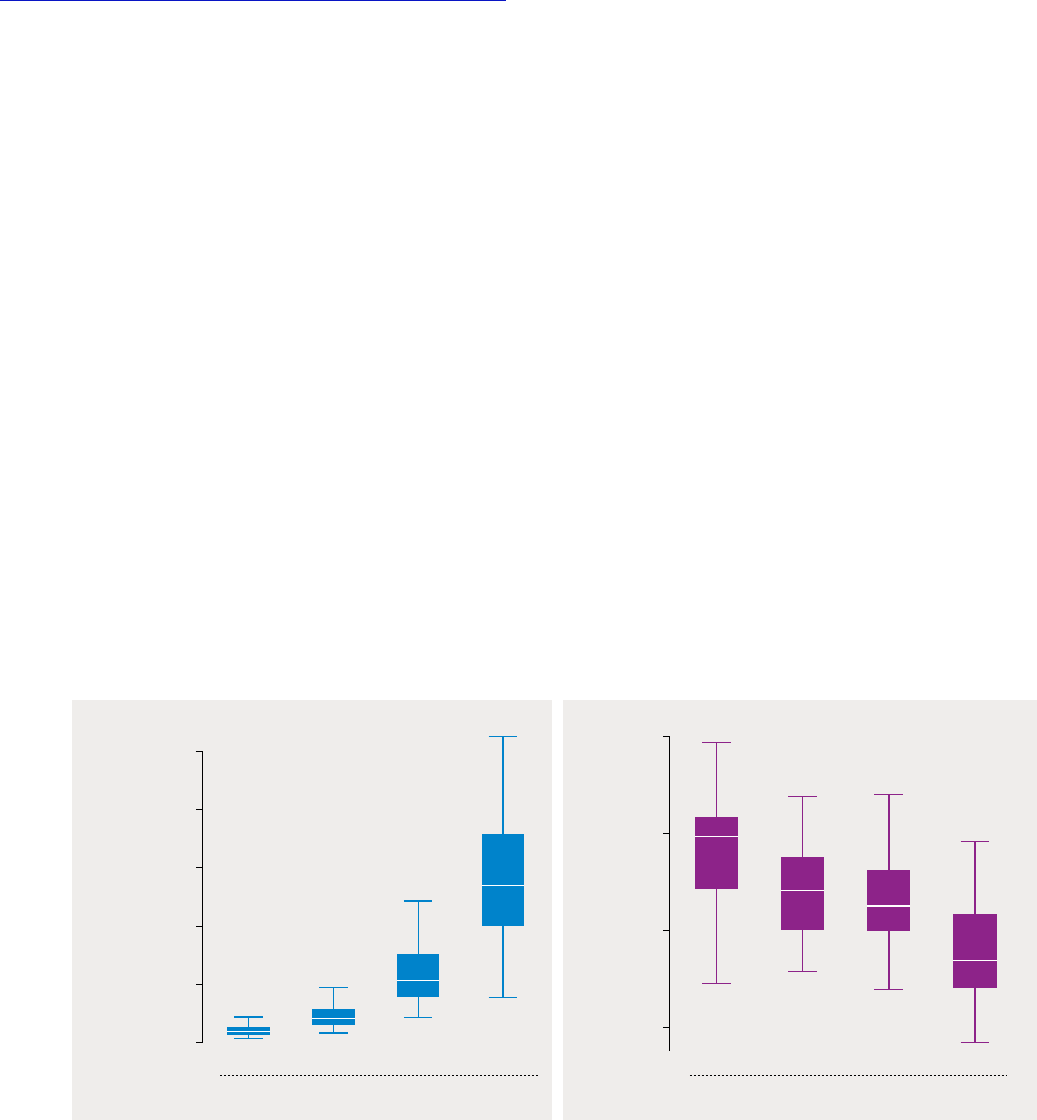
2100.
These changes threaten the very existence of
some Small Island Development States,
where the
livelihoods and basic infrastructure of many commu-
nities are vulnerable to sea level rise, ocean acidica-
tion and extreme weather events.
Social imbalances reflect the unequal distribution
of benefits and costs of planetary change
Social imbalances (reecting inequalities in human
development) result from a combination of existing
distribution of power and the unequal eects of dan-
gerous planetary change across countries and groups
of people within countries. The distribution of power,
which determines the ability to take advantage of ex-
isting planetary resources, denes who benets from
behaviour that drives planetary pressures, and the
unequal eects of the resulting planetary changes de-
termine the distribution of the costs.
A human secu-
rity lens helps capture both.
Low Human Development Index (HDI) countries
will face the strongest negative eects of danger-
ous planetary change across multiple dimensions,
both because of direct impact and because of limit-
ed adaptation capacity. And within countries many of
those living in already marginal and vulnerable con-
texts will tend to fare worse.
Higher HDI countries, in turn, are likely to expe-
rience climate change very dierently. There will be
changes in weather patterns, with some substantial
negative eects for parts of the population. But the
actual risk to people will, on average, be much lower
than in developing countries. The typical developed
country might experience reductions in some dan-
gerous hazards, as in the number of days with ex-
treme temperatures.
The capacity to adapt to the
eects of climate change is much greater in wealth-
ier countries than in poorer countries. This depends
on income and on enhanced capabilities, linked to
access to technological advances, education and in-
frastructure. In all these areas global inequalities are
already enormous. And some of the gaps in these en-
hanced capabilities are widening.
“
While the distribution of costs and
benets is asymmetric across countries, no
country is immune to the human security
implications of the Anthropocene context
The contribution to planetary pressures by very
high HDI countries is already large and still growing.
It is much larger than the contribution of lower HDI
countries
(gure 2.2, left panel). The distribution of
planetary pressures — the emissions of carbon diox-
ide and the consumption of material resources — is
Figure 2.2 The destabilizing dynamic of climate change: More developed countries tend to capture more
benefits from planetary pressures and less of their costs
Source:
Index of Planetary Pressures value, 2019
(based on carbon dioxide emissions and
material footprint per capita)
–50
0
50
100
0.250
0.200
0.150
0.100
0.050
0
Human Development Index group
Low Medium High Very high
Number of additional extreme temperature
days, above average (1986-2005)
Human Development Index group
Low Medium High Very high
48 NEW THREATS TO HUMAN SECURITY IN THE ANTHROPOCENE / 2022
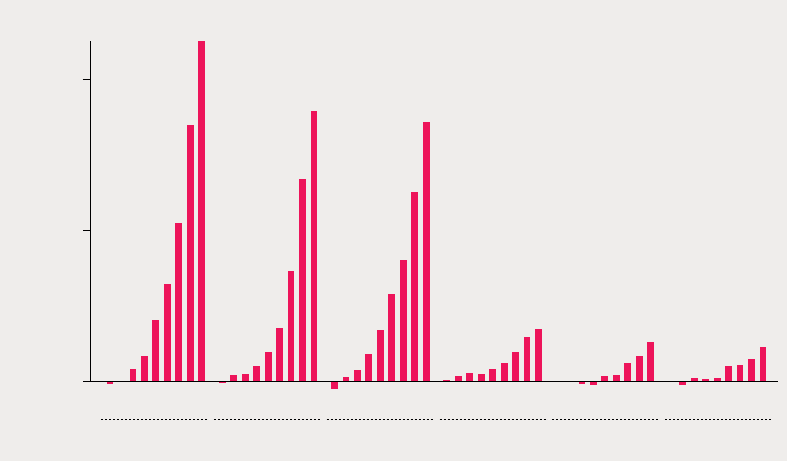
unequally distributed in favour of higher HDI coun-
tries. As an indicator of the impact of dangerous plan-
etary change, consider the additional days of extreme
temperatures (gure 2.2, right panel). When it comes
to bearing the consequences, countries with fewer
resources to adapt, with lower HDI values, bear the
brunt of the costs.
“
When planetary imbalances interact
with intersecting horizontal inequalities,
they can reinforce historical patterns of
disempowerment directly linked to recognitional,
procedural and distributional inequities
Climate change has increased annual econom-
ic growth in richer countries with colder temperate
climates while reducing economic growth in poorer
countries with warmer climates. The estimated net
eect is a 25 percent larger gap between the top and
bottom deciles of the country-based income dis-
tribution than in a world without climate change.
These asymmetries are central when considering the
human security benets of acting now to curb climate
change, which can be huge in countries in the Arab
States, South Asia and Sub- Saharan Africa (gure 2.3).
While the distribution of costs and benets is
asymmetric across countries, no country is immune
to the human security implications of the Anthropo-
cene context. The eects are widespread, multiple
and interlinked. A disaggregated view can uncov-
er how some areas of developed countries face high
mortality risks due to climate change and how some
territories in developing countries face low mortali-
ty risks (gure 2.4). Moreover, territories with limit-
ed exposure to some risks, such as mortality (Florida
in the United States and the west coast of India), can
face high vulnerability to other threats, such as ood-
ing and rising sea levels.
Within countries, group-based inequalities are im-
portant in dening the impacts of the Anthropocene
context on people (see chapter 5). When planetary
imbalances interact with intersecting horizontal in-
equalities, they can reinforce historical patterns of
disempowerment directly linked to recognitional,
procedural and distributional inequities.
For recog-
nitional equity women and indigenous peoples face
barriers to land ownership linked to identities and
traditional social norms. For procedural equity the
unequal distribution of impacts from planetary im-
balances exacerbates exclusion and discrimination,
as with polluting industries locating in areas where
Black people or indigenous peoples live. For distri-
butional equity dierent groups face unequal ac-
cess to resources and unequal impacts of planetary
Figure 2.3 Increasing asymmetries—net lives saved by mitigation
Note: Comparisons are between Representative Concentration Pathways 4.5 and 8.5. Aggregates are weighted by population.
Source:
0
50
100
Arab States Sub-Saharan
Africa
South
Asia
East Asia
and Pacific
Latin America and
the Caribbean
Europe and
Central Asia
2020
2030
2040
2050
2060
2070
2080
2090
2099
2020
2030
2040
2050
2060
2070
2080
2090
2099
2020
2030
2040
2050
2060
2070
2080
2090
2099
2020
2030
2040
2050
2060
2070
2080
2090
2099
2020
2030
2040
2050
2060
2070
2080
2090
2099
2020
2030
2040
2050
2060
2070
2080
2090
2099
Regional simulations of deaths averted by mitigation
(lives potentially saved, per 100,000 inhabitants)
49
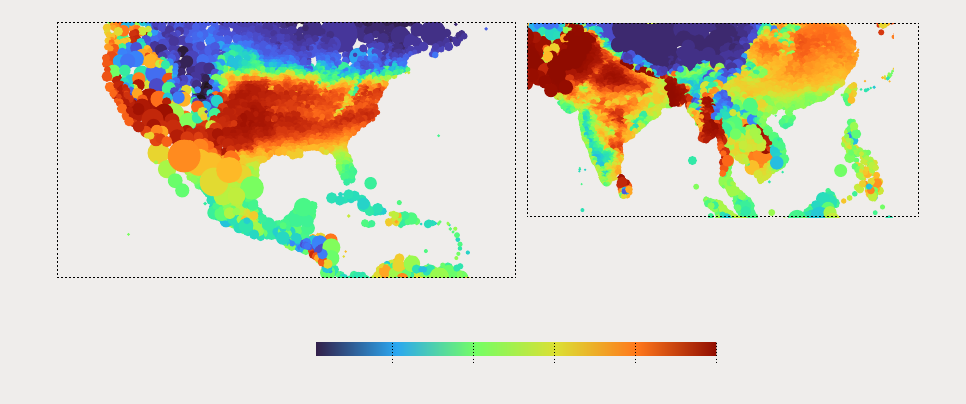
imbalances, as with the large percentage of women
facing water shortages, low human development and
high gender inequality (gure 2.5).
The next section drills down in more detail on how
the Anthropocene context is compounding threats
to human security on several dimensions. While cli-
mate change is a focal point, the discussion suggests
not only the intrinsic importance of this particular
challenge but also the broader implications of the An-
thropocene context for human security. In addition,
climate change interacts with biodiversity loss, nat-
ural hazards and pollution, all with compounding ef-
fects on human security.
Compounding threats
to human security
The impacts of the Anthropocene context on peo-
ple’s lives are yet to be fully understood, but there
is emerging evidence on their likely eects through
multiple dimensions that aect human development
and human security.
From a risk perspective (based on the combina-
tion of hazard, exposure and vulnerability), the An-
thropocene context presents a new reality.
First,
the baseline of hazards is changing, given the scale
of climate change, biodiversity loss and environmen-
tal degradation just described. Second, the exposure
patterns are shifting. The Covid-19 pandemic — likely
a zoonotic disease, one of several to emerge or re-
emerge this century alone — shows the broad implica-
tions of the possibility of facing ever more systemic
negative surprises. Third, because of the change in
hazards and exposure patterns and the limited
knowledge of potential new events and their prob-
abilities, societies are ill-prepared for this complex
new reality.
Threats to human security in the Anthropocene
context are multidimensional, because they aect
people through multiple channels, many of them
yet to be fully understood; interconnected, because
they interact as part of self-regulating planetary sys-
tems, including interactions between ecosystems
and social systems; universal, because they have
global — though unequally manifested (see the next
characteristic) — reach; and unequally distributed,
because their eects are geographically asymmetri-
cal and the impacts on people are mediated by ex-
isting social, economic and political structures. The
following sections discuss the eects of Anthropo-
cene-related threats on some dimensions of human
security, including those associated with disrup-
tions to food systems, heightened health threats,
ampliers of the drivers of tensions and violent
conict, and threats to economic production and
productivity.
Figure 2.4 The distribution of mortality risks caused by climate change is expected to be unequal between and
within countries
Note: Data are for 2080–2099 and refer to Representative Concentration Pathway 8.5.
Source:
20
40
60
80
100
Mortality Risk Index
50 NEW THREATS TO HUMAN SECURITY IN THE ANTHROPOCENE / 2022

“
After two decades of progress, the number
of people aected by hunger has increased
from a low of 607million in 2014. The
estimate for 2020 ranges from 720million
to 811million, reecting the considerable
eect of the Covid-19 pandemic
Threats disrupting food systems
After two decades of progress, the number of people
aected by hunger (undernourishment) has increased
from a low of 607 million in 2014. The estimate for
2020 ranges from 720 million to 811 million, reect-
ing the considerable eect of the Covid-19 pandemic
(gure 2.6). So, the world is getting further away from
the goal of Zero Hunger by 2030.
This trend is also
evident with a broader denition of food insecurity:
in 2020, 2.4 billion people were moderately or severe-
ly food insecure, up 44 percent (or 723 million people)
from 2014. In 2020 alone more than 300 million people
became aected by food insecurity. In 2019, 7.9 mil-
lion people died because of dierent forms of dietary
risks.
Changes in environmental factors alone, even
when they have implications for food supply, do not
determine food access and use. A complex set of com-
pounded environmental and social factors (in the An-
thropocene context) underpins these changes,
with
eects that can intensify in the future. The main argu-
ment here is that the Anthropocene context presents
new threats to human security through a range of in-
terlinked factors that aect food entitlements (ranging
from loss of purchasing power, through a combination
of higher food prices and lower incomes, through the
erosion of social and political support for vulnerable
communities in the face of multiple demands for at-
tention and to the sheer uncertainty and novelty of
some environmental conditions that underpin food
production, distribution, access and use).
Changes in temperature and precipitation have al-
tered land quality and crop yields. Intense and fre-
quent extreme events pose a threat not only to the
production and distribution of food but also to the
Figure 2.5 A large fraction of the population facing water shortage lives in subnational territories with low Human
Development Index values and high gender inequality
Note: Bubble size represents the population facing water shortage in each subnational area.
Source: Human Development Report Office based on City University of New York/Human Development Report Office project.
Gender Development Index group
0.200 0.400 0.800 1.0000.600
Human Development Index value
5
4
3
2
1
(High gender gap)
(Low gender gap)
51
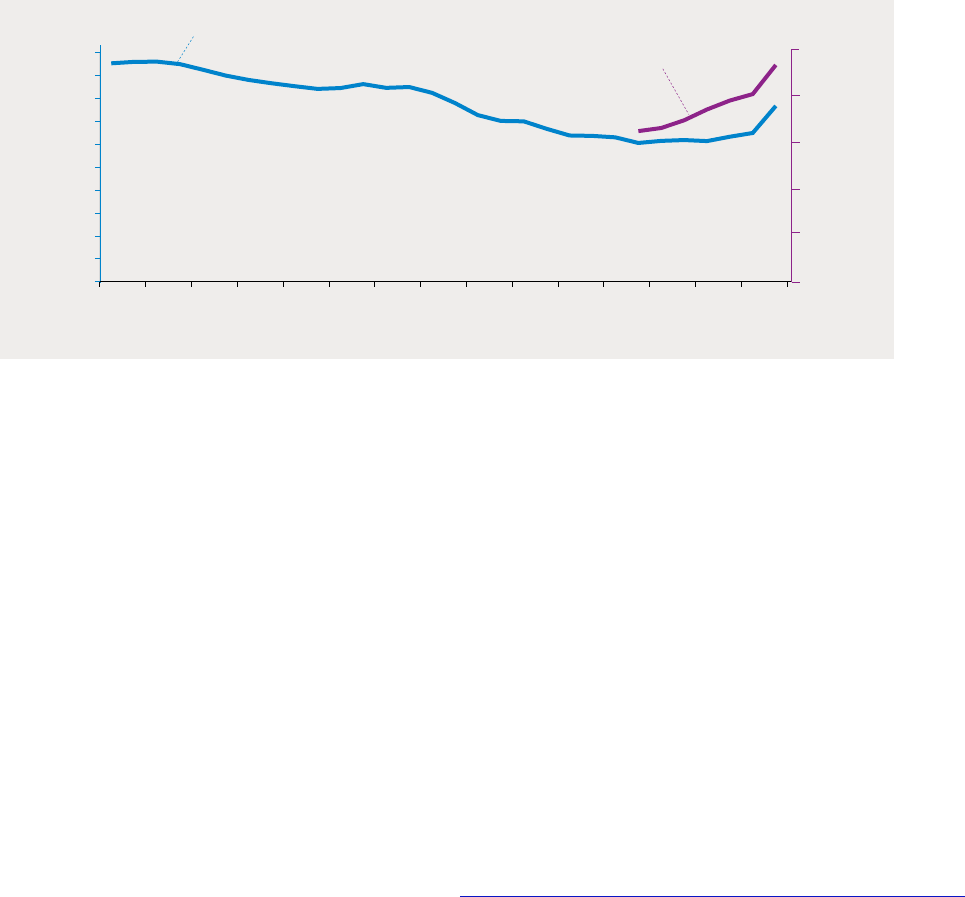
livelihoods of a large number of people engaged in
agriculture — in particular, the approximately 3 billion
people living on 500 million small farms in low- and
middle-income countries.
Small Island Develop-
ing States experience a higher frequency of disasters
than the rest of the world and tend to be more wa-
ter-scarce than other regions — climate change is ex-
acerbating both of these challenges.
Climate change is already aecting crop production,
with an average annual reduction of 1 percent in con-
sumable food calories from the top 10 global crops.
And estimated availability of calories has fallen in
nearly half of food-insecure countries.
Climate var-
iability has reduced income and increased food inse-
curity in Ghana and Ethiopia, which have a large share
of employment in the agricultural sector.
In Bangla-
desh and India crop yields have fallen due to temper-
ature changes.
Smallholder farmers in drier regions
are particularly aected by climate variability, because
they depend primarily on rainfed agriculture.
Below
normal rainfall is worsening the pre-existing drought
conditions, and delayed heavy rainfall is ooding
some areas.
Therefore, variability in temperature and
precipitation, as well as more frequent natural haz-
ards, exacerbates threats to human security.
“
Crop diversity is declining; thecontraction
of agrobiodiversity increases people’s
vulnerability to extreme temperatures
and weather events, diseases and
pathogens, and crop failures
Crop diversity is declining, with considerable ef-
fects on food security and resilience to disasters.
Although our species has evolved to consume more
than 7,000 species, today just 3 — wheat, rice and
maize — provide more than half of our plant-derived
calories.
Genetic diversity within species is also de-
clining.
Taken together, this contraction of agrobio-
diversity increases people’s vulnerability to extreme
temperatures and weather events, diseases and path-
ogens, and crop failures (box 2.2).
Climate change also drives notable changes in
oceans, increasing surface temperature, acidication
and sea level rise. Countries that depend heavily on
sheries for protein intake and employment are ex-
posed to these threats.
New and heightened health threats
The Anthropocene context has multiple eects on
health.
Biodiversity loss and land use changes can in-
crease disease transmission.
For example, the Ebola
outbreak in West Africa resulted from the transmission
of viruses from wild animals to humans that spread in a
context of deforestation and great population density.
Forest loss in Bangladesh has drastically reduced native
habitats of fruit bats, which has increased the chances
of virus spillover between bats and humans.
And Am-
azon rainforest deforestation has increased malaria
transmission in Brazil: a 10 percent increase in deforest-
ation led to a 3.3 percent increase in malaria incidence.
Figure 2.6 Hunger and food insecurity are on the rise
Source:
500
1,000
1,500
2,000
2,500
100
200
300
400
500
600
700
800
900
1,000
1991
1992
1993
1994
1995
1996
1997
1998
1999
2000
2001
2002
2003
2004
2005
2006
2007
2008
2009
2010
2011
2012
2013
2014
2015
2016
2017
2018
2019
2020
Hunger (undernourished
people, millions)
Hunger (undernourished people)
Moderately or severely
food-insecure people (millions)
Moderately or severely
food insecure people
0
0
52 NEW THREATS TO HUMAN SECURITY IN THE ANTHROPOCENE / 2022

Long-term exposure of humans to air pollution
enhances the risk of cardiovascular and respiratory
diseases, reproductive and central nervous system
dysfunction, and cancer — increasing mortality and
reducing life expectancy.
Nearly 4.2 million deaths
occur every year due to ambient air pollution and
3.8 million due to smoke from dirty cookstoves and
fuels.
The global loss of life expectancy due to air
pollution is 2.9 years compared with a loss of 0.3 year
caused by violence.
This can be greatly reduced by
decreasing the net use of fossil fuels.
Globally an estimated 80 percent of industrial and
municipal wastewater is released into the environ-
ment without any treatment, with detrimental eects
on human health and ecosystems.
Heavy metals are
produced by industries and disposed into water bod-
ies without proper processing and treatment, expos-
ing humans and animals to pollution. For example,
commonly consumed sh in Bangladesh had various
levels of heavy metals, suggesting a link between the
consumption of these contaminated sh and cancer.
And around the Ankobra River in the Western Re-
gion of Ghana, sh contamination has exceeded the
suggested safe amount.
In addition, cholera and ty-
phoid can spread through contaminated water.
Plastic pollution has contributed to soil contamina-
tion, which can reduce the safety of food for humans
and many other organisms that depend on soil.
Hu-
mans are also exposed to microplastics via ingestion,
inhalation and dermal absorption, which can cause
several health complications. Microplastics may also
contain vectors for microorganisms and toxic chem-
icals that cause ill health.
High exposure to mi-
croplastics pollution can aect the central nervous
system and the reproductive system.
Climate change alone — beyond the eect of pol-
lution or zoonotic diseases — is expected to have
substantial eects on mortality. By 2100 the num-
ber of estimated deaths associated with climate
change (in a scenario with very high greenhouse
gas emissions)
could be comparable to those as-
sociated with some of the leading causes of death
today (gure 2.7).
Globally, under the assump-
tions of population growth of Shared Socioeconom-
ic Pathway 3 and with moderate mitigation, around
40 million people cumulatively might die because
of climate change in the 2020–2100 period. These
estimates consider current adaptation capacities,
which are notoriously insucient to avert signi-
cant deaths in the moderate mitigation scenario.
Box 2.2 Biodiversity loss, food security and disaster risk reduction
The sharp decline of pollinators due to pesticides and habitat loss, documented in numerous recent studies,
1
affects food security and nutrition around the world. Of the leading global food crops directly consumed by
humans and traded on the global market, 85 percent rely on animal pollination. Without pollinators, production
of some of the leading global crops would decrease by as much as 90 percent.
2
The decline of pollinators affects
not only absolute food supply but also the availability of nutrients. Pollinated crops account for 35 percent of
global food production, more than 90 percent of available vitamin C and more than 70 percent of available
vitamin A.
3
Forests contribute to global food security, as wild foods harvested from forests provide a wide range of nutri-
ents and micronutrients.
4
Wild animals, or bush meat, provide more than 6 million tons of food to communities
in the Congo and Amazon basins alone.
5
Yet tropical forest loss is large: since 2002 the world has lost more than
60 million hectares of tropical forest.
6
Biodiversity loss also has consequences for disaster risk. Increased diversity among species in an ecosystem
generates diverse physical and biological traits and supports ecological resilience and the protective function of
ecosystems. For instance, seagrass ensures the generation of oxygen and improves water quality by capturing
sand, dirt and silt particles. Its roots trap and stabilize sediment, reducing erosion and buffering coastlines
against storms.
Source:
Notes
1.Soroye, Newbold and Kerr 2020. 2.Potts and others 2016. There were 13 crops in this category: atemoya, Brazil nut, cantaloupe, cocoa, kiwi,
3.FAO 2019. 4.Sunderland and others 2013. 5.Nasi, Taber and Van Vliet 2011. 6.Weisse and Dow Goldman 2020.
53
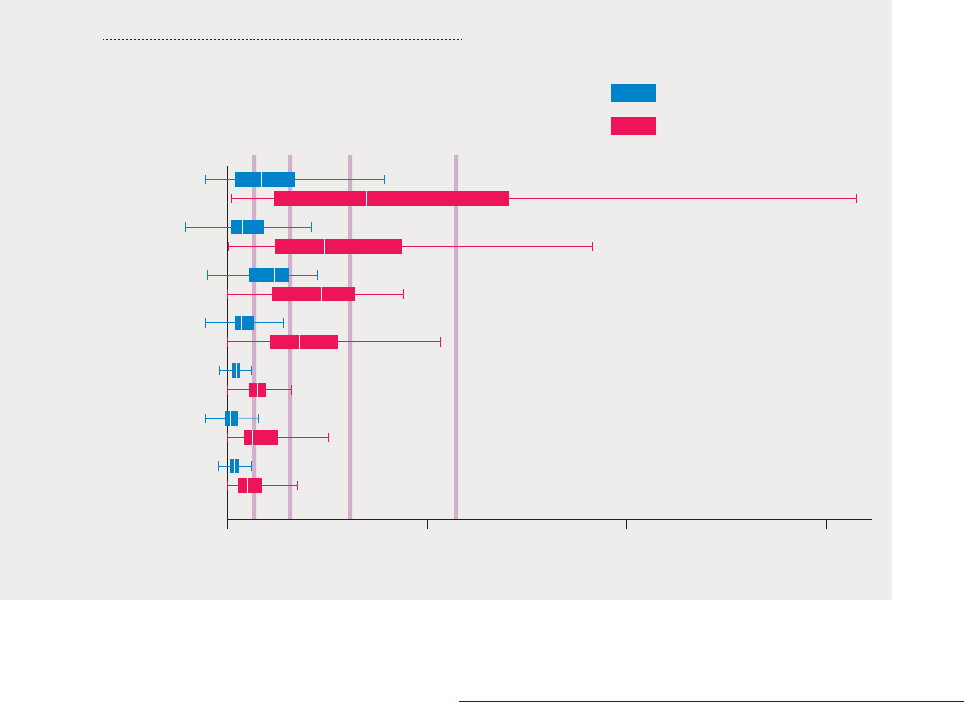
Under a very high greenhouse gas emissions sce-
nario the projected net cumulative deaths during
the same period because of climate change could
surpass 190 million.
The climate change burden of disease is expected
to be greatly unequal. Most territories — with an esti-
mated 80 percent of the world’s population — are ex-
pected to see major increases in death rates.
In some
localities in the Arab States and Sub- Saharan Africa,
death rates due to climate change might surpass to-
day’s leading causes of death (cancer and heart dis-
ease). Meanwhile, the other territories that make up
the remaining 20 percent of the world’s population
are expected to record lower net death rates because
of a reduction in extremely cold temperatures.
“
By 2100 the number of estimated deaths
associated with climate change could be
comparable to those associated with some
of the leading causes of death today
Threats exacerbating tensions and violent conflict
The Anthropocene context might be a threat ampli-
er and multiplier behind a new generation of con-
icts.
Human-driven pressures on the planet are
producing a warmer climate, a more volatile natu-
ral environment prone to climate shocks and dam-
aged ecosystems with reduced resilience and fewer
services to humans, some of which were document-
ed above. Volatility in weather patterns, shocks to
food supply and distribution, and land and resource
scarcity — typically interacting with horizontal ine-
qualities and contestation of political power — have all
been linked to heightened conict risks.
While a changing natural environment may in-
crease tensions, it is the interlinkage with structural
development challenges, socioeconomic-political
conditions and horizontal inequalities with atten-
dant power imbalances that tends to trigger conict.
Recent meta-analyses and reviews nd that climate
Figure 2.7 In a very high emissions scenario some regions of the world might face climate change–
induced mortality rates similar to those of the main causes of deaths today
Note: RCP is Representative Concentration Pathway. Includes only areas with increased mortality due to climate change, home to more than
80 percent of the global population.
Source: Human Development Report Office based on Carleton and others (2020) and data from the World Health Organization.
0 600200 400
Deaths per 100,000 people
Arab States
Sub-Saharan Africa
Developed
South Asia
East Asia and Pacific
Europe & Central Asia
Latin America
and the Caribbean
Moderate emissions, RCP 4.5
Very high emissions, RCP 8.5
Malignant neoplasms (cancer)
Cardiovascular diseases
Infectious and parasitic diseases
Neurological conditions
Main causes of death today
54 NEW THREATS TO HUMAN SECURITY IN THE ANTHROPOCENE / 2022

change, particularly through warming temperatures
as well as precipitation changes, is coupled with
heightened conict risks.
But violent conict out-
breaks are channelled through socioeconomic-polit-
ical conditions, and they are manifested in horizontal
inequalities, deprivation and exclusion of particular
groups, and power imbalances between parties to
the conict.
Violent conict itself may also contrib-
ute to dangerous planetary change, directly through
attacks on the natural environment or indirectly
through diversions of political attention and resourc-
es.
Focusing on the interlinkages helps detect blind
spots in the ongoing policy debate that might add to
the factors explaining the development–human secu-
rity gap described in chapter 1.
“
While a changing natural environment
may increase tensions, it is the interlinkage
with structural development challenges,
socioeconomic-political conditions and
horizontal inequalities with attendant power
imbalances that tends to trigger conict
Climate-related hazards, such as large-scale ood-
ing, can increase political unrest
and instigate vio-
lent conict when interacting with political exclusion
of and deprivation among certain groups.
The cli-
mate change–conict interrelationship may be par-
ticularly relevant in developing countries with large
agricultural sectors that depend heavily on rainfall
and environmental conditions, coupled with low eco-
nomic diversication. In these settings droughts,
changes in precipitation
and dry spells during crop
growing seasons
increase conict risks as liveli-
hoods are threatened and food prices surge,
and
food insecurity increases as asset prices drop, leading
to a loss of entitlements to food and other resources.
Coupled with horizontal inequalities and perceptions
of injustice, stressors such as reduced incomes or in-
creased competition can fuel uprisings — and may es-
calate to violent conict.
Conicts compound with food insecurity, deterio-
rated livelihoods and other eects of climate change,
driving the forcible displacement of people.
Ac-
cording to the United Nations High Commissioner
for Refugees, about 9 of 10 refugees come from the
countries most vulnerable to the impacts of climate
change. These countries also host about 70 percent
of all people internally displaced by conict and vi-
olence.
In 2020, 40.5 million people were added to
the global population of internally displaced people
(almost 10 million because of conict and violence), a
number expected to continue to increase (gure 2.8).
Forcibly displaced people — no matter the cause: con-
icts, violence, disasters or a combination — face mul-
tiple human security threats in their place of origin
and in host locations (see chapter 5).
Academic and policy debates on the climate– security
nexus have focused mostly on fragile contexts and
low-income and developing countries. Yet the An-
thropocene context is universal, and climate-related
conict and violence can occur across countries at all
incomes. For example, there is an association between
high temperatures and short-run increases in crime in
high-income contexts, suggesting that a higher tem-
perature can elevate discomfort and boost hostility and
violence. A recent study of climate change and inter-
personal violence in 57 countries found that each Celsi-
us degree increase in annual temperatures is associated
with a nearly 6 percent average increase in homicides.
A warming climate also has strong geopolitical impli-
cations, as power balances may shift and new rivalries
may develop over, for example, rare earth minerals that
are crucial for low-carbon technologies, aecting coun-
tries globally.
This illustrates the broader set of threats
to human security in the Anthropocene context.
Threats to economic production and productivity
The Anthropocene context is aecting human security
by challenging both the expansion of human develop-
ment and the ability to reduce pressures on the plan-
et. It is already eroding some foundations of economic
productivity, directly aecting more than just the fac-
tors of production (labour, natural capital and physical
capital). The threats to economic productivity have im-
plications for dimensions of human security linked to
income, employment and economic prospects.
The Anthropocene context has — through climate
change, natural hazards and pollution — reduced not
only people’s ability to learn and live healthy lives
(the direct impact on health was discussed above),
intrinsically important from a human development
perspective, but also the foundations for econom-
ic production and, in particular, improvements
55
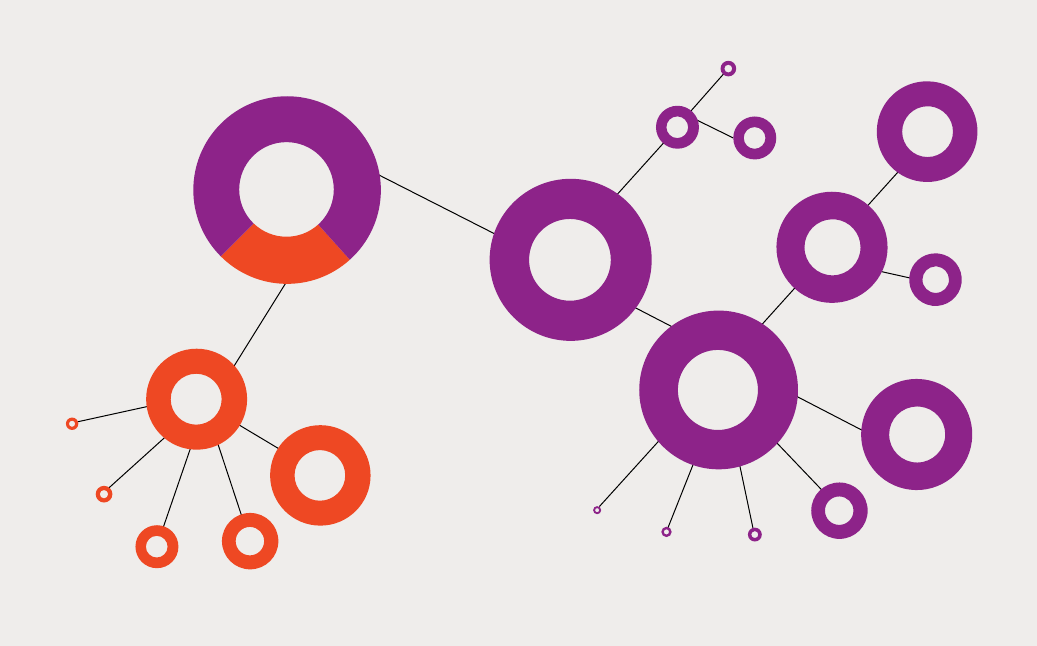
in economic productivity. Short-run temperature
changes can impair cognitive performance.
High
temperatures inhibit learning, with disproportion-
ate impacts on minority students.
Exposure to high
temperatures around the time of birth can have long-
term consequences for educational attainment and
earnings.
And exposure to pollution in childhood
has been linked to poorer education performance
and long-term reductions in human capital.
“
Academic and policy debates on the climate–
security nexus have focused mostly on fragile
contexts and low-income and developing
countries. Yet the Anthropocene context is
universal, and climate-related conict and
violence can occur across countries at all incomes
Climate change is increasing the frequency of ex-
treme weather events. Given that disasters can aect
education and health outcomes, this can erode labour
productivity.
School enrolment often drops follow-
ing a disaster, and child labour increases.
After the
1988 earthquake in Nepal, children born in districts
severely aected by the disaster were 14 percent less
likely to complete middle school and 10 percent less
likely to complete high school.
Only children from
high caste groups were able to mitigate this negative
shock in the long run, widening the gap in human
capital between low and high caste groups.
Climate change also has an impact on worker pro-
ductivity and labour supply through health impacts.
The Arab States, South Asia and Sub- Saharan Afri-
ca are worst aected by heat stress–induced reduc-
tions in worker productivity (gure 2.9, left panel). In
Australia absenteeism and reductions in work per-
formance caused by heat stress generated $655 per
person in annual cost, amounting to 0.33–0.47 per-
cent of GDP.
In Guangzhou, China, an increase in
daily maximum wetbulb globe temperature (a meas-
ure of heat stress) was associated with a higher risk of
Figure 2.8 The Anthropocene context affects forced internal displacements
Source: IDMC 2021.
40.5m
Geophysical
Total new
displacements in 2020
7.5m
Armed
conflict
1.2m
Other
208,000
Violence
(political)
137,000
Violence
(criminal)
9.8m
655,000
30.7m
694,000
Violence
(communal)
988,000
Other
storms
14m
Floods
14.6m
Storms
137,000
Earthquakes
102,000
Landslides
46,000
Extreme
temperatures
Weather
related
Disasters
Conflict and
violence
32,000
Droughts
30m
518,000
Volcanic
eruptions
13.6m
Cyclones,
hurricanes,
typhoons
1.2m
Wildfires
56 NEW THREATS TO HUMAN SECURITY IN THE ANTHROPOCENE / 2022
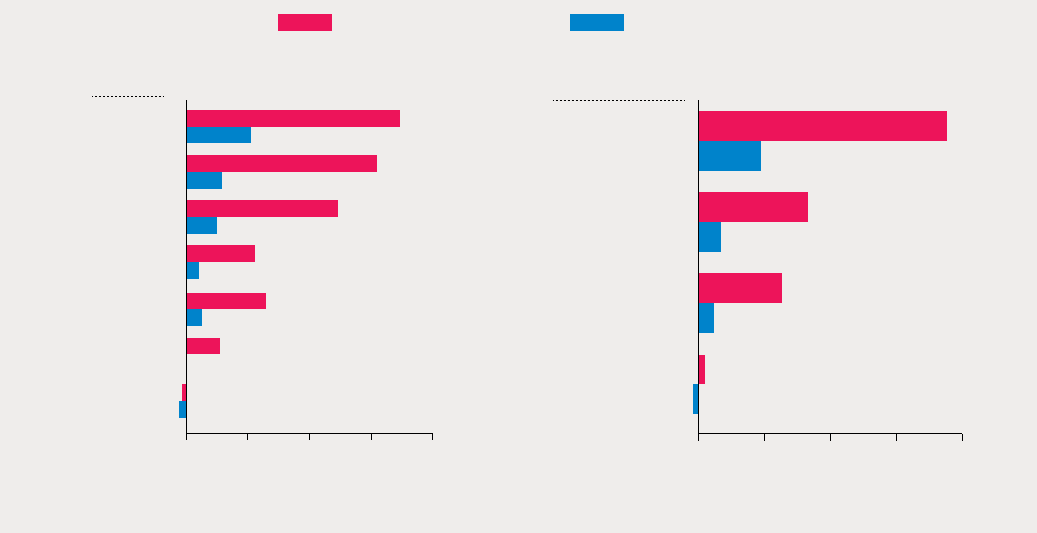
work-related injuries.
Under a very high emissions
scenario declining labour productivity is predicted
to reduce global gross domestic product (GDP) by
1.5 percent towards the end of the century relative to
the reference scenario with no climate change.
The
impact of higher temperatures is expected to reduce
purchasing power in Europe and the United States,
but the strongest impacts would be felt in low and
medium HDI countries (gure 2.9, right panel).
“
The Anthropocene context is aecting
human security by challenging both the
expansion of human development and the
ability to reduce pressures on the planet
In some settings climate change is contributing
to reallocations of labour supply. In India warmer
temperatures have contributed to lower agricultur-
al productivity and a shift in labour to nonfarm sec-
tors.
Individuals whose livelihoods and incomes
are endangered by climate change may also turn
to migration. In rural Mexico wage laborers in poor
rural households were most vulnerable to extreme
heat. Extreme heat has reduced the probability, in the
short run, that a person works locally and increased
the probability of migration to urban areas or abroad.
Natural systems — in addition to providing food,
water, fuel and other material goods — provide wider
ecosystem services such as watershed protection,
pest regulation, climate control and hazard mitiga-
tion. And in many parts of the world, natural systems
are of social, cultural and spiritual value to people.
But natural capital (understood as the contribution of
nature to people, recognizing that there many other
reasons for why nature should be a matter of con-
cern) is being rapidly depleted.
In 123 countries an
increase in wealth between 1990 and 2014 was ac-
companied by a decline in natural capital.
The loss
of natural capital is evident in deforestation,
land
degradation
and the global depletion of sh stocks.
Some forms of natural capital help protect people
from disasters, and their loss therefore heightens
vulnerability to natural hazards. For example, man-
groves provide protection from coastal ooding, but
mangrove forests have declined globally.
By one es-
timate the loss of mangroves would result in 15 mil-
lion more people facing oods around the world,
with Small Island Developing States among those
Figure 2.9 Climate change is expected to affect’s people ability to work
Note: Aggregates are based on median values. RCP is Representative Concentration Pathway.
Source:
0 1 2 3 4
Developed
Europe and
Central Asia
Latin America and
the Caribbean
East Asia
and Pacific
South Asia
Sub-Saharan
Africa
Arab States
Very high emissions (RCP8.5)
Moderate emissions (RCP4.5)
0 1 2 3 4
Very high
High
Medium
Low
Human Development
Index group
Region
Climate change labor disutility by 2100
(percent of GDP)
Climate change labor disutility by 2100
(percent of GDP)
57
most vulnerable to mangrove loss.
Desertication
arising from climate change and other human ac-
tivity is set to diminish dryland ecosystem services
and reduce biodiversity.
Between 1982 and 2015
climate change contributed to the desertication of
about 5.43 million km
of land, aecting an estimated
213 million people, 93 percent of them in developing
economies.
Climate change is also aecting economic produc-
tivity through dierent demands for physical capital,
particularly in the energy sector. Energy production
and consumption are the source of three-quarters of
global greenhouse gas emissions, including from the
generation of electricity to regulate temperatures.
The net eect of climate change on energy de-
mand is undetermined, reecting the opposing forc-
es of reduced heating needs and increased cooling
needs.
But even if climate change reduces aver-
age global energy demand, some countries will face
substantial challenges. Higher temperatures will in-
crease demand for electricity, especially in warmer
places, such as the tropics and the southern regions of
China, Europe and the United States.
But in colder
regions, such as the Scandinavian countries, temper-
ate weather will reduce demand for heating.
There-
fore, the burden on increased energy demand falls
mainly on developing countries, which tend to de-
pend on fossil fuel for energy.
The limited adaptation capacity in poorer countries
will make their energy transition harder as they seek
to increase their productive capacity (to expand their
human development) because they will have to invest
more to get the same output. In a scenario with very
high emissions through 2100, the annual increase in
electricity consumption (relative to current consump-
tion) due to climate change is expected to be 1.8 per-
cent in the European Union and 2.7 percent in the
United States — but more than 2,000 percent in Nige-
ria.
Because of this asymmetry, navigating the chal-
lenges of expanding human development and easing
planetary pressures will be harder for the typical de-
veloping country.
“
The limited adaptation capacity in poorer
countries will make their energy transition harder
as they seek to increase their productive capacity
(to expand their human development) because
they will have to invest more to get the same output
Against this background, technology is evolving
rapidly, with the potential to increase economic pro-
ductivity, opening room for expanding human de-
velopment with lower planetary pressures. Energy
production might be decoupled from carbon dioxide
emissions through a mix of renewable sources (in-
cluding solar photovoltaics), new storage systems
(including lithium-ion batteries), complemented by
smart grids and technologies that capture and store
carbon dioxide.
Other advances can reduce materi-
al consumption — by improving eciency, enhancing
recycling and sharing resources.
In particular, the
digital transformation promises a more ecient use
of decentralized resources, through new algorithms,
blockchains,
platforms and sharing apps.
But as
chapter 3 discusses, some of these technologies can
have unintended consequences that might harm
human security.
Human security in the
Anthropocene context
Dangerous planetary changes that interact with glob-
al and local social imbalances result in wide inequal-
ities in people’s ability to survive and adapt to the
compounding eects of the Anthropocene context.
The planetary and social imbalances of the Anthro-
pocene overlap and interact with the main threats
described in part II, including health challenges, con-
icts, digital technologies and horizontal inequalities.
The Anthropocene context demands transforma-
tions in human security and development — to recog-
nize human embeddedness in nature and navigate
uncertainty and how to respond to these challenges
through the eyes of humankind.
Today’s approaches are far from adequate, as high-
lighted the recent Dasgupta Review and the 2020
Human Development Report.
Most security ap-
proaches have failed to consider the implications of
the embeddedness of social systems as part of Earth
systems in a context where human-induced planetary
pressures are driving dangerous planetary change.
This is the case of some narrow views of food securi-
ty, for instance. While livestock production is impor-
tant for food security in many developing countries,
mass meat production intended primarily for export
has contributed to deforestation and had adverse
58 NEW THREATS TO HUMAN SECURITY IN THE ANTHROPOCENE / 2022

health impacts, including increasing the probability
of zoonotic diseases.
Scientic work on Anthropocene risks (with a focus
on raising awareness of the scale of the problems) is
not fully informing the preparedness and crisis man-
agement work of multilateral, national and local in-
stitutions.
The eects of global changes are likely to
be increasingly heterogeneous both across countries
and within countries, as documented above, and this
knowledge beyond averages would need to be sys-
tematically considered when navigating the new con-
text of the Anthropocene.
The human security concept gains heightened rel-
evance in the Anthropocene context, as argued in
chapter 1, but also needs to be fully cognizant of this
new context. The compounding eects of Anthropo-
cene-related threats pose clear demands not only for
protection and empowerment strategies but also for
solidarity — recognizing that the security of people
across dierent parts of the world is connected, as is
the resilience of ecosystems and people.
“
In the Anthropocene context agency empowers
people to drive the transformations needed
to improve human security for everyone
As chapter 1 argues, agency is the critical node
bringing together human security strategies aimed
at protection, empowerment and solidarity in the
Anthropocene context. Across the globe there is
overwhelming support for the 2030 Agenda for Sus-
tainable Development, with most people agree-
ing that it is important to protect the planet, even if
this would mean sacricing income.
But this wide
agreement has not been enough to fully shift policy-
making: today, most of the consequential actions are
not in the hands of those willing and able to build se-
curer systems. Recognizing the centrality of agency
can help bridge this gap.
The centrality of agency in human security
strategies in the Anthropocene context
As argued throughout this Report, enhancing agen-
cy has benets beyond its direct eects in improving
the human security of groups excluded from or dis-
empowered in decisionmaking. In the Anthropocene
context agency empowers people to drive the trans-
formations needed to improve human security for
everyone.
Consider the transformative potential of enhanc-
ing the agency of indigenous peoples. Indigenous
groups are already greatly contributing to reduc-
ing planetary pressures.
Indigenous practices over
many generations have led to comparable or greater
biodiversity richness in indigenous lands today, even
compared with protected areas, as shown in Austral-
ia, Brazil and Canada.
Indigenous land tenure and
management have been critical to securing forest
carbon stores in the Amazon forests.
Indigenous
practices are being recognized to address the impacts
of severe wildres, as through prescribed burns.
The wealth of knowledge and experience within in-
digenous communities on coping with environmental
change is vital for shaping nature-based approaches
to human security, so our common security depends
on their empowerment. Indigenous practices focus
not only on stewardship of environment but also on
livelihoods, security and resilience of communities
amid change. These communities are thus well posi-
tioned to shape responses to human security threats.
But that requires protecting their rights and expand-
ing their agency.
An important starting point in this respect is pro-
tecting indigenous rights, including land tenure and
freedom from violence. Indigenous peoples’ initi-
atives to safeguard their ways of living have often
brought them into conict with powerful actors and
interests. Approximately 40 percent of environmen-
tal activists killed in 2019 were from indigenous
groups, and more than a third of fatal attacks be-
tween 2015 and 2019 targeted indigenous peoples.
Indigenous groups have often been excluded from
environmental movements. Biodiversity conserva-
tion campaigns focused on creating protected wil-
derness areas often involved displacement or forced
relocation of indigenous peoples from their territo-
ries.
Indigenous peoples have also been among
the hardest hit by development policies involving
large-scale modication of natural environments,
such as extractive industries. Moreover, indigenous
groups are exposed to the negative impacts of climate
change, due to their location in vulnerable areas and
their exclusion from decisionmaking.
In this con-
text indigenous activism goes beyond eorts against
59

degradation of nature and biodiversity loss to also ad-
vance human rights and justice.
“
The wealth of knowledge and experience
within indigenous communities on coping with
environmental change is vital for shaping nature-
based approaches to human security, so our
common security depends on their empowerment
Policies drawing on indigenous knowledge will be
most eective when they are open and accountable to
indigenous groups and take into account their long-
term marginalization. Supporting the direct contribu-
tions of indigenous communities, by promoting their
empowerment and their struggles for justice, is key to
advancing nature-based human security.
There is also a broad space for local communi-
ties. Involving local actors in policy responses to new
human security threats is crucial, not only because of
environmental justice considerations and the impli-
cations for their political capabilities
but also be-
cause local communities wield enormous strengths
and assets that are key to the success of strategies to
face Anthropocene-related threats. Local commu-
nities possess rst-hand knowledge of changes in
weather patterns, demographic characteristics, social
norms (including women’s roles in the community)
and skills, practices and resources that may reduce
vulnerability and increase adaptability to dierent
forms of risks.
Top-down plans that ignore these
local assets might not have such knowledge. Indeed,
case studies in Kenya, Myanmar, Pakistan and Sen-
egal have all demonstrated that local communities
are critical in monitoring local changes, contribut-
ing to early warning systems that help inform crop-
ping, farming practices and evacuation decisions and
minimizing economic losses and the loss of lives and
livelihoods.
Enhanced agency for the stewardship of nature
There are opportunities to promote human security
through actions that protect, sustainably manage and
restore natural or modied ecosystems, taking ad-
vantage of nature’s contributions to people.
Indeed,
human societies have shaped and sustained most of
terrestrial nature for much of the past 12,000 years.
Today’s biodiversity crisis stems primarily from the
fairly recent appropriation and intensifying use of land
once held and used sustainably by many societies.
These actions can scale up nature-based solutions
since their results and ability to respond to the mag-
nitude of today’s interlinked threats depend on their
systemic implementation. The broad framework of
nature’s contribution to people brings explicit mecha-
nisms to integrate diverse values in the decisionmak-
ing process, including both intrinsic and instrumental
valuation of nature services.
This can be a formi-
dable way of achieving both protection and empow-
erment, with initiatives that rely on the agency of
local communities, including historically disempow-
ered indigenous groups. Some of the following action
areas — with multiple co-benets — can help people
deal with the risks from natural hazards, enhance
water and food security and mitigate the eects of
climate change more broadly.
• Managing risks from natural hazards. Expanding
green areas can be eective in managing extreme
temperature risks in urban spaces, particularly the
risks of heatwaves.
Managing ecosystems is a tool
of disaster risk reduction: through the conservation
of vegetation to reduce the risk of landslides. And
dierent ecosystems — dunes, oodplains, forests
and mangroves, oyster and coral reefs, salt marsh-
es, wetlands — are natural defenders of shorelines
against storms, winds and erosion. They can also
contribute to food security, economic development
and carbon storage.
• Employing biodiversity for resilience. Diversity in
agricultural landscapes and crops is important for
the adaptive capacity of global food systems.
For
example, pollinator-mediated crops are crucial for
global nutrition and agriculture more broadly, and
strategies to stem pollinator decline will enhance
food security.
Moreover, diversity in species vari-
ety can make ecosystems more resistant to destabi-
lizing risks. For instance, plant species with varying
types of roots (in thickness, depth and orientation)
planted on erosion-prone slopes can protect against
soil slippage and landslides.
• Improving water availability and quality. The manage-
ment of natural wetlands, soil moisture and ground-
water recharge are some sustainable nature-based
approaches for water availability.
In cities catch-
ment management and green infrastructure can
60 NEW THREATS TO HUMAN SECURITY IN THE ANTHROPOCENE / 2022

help ease pressure on water supply. For water quality
nature-based solutions oer alternatives to existing
“end of pipe” water treatment approaches. For
instance, constructed wetlands mimic natural sys-
tems for ltering runo rainwater and can remove
up to 88 percent of suspended solids, 92 percent of
organic matter, 46–90 percent of phosphorus and
16–84 percent of nitrogen from water,
as well as
pathogens.
These initiatives should be part of
blended approaches (combining green and grey in-
frastructure) to adequately respond to water security
threats in the 21st century.
“
Adaptation to ongoing dangerous
planetary change needs to be enhanced
with a global view; otherwise, there is the
risk that inequalities will continue to widen,
creating human crises at the local level and
humanitarian crises at the international level
• Enhancing food security. Forestry and agricultural
activity, which support the global food supply, are
vulnerable to climate change and biodiversity loss.
Nature-based agricultural practices that support
food security include regenerative agriculture
(increasing soil fertility and productive capacity
over time), agroforestry (growing crops on land
interspersed with trees) and silvopasture (integrat-
ing trees, forage pasture and grazing livestock on
the same land).
These initiatives strengthen the
resilience of agricultural ecosystems, support bio-
diversity and benet farmer livelihoods.
• Contributing to climate change mitigation. It is possi-
ble to contribute to climate change mitigation while
also beneting communities and ecosystems.
A
systemic approach can deliver global outcomes:
a group of 20 cost-eective actions across forests,
wetlands, grasslands and agricultural lands could
provide 37 percent of the global mitigation needs
of this decade to keep temperature rise below the
2 degrees Celsius threshold.
Indigenous peoples
and local communities have made important con-
tributions to climate mitigation by protecting forest
areas. Forest conservation eorts, particularly
in biodiversity hotspots, could be implemented
alongside, but faster than, the transition from fossil
to renewable fuel.
Other nature-based solutions
include wetland restoration and agroforestry.
Solidarity — beyond protection and empowerment
The self-reinforcing cycle between dangerous plan-
etary changes and social imbalances lies behind
climate change and biodiversity loss and other chal-
lenges that continue to be addressed primarily in a
piecemeal way. Social imbalances are often linked
to cross-national inequalities.
Adaptation to on-
going dangerous planetary change needs to be en-
hanced with a global view; otherwise, there is the
risk that inequalities will continue to widen, creating
human crises at the local level and humanitarian cri-
ses at the international level. And, similarly, actions
to ease planetary pressures could build on the Paris
Agreement to widen coordination mechanisms to re-
duce greenhouse gas emissions with a renewed sense
of urgency and purpose. Binding state-contingent
agreements could oer an eective mechanism to
link global crisis response action (providing nance
to cope with major shocks, wherever they occur) with
mitigation eorts (incentives to penalize in the future
the failure to act today).
An important element in driving the policy and
broader behaviour response needed to ease plan-
etary pressures is the availability of data-for-hu-
man-security around Anthropocene-related threats.
Understanding the complexity of human security
challenges — interconnected, multidimensional and
universal, with heterogeneous eects on people —
depends on disaggregated and forward-looking esti-
mates of the eects of the Anthropocene context on
the planet and on people. In addition, the changing
nature of threats requires the ability to progressively
develop policy-sensitive scenarios for policymaking.
As part of the project behind this Report, the United
Nations Development Programme is working with the
Climate Impact Lab to produce a pilot platform that
will provide scenarios of the eects of climate change
on people everywhere for the next eight decades.
Moreover, the benchmark for measuring devel-
opment should evolve to reect the embeddedness
of people as part of nature. The 2020 Human Devel-
opment Report introduced the Planetary Pressures-
adjusted Human Development Index to shift the
coordinates for public policies. This new index is a
contribution to help reimagine the human develop-
ment journey as one that expands human freedoms
while easing planetary pressures.
61
“
A strong common narrative of universal
reach based on solidarity and enhanced agency
at the local level can be a powerful device
to successfully address human security
Achieving global goals depends on local action.
Some of the challenges examined in this chapter are
monumental, to such an extent that not even the most
powerful nation-states or private corporations can
tackle them alone. Coordination and cooperation to
tackle many of them have proven dicult. If not even
the most powerful entities can address the threats to
human security in the Anthropocene context, what is
left for those with little power to do so? It is unsurpris-
ing to see, therefore, manifestations of disbelief and
alienation. There is, however, a dierent perspective:
by linking global challenges with local action, it is pos-
sible to articulate a new perspective on human secu-
rity.
Like taxpayers’ demands for accountability in
the use of their contributions, people working actively
for human security in their community not only con-
tribute to local change but also can hold more prom-
inent players accountable. This is how community
resilience can be built up in the face of challenges.
The Covid-19 pandemic provides examples of
this in action everywhere. As people did their part
(following quarantines, waiting in line for vaccines),
they put pressure on those who used their privileges
to depart from social norms. A strong common nar-
rative of universal reach based on solidarity and en-
hanced agency at the local level can be a powerful
device to successfully address human security. And
there is space for action based on shared aspirations:
solidarity underpins the recognition of the equal
worth of all human beings across generations, geog-
raphies and cultures, but in the Anthropocene con-
text it is also crucial to recognize the intrinsic value of
nature to mobilize action and send strong signals to
decisionmakers.
This means that people can play more active roles
as agents of change, as discussed in the 2020 Human
Development Report. Relying only on market or gov-
ernment mechanisms misses the power of decen-
tralized action. Cultural change can happen — and
fast — when there is a clear sense of purpose and an
alignment of beliefs.
Again, the Covid-19 pandem-
ic showed that people can change their behaviour in
dramatic ways.
The new generation of human se-
curity depends on unleashing the transformation-
al power of local agents in the pursuit of solidarity,
along with protection and empowerment, recogniz-
ing the centrality of human agency.
62 NEW THREATS TO HUMAN SECURITY IN THE ANTHROPOCENE / 2022

Tackling a new
generation
of threats to
human security
PART
II


Digital technology’s
threats to human security
CHAPTER
3

66 NEW THREATS TO HUMAN SECURITY IN THE ANTHROPOCENE / 2022
CHAPTER 3
Digital technology’s threats to human security
Digital technologies are increasingly central in peo-
ple’s lives as consumers, citizens, workers and entre-
preneurs and even in their personal relationships.
Digital technologies can do much to expand capabil-
ities and promote human security.
They can expand
human freedoms, boost productivity and facilitate
humanity’s response to current challenges — such as
tackling Anthropocene risks and tracking pandem-
ics. Digital technologies can also be enablers. Take
mobile phones, which can enhance freedom and ex-
pand people’s capabilities to communicate and ac-
quire information — leading to, for instance, access to
better health care services.
Digital technologies co-
evolve with values and social practices and thus have
an indirect bearing on people’s agency.
Digital tech-
nologies can also aect agency directly — for example,
increasing opportunities for community participation
and mobilization.
As digital technologies become more widely used
in commerce, governance and social life, they pose
new challenges for human security. Indeed, re-
spondents to a World Economic Forum survey cited
technological risks — such as digital inequality, cy-
berattacks, data fraud and theft, and concentrated
digital power — among the most imminent threats.
The security implications of digital technologies are
often assessed through a national security lens.
Ap-
plying a human security approach recentres the focus
on implications for people. For instance, cyberattacks
on communication networks aect not only national
security but also people’s access to information and
freedom of association. Digital technologies can fa-
cilitate harm to people, such as bullying, harassment,
fraud and misinformation. Other technology-related
threats to human security can be associated with re-
sponses to the uncertainty generated by technology
diusion. For instance, concentrations of control by
technology providers or governments can disempow-
er or abuse users. In considering how new technolo-
gies may serve as digital public goods, policymakers
must go beyond technical solutions alone and also
consider questions of values and ethics—for instance,
over advancing equality and minimizing harm.
This chapter discusses some of the threats to
human security posed by digital technologies. First, it
explores how common cybersecurity attacks and new
technological tools can undermine human security.
It then discusses the potential for human rights to be
compromised in response to cyberharm and how the
increasing reliance on articial intelligence (AI) algo-
rithms can erode human security. Finally, it discusses
how uneven access to technology impacts human se-
curity, as seen clearly in the uneven access to Covid-
19 vaccines.
Cyberinsecurity and unintended
consequences of technology
Given global interconnectivity and the large num-
bers of technology users, systems and network com-
ponents involved, cyberattacks can generate harm
through many pathways.
With people relying on dig-
ital technologies more than ever during the Covid-19
pandemic, digital threats have intensied. Cyberharm
is the direct or indirect result of cyberthreats on in-
dividuals, organizations, communities or states by
numerous bad actors, among them nation- states, ter-
rorist groups, corporate spies, organized crime syn-
dicates, hackers and hacktivists, as well as accidental
actions of authorized users.
Cyberthreats have var-
ying reach and motivations that require multiple risk
mitigation and control techniques.
“
With increasing digitalization and many
more stakeholders potentially aected,
assessing the impact of cyberevents — criminal,
political or developmental — is complex.
Cybercrime’s damage in 2021 is estimated at about
$6 trillion, up 600 percent since the beginning of the
Covid-19 pandemic in 2020.
More than half of breach-
es involve identity theft (65 percent), followed by
account access (17 percent) and nancial access (13 per-
cent).
With increasing digitalization and many more
stakeholders potentially aected, assessing the impact
of cyberevents — criminal, political or developmental
— is complex.
For instance, attackers use malware
programs to compromise the networks of large corpo-
rations and public institutions in supply chain attacks.
An abundance of marketable material can be accessed
as a by-product of the primary attack, which supports a
growing market in stolen personal information.
Cyberharm can be especially damaging for de-
veloping countries and regions. Most digital prod-
ucts, services and technologies are produced or
designed outside developing countries, limiting those
67
countries’ inputs into security standards.
And ca-
pacity to detect cyberattacks varies widely across
regions. In 2020 the global median time taken to de-
tect attacks was 24 days.
In the Americas it was 17
days, compared with 66 days in Europe, the Middle
East and Africa and 76 days in the Asia-Pacic re-
gion. Users in many African countries are dispro-
portionately aected by most forms of malicious
activity, including malware, cyberattacks and social
media scams.
Of the 50 countries with the fewest
secure servers per million people in 2020, 36 were in
Sub- Saharan Africa, where values ranged from 0.8 in
Eritrea to 264 in Botswana. Sub- Saharan Africa’s av-
erage of 799 secure servers per million people is well
below the global average of 11,516.
In 2017 an esti-
mated 95 percent of African companies were unable
to protect themselves from losses.
Cyberattacks can
generate substantial human and economic losses, es-
pecially in countries with high cyberinsecurity.
The
International Telecommunication Union’s Global
Cybersecurity Index shows that many countries, par-
ticularly Least Developed Countries, are likely to face
resource challenges in bridging their cybercapacity
gaps.
Digital technologies are altering the dynamics of
conict. Cyberwarfare ranges from propaganda to
espionage, from defacing websites to disrupting elec-
tricity grids and water systems.
Hacking and relat-
ed activity have become comparable to espionage.
The widespread destructive abilities of these tactics
are evident in recent high-prole ransomware attacks
on key infrastructure, such as the Colonial Pipeline
in the United States.
Particularly threatening are
AI-powered autonomous lethal weapons. Their use is
generating new ethical concerns, particularly over re-
placing human ethical judgements during conicts.
Despite campaigns such as Stop Killer Robots and the
call by UN Secretary-General António Guterres to
ban them, such weapons mushroom.
Some digital technologies can have unintended
negative consequences. Many of the social conse-
quences of new technologies appear only as those
technologies mature. For instance, quantum com-
puters have considerable computing power and can
revolutionize whole elds that require such power.
But they could also be used to crack encryption al-
gorithms of internet sites
or to attack nancial sys-
tems and institutions (for instance, compromising
the security of mobile banking and e-commerce).
Cryptocurrencies such as Bitcoin were designed to fa-
cilitate nancial transactions by cutting out interme-
diaries and instead using a decentralized network of
users to validate transactions. But validating crypto-
currency transactions requires vast computing power
and uses a lot of electricity as a result. It also generates
considerable e-waste — by some estimates more than
that of many midsize countries in 2021.
Other neg-
ative social consequences have emerged — thefts from
exchanges, illegal drug trade and ransomware, as well
as bubbles and Ponzi schemes that prot from price
volatility. Country responses have been mixed. El Sal-
vador was the rst nation to ocially adopt Bitcoin as
legal tender in September 2021.
Some countries have
explicitly banned trading or using cryptocurrencies;
others have imposed an implicit ban.
“
From a human security perspective, it
is important to support people’s freedom
to use and participate in social media,
while protecting them from harm
Upholding human rights in
addressing harms on social media
Social media oers countless opportunities for politi-
cal engagement, participation and agency (see box 3.1
for examples from Estonia). Social media platforms
can lift the voices of groups that are otherwise mar-
ginalized in public debate. They are virtual civic pub-
lic spaces where participants can exercise their right
to freedom of expression through online discussions,
petitions and hashtag campaigns.
Online civic space
with tools for anonymous online gathering and com-
munications can provide a refuge for marginalized,
opposition or minority groups, particularly where
such voices are suppressed. They can contribute to
human security and development broadly by fulll-
ing the need for connectivity, information and busi-
ness opportunities — promoting services, connecting
to customers and expanding markets for small pro-
ducers. At the same time, social media can amplify
threats to human security for individuals or groups.
For instance, social media platforms can facilitate on-
line child sexual exploitation, cyber-dependent crime
and online radicalization.
In dierent parts of the
68 NEW THREATS TO HUMAN SECURITY IN THE ANTHROPOCENE / 2022

world, social media has been used as a tool for terror-
ist propaganda, coordination and recruitment.
From a human security perspective, it is impor-
tant to support people’s freedom to use and partic-
ipate in social media, while protecting them from
harm. However, countering cyberharm — be it due
copyright violations, the spread of terrorist propa-
ganda, the dissemination of nonconsensual intimate
images or hate speech — while protecting rights and
freedoms is challenging. There are multiple actors
involved, private and public, with priorities that are
not necessarily consistent with advancing human
rights. Governments around the world have respond-
ed through a mix of online content regulation and
expanded surveillance capabilities. These responses
can be a serious threat to civil liberties.
Technology
companies have responded by hiring content moder-
ators and developing new tools for detecting illegal
content. But in doing so, they are eectively drawing
Box 3.1 Estonia’s e-governance: Technology follows values
Estonia became the first nation to hold legally bind-
ing general elections over the internet in 2005.
1
In
2014 it became the first country to offer e-residency
— a government-issued digital identity and status
that provides access to Estonia’s business environ-
ment, allowing people to start and manage business
from anywhere, entirely online.
2
This is a culmination
of a process that started in the early 1990s with a bet
on digital technologies as a driver of development.
3
Laying the foundations for e-government began
in the late 1980s, even before Estonia regained its
independence. A working group under the auspices
of the Estonian Institute of Cybernetics determined
three essential pillars for a durable e-society:
4
• A unique mechanism for identifying all citizens
based on an identity code, in conjunction with
the Estonian population registry, which then
serves as a single authoritative information
source for all government systems.
• Means through which citizens can relate them-
selves with repositories and services (an Estonian
national identification card). It serves several
purposes: preserving the confidentiality needed
to communicate with government systems and
ensuring a strong tie between the contents of da-
ta and the individual to whom the data verifiably
belong. By design, it assures that no intermedi-
ary could surreptitiously change any data. In this
way the owners of digital signatures are always
able to control the content under their signature.
• A system that permits the wise and meaningful
utility of data. The system, called X-Road, was
designed to support all data uses. It minimizes
the amount of data that needs to be stored and
avoids data block duplication. The system’s de-
sign, development and deployment eliminated
the need for massive data stores for repetitive
or duplicative data entries and reconciliation
workloads and for duplicate data protection de-
mands. That minimized the need for storage or
transmission of data, reducing the prospect for
certain types of data breaches.
These principles have been implemented through
legal instruments and institutional structures.
5
Estonia’s 1992 constitution established the right to
view one’s personal data stored by the government.
6
The Personal Data Protection Act entered into force
in 1996. The Database Act, adopted in 1997,
regulates
the creation and maintenance of digital databases
and introduced a state register of databases.
7
It stipulates that data can be requested from a
citizen only once, regulates access to data and
requires logs that record all data manipulations. In
1998 Estonia adopted its first information society
strategy, the Principles of the Estonian Information
Policy. In February 2000 parliament enacted a new
Telecommunications Act,
8
adding internet access to
its universal service list.
Estonia shows that an open and transparent
attitude provides a good foundation for trust. It gives
more control to the real owner of data — the citizen. It
also makes the system more resilient. Cyberattacks
in 2007 did not compromise Estonian citizens’
personal data or privacy.
9
Data exploitations and
abuses by users of X-Road were quicky investigated
and addressed thanks to data access logs.
10
Notes
1. Valimised 2021. 2. Government of Estonia 2021. 3. Davies 2019.
4.Priisalu and Ottis 2017. 5.IDABC 2007; Kitsing 2011. 6.Government
of Estonia 1992, Article 44. 7. The Database Act was last amended
8.Currently incorporated into the Electronic Communications
9.Priisalu and Ottis 2017. 10.Davies 2019.
“
An open and transparent attitude provides
a good foundation for trust. It gives more
control to the real owner of data — the citizen.
It also makes the system more resilient
69

the line between legitimate and illegal content, which
may raise concerns regarding users’ digital rights of
free speech, access to information and nondiscrim-
ination.
Political parties often engage in disinfor-
mation through social media channels but are also
able to shape policymaking and regulation related to
disinformation.
Measures intended to limit harm should not stretch
to diminish human security, including the violation of
human rights. Since government responses may limit
citizens’ access to information, legislation to address
disinformation needs to carefully consider several
challenges, including how to dene what “false” and
“fake” news are and what standards of proof are re-
quired when there are concerns about the intention to
spread incorrect information or to deliberately mis-
lead.
Steps that technology companies can take in-
clude integrating human rights impact assessments
when they evaluate content policies and undertaking
meaningful public and civil society consultation on
product and policy development.
Several existing regulatory frameworks might
serve as a base for the checks and balances: the Eu-
ropean Social Charter, the Oviedo Convention and
Convention 108+ protect personal data and privacy. A
dedicated legal instrument with a global reach could
set benchmarks for privacy, liability, condentiality,
data safety and informed consent.
Artificial intelligence–based
decisionmaking can undermine
human security
If deployed correctly and with human-centric values
at the core, AI
can be a vital tool in improving well-
being, narrowing inequalities and enhancing agency.
For instance, AI has immense potential for improv-
ing economic productivity and addressing concrete
challenges such as food security by supporting farm
productivity, smart farming and climate change adap-
tation.
For example, US-based aWhere and Swedish
Ignitia employ predictive AI and advanced analytics
to provide agricultural intelligence and ultra-accu-
rate weather forecasts to smallholder farmers in Af-
rica and Asia.
Uruguayan agtech startup Chipsafer
produces wearable technology that tracks livestock
activity in near real time, detects anomalies in cattle
behaviour and helps isolate disease outbreaks.
AI
is also becoming a key enabler of a new and data-
related energy industry. With integrated information
on energy supply, demand and renewable sources,
the power grid could be controlled autonomously by
smart software that optimizes decisionmaking and
operations.
“
AI algorithms may be good at serving
some groups in society while failing others
However, AI also brings new challenges.
AI al-
gorithms that shape how people engage in e-com-
merce, access news and entertainment and engage
with others in digital social networks can diminish
people’s wellbeing. For instance, AI algorithms that
prioritize catching people’s attention are used to gen-
erate economic value by exploiting human cognitive
biases.
A social media post that includes indignant
disagreement obtains almost twice as many likes and
more than twice the number of shares.
Adding a
single moral-emotional word to a tweet increases its
retweet rate by 19 percent.
Algorithms that drive at-
tention and engagement can contribute to feelings of
discontent with social media, with people reporting
feelings of distraction, resistance to micro-targeting
and diminished emotional wellbeing.
Algorithmic bias can compound discrimination
Algorithmic bias has been well documented.
For
example, women have been found to be less likely
than men to receive targeted ads for high-paying jobs.
AI is being used increasingly in healthcare,
but AI
tools can perform poorly when used to diagnose or
treat people from groups that are underrepresented
in the data used to train the algorithms. For instance,
a team of UK scientists found that almost all eye dis-
ease datasets come from patients in China, Europe
and North America, so eye disease–diagnosing algo-
rithms are less certain to work well for racial groups
in underrepresented countries.
And skin cancer–de-
tecting algorithms tend to be less precise for Black
patients because AI models are trained chiey on
images of light-skinned patients.
There are huge
data gaps regarding information on women, biases
even more pronounced in developing countries, com-
pounded by a lack of qualied medical personnel.
70 NEW THREATS TO HUMAN SECURITY IN THE ANTHROPOCENE / 2022

AI algorithms may be good at serving some groups
in society while failing others. Facial recognition
technology performs signicantly worse for women
and for non-White people. The growing use of facial
recognition by law enforcement has resulted in cases
of Black people being charged wrongfully for crimes
they have not committed (box 3.2). An algorithm can
match a screenshot of security footage from a crime
scene to a sea of faces from a database but is more
likely to make an incorrect match if the footage in-
cludes a Black person. Jobs, promotions and credit
and bail applications are increasingly processed by AI
algorithms that base decisions on people’s digital pro-
les, which can lead to unjust outcomes.
AI algorithms can also inuence decisions on who
is approved for a loan, shortlisted for a job or oered a
promotion. Take the online tech hiring platform Gild,
which evaluates job applicants by going beyond their
curriculum vitae and application materials to look at
their “social capital” in the programming communi-
ty.
Applicants who frequent a particular Japanese
manga site receive high scores, a solid predictor of
strong coding skills.
Most women are left out, as
these manga sites tend to be frequented mostly by
men, could have a sexist tone and are usually avoided
by women.
Employers have also been bringing in AI to make
hiring decisions. The objectives are often to expand
the pool of candidates, go beyond the usual network
and channels for hiring and reduce reliance on the
subjectivity of human recruiters. But the algorithms
have not had the expected impact. For example, Am-
azon had to scrap an AI recruiting tool that was dis-
criminating against women.
Algorithmic bias has a more pronounced eect
when AI applications are introduced in develop-
ing country settings.
Many AI applications are de-
veloped outside developing countries, and most
datasets available include people from developed
countries. This might aect the sensitivity of AI sys-
tems, which could embed algorithms that contain
the creators’ beliefs and biases. This could in turn
Box 3.2 Facial recognition technology: dangerous and largely unregulated
Facial recognition, combined with other artificial in-
telligence technologies, has the potential to improve
lives through expanded access to routine medical
care, identification of missing persons
1
and even
cross-border digital identification documents for
displaced persons.
2
But rights groups, activists and
some international organizations have expressed
concern that this technology is neither accurate
nor well-regulated. Facial recognition software is
created by humans and tends to replicate human
biases. Software developed by US companies has
been shown to misidentify women and people of
colour at much higher rates than White men, and
East Asian software is similarly more accurate for
male East Asian faces.
3
Employing facial recogni-
tion technology in law enforcement can lead to
unwarranted arrests and imprisonments of people
of colour.
4
More broadly, facial recognition technology raises
privacy questions. It can allow governments to
crack down on protesters and political opponents
or target ethnic minorities.
5
That facial recognition
is so widely used
6
indicates that threats of potential
rights violations are far-reaching. Facial recognition
may be used for lawful purposes, such as policing,
border control and antiterrorism. But beyond con-
cerns about misidentification, communities may
consider the surrender of their privacy unaccept-
able. And special makeup and other measures could
radically reduce the quality of facial recognition,
helping those who would like to avoid it.
7
Despite the uncertainties associated with facial
recognition technology, only three countries have
banned its use.
8
Regulation short of a full ban is
more common but still sparse and ad hoc. Some US
cities and states have bans, but others continue to
employ it for law enforcement purposes.
9
Likewise,
the European Commission has issued guidelines for
facial recognition, but there is considerable varia-
tion in regulation within the bloc.
10
For surveillance,
facial recognition is often used in a clandestine
manner, making it difficult to ascertain how and
where it is used. At least 64 governments worldwide
use the technology, generating concerns about how
to avoid infringing on human rights.
11
Notes
1.Girasa 2020. 2.Juskalian 2018. 3.Madianou 2019; Radu 2019. 4.Hill
2020. 5.Ghosh 2020. 6.Amnesty International 2021a; Feldstein 2019.
7.Guetta and others 2021. 8.Girasa 2020. 9.Amnesty International
2021b; Turley 2020. 10.Girasa 2020. 11.Feldstein 2019.
71

lead to discriminatory outcomes if applied to people
in low-resource settings without their developmental
input and data.
For instance, the Mana Data Foun-
dation and UN Women found systematic prejudices
against women in many programmes in China.
Digital technologies could require safeguards, such
as humans in the loop (ensuring adequate human
oversight and control in AI applications), and pro-
actively embed privacy by design (to anticipate and
prevent privacy breaches rather than adopt a reactive
approach).
And regulatory frameworks could pro-
vide for both technology’s benets and for user’s pri-
vacy rather than forcing a choice between them.
Making the datasets’ underlying AI-powered tools
more diverse could help mitigate algorithmic bias
that emerges from unrepresentative data. Howev-
er, collecting data from underrepresented groups
poses several additional challenges, including ethical
concerns over exploitation of people in low-income
countries and weak privacy protections.
Digital labour management practices
can diminish human security
Digital labour management is transforming the world
of work (gure 3.1). Digital labour management plat-
forms include both web-based platforms (which tap
into a geographically dispersed pool of workers — for
instance, in outsourcing clerical work) and loca-
tion-based platforms (which allocate work within
a specic geographic area, such as food delivery or
ride-hailing services).
“
Digital technologies could require safeguards,
such as humans in the loop (ensuring adequate
human oversight and control in AI applications),
and proactively embed privacy by design
(to anticipate and prevent privacy breaches
rather than adopt a reactive approach)
Digital labour platforms have given rise to an infor-
mal labour force, in developed and developing coun-
tries, creating new forms of insecurity in the world of
work.
Workers on online web-based platforms work
27 hours on average in a typical week, with about
one-third of that time (8 hours) spent on unpaid work
(search). About half of these workers have other
paid jobs, where they spend 28 hours on average per
week. Most workers in the taxi and delivery sectors
work at high intensity and for long hours — on aver-
age 65 hours per week in the taxi sector and 59 hours
per week in the delivery sector. Unpredictable work
schedules and hours are a reality for some workers on
web-based platforms.
Working conditions for people employed through
such platforms are shaped substantially by AI-based
algorithms, which inuence working hours, task
Figure 3.1 Digital labour platforms are growing
Note: Includes only platforms that are currently active.
Source: ILO 2021c, figure 1.3.
Number of platforms
0
50
100
150
200
250
300
350
400
1999
2000
2001
2002
2003
2004
2005
2006
2007
2008
2009
2010
2011
2012
2013
2014
2015
2016
2017
2018
2019
2020
383
5
106
283
Online/web-based Taxi
Delivery
Hybrid
72 NEW THREATS TO HUMAN SECURITY IN THE ANTHROPOCENE / 2022
allocation, performance evaluation and pay. Workers
surveyed in the app-based taxi and delivery sectors
indicated that they were unable to refuse or cancel
work on account of the negative impact that doing so
would have on their ratings, which could lead to re-
duced access to work, lost bonuses, nancial penal-
ties and even account deactivation.
Many platform
workers encounter unfair treatment, based on evalu-
ation by AI decisionmaking — for instance, people nd
their work rejected based on faulty algorithmic evalu-
ations, subsequently aecting their pay and their abil-
ity to secure more work.
Workers employed through
these platforms often fall outside the scope of social
protection and labour law. Because they are often
classied as self-employed, many platform workers
are unable to engage in collective bargaining. Their
geographical dispersion also poses challenges for col-
lective organizing.
“
Digital labour platforms have given rise
to an informal labour force, in developed
and developing countries, creating new
forms of insecurity in the world of work
Many AI startups rely heavily on digital labour
platforms and the intelligence of platform workers.
In fact, digital labour platforms, such as microtask
platforms, emerged due to the failure of AI to clas-
sify images, sounds and texts, which human intel-
ligence was required to process.
This outsourcing
has allowed rms to benet from the double advan-
tage of reducing costs and building data archives for
machine learning and training algorithms for future
automation.
Typically viewed as the hallmark of platform work
and the gig economy, AI management practices are
increasingly employed in more traditional sectors
such as retail commerce. There are growing concerns
about these practices, including the eects on work-
ers’ mental and physical health and the violation of
privacy. AI applications in the workplace include the
use of algorithms to promote eciency. For instance,
AI-based systems can track minute details of a work-
er’s day, including time spent on breaks and the
speed of completing tasks.
The constant monitoring
and pressure to meet productivity goals can increase
stress and lower job satisfaction. This decline in work
quality and the infringement on privacy undermine
workers’ dignity and ability to take pride in their
work.
Evidence suggests that these algorithms drive
workers to pack and sort items at a punishing pace
under the constant fear of termination. According
to the US Occupational Safety and Health Adminis-
tration, Amazon warehouse workers have suered a
disproportionate number of workplace injuries in re-
cent years, a trend attributed to the pressures that al-
gorithms impose.
Being trusted to act with integrity is a key source
of dignity,
and micromanagement by algorithm
denies employees this benet. Some companies use
AI algorithms to shape decisions over worker dis-
missals.
In a survey of Union of Shop, Distributive
and Allied Workers members, only 8 percent of re-
spondents were either “moderately condent” or
“extremely condent” that they understood how per-
formance-related data were used by their employer,
while 67 percent were “not at all condent.”
Enhanced transparency about how algorithms
make decisions can prevent arbitrary discipline
and dismissal. Transparency may also begin to re-
pair damaged trust between workers and their su-
pervisors. Regulating the type and quantity of data
employers can gather, as well as the purposes for
using such data, can help protect worker privacy and
dignity.
Uneven access to
technological innovation
The lack of access to the latest technology, tools and
products can amplify inequalities, particularly in
being able to seize on new economic opportunities
and in benetting from the improved wellbeing af-
forded to those able to use new technological innova-
tions.
The human security implications arising from
lack of access to technological advancements have
been clearly demonstrated during the Covid-19 pan-
demic. Even though several factors hamper vaccine
access, it is striking that Covid-19 vaccine patents
are concentrated in just a few countries (gure 3.2).
While vaccines were developed at record speed in an
impressive feat of modern science, many developing
countries have not been able to access them to widely
inoculate their populations (see chapter 6).
Vaccine availability is no longer constrained pri-
marily by production bottlenecks.
In fact, there is
73
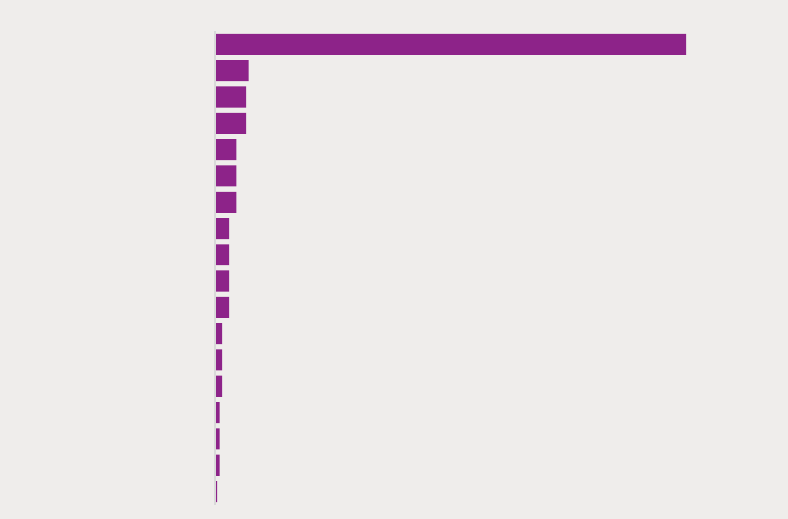
global capacity to produce enough vaccines, but pro-
duction is hamstrung in part by the intellectual prop-
erty rights of a few pharmaceutical giants. A global
move to suspend intellectual property rights has
been called for, not just for vaccines but for a range of
treatments, tests and products related to Covid-19.
“
It is striking that Covid-19 vaccine patents
are concentrated in just a few countries
At the World Trade Organization (WTO) attempts
by India, South Africa and other developing countries
to suspend patents for Covid-19 vaccines and related
treatments have been repeatedly blocked.
The Unit-
ed States has put its support behind patent waivers,
but there is opposition from some pharmaceutical
companies.
Compulsory licensing is specically al-
lowed by the WTO agreement on Trade-Related In-
tellectual Property Rights (TRIPS). And public health
emergencies are explicitly mentioned in the Doha
Declaration on TRIPS and Public Health as adequate
cause to issue compulsory licenses that would allow
other countries to produce essential drugs.
The
European Union has made a proposal that builds on
using existing WTO provisions.
Vaccine equity will not be achieved without increas-
ing the supply and distribution of safe and eective
Covid-19 vaccines, especially in low- and middle-in-
come countries. No single vaccine manufacturer can
produce enough vaccines to cover the globe, and de-
mand has far outstripped supply, with high-income
countries taking the lion’s share of doses. Sharing the
know-how behind the vaccines is key to not only scal-
ing up production but also bringing forward the second
generation of vaccines to address emerging variants.
WHO has urged member states and current man-
ufacturers to actively collaborate to share know-how,
data and technologies through the Covid-19 Technol-
ogy Access Pool and mRNA technology transfer hubs.
The pool was launched by WHO with the support of
Costa Rica and 40 cosponsors. It aims to enable the
voluntary licensing of technologies in a transparent
and nonexclusive way by providing a platform for
developers to share intellectual property and data,
including trade secrets and know-how. The technol-
ogy transfer hubs, the rst of which is in South Africa,
were recently announced by WHO, the Coalition for
Epidemic Preparedness Innovations and the Covid-
19 Vaccines Global Access initiative. But these meas-
ures have so far been inadequate.
Figure 3.2 Covid-19 vaccine-related patents are concentrated in just a few countries
Source:
1
2
2
2
3
3
3
6
6
6
6
9
9
9
13
13
14
195
Italy
Republic of Korea
Ireland
Sweden
Russian Federation
Netherlands
Israel
India
Germany
Denmark
Belgium
China
Australia
France
Canada
Switzerland
United Kingdom
United States
74 NEW THREATS TO HUMAN SECURITY IN THE ANTHROPOCENE / 2022
“
Ideally, patent systems would be part of a
broader set of institutionalized arrangements
that encourage innovation without relying
exclusively on monopoly power
Recognizing the limitations of existing patent sys-
tems, some alternative forms of compensation have
been suggested for policymakers to consider. Not
all patentholders have the resources or inclination
to capitalize commercially on their inventions, so
a more centralized system for people to sell patent
rights could be considered. This would allow them
to prot from their intellectual property and make
it easier for rms and other inventors to access new
ideas and technologies, which could foster future
innovation.
Governments could also consider direct nancing
for future research or tax credits as compensation for
innovation.
Knowledge commons would provide
less tangible benets that may nonetheless motivate
people to innovate and share their work, such as in-
creased opportunity for collaborating and demon-
strating skill sets that may be useful for obtaining
employment.
Ideally, patent systems would be part
of a broader set of institutionalized arrangements
that encourage innovation without relying exclusive-
ly on monopoly power over innovations.
Examples of these institutional arrangements are
open-source platforms for software applications
(such as Apache Hadoop, Nginx and Github), accessi-
ble by digital and nondigital rms at zero cost. Many
rms and developers use Github, an open-source re-
pository of tools, software and application programs.
The platform allows them to access, share and cus-
tomize programs and tools, including through team
collaboration, without substantial investment of time
and money,
thus accelerating innovation.
Many
leading information technology companies collab-
orate with open-source platforms. This allows them
to improve their public relations, gain legitimacy and
learn and align with the latest innovations in their
eld.
Microsoft collaborates with the Apache Soft-
ware Foundation and makes products and innova-
tions available through this volunteer community of
developers. Google has opened its Android patents,
Tesla has opened its patents to external developers
and the US National Aeronautics and Space Adminis-
tration recently made hundreds of patents available,
continuing a long tradition.
* * *
In many respects digital technologies promise to ex-
pand capabilities and promote human security. How-
ever, technological advancements also pose new
challenges. As digital technologies become more
widely adopted, a human security approach calls at-
tention to how technology can undermine people’s
wellbeing, rights and capabilities. People are aect-
ed by cyberattacks targeting their information and
the systems they come into contact with in everyday
life. Measures to address cyberharms that infringe on
human rights and freedom diminish human security.
The increasing use of algorithms in decisionmaking
can compound discrimination and foster precari-
ous, insecure working conditions. Uneven access to
vital technologies, such as Covid-19 vaccines, can
have far-reaching consequences for human security,
of both individuals and society more broadly. If the
human security implications remain unaddressed,
new technologies could fall short in their promise to
expand human capabilities.
75


Unearthing the
human dimension of
violentconflict
CHAPTER
4

78 NEW THREATS TO HUMAN SECURITY IN THE ANTHROPOCENE / 2022
CHAPTER 4
Unearthing the human dimension of violent conflict
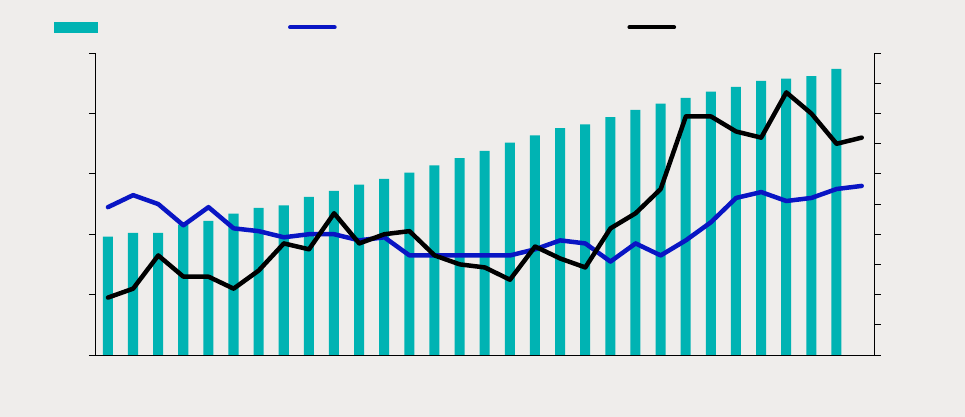
Reducing violence everywhere and in all its forms is
a prerequisite for human security and a core target
of the 2030 Agenda for Sustainable Development.
Violent conicts and interpersonal violence are di-
rect threats to people’s physical integrity. Before the
Covid-19 pandemic 100 civilians a day were killed
in armed conict, and more than 12 times as many—
1,205 people a day—were victims of homicide.
And
the ongoing pandemic seems to have sparked in-
creased intrahousehold violence
and political vio-
lence.
But the pathways from reducing violence to
freedom from fear and anxiety, freedom from war and
freedom from indignity extend well beyond ensuring
physical safety. Being exposed to violence, directly
and indirectly, is detrimental to wellbeing and human
development more broadly. Conict and violence can
drive people from their homes, potentially exposing
them to further security threats in their quest for safe-
ty.
But fear of violence also restricts people’s use of
public spaces,
limiting their agency and full partici-
pation in society. Furthermore, feeling safe is an inte-
gral part of Sustainable Development Goal 16.
Today, conict levels are up, and although violent
conicts are seemingly less deadly than in the past,
they are spreading across countries and Human De-
velopment Index (HDI) groups. More people in more
places are experiencing some kind of conict, and, as
seen in chapter 1, a majority of the global population
feels insecure, often due to threats of violence. This
chapter centres conict analysis on people, rather
than on the contestations, to spotlight the human di-
mensions of violent conict. Taking well-established
conict denitions as a starting point, it expands the
analysis to compounding human security threats and
people living in conict-aected areas. Rather than
give a full account of violent conict, it shows how
the new generation of human security — based on pro-
tection, empowerment and solidarity — can shed light
on blindspots and support the building of just and
peaceful societies.
Systemic interaction of conflict
with threats to human security
calls for systemic responses
Wars, violent conict between armed groups, vio-
lence, crime and unrest have often been thought of as
problems of development. One implication was that
economic growth would ease conict and expand
peace. But as the joint United Nations–World Bank
report Pathways for Peace argues, recent trends have
placed this hypothesis in doubt.
Emerging now is a
development-with-insecurity trend, where violent
conicts increase in parallel with progress in human
development (gure 4.1). Violent conicts also seem
to be spreading to higher HDI countries
and to in-
creasingly consist of contestations between armed
groups — so called nonstate conicts.
Figure 4.1 Violent conflict is increasing in parallel with progress in human development
Source: Human Development Report Office based on Uppsala Conflict Data Program/Peace Research Institute Oslo Armed Conflict Dataset version 21.1
and Uppsala Conflict Data Program Non-State Conflict Dataset version 21.1.
0
10
20
30
40
50
60
70
80
90
100
0.500
0.550
0.600
0.650
0.700
0.750
1990 1995 2000 2005 2010 2015 2020
World HDI (left axis) State-based conflicts (right axis) Nonstate conflicts (right axis)
Number of violent conflicts
Human Development Index (HDI) value
79

What is driving this trend? This Report argues that
the Anthropocene context presents a new reality in
which human security threats play out. In this setting
a mechanistic security–development relationship
cannot be taken for granted. Planetary disruptions in-
teract with conict dynamics, inequalities and tech-
nological innovation to create new arenas for conict
and violence. None of the new generation of human
security threats on its own is enough to explain why
violent conict is on the rise — but in their interaction
tensions multiply and build.
“
Emerging now is a development-with-
insecurity trend, where violent conicts increase
in parallel with progress in human development
The development–security disconnect may be a
by-product of how development has been pursued,
compounded by the legacy of historical injustices,
including colonial rule. Development has not deliv-
ered benets to all people — and in some cases has left
groups behind.
The development approaches that
have given most attention to economic growth and
considerably less to equitable human development
have led to stark and growing inequalities, as well as
mounting pressures on the planet.
As seen below, in
the Anthropocene context risks may heighten conict
tensions, and conicts are closely linked to horizontal
inequalities, the concentration of political and eco-
nomic power among a few and the exclusion of many.
Human security in this context requires consid-
ering how overlapping threats interact and calls for
systemic responses that adapt to changing circum-
stances.
Insights from complexity theory can help
formulate systemic and adaptive approaches to sus-
taining peace (box 4.1).
Violent conflict hinders solidarity and trust
Chapter 1 argues for introducing solidarity into the
human security frame and shows how in today’s
world higher impersonal trust may help foster soli-
darity. This is particularly pertinent because many
of the new human security threats span borders and
their drivers lie beyond the control of a single actor.
With ghting spilling across borders, wars driving
forced displacement and organized crime spreading
through transnational illicit networks,
no country is
immune to conict and its devastation. When conict
triggers and human security threats are potentially
global, peace also becomes an international and in-
terlinked aspiration. Confronting the interconnect-
ed challenges that build conict tensions and sustain
peace in an era of compounding threats thus requires
a sense of solidarity, as dened in chapter 1.
Festering fears and anxieties strain social con-
tracts, in part by fuelling polarization and deepening
societal divides.
Leaders interested in mobilizing
groups into violence can politicize societal divides
or advance agendas that harm democratic institu-
tions and norms.
Recent years have witnessed vio-
lations of international norms and human rights and
oppression of civil liberties, even outside fragile and
conict settings.
Human rights defenders and envi-
ronmental activists have become increasingly under
attack, a potential strategy to silence protest and po-
litical opponents.
Indeed, the targeted killings of a
few can incite fears among many, curtailing agency
and collective action.
The targeted killings of environmental activists
may be one of the most abysmal symptoms of the
interactions among risks, inequalities and violence.
The very people that are pushing for easing planetary
pressures are often persecuted, furthering danger-
ous planetary changes that correspond to existential
threats comparable to the nuclear threat.
In the An-
thropocene context people’s choices result in pres-
sures on the planet that are destroying the biosphere
foundations on which societies depend. In the case
of nuclear weapons, and other weapons of mass de-
struction, the threat of extinction is evident. Today’s
nuclear risks are at their highest in the past four dec-
ades.
Risks related to technical malfunction, illic-
it trade, human error, volatile geopolitics and arms
races can trigger negative human insecurity spirals.
When countries see the need to divert ever more
resources towards protection and security, invest-
ments in human development that enhance agency
and empowerment or ease planetary pressures may
be postponed or never materialize. The world’s mili-
tary spending reached its highest level since the end
of the Cold War — almost $2 trillion in 2020.
As the
public health crisis caused by the Covid-19 pandem-
ic turned into a socioeconomic crisis threatening
human development progress everywhere, ocial
80 NEW THREATS TO HUMAN SECURITY IN THE ANTHROPOCENE / 2022

development assistance also rose to a record in 2020
— but still amounted to less than 10 percent of mili-
tary spending.
Furthermore, a substantial portion
of ocial development assistance is needed to alle-
viate immediate humanitarian crises, as seen during
the ongoing pandemic, leaving less room for conict
resolution or transformation of underlying conict
drivers. Today, military spending is 2.4 percent of
global GDP,
whereas protection against a deterio-
rating environment — which in the Anthropocene con-
text may become one of the greatest human security
threats — is much lower. For example, EU countries
Box 4.1 Adaptive peacebuilding: Insights from complexity theory for strengthening the resilience and
sustainability of social-ecological systems
Complexity theory offers new ways of understand-
ing how social-ecological systems function under
pressure — for example, how climate change–related
stressors may exacerbate competition over scarce
resources — and provides a theoretical framework
for understanding how the resilience and adaptive
capacity of social systems can be influenced to
help them prevent, contain and recover from violent
conflict.
As experiences in Afghanistan and elsewhere
have demonstrated, it is not possible to undertake
a project — for example, a community violence
reduction initiative in Iraq or security sector reform
in Somalia — and predict the outcome with any cer-
tainty. Nor can a model that has performed relatively
well — such as the Truth and Reconciliation Commis-
sion in South Africa — be used elsewhere and be ex-
pected to produce the same result. This uncertainty
and irreproducibility are characteristics of complex
systems, not the result of insufficient knowledge or
inadequate planning or implementation. Adaptive
peacebuilding is specifically designed to cope with
the uncertainty, unpredictability and irreproducibility
inherent in complex social change processes. It is an
approach where peacebuilders, together with the
people affected by conflict, actively engage in an it-
erative process of inductive learning and adaptation.
Insights derived from how self-organization main-
tains and transforms complex systems suggest that
for peace to become self-sustainable, resilient social
institutions that promote and preserve peace need
to emerge from within the culture, history and social-
ecological context of the relevant society. A society is
peaceful when its institutions can ensure that politi-
cal and economic competition is managed without
people resorting to violence to pursue their interests.
For peace to be self-sustainable, a society thus needs
sufficiently robust social institutions to identify, chan-
nel and manage disputes peacefully.
Peacebuilders can assist in this process, but if
they interfere too much, they could cause harm by
disrupting the feedback critical for self-organization
to emerge and be sustained. Every time an external
intervention solves a problem, it interrupts the inter-
nal feedback process. The result may be a missed
opportunity to stimulate the development of self-
organization and resilience. For example, the more
effective an international operation is in stabilizing a
situation, the less incentive there is for political elites
to invest in the political settlements needed to bring
about self-sustainable peace. Understanding this
tension — and the constraints it poses on internation-
al agency — helps explain why some policy initiatives
may have interfered so much that they ended up
undermining the ability of societies to self-organize.
The weight typically assigned to international exper-
tise versus local and indigenous knowledge needs
to shift. The key to successful peacebuilding lies in
finding the appropriate balance between external
facilitation and local self-organization, which will dif-
fer by context.
An adaptive peacebuilding approach does not
imply that expert or scientific knowledge is not
important but that understanding how to implement
evidence-based advice in a specific social context
matters too. For example, the science may deter-
mine that avoiding close contact between people
prevents the spread of Covid-19, but in a densely
populated slum community that can be achieved
only through adaptive practice and learning in part-
nership and collaboration with that community. The
empowered agency of the people involved is critical
for the effectiveness and sustainability of any peace-
building initiative.
Adaptive peacebuilding is thus a normative and
functional approach to conflict prevention and reso-
lution that aims to navigate the complexity inherent
in nudging social-ecological change processes to-
wards sustaining peace, without causing harm.
Source:
81

spent an average 0.8 percent of GDP on environmen-
tal protection in 2019.
As military spending has increased, so has the pro-
liferation of arms. The global stock of rearms has
been growing over the past decade, to more than
1 billion today.
Military holdings account for 13 per-
cent of all rearm holdings, and the vast majority of
guns are in civilian hands.
However, private security
solutions, such as acquiring a gun for protection, can
increase human insecurity. For example, the prolifer-
ation of small arms in four communities in South Asia
has increased fear, anxiety, suspicion and insecurity.
The UN Secretary-General outlined a new agenda
for disarmament in 2018. With increasingly complex
and protracted conicts, rapid technological develop-
ment and persistent nuclear threats, the agenda calls
for governments to accelerate disarmament at both
the community and national levels.
Yet several major ocial development assistance
donors are also among the world’s top arms export-
ers, and progress on internationally agreed disarma-
ment commitments has been slow,
indicating the
prevalence of protectionist concerns over global sol-
idarity and low trust at the global level. There is an
urgent need to address the trust decit to reconcile
communities aected by violence as well as to reduce
polarization and ease conict tensions outside direct
conict and postconict zones.
In postconict settings truth and reconciliation
programmes may support reconstruction, while in-
creasing intergroup contacts outside political settings
show promise in generating trust and tolerance.
Still, the unintended eects of such actions require
careful attention, as they have been linked to post-
traumatic stress and other adverse results.
Without
a broader process of accountability, safeguarding
of human rights and ending of impunity for human
rights violations, conict-related violence can take
new forms,
and resentment and distrust may lin-
ger in social and political institutions, creating latent
conict tensions.
Accountability and a global
commitment to peace are key
Accountability and honouring commitments
to peace have emerged as key components for
fostering trust and solidarity. But because long-
standing violent conicts between nonstate actors
and perpetual violence from organized crime make
up an increasing share of the violent conict land-
scape today,
questions about leadership and ensur-
ing accountability arise. Scholars are increasingly
pointing to how criminal governance regimes be-
come embedded in state power, often as a result of
coercion.
For example, research has shown that
cartels in Mexico attack elected ocials and politi-
cal candidates to establish control over local territo-
ries.
When organized crime, local gangs or armed
groups assume state-like functions of governing,
ensuring protection and enforcing rules over the
local community, the state monopoly of violence is
threatened, and justice systems fail to protect cit-
izens.
During the Covid-19 pandemic criminal
organizations have used the public health crisis to
expand their inuence — by, for example, enforcing
social distancing or distributing goods to local pop-
ulations.
Similar questions of human rights and
accountability are raised in relation to the growing
number of people forcibly displaced by conicts and
the use of autonomous systems and articial intelli-
gence in warfare.
“
Questions of human rights and accountability
are raised in relation to the growing number
of people forcibly displaced by conicts
and the use of autonomous systems and
articial intelligence in warfare
The current multilateral system, built in part to
save future generations from the scourge of war, sees
its institutions evolving to face new conict threats.
The triple-nexus humanitarian– development– peace
approach indicates not only the importance of phys-
ical safety but also a minimum threshold of eco-
nomic, social, political and cultural freedoms in
promoting a peaceful and just future for all. Insti-
tutional innovations in the climate– security space
and in expanding the set of voices at the peacebuild-
ing table — including the Youth Peace and Security
Agenda,
the landmark UN Security Council Reso-
lution 1325 on gender-responsive peacebuilding
and
recent UN Security Council discussions on new and
emerging technologies — show how the concept of se-
curity is broadening in the multilateral space.
82 NEW THREATS TO HUMAN SECURITY IN THE ANTHROPOCENE / 2022
Multilateral peacebuilding balances humanitarian-
ism with long-term development eorts. Its eective-
ness can be enhanced by international commitments
to advance human security and human rights — to
protecting civilians in conict, empowering histori-
cally marginalized groups and communities or easing
planetary pressures. Calls for networked multilat-
eralism stress the responsibility of all social actors
to uphold human rights.
Commitments to interna-
tionally agreed conventions on human rights and to
peace also advance the integrated and indivisible
2030 Agenda for Sustainable Development. In fact,
committing to peace is not only a moral obligation
— it also makes economic sense. Investing $1 in
conict prevention today can save up to $16 in the fu-
ture.
Conversely, the economic cost of conict and
violence was estimated to be 10.5 percent of glob-
al GDP in 2019.
Worryingly, global trends seem to
point towards slow progress on disarmament and
multilateralism.
Agency connects empowerment
and protection for peaceful lives
The emphasis on empowerment in the context of
human security also implies empowering people to
act for peace. Empowering people to act for peace is
key in the current setting, with a conict landscape
that increasingly comprises protracted conicts with
a wide array of actors and in which consequences
spill across national boundaries.
The last section
of the chapter argues that centring conict analy-
sis and peacebuilding on people unearths common-
ly overlooked dimensions of conict and peace and
may provide a way of empowering people to become
change-agents for peace.
Identifying, supporting and amplifying the eorts
of the principal agents of change at the local, nation-
al, regional and global levels are critical, as is nding
platforms for constructive dialogue. Doing so also
requires changing pervasive social norms and power
hierarchies that limit the agency and voice of histor-
ically marginalized groups. For example, including
women in peace processes can improve the likeli-
hood of sustainable peace agreements.
UN Security
Council Resolution 1325 on women, peace and secu-
rity calls on all actors to incorporate gender perspec-
tives and enhance women’s role in peacebuilding.
Empowerment-focused eorts to address conict
risks need to protect those at risk of victimization
while holding to account those perpetuating violence
and violating human rights. So, systemic approach-
es are important not only to reduce conict tensions
and risks at a macro scale but also to prevent violent
behaviours at the individual level.
Being exposed to
violence at a young age can desensitize children and
increase their likelihood of accepting and perpetuat-
ing violent behaviour.
Lack of economic opportu-
nities can reduce the opportunity costs of engaging
in violence,
whereas inequalities and exclusion can
create grievances that can be instrumentalized by po-
litical actors to foster conict.
The dynamics of violent conflict are
evolving under the new generation
of human security threats
Human security strategies based on the pursuit of
protection, empowerment and solidarity can com-
plement current approaches of addressing violent
conict. This is particularly pertinent in the current
context — whether for the turmoil in Afghanistan, the
future of reconciliation with indigenous peoples and
First Nations in Canada or the transition measures for
supporting people and places in managing large-scale
transformations to ease planetary pressures.
“
Conventional security policies would be
enhanced by systematically considering how
overlapping human security threats create
tensions and compound conict risks
Conict is becoming more complex, internation-
alized, multidimensional and fragmented, involving
more types of actors and persisting longer. A devel-
opment-with-insecurity trend is emerging (see g-
ure 4.1). Conventional security policies would be
enhanced by systematically considering how over-
lapping human security threats create tensions and
compound conict risks. Similarly, development ap-
proaches that fail to account for planetary pressures
and inequalities risk further aggravating human secu-
rity threats. The following discussion illustrates how
the new generation of human security threats inter-
act with evolving conict dynamics. By no means ex-
haustive, this overview shows how the intersections
83
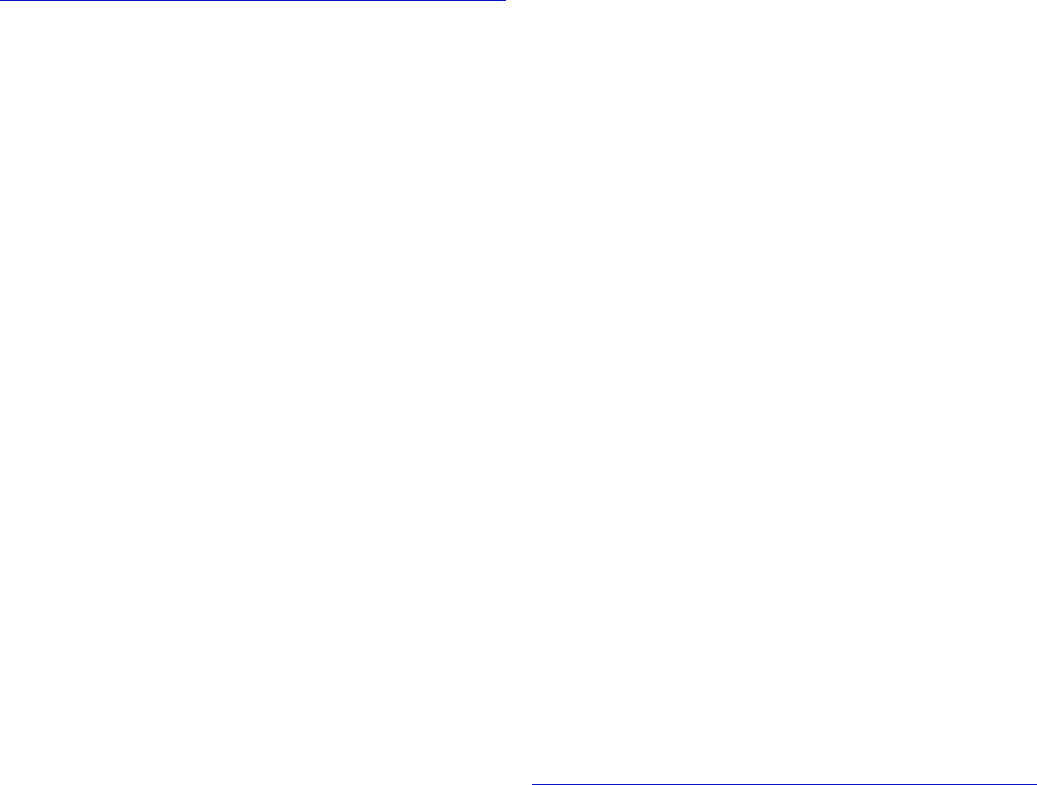
warrant careful attention, as they may open new are-
nas for addressing conict risks.
Conflict risks are exacerbated in the Anthropocene
context; climate change is a threat multiplier
As chapter 2 shows, a changing climate is one fea-
ture of the Anthropocene context. Land and ocean
ecosystems, as well as the services they provide to
humans, are changing because of human-induced
climate change, and biodiversity loss is rampant,
further eroding ecosystem resilience
and harming
human health, livelihoods and wellbeing.
While
there is still an ongoing discussion on the direct cli-
mate–conict link, a large body of research identies
several pathways between the two,
highlighting how
the Anthropocene context interplays with conict dy-
namics. This calls for a broader conceptualization of
human-ecological (in)security that captures the sys-
temic and volatile nature of the Anthropocene.
Con-
ict can also exacerbate environmental degradation,
leading researchers to point to possible “vicious vul-
nerability and climate traps.”
Conicts are ultimate-
ly related to social imbalances: horizontal inequality,
power hierarchies and political interests that seem to
contribute more to environmental conicts than the
direct eects of deteriorations in the environment or
access to natural resources do.
Climate change disproportionately aects coun-
tries already experiencing armed conict. At the end
of 2020, 10 of 21 ongoing UN peace operations were
in countries most exposed to climate change.
While
this is due to geographic location, armed conict in-
creases the diculties in managing and adapting to
climate change and may even exacerbate environ-
mental degradation. Conict weakens government
institutions and diverts attention from sustainable
development to military concerns. Global military
spending is increasing,
alongside the military car-
bon footprint.
Conict operations may also directly
hurt the natural environment. For example, attacks
on physical infrastructure can lead to oil spills, res
and higher carbon dioxide emissions.
Indeed, by
one estimate, the Gulf War contributed to more than
2 percent of global fossil fuel emissions in 1991.
And
more recent research shows how agricultural lands
were captured and destroyed by all sides in the Syrian
war.
Conict is also a predictor of declines in wild-
life populations, which hurts biodiversity.
“
Climate change disproportionately aects
countries already experiencing armed conict
A transition to a low-carbon economy is critical to
curbing climate change, yet conict may result in bar-
riers to much needed energy transitions and lock in
outdated polluting technologies.
The phasing out of
outdated technologies and shifting from fossil fuel to
renewable technologies also comes with transition
risks, which, if not carefully managed, can slow the
shift and even increase conict.
Some regions and
groups are better equipped to benet from new oppor-
tunities in low-carbon economies, while others stand
to lose out if no measures are taken when fossil fuel–
intensive production and related employment oppor-
tunities are phased out.
If the distributional eects of
the transition are perceived as unfair and regions and
groups are left without the support needed to adapt
to a new economic reality, social unrest may follow.
In fragile settings the side eects of renewable ener-
gy projects and local climate adaptation projects may
heighten conict risks.
At the global level the transi-
tion may reshape geopolitics, changing the relative po-
sitions of states and regions and leaving political and
economic uncertainty.
In addition, the growing de-
mand for minerals in the wake of a low-carbon transi-
tion may exacerbate or spur new conicts.
Digital technologies define new arenas for conflict
Chapter 3 highlights the threats to human securi-
ty from digital technological innovation, which may
also create new arenas where conicts play out. The
same technologies can provide new opportunities to
ensure accountability and foster peace — through, for
example, better forecasting of conict risks
— but
military use of emerging technologies may also pose
serious human security risks. For example, auton-
omous weapons systems and articial intelligence
may reduce human involvement in warfare,
raising
questions about responsibility and accountability for
the use of force. Existing regulatory and governance
frameworks are ill-equipped to address the human
rights risks linked to such emerging technologies.
84 NEW THREATS TO HUMAN SECURITY IN THE ANTHROPOCENE / 2022

Some digital technologies can facilitate illicit eco-
nomic transactions and tax evasion, as they allow for
anonymity and untraceable transactions.
Online
sharing and storing of personal data expose individ-
uals to risks ranging from identity fraud and theft to
hate crimes, attacks and cyberbullying. Half of all in-
ternet users may be victims of a cybercrime.
Online
hate speech disproportionately targets women and
minority groups,
and online harassment can silence
social activists and undermine public deliberation.
Although major social media platforms have policies
for banning hateful conduct, regulatory frameworks
are still lacking for the most part, implying much dis-
cretion by rms that already concentrate substantial
economic power in arbitrating what is acceptable be-
haviour online and possibly making the internet yet
another unsafe space for many people.
The algorithms that social media platforms use
to promote content may create content clusters and
spread misinformation that can drive polarization.
While some research points towards the potential of
these arenas to spur radicalization and recruitment to
extremist groups,
the link between online hate and
real-world violence and crime is yet to be fully estab-
lished.
For the victims of cyberviolence, however,
sharply distinguishing between online and oine vi-
olence may not be useful, as online attacks incite fear
and restrict people’s freedoms, adversely impacting
human security.
Large and growing inequalities mount tensions;
conflict arenas differ across groups
Horizontal inequality has long been thought of as a
key driver of conict,
but the conict–inequality
link seems to be multidirectional, with horizontal in-
equality both shaping and being shaped by violence
and conict.
These interlinkages are important
when group-level inequalities are tied to the system-
atic political, social and economic exclusion or dis-
crimination of particular groups. Fault lines across
groups can be mobilized by political actors or other
interests for conict and violence.
This should not
be seen as an argument to curb civil liberties, given
that the large majority of groups and social move-
ments protesting discrimination, exclusion and ine-
qualities use peaceful methods to make their voices
heard (box 4.2). Horizontal inequalities alone do not
automatically trigger violent conict; other channels
are needed to translate horizontal inequality into vi-
olent action.
People’s perception of inequality and injustice
seems to be crucial in furthering conict risks.
Groups perceiving inequalities as unfair are more
likely to be mobilized to act and more prone to be
sensitive to political leadership and narratives that
stir up animosity aimed at triggering violence.
Hori-
zontal inequality–driven conict tensions compound
the interaction with the potential harms of digital
technology. As seen above, online content clusters
and widespread misinformation can further exacer-
bate feelings of animosity and alienation.
Conict aects groups and places dierently and
interplays with existing social and gender norms, at-
titudes and values. Men are more likely to be victims
of violent crime and homicides and to be killed in
battle. Yet men also make up 90 percent of homicide
perpetrators worldwide and commit violent and sex-
ual oences at much higher rates than women.
In
warfare systematic sexual violence towards women
remains an abhorrent human rights violation.
How-
ever, one of the most egregious yet widely tolerat-
ed violations of human security is violence against
women and children within their households and in
the community. About one in three women world-
wide has been subject to physical and/or sexual vio-
lence, most often by an intimate partner.
Thus, the
most dangerous place for many women across the
globe may be their own home.
Conflicts are a growing public health concern
Armed conict and violence not only pose direct
threats to health but also interact with other human
security threats to harm physical and mental well-
being. Conict may have long-term negative eects
on important health determinants, such as household
livelihoods and education. People living in conict
areas face compounding health risks. They are dis-
proportionately aected by trauma and injuries as
well as mental health problems, which may lead to
long-term disabilities and chronic illness when on-
going violence reduces access to quality healthcare
services.
Conict destroys healthcare infrastructure
85
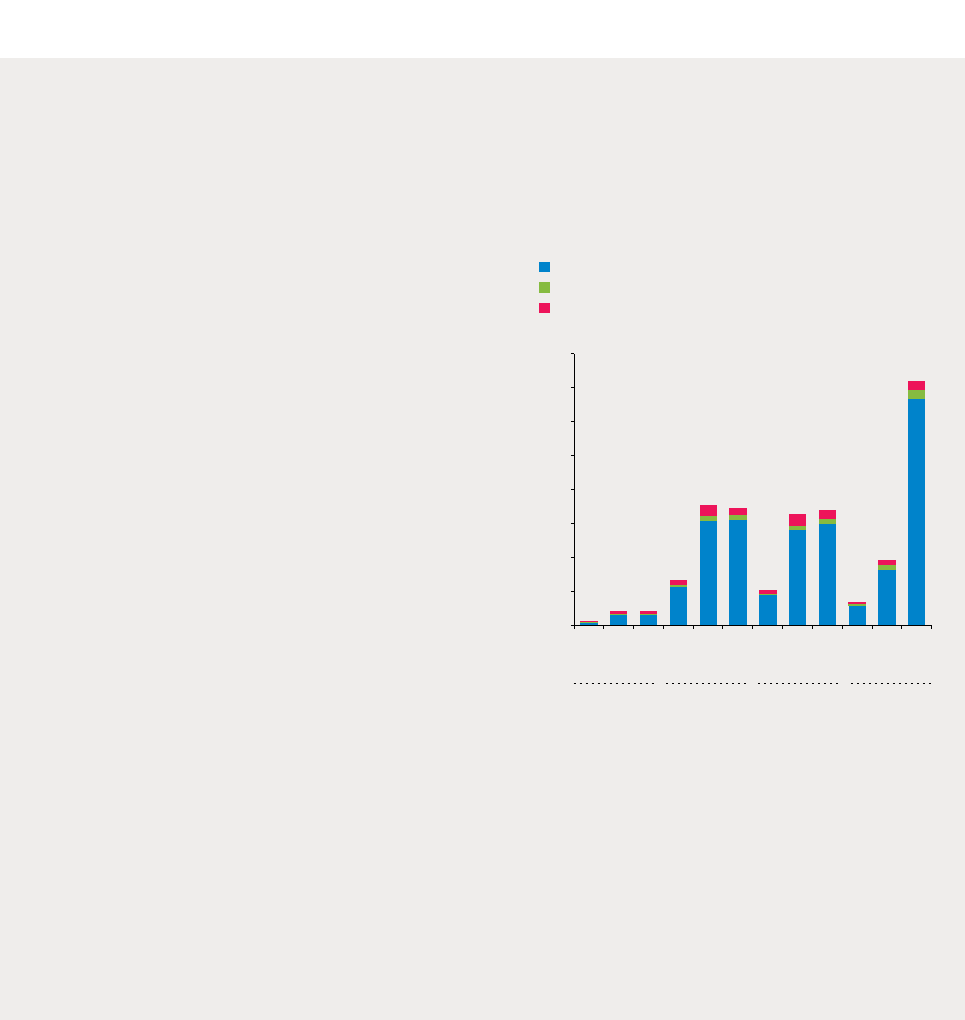
and services, exacerbating people’s vulnerability to
trauma and diseases not directly related to ghting.
Noncommunicable diseases may remain untreat-
ed, and conict can increase stress and other risk
factors.
These adverse health outcomes disproportional-
ity aect already at-risk populations. For example,
conict is associated with increased gender-based
and sexual violence directed towards women, higher
rates of sexually transmitted diseases and worsening
maternal health outcomes.
Food insecurity is high-
er in conict-aected areas, which may cause mal-
nutrition and adverse health outcomes, especially
among children.
Conict and violence trigger dis-
placement, further exposing people to health threats,
which can be exacerbated when people live in close
proximity, leading to contexts that are prone to out-
breaks of life-threatening diseases such as cholera
and malaria and that could become transmission
belts for Covid-19.
Box 4.2 Social protests have intensified over the past three years
Over the past 10 years protests have been mul-
tiplying across the world, escalating in size and
frequency. Largely peaceful, the growing scale and
scope of protests are symptoms of human insecurity,
revealing deep cleavages in societies and the failure
of authorities to address citizen concerns.
Between 2009 and 2019 antigovernment protests
increased by 11.5 percent a year on average, peaking
in 2017 and 2019. In 2019 almost a quarter of the resi-
dents of both Hong Kong, China (SAR) and Santiago,
Chile — 2 million and 1.2 million people, respectively —
took to the streets, and the social movement Fridays
for Future registered more than 4 million environmen-
tal protests. These protests parallel declining trust
in governments and democracy.
1
Protest is a form
of political expression,
2
many times a final resort to
seek social and political change when traditional
mechanisms have not been responsive. While a
protest may be triggered by a single event or policy
change — such as the killing of George Floyd in the
United States, the increases in metro fares in Chile or
a proposed carbon tax in France — they often reflect
mounting grievances, exclusion and discrimination.
The number of protest events has increased in all
Human Development Index (HDI) categories over the
past three years, with the largest increase in the very
high HDI category (see figure). Rather than cooling
tensions, the Covid-19 pandemic has spurred more
protests across the world as people have taken to
the streets to voice concerns about governments
responses, or lack thereof, to the public health cri-
sis.
3
The vast majority of protests are peaceful, and
only a small fraction turn violent or are met with
intervention from authorities. How authorities meet
demonstrations can affect whether they turn vio-
lent, and repression of nonviolent protests has been
found to trigger further violence.
4
When protests are
met with violence from authorities, human security
is threatened, and human rights are violated.
5
The number of protest events has increased in all
Human Development Index categories over the past
three years
Peaceful protests
Protests with intervention from authorities
Violent protests
0
10
20
30
40
50
60
70
80
Number of protests (thousands)
2018
2019
2020
2018
2019
2020
2018
2019
2020
2018
2019
2020
Low Medium High Very high
Human Development Index category
Source: Human Development Report Office, based on Armed Con-
flict Location & Event Data Project.
Source: Bell and Murdie 2018; Brannen, Haig and Schmidt 2020; EIU
2021; Ferreira and Schoch 2020; Fridays for Future 2021; Kishi 2021;
Lipsky 1968; Pinckney 2016.
Notes
1.EIU 2021. 2.Lipsky 1968. 3.Kishi 2021. 4.Pinckney 2016. 5.In 2020
the United Nations Human Rights Committee adopted General
86 NEW THREATS TO HUMAN SECURITY IN THE ANTHROPOCENE / 2022
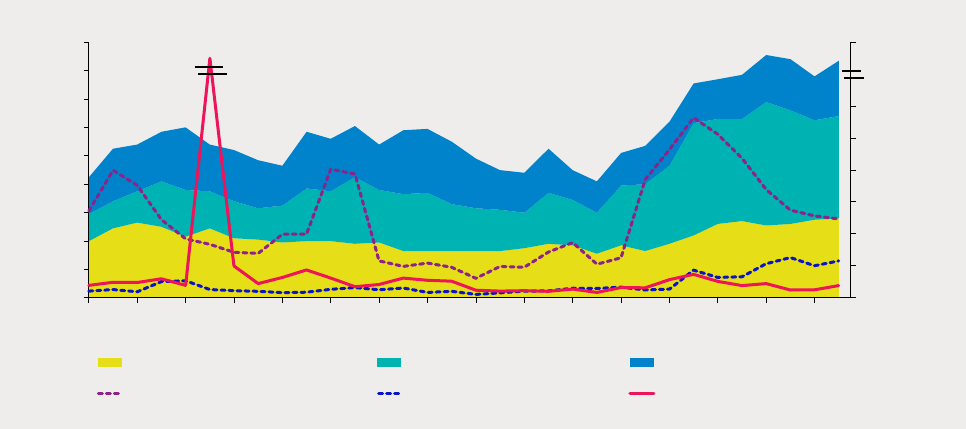
“
While a protest may be triggered by a single
event or policy change — such as the killing of
George Floyd in the United States, the increases
in metro fares in Chile or a proposed carbon
tax in France — they often reect mounting
grievances, exclusion and discrimination
Public health crises such as the ongoing Covid-19
pandemic may call for extraordinary policy meas-
ures and restrictions to protect people’s health.
If
the measures are perceived as ineective or unfair or
fail to recognize adverse distributional eects, social
and political tensions may increase. And while the
pandemic dampened conict events, in 2020 political
violence rose in more countries than it fell.
Afghan-
istan, Mexico, Syrian Arab Republic, Ukraine and
Yemen experienced the most political violence that
year, whereas Cameroon, the Democratic Repub-
lic of the Congo, Iraq, Mali and Nigeria saw conict
events increase by more than 50 percent.
Putting people at the heart of conflict
analysis, conflict prevention and
sustaining peace shows the power
of the human security approach
After decades of gradual de-escalation, conict is
again on the rise (gure 4.2). In 2020 there were 56
active state-based conicts in 37 countries, the most
involving the government of a state since the end
of World War II.
Much of this increase may be as-
cribed to the Islamic State engaging in direct conicts
with governments in numerous countries. However,
state-based wars are giving way to conict between
nonstate actors. In 2020, 72 active nonstate conicts
claimed the lives of 23,000 people. Together, both
gures point towards violent conicts that are less
state-centric and increasingly protracted.
The conicts of today tend to be less deadly than
the wars prior to 1990. Now, most battle- related
deaths are concentrated in a few countries. Further-
more, crime is now a greater source of violent deaths
than armed conicts, and most occur outside tradi-
tional conict zones.
The Americas account for
40 percent of homicides, and homicide rates have re-
mained high and stable in the region while declining
in the rest of the world.
Beyond homicides, people
in Latin America are disproportionately exposed to
other violent crimes.
Still, measuring and monitoring conict are laden
with political and technical challenges. Traditional
conict metrics, such as number of ongoing conicts
or battle-related deaths, do not fully capture the reach
of armed conicts today, nor do they give a complete
picture of the scale of the human security implica-
tions of violent conicts. With protracted conicts
Figure 4.2 The number of violent conflicts is rising again
Source: Aas Rustad 2021a.
0
20,000
40,000
60,000
80,000
100,000
120,000
540,000
0
20
40
60
80
100
120
140
160
180
1989 1991 1993 1995 1997 1999 2001 2003 2005 2007 2009 2011 2013 2015 2017 2019
Number of battle deaths
Number of conflicts
State-based conflicts Nonstate conflicts One-sided violence incidents
State-based battle deaths Nonstate battle deaths One-sided battle deaths
87
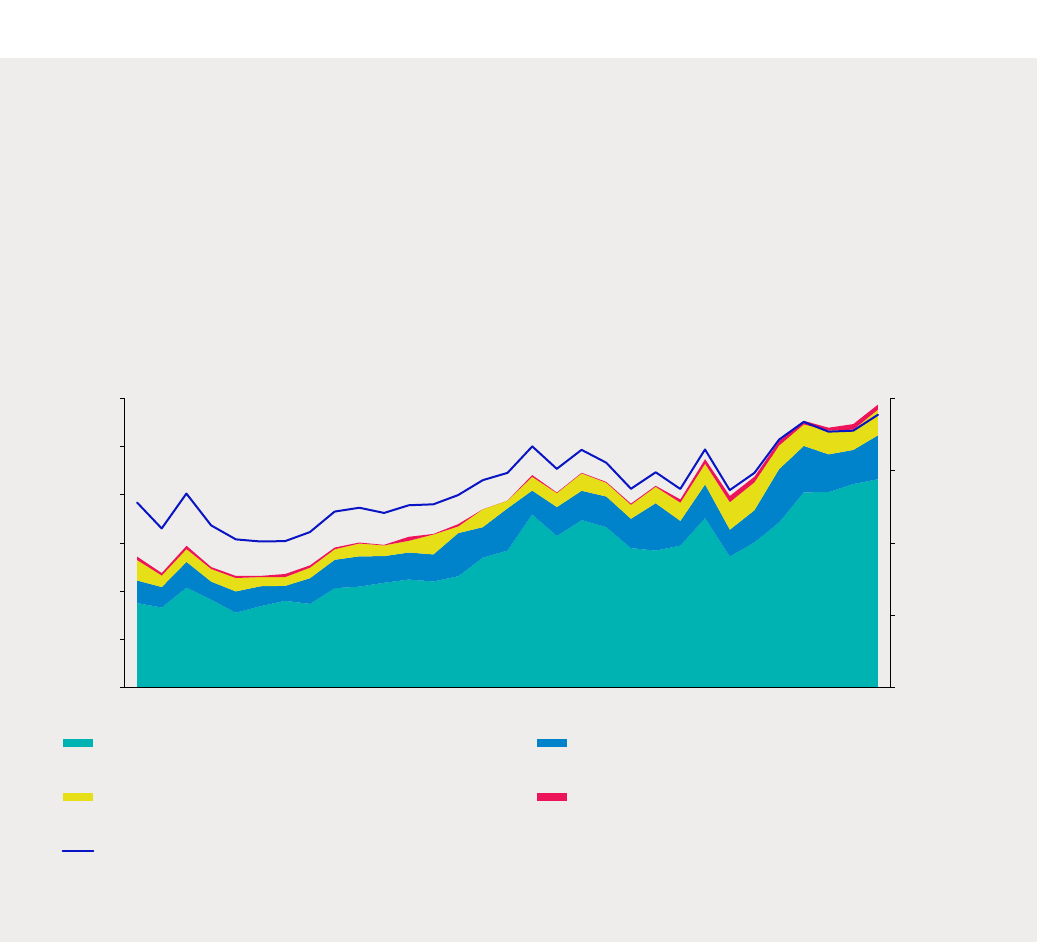
and organized crime simultaneously concentrating
in subnational hotspots and spreading across bor-
ders, data and measurement innovations are needed
to improve understanding of who is aected by con-
ict. Although there are fewer battle-related deaths
than in the past, violent conicts are now more pro-
tracted, lingering on for years. Violent conict creates
immense hardship and suering, including physical
injuries, mental health problems and trauma, sexual
violence, and exploitation, as well as generalized fear
and a breakdown of trust.
This Report introduces one innovation in measur-
ing the number of people aected by conict that re-
veals stark trends (box 4.3).
The number of people
living in proximity to conict events has more than
doubled since 1990, and the share of conict-aect-
ed people has been growing rapidly as well. Today
about 1.2 billion people live in conict-aected areas,
560 million of them in countries not classied as frag-
ile contexts.
In 2020 people in at least 25 countries
not facing fragile contexts were living in proximity to
conict events. Between 2014 and 2020 the number
of people living in conict areas increased by 378 mil-
lion, and 40 percent of them were outside fragile
contexts. Since conventional conict analysis and
peacebuilding tend to focus on fragility, conict-af-
fected people outside of traditional conict zones
may be overlooked.
Box 4.3 Measuring conflict-affected populations
To scale the dimension of people exposed to conflict,
Østby, Aas Rustad and Arasmith (2021) developed a
methodology for calculating the number of people living
in proximity to conflict. In 2020, 4.5 billion people lived
in countries that saw some kind of conflict. Yet not all
of those people were equally affected, as conflict events
tend to concentrate in hotspots (box figure 1).
About 555 million people lived within 50 kilometres of a
conflict event in 1990, compared with almost 1.2 billion—15
percent of the world’s population — in 2020.
1
The trend is
even more dramatic for children because conflicts are
more common in countries with younger populations.
Some 200 million children lived in conflict areas in 1990,
compared with 452 million — 19 percent of all children — in
2020. About 73 percent (864 million) of conflict-affected
people live in areas with low levels of conflict (1–25 people
killed a year). But even living in low intensity conflict areas
can have a big impact on people’s lives.
(continued)
Box figure 1 Number of people within 50 kilometres of fighting
0
4
8
12
16
0
200
400
600
800
1,000
1,200
1990 1992 1994 1996 1998 2000 2002 2004 2006 2008 2010 2012 2014 2016 2018 2020
People (millions)
People living in low intensity conflict
(1–25 people killed in a year, left axis)
People living in very high intensity conflict
(more than 1,000 people killed in a year, left axis)
People living in medium intensity conflict
(26–100 people killed in a year, left axis)
People living in high intensity conflict
(101–1,000 people killed in a year, left axis)
Conflict-affected population as a share of world population (right axis)
Conflict-affected population as a
share of world population (percent)
Note: The number of people living in conflict affected areas, where fighting takes place within a 50 kilometre radius.
Source: Uppsala Conflict Data Program Georeferenced Event Dataset v.20.1; UN World Population Estimates; Østby, Aas Rustad and Tollefsen 2020.
88 NEW THREATS TO HUMAN SECURITY IN THE ANTHROPOCENE / 2022
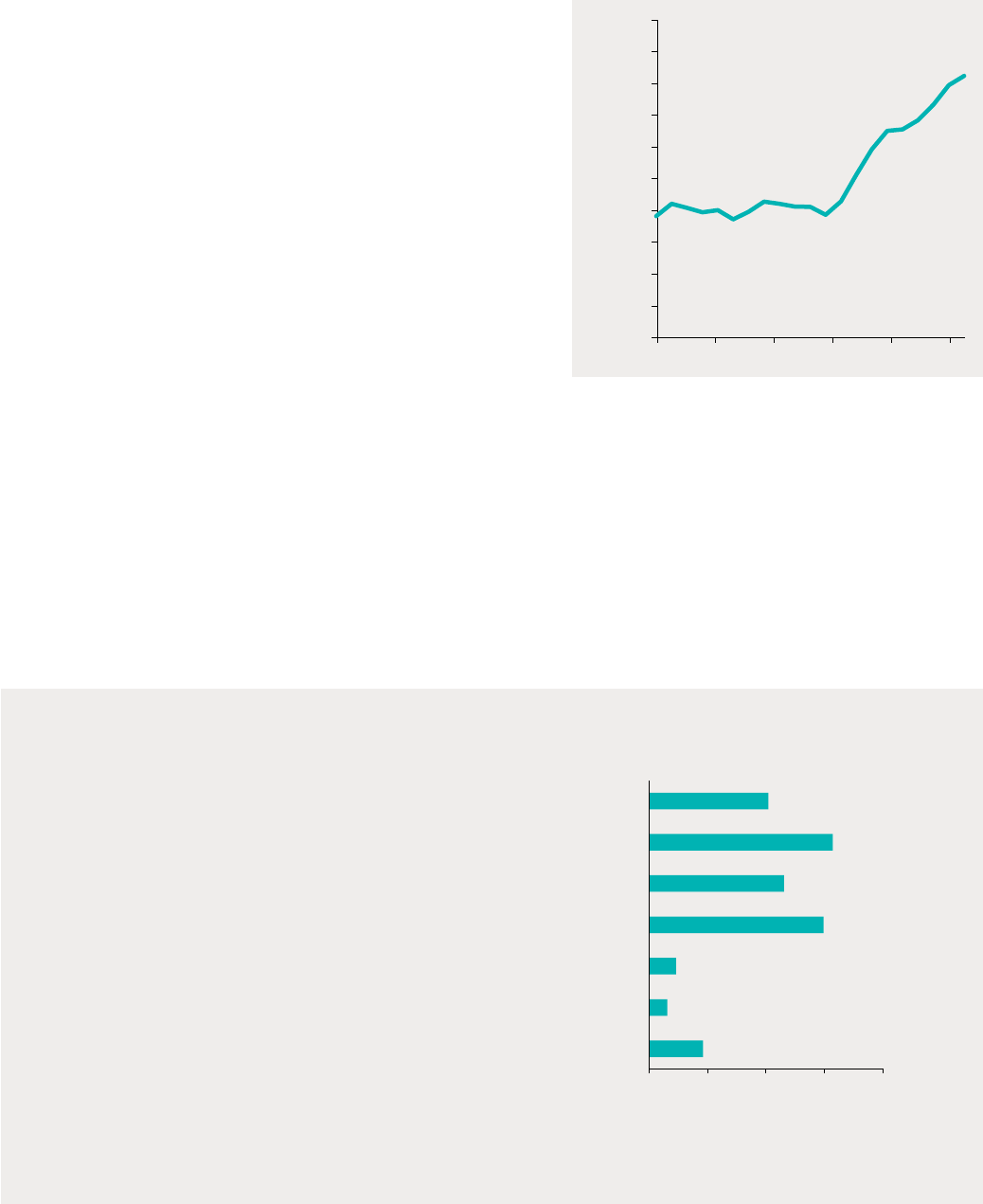
Living in a conict-aected area and being exposed
to violence, directly or indirectly, have negative ef-
fects on important human development outcomes.
A reduced sense of safety and adverse mental health
are common in communities with recurring violent
events.
For example, a surge in local homicides in
Bogotá, Colombia, increased mental health disor-
ders and posttraumatic stress disorder among ado-
lescents, including those without direct exposure to
violence.
“
Today about 1.2billion people live in
conict-aected areas, 560million of them in
countries not classied as fragile contexts
Violence and fear of violence push people to leave
their homes and seek refuge elsewhere. The num-
ber of forcibly displaced people has been growing —
peaking at 82.4 million in 2020 (gure 4.3).
Chapter
5 illustrates the multiple human security threats that
forcibly displaced people face. While the conicts
in Afghanistan, Somalia and Syrian Arab Republic
are thought to be responsible for more than half the
world’s refugee population, overlapping human se-
curity threats, conict and violence drive displace-
ment outside war zones. Unprecedented violence,
widespread criminality and impunity threaten cit-
izen security in Central America and drive people
from their homes in the Northern Triangle countries.
Box 4.3 Measuring conflict-affected populations (continued)
South Asia has the highest number of people affected
by conflict; however, in Sub-Saharan Africa and the
Middle East around 30 percent of the total population
live in conflict (box figure 2). In the mid-2000s the conflict-
affected population in Sub- Saharan Africa rose sharply
as a result of large increases in nonstate conflicts. The
Arab countries show an increase after 2011, coinciding
with the post–Arab Spring period, particularly in Iraq,
Syrian Arab Republic and Yemen. Around 2016 there was
an increase in Latin America, due mainly to violence re-
lated to nonstate conflict between drug cartels in Brazil
and Mexico.
Source: Østby, Aas Rustad and Arasmith 2021; Østby, Aas Rustad and
Tollefsen 2020; Uppsala Conflict Data Program Georeferenced Event Da-
taset v.20.1; UN World Population Estimates.
Note
1.A conflict event is defined as “An incident where armed force was used
by an organised actor against another organized actor, or against civil-
ians, resulting in at least one direct death at a specific location and a
Box figure 2 Africa and in the Middle East have the
largest share of people living in conflict
0 10 20 30 40
Europe and
Central Asia
Developed
countries
East Asia and
the Pacific
Arab States
Latin America and
the Caribbean
Sub-Saharan
Africa
South Asia
Conflict-affected population (percent)
Source: Uppsala Conflict Data Program Georeferenced Event Dataset v.20.1;
UN World Population Estimates; Østby, Aas Rustad and Tollefsen 2020.
Figure 4.3 The number of forcibly displaced
people is at a record high
Note: The global number of forcibly displaced people is recorded by
the United Nations High Commissioner for Refugees in its Refugee
Data Finder. It includes data from the United Nations Relief and Works
Agency for Palestine Refugees in the Near East on Palestine refugees
under its mandate and data on internally displaced people from the
Source:
10
20
30
40
50
60
70
80
90
100
2000 2004 2008 2012 2016 2020
Forcibly displaced people (millions)
0
89

Internal displacement is also a growing concern, es-
pecially in relation to climate change and environ-
mental degradation.
“
Fear of violence may reduce people’s mobility,
dictate how they move in public space and reduce
their participation in community activities
Yet, fear of violence may also reduce people’s mo-
bility, dictate how they move in public space and re-
duce their participation in community activities.
This seems to hold true even in areas where meas-
ured conict, violence and crime are low,
show-
ing how insecurity, both measured and perceived,
can shape behaviour, hamper wellbeing and curtail
agency. As chapter 1 mentions, human insecurity is
present across all HDI categories. Furthermore, the
feeling of insecurity has been growing over time,
with the largest increases in very high HDI coun-
tries. Crime, violence and terrorism is the second
most cited risk to personal safety in the latest World
Risk Poll,
and more than 60 percent of people
worldwide are worried about sustaining serious harm
from violent crime.
Going beyond the traditional conict metrics to cen-
tre the analysis on people, rather than on the contesta-
tions, illustrates the power of using a human security
approach. It shows how violent conict increasingly
aects people outside traditional conict zones, who
may be overlooked when the focus is where ghting
takes place. It also identies how conict is not only a
threat to physical safety but may also raise barriers to
trust, solidarity, agency and empowerment — key prin-
ciples needed to face the new generation of human
security threats. People-centred conict analysis puts
people at the heart of conict prevention and shifts
attention towards empowering people to become
change-agents for peace. Systematic work to source
locally dened indicators of conict and peace may
amplify the voices of those living in conict (box 4.4).
Other approaches include measuring the eective-
ness of peace operations on the lives of people, as well
as on institutions.
Ultimately, conict, violence and
peace are felt, experienced and constructed by people.
Box 4.4 Everyday Peace Indicators
Research by the Everyday Peace Indicators (EPI) project
shows how villages and neighbourhoods around the
world perceive peace and peace-related concepts,
such as coexistence, security and justice. The findings:
everyday people raise concerns vastly different from
top-down measures of conflict and peace, hinting at the
blindspots of conventional security policies that make
sustaining peace in the long term so difficult.
Traditional indicators such as conflict deaths and other
conflict events are important to understand macro-level
trends, but they may not adequately represent the
priorities of those living in, or affected by, conflicts. For
example, based on data from 1,500 people in 18 rural
villages in eastern Afghanistan, EPI researchers found
that roadblocks (commonly raised by insurgent groups
to extort travellers) were indicators of insecurity and
conflict.
1
But the ability to access public services or the
visibility of women and girls in public spaces, such as
the market, indicated reduced conflict. In Colombia the
re-emergence of the local market and trade in San Jose
de Uruma in northeastern Antioquia, previously hit hard
by internal armed conflict, marked a transition towards
peace, whereas the EPI researchers argue that piling
up of trash on the streets may indicate a deteriorating
situation.
2
Source: Firchow 2018; Firchow and Urwin 2020; Vera-Adrianzén and
others 2020.
Note
1.Firchow and Urwing 2020. 2.Vera-Adrianzen and others 2020.
90 NEW THREATS TO HUMAN SECURITY IN THE ANTHROPOCENE / 2022

Inequalities and the
assault on human dignity
CHAPTER
5

92 NEW THREATS TO HUMAN SECURITY IN THE ANTHROPOCENE / 2022
CHAPTER 5
Inequalities and the assault on human dignity
Inequalities have a direct bearing on dignity — and
thereby on human security. This chapter is concerned
with horizontal inequalities — those experienced be-
tween groups of people based on some shared char-
acteristic, including aspects of how they choose to
self-identify. The chapter considers inequalities in
terms of gender, race, ethnicity, sexual orientation
and age, among others. It describes how discrimina-
tion, violence and violations of human rights parallel
horizontal inequalities. It points to the importance of
understanding intersectionality: because each per-
son’s identity is plural, some face discrimination on
multiple fronts. For instance, Black women face dif-
ferent forms of sexism from White women and dif-
ferent forms of racism from Black men. Horizontal
inequalities often persist despite measures to outlaw
or regulate their underlying drivers (through antidis-
crimination laws, for example). Even when groups
are formally protected against discrimination, social,
political and cultural practices of exclusion can still
erode people’s dignity. Many groups have little to no
formal protection at all, as is the case for large num-
bers of people who identify as lesbian, gay, bisexu-
al, transgender, intersex or another sexual minority
(LGBTI+ people) around the world.
Securing lives of dignity for people who suer hori-
zontal inequalities demands systemic action. This
chapter argues that this action must be bring the cen-
trality of agency to the fore. An approach based on
agency arms that people from excluded groups are
not passive victims (of forces beyond their control)
or beneciaries of support from others — important
as assistance may be in many circumstances; rather,
that they are active movers and participants in so-
cial change. The focus on agency makes plain that
addressing horizontal inequalities is more than im-
proving the wellbeing of groups excluded and dis-
criminated against, important though that is. And a
focus on agency shows how eliminating horizontal
inequalities not only is a matter of justice for those
discriminated against or excluded but also enrich-
es communities and society more broadly, because
agency is central for broader processes of social
change.
An agency-focused approach also recogniz-
es that people hold multiple identities at once.
That
people are simultaneously members of dierent
collectives provides for solidarity to be built across
groups over shared values and goals. A foundation
of agency enhances space for solidarity as people are
better able to reason about, strategize and participate
in actions that transform society.
Horizontal inequalities
undermine human dignity
What does dignity mean? As discussed in chapter 1,
dignity lies at the heart of human rights. A commit-
ment to human rights is based in part on the recog-
nition that everyone has inherent worth, solely by
virtue of being human and irrespective of their gen-
der, race or other identity. To quote again from arti-
cle 1 of the Universal Declaration of Human Rights:
“All human beings are born free and equal in dignity
and rights. They are endowed with reason and con-
science and should act towards one another in a spirit
of brotherhood.”
The inherent dignity of all people
is also the basis for the universality of human rights.
There are complementary perspectives on dignity.
For instance, according to Martha Nussbaum, dignity
is related to respect, agency and equality. So, dignity
consists of being treated with respect. It also implies
having control over what people are able to do. And it
implies respecting the principle that all human beings
are all equal.
“
Injustice, oppression and discrimination
are based on hierarchies of human
value, which directly aect dignity
Human rights set necessary conditions for what we
owe to each other — treating each other with respect,
tolerance and understanding. Realizing these con-
ditions places broad demands on society that can be
fullled not only by legislating and enforcing the pro-
tection of particular rights but also by examining the
multiple ways that preclude advancing those rights.
It is in the context of such examination that horizontal
inequalities can become relevant, harming the pur-
suit of human rights and, in part as a result, hurting
dignity. Injustice, oppression and discrimination are
based on hierarchies of human value, which directly
aect dignity. Justice and nondiscrimination — as well
as the principle of equality for everyone — are the core
values of the Universal Declaration of Human Rights
and the global commitment to recognize inherent
human dignity.
93
In addition to legal protection of human rights,
expanding people’s capabilities also supports digni-
ty. However, dignity can be diminished when some
groups progress and others fall behind in what counts,
or is perceived to count, for social worth.
When new
generations are more educated but lack access to high
quality jobs or the ability to aord the living standards
of past generations, people’s dignity can be aected
by a sense of unfairness or a sense of failure.
“
It is important when considering human
security to account for all voices and
enable their agency both in the description
of issues and in policy responses
The frame of human security has not always fully
accounted for the dierent concerns of varied social
groups. For instance, feminist critiques have pointed
out that policies that claim to serve all people often
render the specic concerns of women invisible.
Security discourses can also fall into gendered, ra-
cialized and colonialist patterns by associating cer-
tain groups of people with victimhood and weakness
and by adopting protection strategies that may ulti-
mately disempower those being protected. Many in-
stitutions connected with enhancing security can be
underpinned by patriarchal, colonial and traditional
social norms. When that happens, they endow some
groups with greater power while others are placed in
a subordinate and submissive position. For instance,
in patriarchal societies men typically are granted the
role of protectors of their families and, by extension,
of leaders protecting a population.
It is therefore important when considering human
security to account for all voices and enable their
agency both in the description of issues and in poli-
cy responses. The fundamental needs of individu-
als for human security dier based on each person’s
plural identities (sex, gender, race, sexual orienta-
tion, age, ethnicity, ability and residence).
People’s
plural identities are a source of strength and enrich
personal and social life but can also expose some
people to overlapping forms of discrimination and vi-
olations of human rights.
In analysing experiences
of human insecurity and designing policies to tackle
them, recognizing intersectionality helps overcome
the dangers of masking overlapping identities
by ac-
knowledging that ultimately we are all human.
This chapter describes some forms of discrimination
and rights violations that are manifested in, and often
foster, horizontal inequalities. These inequalities bear
on the human security threats discussed throughout
this Report (gure 5.1). At a time of increasing severity
and frequency of hazards linked to the Anthropocene
context that threaten human security, the gaps in capa-
bilities more relevant to responding to them are wid-
ening.
Some groups that are falling through the oors
of basic capabilities are also experiencing greater chal-
lenges to dignity. The chapter highlights inequalities
in control over resources
(land, food and water
)
that aect health, time allocation and possibilities
for education and work — widening gaps in capabili-
ties.
It identies the impacts of economic insecurity
and greater risk to crises and shocks across dierent
groups. Finally, it brings into view the ways the dier-
ent experiences of insecurity and overlapping hierar-
chies of power can undermine human dignity.
Threats to human security
along the lifecycle
The functional capacity of people (echoing the no-
tion of capability, the ability to be and do what peo-
ple value and have reason to value
) evolves from
childhood through adult life to older age. But there
can be wide disparities in people’s functioning due to
disadvantages and risk factors throughout lifecycle
(gure 5.2). This section discusses some of the chal-
lenges faced by groups at higher risk of suering from
inequalities in functional capacity: children, young
people and older people.
Human security and wellbeing achievements at
earlier stages of a person’s life aect outcomes at
later stages. For example, poverty, violence and men-
tal health disorders earlier in life reduce healthy life
expectancy, resulting in poorer health capabilities
later in life.
For children trauma, stress and ad-
verse childhood experiences impair both physical
and mental development, with long-lasting impacts.
Household and family violence, conict and commu-
nity violence, insecurity, discrimination, income in-
security, child marriage and gender-based violence
are just some of the human security threats aecting
children’s health and development.
Conict threatens every aspect of children’s lives
and security. In 2019, 69 percent of the world’s
94 NEW THREATS TO HUMAN SECURITY IN THE ANTHROPOCENE / 2022
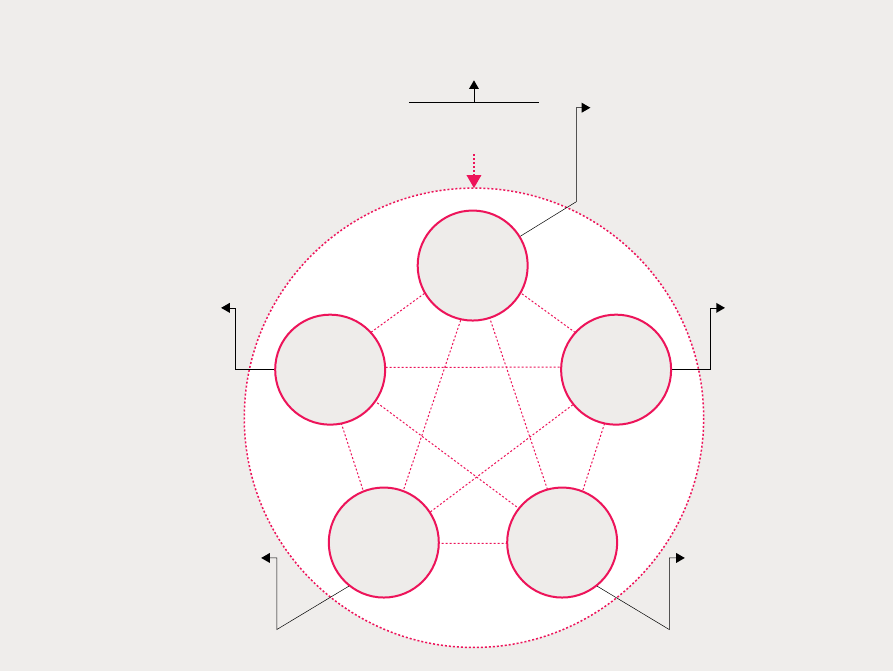
children were living in conict-aected countries, and
more than 18 percent were living in conict zones.
Between 2005 and 2020 there were more than
266,000 veried grave violations against children in
conict,
with the real number likely much higher.
Children engaged in armed conicts face various and
compounding threats, including death, injury and dis-
ability, as well as deprivations in nutrition, poor living
conditions, gender-based violence, obligations to take
part in torture and killings, and dangerous labour.
Conict also deprives children of education.
Digital technologies are revolutionizing both the
potential benets and potential threats of technol-
ogy for children, but the eects are unequal. Digital
technologies create opportunities for access to educa-
tion, breaking cycles of poverty and social needs for
children and young people. But digital divides exist
between low- and high-income countries, reaching
81 percentage points for children and young people
(gure 5.3).
Inequalities in access to digital technologies have
widened inequalities in education during the Covid-
19 pandemic, as the reliance on digital technologies
for education has grown.
This corresponds with
trends showing that dierences in school attendance
between the pre-pandemic period (with in-person
instruction) and the pandemic period (with online
teacher-assisted lessons) were more pronounced in
countries with higher multidimensional poverty.
The pandemic further exposed the gender digital
divide, showing that women and girls are at a dis-
advantage in digital skills, with bigger gaps in more
advanced skills, hindering their ability to take advan-
tage of technology.
Protection and empowerment strategies will dif-
fer for every age group. Children, especially those
in early childhood, depend on external inputs for
survival and development of basic capabilities. This
need demands action on the part of caregivers and
institutions to allow children to develop free from
Figure 5.1 Different groups of people experience new threats to human security differently
Source: Human Development Report Office.
Anthropocene
context
- Discrimination and human rights violations
- Citizenship rights denial for trans people
- Increased likelihood of homelessness
for young people who identify as lesbian,
gay, bisexual, transgender, intersex or
another sexual minority (LGBTI+)
- Unequal access to justice for Black people
- Technology lag for
older people
- Gender digital divide
- Skills gap for young
Black people
- Unequal access to health
- Increased risk of HIV
for LGBTQI+ people
- Ageism and mental health
- Indigenous peoples affected by planetary imbalances
- Women experience increased food insecurity
- Environmental migration and displacement
- Underfinanced humanitarian
aid for refugees
- Negative impact on young
people’s education
- Increased intimate partner violence
- Driver of migration
and displacement
- Increased risk of violence
against women and girls
- Hinders education
opportunities for young people
- Older people left behind
Digital
technology
threats
Health
threats
Inequalities
Violent
conflict
Covid-19
95
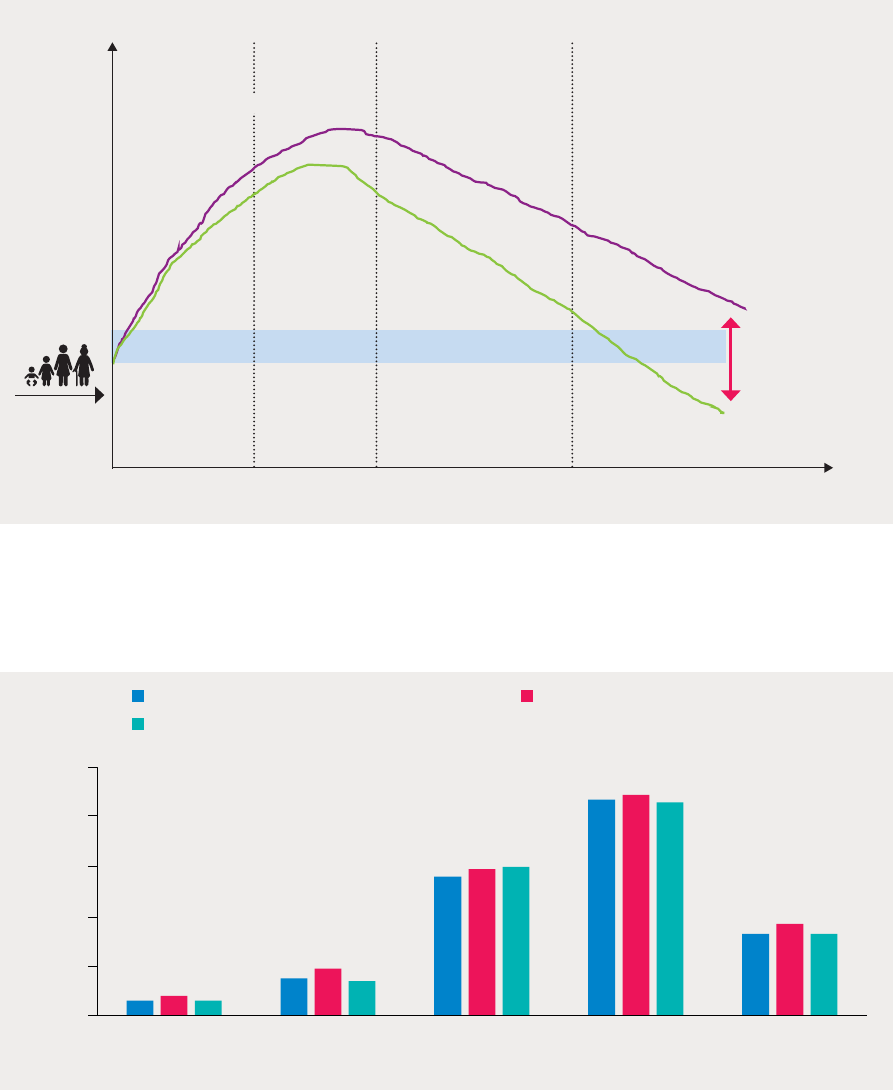
human insecurity. This does not mean that children
are not agents in their own lives and societies. Chil-
dren and adolescents are active participants in socie-
ty through cultural, social and political engagement,
and in many cases they are also participants in eco-
nomic activity and care work.
Recognizing their
agency in these areas is key to protection and empow-
erment strategies for children.
Figure 5.2 The change in functional capacity over the lifecycle has different implications for human
security challenges and thus requires different policies
Source:
Functional capacity
Childhood Youth Adult life Older age
Highest functional
capacity
Maintaining independence
and preventing disability
Possible range
of function
Rehabilitation and
ensuring quality of life
Age
Disability threshold
Growth and development
Figure 5.3 There is great inequality between high-income and low-income countries in young people’s
internet access at home
Source: UNICEF and ITU 2020.
6
15
56
87
33
8
19
59
89
37
6
14
60
86
33
0
20
40
60
80
100
Low income Lower middle
income
Upper middle
income
High income World
Children and young people (ages 0–25) Young people (ages 15–24)
School-age children (ages 3–17)
Internet access (percent)
96 NEW THREATS TO HUMAN SECURITY IN THE ANTHROPOCENE / 2022
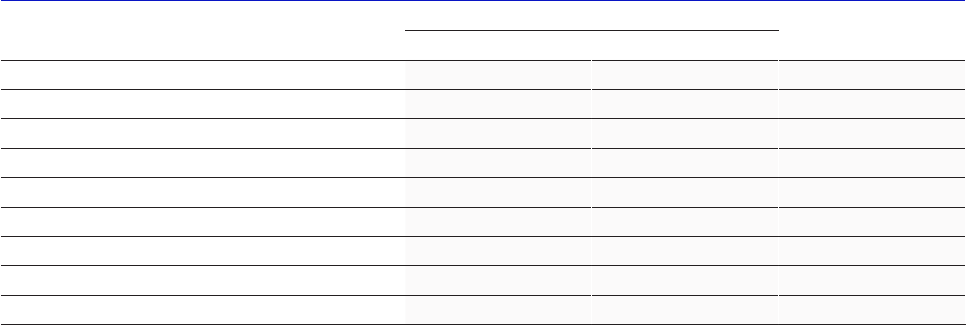
“
Children and adolescents are active
participants in society; recognizing their
agency in these areas is key to protection and
empowerment strategies for young people
Youth marks the shift to adult life, with a high-
er functional capacity in the transition from school
settings to workplaces. Having less experience and
fewer skills than older adults, young people can en-
counter entry barriers to the labour market and may
have high unemployment rates, pushed even higher
by the Covid-19 pandemic, which harmed groups that
tend to suer from the impacts of horizontal inequal-
ities. For instance, in the United States in May 2020,
although the unemployment rate declined among
White young people, the rate among non-White young
people rose.
Sectors where young people tend to be
overrepresented (retail and hospitality) have been the
hardest hit, with most jobs done by young people in
these sectors unable to be performed from home.
Young people are particularly aected by violent
conicts and organized crime. They also have gen-
dered vulnerabilities to violence against women and
girls, sexual assault, human tracking and forced la-
bour. Crime, violence and drug use have increased
with Covid-19 pandemic lockdowns, directly linked
to limited access to employment and the loss of so-
cial and community networks.
These factors can
force young people to pull out of civic spaces, reduc-
ing their visibility.
Young people are often exclud-
ed or given only a token role in civic spaces,
where
their voices are not heard to shape their own future.
In decisionmaking linked to the Covid-19 pandemic,
younger generations have not systematically gained a
seat at the table with policymakers and leaders.
De-
spite these challenges, young people have demon-
strated that they are critical agents of social change,
as they seek creative ways to prevent violence and
consolidate peace around the globe.
With longer life expectancies and lower fertility
rates, the global population is ageing. By 2050 an es-
timated 1 in 6 people will be older than 65
— 80 per-
cent of them in developing countries (table 5.1).
Ageing gradually reduces mental and physical capac-
ities and increases disease risks. While ageing is in-
evitable, the process can be widely dierent in speed,
nature and characteristics. Genetics play a part in this
variation, but much comes from a person’s physical
and social environment and their sex, ethnicity and
socioeconomic status.
At the same time, inequal-
ities within population groups carry over into older
age,
producing wide ranges in functional capaci-
ties.
Having higher dependency ratios is usually as-
sociated with greater economic pressure on the active
population and demands for higher scal spending to
support the older population.
Health outcomes for older people appear to be
strongly linked to disadvantages at earlier stages of
life that could have a cumulative eect.
Unhealthy
habits and behaviours that lead to poor health out-
comes in later life, such as smoking, high alcohol
consumption, low physical activity and diets low in
fruits and vegetables, have been linked to socioec-
onomic status.
In some countries where data are
available, evidence shows that lower socioeconomic
status is generally associated with increased smoking
Table 5.1 Number of people age 65 or older, by geographic region, 2019 and 2050
Region
Number of people age 65 or older (millions)
Percent change,
2019–20502019 2050
World 702.9 1,548.9 120
Northern Africa and Western Asia 29.4 95.8 226
Sub- Saharan Africa 31.9 101.4 218
Oceania, excluding Australia and New Zealand 0.5 1.5 190
Central and Southern Asia 119.0 328.1 176
Latin America and the Caribbean 56.4 144.6 156
Eastern and South-Eastern Asia 260.6 572.5 120
Australia and New Zealand 4.8 8.8 84
Europe and Northern American 200.4 296.2 48
Source: UNDESA 2019.
97
prevalence by age, race, ethnicity and region, regard-
less of sex.
Dierences in food expenditure also
show the prevalence of less healthful foods in lower
socioeconomic groups.
Communities with lower so-
cioeconomic status face limited access to aordable
exercise facilities,
possibly contributing to higher
prevalence of obesity and diabetes in lower income
populations. These risks have greater chances of be-
coming vulnerabilities as age advances, likely leading
to health deprivations for older poor people.
“
Young people have demonstrated that
they are critical agents of social change, as
they seek creative ways to prevent violence
and consolidate peace around the globe
People facing higher deprivations live shorter lives
and spend a bigger proportion of their life in poor
health.
Healthy life expectancy is associated with
better mental health. In Denmark men with mental
disorders lost 10.2 more healthy life-years than men
without mental disorders, and women with mental
disorders lost 7.34 more life-years than women with-
out mental disorders.
People older than 65 need support because of natu-
ral declines in some functional capacities and higher
risks for some diseases. In Organisation for Econom-
ic Co-operation and Development countries their in-
comes are on average lower than those of the total
population,
and their risk of falling into poverty or
remaining in poverty is signicant.
Older women
are at a higher risk than men for poverty due to gen-
der inequalities that persist from earlier in their lives.
Their pensions tend to be lower because of lower
wages, gaps in employment due to childbearing and
childrearing labour, and longer life expectancies —
and their already lower savings are stretched out over
longer periods of time.
As the socioeconomic analysis intersects with other
capabilities such as health, physical and psychosocial
dependency and support networks, an increasingly
complex picture forms around the experience of age-
ing on wellbeing and agency. A study on multidimen-
sional poverty and quality of ageing in Peru showed
that being male, being younger, being more educat-
ed, being employed, not smoking, lacking physical
disabilities, having proper nutrition, showing high-
er empowerment and self-esteem and being free of
mental disabilities were all positively related to suc-
cessful ageing for people older than 65 living in multi-
dimensional poverty.
The internalization of age stereotypes begins early
in life and is present at all life stages. Stereotypes rep-
resent subconscious ideas about older people that are
then embodied through attitudes towards ageing and,
as discussed in chapter 1, represent a direct threat to
human security. Experiences of ageism have negative
eects on frailty outcomes for older people through
negative age stereotypes. More positive attitudes to-
wards and self-perception of ageing have been linked
to better physical outcomes and less frailty in old age.
Knowledge of the ageing process reduces both anxie-
ty about ageing and ageist attitudes themselves.
This
points to an important rst step in addressing ageism:
information and education on the ageing process.
A recent example of this has been seen during the
Covid-19 pandemic. Guidelines for rationing looked
to maximize the lives and life-years saved, which
often resulted in making older age and comorbidi-
ties the main determinants hindering access to limit-
ed care services.
There are also relevant inequality
components to rationing, which is more likely, more
severe and more often required in low-income set-
tings, with systems that are less equipped and have
fewer resources.
Violence and economic
discriminations harm the human
security of women and girls
Gender inequality is one of the most widespread
horizonal inequalities. Women’s livelihoods are se-
verely impaired by poverty, with around 435 million
women and girls living on less than $1.90 a day in
2021 — including 47 million pushed into poverty dur-
ing the Covid-19 pandemic.
In low-income coun-
tries 92.1 percent of employed women are in informal
employment compared with 87.5 percent of men.
In lower middle-income countries 84.5 percent of
women are in informal employment compared with
83.4 percent of men.
Women have lower earnings,
lower savings, worse working conditions and less ac-
cess to nancial accounts, reducing their capacity to
absorb economic shocks.
Unequal conditions leave
women with less protection and resilience against
unemployment, health emergencies, paid sick leave
98 NEW THREATS TO HUMAN SECURITY IN THE ANTHROPOCENE / 2022
and other basic rights. Women in many countries
have low access to bank accounts, with barriers such
as lack of knowledge of nancial services, cultural or
religious factors and lack of provisions or aversion to
credit.
In societies where traditional patriarchal so-
cial norms are pervasive, women are more econom-
ically dependent on men and are constrained from
making decisions for themselves and their families,
hurting both their wellbeing and agency.
But gender inequality not only is a glaring injustice
against women; it also harms society. For instance,
women’s food insecurity cascades into the poorer
nutrition and health outcomes of entire families and
communities,
and their economic insecurity can
heavily restrict their agency. The sex gap in access to
food increased from 2018 to 2019, with women liv-
ing in rural settings the most aected— paradoxical
since women and girls represent most food producers
and food providers.
Still, in more than 90 countries
female farmers lack equal rights to own land and to
access other productive resources such as livestock,
impacting nutrition and health outcomes of entire
families and communities.
Globally, the prevalence
of food insecurity is higher for women than for men,
with the largest gaps in Africa and Latin America and
the Caribbean.
Natural hazards kill more women than men on av-
erage and leave women at higher risk for displace-
ment because of their dependence on forests, land,
rivers and rainfall.
The Covid-19 pandemic has had
a disproportionate toll on women in critical areas of
human development. Women have had higher risk
exposure to the virus by being overrepresented in the
frontlines of the response. They are overrepresented
in the hardest hit sectors cwomen account for 39 per-
cent of global employment but 54 percent of total job
losses during the pandemic.
Teenage pregnancies
and violence against women and girls increased sub-
stantially during the pandemic.
Women’s sense of
not being in control and living in fear are due to tra-
ditional social norms and patriarchal structures
that
result in the existing sex inequalities that harm their
wellbeing and agency.
Violence against women and girls, one of the
most brutal forms of harming women’s wellbeing
and agency,
encompasses any action or behaviour
that results in, or is likely to result in, physical, sexu-
al or mental harm or suering for women and girls.
Violence against women and girls is the most obvious
manifestation of deep power imbalances.
Fear of
violence is a common experience for women every-
where. In the triangle of violence, direct violence re-
fers to violence that is visible and explicit, including
manifestations of physical, sexual and psychological
violence (gure 5.4).
Indirect violence, or structural
and cultural violence, is subtle and can be invisible.
Structural violence is built into social systems and
power relations; manifests in inequalities in oppor-
tunities, access to services and representation in de-
cisionmaking; and is perpetuated through economic
violence or child marriage, both of which limit wom-
en’s opportunities. Cultural violence is a result of
traditional social norms about gender and feminin-
ity, manifest in dierent forms of psychological and
emotional violence such as stereotyping, prejudices,
sexist language and micromachismos.
All forms of
violence are interconnected.
Cultural violence le-
gitimizes both direct and structural violence.
Subtle
forms of violence, called microaggressions, build up
to severe forms of violence, such as rape and femi-
cide (box 5.1).
“
As the socioeconomic analysis intersects with
other capabilities such as health, physical and
psychosocial dependency and support networks,
an increasingly complex picture forms around the
experience of ageing on wellbeing and agency
Economic violence, pervasive around the world, in-
volves making or attempting to make a person nan-
cially dependent by maintaining total control over
nancial resources, preventing the person from hav-
ing a nancial account, withholding access to money
or forbidding attendance at school or work.
It can
deepen poverty and hinder educational attainment or
work opportunities.
Psychological violence involves
causing fear by intimidation, whereas emotional vio-
lence refers to undermining a person’s sense of self-
worth. Psychological and emotional violence can
start with microaggressions. Targets of violence have
named psychological abuse and living under fear as
more harmful than direct physical violence.
Intimate partner violence is widespread around
the world, with 27 percent of ever-married/partnered
women ages 15–49 years having experienced it. The
highest prevalence is in Southern Asia (35 percent)
99
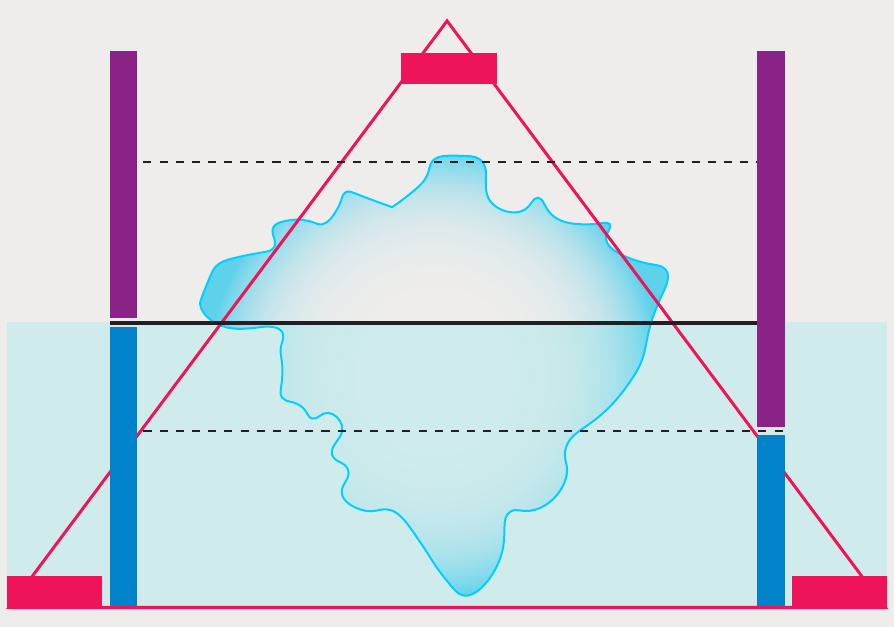
and Sub- Saharan Africa (33 percent).
In some set-
tings social and cultural norms treat violence as a
justiable response to women’s perceived misbehav-
iour; these beliefs contribute to intimate partner vio-
lence being treated as a private matter rather than as
a serious threat to women’s rights and security.
At
least 200 million girls and women alive today in 30
countries have undergone female genital mutilation.
“
Violence against women and girls is the most
obvious manifestation of deep power imbalances
Violence is typically underreported because of
three factors:
• Stigma: Women who have experienced violence
can be perceived as dependent, unassertive, help-
less, depressed and defenceless by themselves,
their families, authorities and society in general.
• Denial: In dierent environments women and
girls might not be aware that routine situations
are abusive, so they consider it normal and do not
name it as violence.
• Mistrust: The failure of authorities to recognize
and address violent actions is one of the main risks
women consider before reporting.
Inequalities in power across
race and ethnicity hurt
everyone’s human security
Race is typically associated with physical character-
istics that become socially signicant (such as skin
colour), while ethnicity is associated with cultural ex-
pression and identication (through language, shared
traditions or beliefs). Both have been interpreted
dierently over time and are still viewed dierent-
ly in dierent contexts, but this chapter emphasizes
people’s lived experience and how they self-identify,
recognizing that this process is often extremely con-
strained where social categories of race and ethnicity
Figure 5.4 Different forms of violence against women and girls: Linking the iceberg model to the
violence triangle
Source:
Direct
Structural Cultural
Subtle
Invisible
Explicit
Visible
Femicide
Rape Sexual abuse
Physical aggressions
Trafficking
Yelling Isolating Insulting
Humiliating Devaluating Ignoring
Disregarding Blaming Emotional
blackmailing
Controlling Jealousy Sexist jokes
Sexist language Invisibilizing
Female genital mutilation
Child marriage
Threatening
Media stereotyping
Mansplaining Gaslighting
Manterrupting Bropriating
Other micromachismos
100 NEW THREATS TO HUMAN SECURITY IN THE ANTHROPOCENE / 2022

are associated with specic physical or cultural fea-
tures.
Analysing race and ethnicity dynamics oers
an opportunity to use a dierent lens to understand
what security means, uncovering assumptions, co-
lonial legacies where relevant and, more broadly,
power relations.
Horizontal inequalities between
racial and ethnic groups often persist over time,
with eects across many dimensions: political, eco-
nomic, cultural and social.
When racial and ethnic
identities become connected to political power and
mobilization, more powerful groups can thwart the
advancement, dignity and rights of others. In this
vein the distribution of power in many contexts, up-
held through colonialism and other historical pro-
cesses of subjugation, has favoured the wellbeing of
White people at the expense of Black and indigenous
peoples.
When political power is distributed along
ethnic lines, ethnic dierences can be manipulated or
leveraged by political and other leaders as points of
contestation between groups, generating social ten-
sions, mistrust and violations of rights and dignity.
In the most extreme cases invoking these inequalities
between ethnic groups can foster violent conict.
Formal standings and ocial positions against
racism can hide the way racial inequality has been
shaped and reproduced through development.
It
is important to recognize how longstanding concep-
tions of development and security have themselves
upheld racial inequalities.
Racial identities are gen-
erated in part through a process of “othering,” where-
by groups dene and internalize their own identities
through their social relations to others. Othering is
closely intertwined with existing power relations. An
example is the construction of “the west” as a social
category associated with progress and security, de-
ned in relation to “other” regions that are associated
with lack of progress and, concomitantly, as places of
human insecurity.
“
Analysing race and ethnicity dynamics
oers an opportunity to use a dierent lens to
understand what security means, uncovering
assumptions, colonial legacies where relevant
and, more broadly, power relations
This section considers racial inequalities as experi-
enced by Black people and indigenous peoples. Both
groups are excluded from opportunities and face in-
security shaped by racist and colonial legacies, lack-
ing rights, recognition and representation.
More
Box 5.1 Femicide: The killing of women and girls because of their gender
Perpetrators of violence use different forms of abuse to exercise and maintain control and domination. The
killing of women is the extreme manifestation of this pattern.
The UN Vienna Declaration
1
recognizes femicide as the killing of women and girls because of their gender,
which can take different forms: the murder of women because of intimate partner violence; the torture and
misogynist slaying of women; killing of women and girls in the name of “honour;” targeted killing of women
and girls in the context of armed conflict; dowry-related killing of women; killing women and girls because of
their sexual orientation and gender identity; killing of aboriginal and indigenous women and girls because of
their gender; female infanticide and gender-based sex selection foeticide; genital mutilation–related deaths;
accusations of witchcraft; and other femicides connected with gangs, organized crime, drug dealers, human
trafficking and the proliferation of small arms.
Femicide differs from male homicide in specific ways. For example, most cases of femicide are committed by
partners or ex-partners and involve ongoing abuse, threats or intimidation, sexual violence or situations where
women have less power or fewer resources than their partner. In 2020, 47,000 women and girls were intentionally
killed by an intimate partner or family member, and on average a woman or girl is killed every 11 minutes by an
intimate partner or a family member.
2
Some actions by countries to address femicide are legal changes, early interventions, multiagency efforts,
and special units and training in the criminal justice system. Latin American countries specifically criminalize
femicide. Yet there are no signs of a decline in gender-related killing of women and girls.
3
Notes
1.ECOSOC 2013. 2.UNODC 2021. 3.UNODC 2018.
101
than 370 million indigenous peoples rely on commu-
nal land and resources,
but much of this land is held
only through customary tenure, leaving communities
vulnerable to land grabs and expropriation. About
48 percent of the Quilombolas in Brazil live in se-
verely food-insecure households, with the North and
Northeast regions of the country facing the most crit-
ical situation.
About 25 percent of Māori children
in New Zealand live in poverty, and 29 percent live
in food-insecure households.
Indigenous peoples
have based their survival on traditional occupations,
such as farming, hunting or shing. This, combined
with discrimination, has tended to limit them to wage
work in the informal economy (domestic work, street
vending, agriculture and construction), traditionally
in low productivity industries where they do not earn
enough to lift themselves out of poverty and food in-
security.
Informal work increases their vulnerabil-
ity to exploitation and abuse, with lack of respect for
their work rights and lack of social protection.
Indigenous peoples also face discrimination
through the repression of cultural identities. When
dominant or colonial languages were made ocial,
indigenous languages were discouraged or made ille-
gal,
and traditional religions and cultural practices
were often outlawed.
Across America children were
forcibly taken and sent to special schools to assimilate
the new language and traditions, facing sexual and
physical abuse or corporal punishment for using their
native tongue.
For indigenous peoples in Canada to
have full citizenship, they had to assimilate to euro-
Canadian gender, sexual and familial norms.
With lower representation and opportunities to
participate in their communities, indigenous peoples
are less likely to advocate for themselves, height-
ening horizontal inequalities. Indigenous peoples
around the world are aware of the discrimination
and lack of representation; they know their rights,
and they are very active in advocating for them. But
they face violence from business interests and can
be dismissed by governments because of lack of rep-
resentation. The number of killings of environmental
activists has more than tripled since the early 2000s.
In 2019 a record 212 people were killed defending
their land and environment; 40 percent of them be-
longed to indigenous communities, and more than a
third of fatal attacks between 2015 and 2019 targeted
indigenous peoples.
“
Racial discrimination through inequitable
systems that can take the form of structural racism
aects education, healthcare, employment, income,
benets, social protection and criminal justice
Racial discrimination through inequitable systems
that can take the form of structural racism aects ed-
ucation, healthcare, employment, income, benets,
social protection and criminal justice. Expressions of
racism that shape Black people’s experiences of inse-
curity include the prejudices (negative attitudes), ste-
reotypes (categorical beliefs) and unequal treatment
associated with their race. Structural racism has di-
rect consequences for human security. For example,
Black people receive lower quality health care and
live in racially segregated areas or in geographic prox-
imity to low-quality hospitals.
Black people face
exclusion and discrimination in education and em-
ployment. For instance, they are stereotyped as less
warm and less capable than their peers.
There is
evidence that Black populations have borne a dispro-
portionate toll during the Covid-19 pandemic.
In
many cases Black people are more likely to be arrest-
ed and incarcerated and face more punitive sanctions
in the criminal justice system.
People on the move can be forced to
follow paths of human insecurity
Journeys of human mobility can take many forms and
be connected to dierent and intersecting human se-
curity threats along the way. When migrating through
irregular channels, people’s dignity and therefore
human security are especially vulnerable to threats
ranging from tracking, abuse, violence and death
in transit to lack of access to basic services and for-
mal employment, exploitation, discrimination and
restrictions of basic rights at destination points (g-
ure 5.5). Although most people migrate voluntarily
through labour or family migration,
many others
are displaced or forced to move
due in part to the
impacts of the Anthropocene context (see chapter 2),
sociopolitical and economic instability or conict and
violence.
As dangerous planetary change continues, com-
munities around the world — but especially in
developing countries — are increasingly aected by in-
tensifying extreme weather events and other climate
102 NEW THREATS TO HUMAN SECURITY IN THE ANTHROPOCENE / 2022
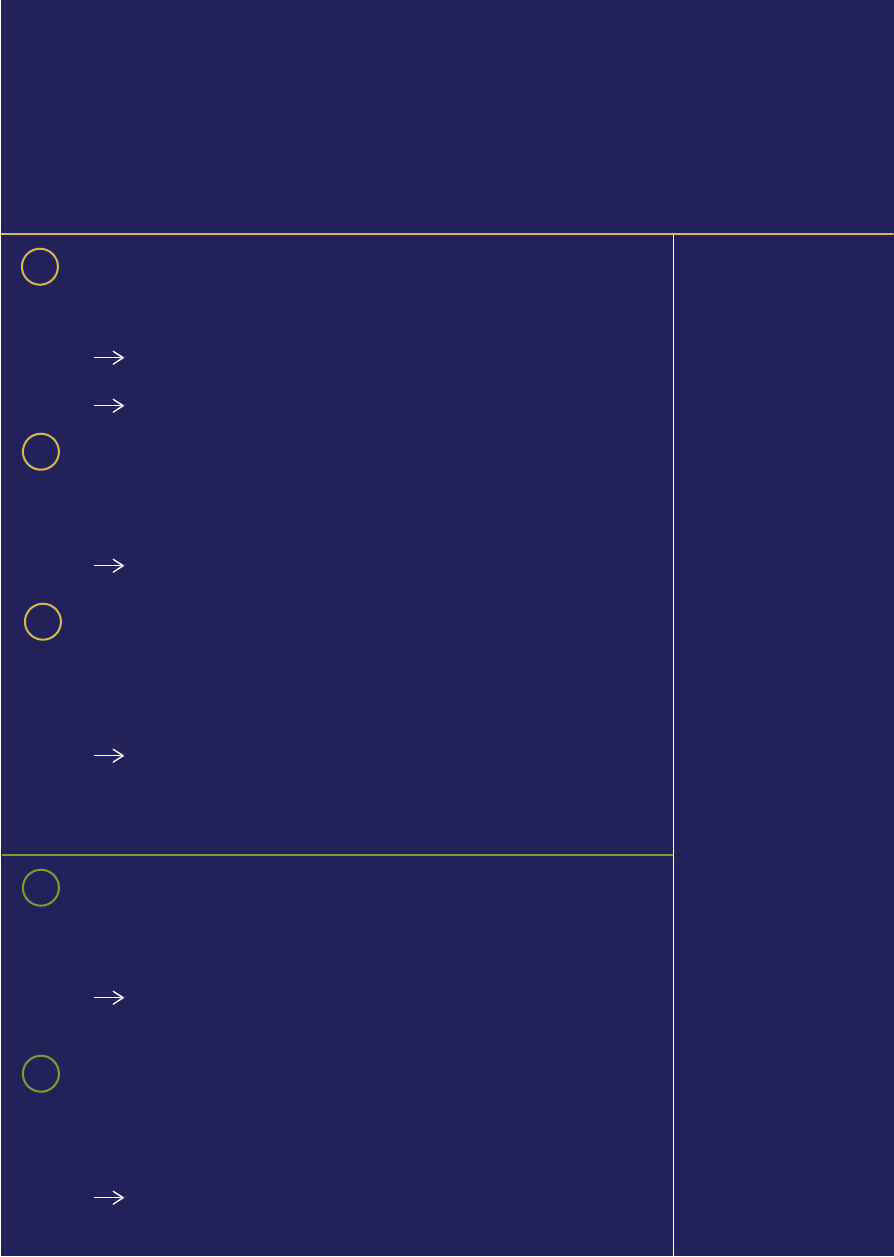
Figure 5.5 Migration and displacement on a path of insecurity
(continued)
Threats to human security triggering migration and displacement
Threats to human security in transit
Violence, conflict and instability
War, conflict, gang violence, organized crime and human rights abuses are
forcing people to flee in order to preserve their life and security.
6.6 million people have been forced to flee the Syrian Arab Republic
since conflict broke out a decade ago.
More than 5 million Venezuelans have left the country amid severe
sociopolitical instability.
Disaster
Weather-related disasters, aggravated by pressure on planetary systems,
geophysical disasters and other sudden-onset and slow-onset hazards, displace
millions of people every year.
In 2020 alone 30.7 million people were internally displaced due to disaster.
Close to 40 percent of that happened in the East Asia and the Pacific
region due to typhoons, floods, earthquakes and volcanic eruptions.
Poverty, lack of opportunities and scarcity
Dire development crises of diverse backgrounds create food insecurity, poverty,
scarcity and lack of resources and opportunities for millions of people worldwide.
Some turn to migration as a mitigation strategy or a solution in search for a
better life.
Economic or labour migration dominates some of the most important
migration corridors in Southern Asia, such as Bangladesh–India,
Afghanistan–Pakistan, India–Pakistan and Nepal–India.
Hazardous journeys
Migrants and displaced persons attempt dangerous journeys to escape insecurity,
but they can encounter more insecurity and even death along the way.
Deaths at some of the most dangerous migration routes:
• Mediterranean Sea: 22,977 deaths and missing migrants since 2014,
18,617 of them in the Central Mediterranean route.
• American continent: 5,822 deaths and missing migrants since 2014,
3,580 of them in the United States–Mexico border route.
Smuggling, trafficking and exploitation
The absence of sufficient institutional avenues for a way out of insecurity leads
people to migrate in irregular situations, bypassing formal institutions. This
exposes them to a range of threats to their human security.
Smuggling networks have become a profitable and complex industry
(estimated at $6.75 billion a year only for the East, North and West Africa
to Europe route and the South America to North America route). Migrants
risk violence, abuse, exploitation and more in the hands of smugglers.
1
1
2
2
3
Compounding risk
in Central America’s
Northern Triangle
Long-standing violence
and organized crime
41 percent of migrants from
the Northern Triangle cite
insecurity or violence as one
of the two main reasons for
migration.
Searching for better
opportunities
Three of the poorest
countries on the continent.
Fleeing poverty and
the possibility of better
opportunities is one of the
main drivers for migration.
Disasters and climate
change aggravating an
already dire situation
Drought in 2018 put 3.2
million people at risk of food
insecurity in El Salvador
Hurricane season 2020:
Displaced 310,000 people
in Guatemala and 175,000
people in Honduras and
severely affected agriculture
and fishing in the region.
“Coyotes y polleros”
75 percent of migrants
paid smugglers to help
them make part of or
the entire journey to the
United States, paying
often between $4,000 and
$8,000.
Northern Triangle
migrants targeted, killed,
extorted, kidnapped
Some estimates: More than
11,000 migrants kidnapped
in Mexico in 2010; 2,180
Central Americans
disappeared in Mexico at
the end of 2015. More than
70,000 have disappeared
since 2006.
Migration and displacement
On a path of insecurity
103
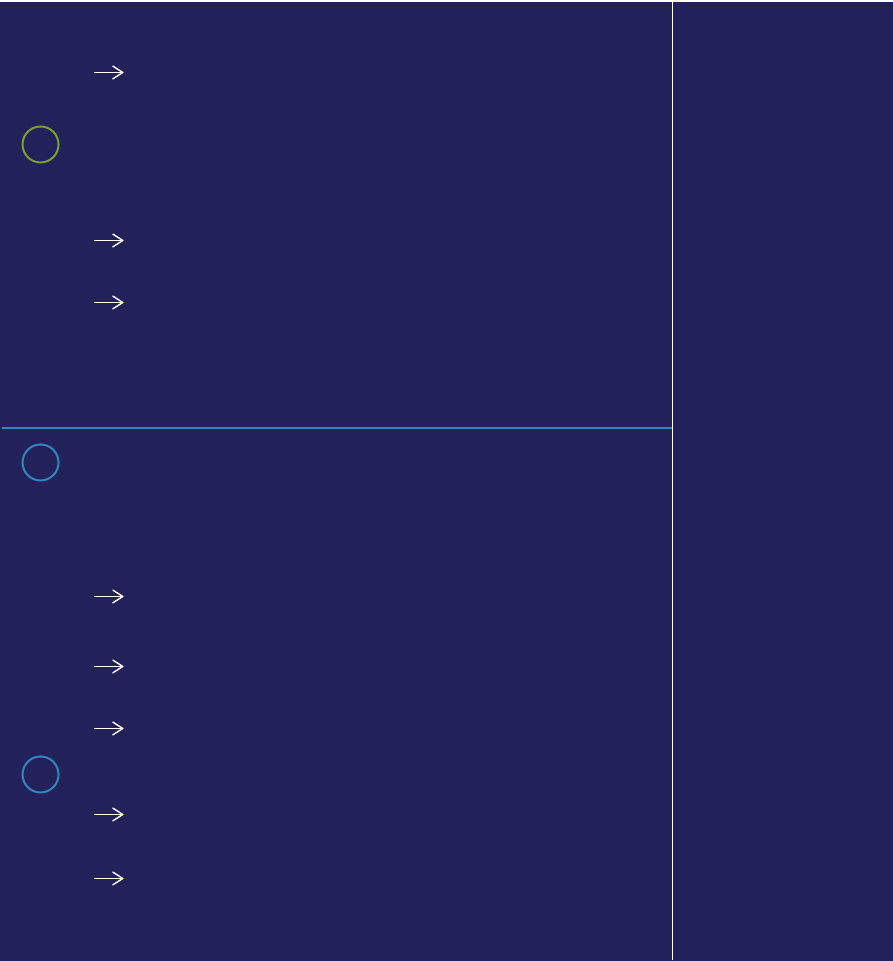
phenomena that threaten their lives, livelihoods and
human security. For example, severe droughts and
oods endanger water access and food security and
force seasonal or permanent migration. It is predicted
that by 2050 around half of the world population, and
as much agricultural production, will be at risk due to
increased drought and ood variability,
a potential
push-factor for migration.
Rising sea levels are also
expected to inuence the migration of millions, par-
ticularly aecting Small Island Developing States and
countries with large coastal settlements.
Individu-
als, families and communities may thus choose mi-
gration as a way to mitigate their environmental risk
and protect their human security.
Figure 5.5 Migration and displacement on a path of insecurity
Source: Center for American Progress 2020; Community Psychology n.d.; Eurostat 2021b; Freedom for Immigrants 2021; García Bochenek 2019;
Global Initiative Against Transnational Organized Crime 2018; Human Rights Watch 2018, 2019, 2020a, 2020b, 2021; IADB 2018; IDMC 2020,
2021; International Crisis Group 2016; IOM 2016, 2019b, 2020a, 2020b, 2021; IPUMS USA 2021; Laczko, Singleton and Black 2017; Long and Bell
2021; Migration Data Portal 2021a, 2021b; Repeckaite 2020; UNHCR 2018, 2021a, 2021b, 2021c; UNHCR and UNICEF 2019; UNODC 2020; US
Customs and Border Patrol 2021; US Department of Homeland Security 2019.
Threats to human security as an immigrant or a displaced person
Although not the same, migrant smuggling can turn into human trafficking.
• Libya: 76 percent of 1,400 Libyan migrants surveyed in Italy
experienced at least one indicator of human trafficking (International
Organization for Migration), and 84 percent suffered inhumane
treatment, including brutal violence and torture (Oxfam)
Detention, deportation and family separation
Some migrants and displaced persons trying to cross borders into a different
country are detained.
Across the world cases of inhumane conditions in detention centres,
families forcibly separated, prolonged detentions of one or more years,
sexual abuse, tortures and other forms of violence have been reported.
Reports around the world show that deportation processes can be violent
and abusive, and deportees often face increased insecurity going back to
no support system, no refuge and even to revenge for having fled.
Dangers and challenges
Undocumented migrants face great insecurity by living outside the protection
and coverage of most formal institutions and services. Documented migrants
still face insecurity and inequality due to limitations of their migratory status,
discrimination and other barriers of formal institutions.
10 percent of human trafficking victims are targeted because of their
immigration status. This is also used by traffickers as leverage to keep
exploiting victims.
Undocumented migrants participate mainly in the informal economy,
which exposes them to unfair wages and working conditions, exploitation,
lack of social protection and high job insecurity. Shocks such as the
Covid-19 pandemic disproportionately affect informal workers.
In the European Union the unemployment rate of non-EU born immigrants
is 13.9 percent, more than double the 6.1 percent of native workers.
Insecurity at refugee camps and temporary settlements
4 million out of 7.4 million school-age refugee children under the United
Nations High Commissioner for Refugees mandate were out of school
in 201 7.
The enrollment gap between refugee children and children globally
stands at 31 percent for primary education and 61 percent for secondary
education.
1
2
3
Rising deportations and
US Border Patrol encounters
More than 11,700 deported
to the Northern Triangle
from the United States
between 2017 and 2019.
More than 62,000 monthly
apprehensions or expulsions
on average in 2021.
Unaccompanied children
The number of
unaccompanied children
from the Northern Triangle
apprehended at the United
States–Mexico border
doubled to more than 21,500
between 2012 and 2017.
66,000 unaccompanied
children from the Northern
Triangle registered in
Mexico since 2015.
Higher unemployment,
less qualified jobs
Latinos have historically
had an unemployment rate
1.6–1.9 times higher than
that of non-Hispanic Whites
More than 50 percent of
Northern Triangle migrants
work low-wage jobs in
construction, food services
and cleaning compared
with 20 percent of all
migrants.
Access to basic services
and social protection
Around 20 percent of
Latinos in the United States
lack health insurance,
compared with 7.3 percent
of non-Hispanics.
Around 60 percent of
Northern Triangle migrants
pay taxes in the United
States, but only 23 percent
report receiving benefits
from social protection
programmes.
* Nonexhaustive list of risks and hazards
104 NEW THREATS TO HUMAN SECURITY IN THE ANTHROPOCENE / 2022
The number of people forcibly displaced due to
conict or disaster has trended up over the past dec-
ade, reaching more than 80 million worldwide (see
chapter 4). More than 86 percent of refugees are host-
ed in developing countries, and 27 percent of all ref-
ugees are hosted in the Least Developed Countries.
Managing incoming people presents a complex chal-
lenge for host countries, which struggle to safeguard
the dignity and human security of those on the move
and to protect and empower refugees and migrants.
And the Covid-19 pandemic has brought added op-
erational and nancial challenges to the disaster
displacement response, further exacerbating the
impacts of displacement on human security and the
wellbeing of those aected.
In general, international migration is intimately
connected with several dimensions of human secu-
rity. Nearly two-thirds of the close to 272 million in-
ternational migrants worldwide in 2019 were labour
migrants.
While seeking better opportunities, la-
bour migrants face insecurities ranging from discrim-
ination to barriers in access to basic services such as
health, education and housing, even though they can
ll skill and labour gaps and contribute to host socie-
ties and economies.
Discrimination impairs the mental and physical
health of migrants.
Migrants are also discriminat-
ed against and subjected to violence because of mis-
information and discriminatory beliefs that they hurt
the economic prospects of host-country citizens by
stealing jobs or draining social services.
Ending discrimination against different
expressions, behaviours or bodies
enhances human security for all
LGBTI+
people face specic human security chal-
lenges, stemming from repressive (and often violent)
responses to their having identities, expressions, be-
haviours or bodies that are perceived to transgress
traditional dominant gender norms and roles.
The human security discourse has not acknowl-
edged the dierent gender identities and sexual ori-
entations or incorporated LGBTI+ experiences of
human insecurity.
In terms of freedom of want,
LGBTI+ people face discrimination in home own-
ership, credit and nancial resources, education
and employment. They also face impediments in
exercising the right to full citizenship and in access to
basic services — as well as increased health risks and a
greater likelihood of being homeless. They face par-
ticular risk of harm in societies that do not tolerate
diversity.
“
The human security discourse has not
acknowledged the dierent gender identities
and sexual orientations or incorporated
LGBTI+ experiences of human insecurity
To be recognized as a person before the law is a
human right and key to accessing education, work,
housing and health services, to political participa-
tion and to protection from violence, torture and dis-
crimination.
LGBTI+ people do not have the right
of recognition of their identity and full citizenship
in 87 percent of the world’s 193 countries.
In many
countries trans women reported experiencing vio-
lence when they attempted to get their government-
issued identity cards, passports or electoral cards.
LGBTI+ people, especially young LGBTI+ peo-
ple, have a greater likelihood of being homeless due
to familial rejection; economic and legal issues; dis-
crimination in home ownership, credit and nancial
resources; mental illness; addiction; or eviction.
Some 15–30 percent of young people experiencing
homelessness may identify as LGBTI+.
In many
countries LGBTI+ people have low visibility, with
fewer than 15 percent disclosing their sexual orien-
tation, gender identity or gender expression to their
families in 2016 and around 5 percent in schools,
workplaces or communities.
When employers dis-
criminate or refuse to hire transgender people for not
having certain documents, this pushes LGBTI+ peo-
ple to less productive positions than they are qualied
for — such as jobs in the informal sector.
Gay cisgender men have higher risk of contract-
ing HIV. In South Africa HIV prevalence among
LGBTI+ people ranges from 10 percent in Cape Town
to 50 percent in Johannesburg.
Lesbian and bi-
sexual women have the lowest STD prevention rates
in Thailand, where 84 percent of bisexual women
and 90 percent of lesbians have never been tested for
HIV.
The stress and trauma LGBTI+ people expe-
rience can result in poor mental and physical health
outcomes. A study by the US Centers for Disease
Control and Prevention reports that LGBTI+ young
105

people are four times as likely as cisgender students
to seriously consider suicide.
Due to stigma LGBTI+ people may be denied ac-
cess to health, education or technology services.
Health care providers often do not understand their
unique needs.
Bullying and exclusion at schools
can reduce their ability to study or lead them to skip
school.
In Thailand 41 percent of LGBTI+ people
and 61 percent of transgender women reported dis-
crimination as students in 2018.
Technology-wise
they are overlooked by automated gender recogni-
tion of articial intelligence, and the digital divide
is higher for older LGBTI+ people.
LGBTI+ people
are also more prone to online violence and discrimi-
nation, with 64 percent of LGBTI+ social media users
experiencing harassment and hate speech.
Regarding freedom from fear, anxiety and indig-
nity, LGBTI+ people endure torture, inhumane and
degrading treatment, criminalization, targeted phys-
ical and sexual attacks, forced medical interventions,
conversion therapies and killings. In many countries
men perceived to be gay have been targets of arbi-
trary detentions, including other forms of violence
such as electric shocks, beatings, insults and humil-
iations.
Violence can start early in life in dierent
spaces (home, school, work, public spaces, online),
and the threat of violence and abuse lasts through-
out their lives, with greater risk for sexual violence.
LGBTI+ people are stigmatized and pathologized
through their lives, being perceived as ill, disordered,
malformed or abnormal.
The vast majority of
LGBTI+ people in several countries have been subject
to violence, with higher incidence for gay men, and
many have experienced sexual violence.
Through-
out LGBTI+ people’s lives discrimination reduces
their access to education, employment and social
protection and can lead to death (box 5.2).
“
Agency is key for the simultaneous achievement
of empowerment and protection, placing the
person at the heart of the security actions
One of the main challenges in assessing the cov-
erage of human rights, discrimination and violence
is the lack of global and national statistics and data
on gender identity. And sexual orientation puts pol-
icymakers in uncharted territory as they craft pro-
grammes and policies that aect LGBTI+ people
and their families. The lack of disaggregated data
also risks grouping the dierent identities under the
LGBTI+ umbrella, despite dierent needs and expe-
riences of insecurity.
Box 5.2 Understanding transfemicide
Trans and gender-diverse people face discrimination and marginalization every day that can lead to violence
and death. The murder of transgender people is sometimes reported but often in a transphobic way. In most
countries there is no formal data collection to describe the nature, frequency or extent of transgender homicides.
Since 1980 activists around the globe have shed light on transphobic violence. The Brazilian lesbian, gay, bisexual
and transgender organization Grupo Gay da Bahia and the US Transgender Day of Remembrance website were
pioneers.
In 2009 the Trans Murder Monitoring Observatory started to systematically monitor, collect and analyse re-
ports of the killing of trans and gender-diverse people worldwide.
1
Its latest data show an alarming increase from
149 in 2008 to 375 in 2021 — or 151 percent. About 70 percent of the recorded murders happened in Central and
South America. About 96 percent of the recorded murders were trans women or transfeminine people, for whom
the risk for sexual violence increased because 58 percent of murdered trans women and transfeminine people
were sex workers.
2
Other identities intersect as well: in the United States 89 percent of the trans people murdered
were Black, and in Europe 43 percent of the trans people murdered were migrants.
3
Notes
1.Balzer, LaGata and Berredo 2016; Trans Murder Monitoring Observatory 2020. 2.Trans Murder Monitoring Observatory 2021. 3.These figures
are incomplete because data are not systematically collected in most countries and because families, authorities and media often misgender
trans people. It is not possible to estimate the number of unreported cases. Additionally, the Covid-19 pandemic has disproportionately im-
work, on top of the stigma and criminalization that leaves trans sex workers exposed to violence. And it has revealed the lack of legislation and
106 NEW THREATS TO HUMAN SECURITY IN THE ANTHROPOCENE / 2022
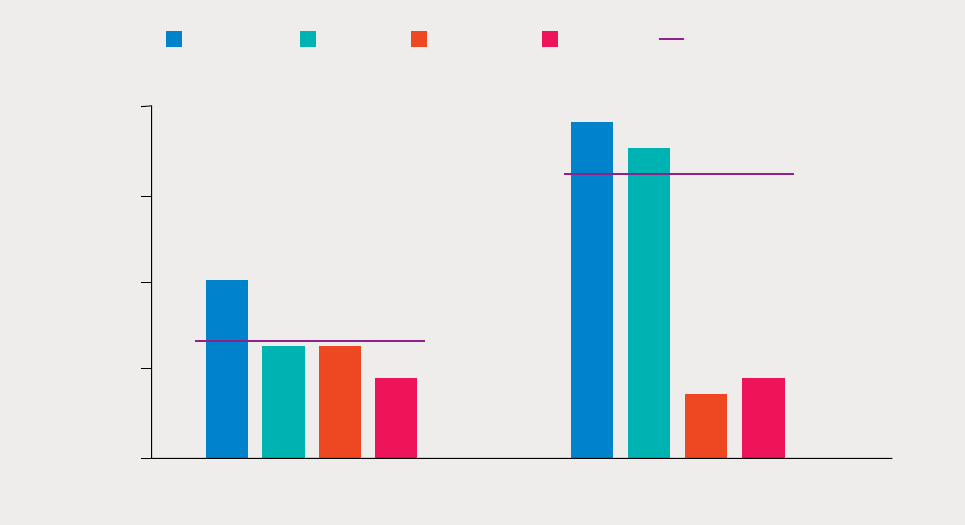
Eliminating horizontal inequalities
to advance human security:
The salience of agency and
the imperative of solidarity
The previous sections describe how some groups of
people experience violations of their human rights
through exclusion, discrimination and violence. Pro-
tection and empowerment strategies are directly
relevant to enhancing the human security of these
groups. Agency is key for the simultaneous achieve-
ment of empowerment and protection, placing the
person at the heart of the security actions (as dis-
cussed in chapter 1).
When discriminated groups are able to shape de-
cisionmaking, potential tensions between protection
and empowerment strategies diminish. Putting agen-
cy at the centre of human security actions arms that
people are not just victims lacking power over their
circumstances.
Nor are they exclusively passive
recipients of protection. Instead, they can be active
participants in eorts to improve their own wellbe-
ing and agency. Rearming people’s status as agents
rather than as victims is particularly important to
eliminate horizontal inequalities, given that human
security actions may otherwise unfold in disempow-
ering, paternalistic or even hegemonic approaches.
Moreover, the signicance of agency is broader
than enabling discriminated groups to enhance their
own human security. Agency empowers people to
drive social transformations that improve lives and
the wellbeing of others. When embedded in protec-
tion and empowerment strategies, agency enhances
people’s ability to deliberate and act on broader so-
cial imperatives. Enhancing agency thus not only re-
duces horizontal inequalities between groups but also
improves human security for everyone.
Agency can be the basis for solidarity. When agen-
cy is emphasized, there is also more space for ac-
tions that integrate diverse experiences according to
plural, and sometimes overlapping, identities.
A
focus on agency helps incorporate intersectionality in
human security. It recognizes the dierent identities,
their intersections and their practical and strategic
needs
and allows policymakers to tackle integra-
tion, respect and meaningful inclusion. Take Brazil
and South Africa, two countries where Black women
have higher unemployment rates than White men
and the national average (gure 5.6). Analysing and
measuring human security with an intersectional
Figure 5.6 Black women have higher unemployment rates in Brazil and South Africa, first quarter of 2021
Source:
Brazil
South Africa
Black women Black men White women White men National (all)
40
30
20
10
0
Unemployment rate (percent)
20.1
12.9 12.9
13.7
9.1
38.3
8.9
7.1
35.4
32.6
107

perspective can open new possibilities for solidarity
across groups.
Addressing inequalities under a human security
lens requires systemic action, not isolated policies,
embodying a commitment to the broad realization of
human rights. In the context of longstanding horizon-
tal inequalities, this entails going beyond legislating
against discrimination. Antidiscrimination measures
are undoubtedly important because they mitigate un-
justied dierences in how certain groups are treat-
ed. However, people can continue to face exclusion
and indignity even when they are formally protected
from discrimination. Societal prejudices, econom-
ic insecurity and impediments to political participa-
tion, education and health can all work to perpetuate
inequalities. In this context achieving broad realiza-
tion of human rights demands action going well be-
yond legal protection.
“
Analysing and measuring human security
with an intersectional perspective can open
new possibilities for solidarity across groups
Advancing human security depends on elimi-
nating horizontal inequalities; as they are reduced,
human security is enhanced. For this cycle to unfold,
it is crucial to emphasize the salience of agency and
solidarity. Solidarity strategies have an instrumental
role in the form of common security: the security of
one group contributes to the security of other groups,
Figure 5.7 Building blocks to advance human security by reducing horizontal inequalities
Source: Human Development Report Office based on UN Treaty Bodies and leading documents.
- International Labour Conventionon the Rights of
Indigenous and Tribal Peoples in Independent Countries
- International Convention on the Elimination of All Forms
of Racial Discrimination
- United Nations Declaration on the Rights
of Indigenous Peoples
Global
governance
tools
Lifecycle
Race and
enthnicity
- International Covenant on Economic, Social and Cultural Rights
- United Nations Framework Convention on Climate Change
- International Convention for the Protection of All Persons
from Enforced Disappearance
- Convention against Torture and other Cruel, Inhuman or
Degrading Treatment or Punishment
Gender
Migration and
displacement
- International Covenant on Civil and Political Rights
- Universal Declaration of Human Rights
- Convention on the Rights of Persons with Disabilities
- 2030 Agenda for Sustainable Development
- The Beijing Declaration and Platform for Action
- Compact on Women, Peace and Security
and Humanitarian Action
- Convention on the Elimination of All Forms
of Discrimination against Women
- International Convention on the Protection of the Rights
of All Migrant Workers and Members of Their Families
- Convention relating to the Status of Refugees
- Global Compact on Refugees
- New York Declaration for Refugees and Migrants
- Global Compact for Safe, Orderly, and Regular Migration
- Convention on the Rights of the Child
- Lisbon Declaration on Youth Policies and Programmes
- International Labour Conference Resolution
Concerning Youth Employment
- There is currently no global declaration, treaty or
convention on the rights of older people. 2021–2030 was
declared the UN Decade of Healthy Ageing.
108 NEW THREATS TO HUMAN SECURITY IN THE ANTHROPOCENE / 2022
as the violation of some groups’ rights today leaves
the space for the violation of other groups’ rights
tomorrow.
The Universal Declaration of Human Rights re-
mains one of the most important commitments to
protecting the dignity of all people. Numerous doc-
uments addressing specic issues or groups have
since been introduced, seeking to establish shared
principles and, at times, coordinated policy direc-
tions in light of global challenges aecting people’s
lives and dignity. They represent key resources to
advance human security (gure 5.7). They can serve
as building blocks, as well as guides and sources for
complementary action, which must also evolve to re-
spond to the evolving human security threats of our
times.
“
No person is dened solely by being part of any
social group, and each person has plural identities.
But there are systematic dierences across groups
of people that harm human security — not only
of those discriminated against but of everyone
Possible evolution would include, for instance,
reforming justice systems and strengthening the
health care response on violence against women and
girls. This would provide formal protection mech-
anisms for women and girls. However, protection
policies are not enough for long-term human securi-
ty, since they can ignore underlying causes, such as
a culture that normalizes violence against women
and stigmatizes women who have experienced vio-
lence. They also may limit the recognition of agency.
Therefore, protection should be complemented by ef-
fective instruments to raise awareness and support
for laws against violence against women and girls,
to promote women’s rights and to educate society at
large for an end to the discrimination and revictimi-
zation of women.
For LGBTI+ people there has been a progressive
reduction of criminalization of dierent forms of
gender identity and expression and of consensual
same-sex sexual conduct around the world. For ex-
ample, the number of countries criminalizing con-
sensual same-sex sexual conduct dropped from 85
to 67 between 2007 and 2020.
These measures
are a step towards human security. But they do not
address threats to dignity if LGBTI+ people contin-
ue to face discrimination in social life. Thus, these
measures should be complemented by nondiscrimi-
nation frameworks — based on legal and social norms
— so that LGBTI+ people have the agency not only to
lead the life they value but also to drive broader so-
cial change that eliminates the horizontal inequalities
that are a permanent threat to human security.
* * *
This chapter highlights only some of the many hori-
zontal inequalities that characterize our world today.
No person is dened solely by being part of any so-
cial group, and each person has plural identities. But
there are systematic dierences across groups of
people that, as the chapter illustrates for a few cases,
harm human security — not only of those discriminat-
ed against but of everyone. It is right to emphasize
the importance of addressing this discrimination by
enhancing the wellbeing of those who suer the con-
sequences of persisting horizontal inequalities — it
is a matter of justice. But it is equally crucial to rec-
ognize that people have agency, and in enhancing
agency not only would there be more of a chance
for the wellbeing of those excluded or discriminated
against to be enhanced, but everyone’s human securi-
ty would advance. Eliminating horizontal inequalities
thus acquires even greater relevance and rearms
the importance of adding solidarity to protection and
empowerment strategies.
109

The concept of human security, as introduced in the
1994 Human Development Report,
was conceptual-
ized as universal and centred on people. Universalism
is a concern for people everywhere, as it encompass-
es the common threats experienced by human beings
(unemployment, crime, pollution) while recognizing
the dierent threats facing women in the person-
al security area related to violence against women.
Centred on people — a concern for how people live
and exercise, their choices and how they access most
markets and opportunities. In this sense it recogniz-
es the important dierences in access to markets and
opportunities — in relation to economic insecurity —
for women and girls throughout their lifecycle.
Before the concept of human security was coined,
feminist scholars had challenged the state-centric
denitions of security.
Theories of feminist secu-
rity questioned the foundations of the concept that
reveals an inherent gender bias and androcentric
framework,
defying the traditionally gendered hier-
archies embedded in the concept of security that de-
value women’s lives and their economic and social
contributions to society.
The gender perspective in human security has been
debated by dierent generations of international re-
lations feminists,
often centring on two aspects that
have been omitted: gender inequalities and the ways
dierent women experience insecurity.
International relations feminists
started question-
ing the gender biases in the core concepts of state,
power and security, built in masculine terms. They
believed that security could be achieved by elimi-
nating gender inequality and distinguishing between
men as the powerful and women as the weak.
Re-
search started with the analysis of masculine dis-
course around national security in the military.
Cynthia Enloe analysed the construction of mascu-
linity in national armies, the treatment of women sol-
diers and the presence of women prostitutes around
military bases.
By identifying the strong connec-
tions between the exercise of power over women and
their bodies and the understanding of security, she
concluded that women were strongly marginalized in
the name of practicing security.
The concept of security placed the state as a pri-
mary actor, built on the privilege of masculine traits,
with women absent from the public sphere. Catharine
McKinnon called attention to the lack of gender con-
siderations and determinants of the state, acknowl-
edging that the concept of state was male, as “the
law sees and treats women the way men see and treat
women.”
The state and justice system exercised
male power over women by institutionalizing the
male point of view in law. So, security from feminist
standpoints highlights the multiple and overlapping
hierarchical relationships of power that undermine
women’s dignity and capabilities.
Feminist scholars proposed a more comprehen-
sive denition of security “not just as the absence of
threats or violence, but as the enjoyment of econom-
ic and social justice,”
recognizing that security de-
pends on the dierent economic, political, social and
personal circumstances.
Researchers also explored the relationship between
security and gendered bodies,
which contributed to
a better understanding of how the concept was ex-
cluding and ignoring women’s experiences with in-
security, arguing that the body could explain several
aspects of historical oppression on women, where
sexuality is the eect of historical power relations.
And beyond gender, other inherent characteristics
such as race or ethnicity should be considered and ac-
counted for when conceptualizing human security —
as humans with dierent overlapping characteristics
will experience insecurity in dierent ways.
Later, the eld of international relations opened
space for gender as an analytical category to make
women’s experiences with insecurity visible.
The
way to rectify the exclusion of women was by ana-
lysing their everyday lives. Adding women was not
their main request, as this would just reinforce the
male experience and viewpoint as the main category.
Gender should be considered a systematically analyt-
ical category about constructions of masculinity that
SPOTLIGHT 5.1
A feminist perspective on the concept of human security
110 NEW THREATS TO HUMAN SECURITY IN THE ANTHROPOCENE / 2022
privilege men and devalue femininity.
Gender hi-
erarchies shaping behaviour and practices in society
should be visible, so that dierent solutions and alter-
natives can be developed to overcome insecurities.
Feminist theorists had also highlighted that the
lack of reection around women’s subordination in
dierent spaces (state, family, workplace) is seen
as an accidental failure of democracy instead of ac-
knowledging gender as an element of how patriar-
chal institutions were built. For human security this
means reecting on whose security is being empha-
sized and how. Boys’ and men’s security is prioritized
over girls’ and women’s because of sexism. All forms
of insecurity are gendered. And their manifestations,
patterns and degree of intensity might dier for each
gender but also depend on the context.
According to Beth Woroniuk, the key gendered
dimensions missing in human security discussions
since the concept emerged were violence against
women, gender inequality in control over resourc-
es, gender inequality in power and decisionmaking,
women’s human rights and women as actors not
victims.
Also at the beginning of the millennium,
the Women’s International Network for Gender and
Security started to redene security, prioritizing the
consistency of human security with the principles
of nonviolence, universal human dignity and sus-
tainable living. The network dened four critical
feminist dimensions for human security: a healthy
planet and sustainable living environment, meet-
ing basic human needs for wellbeing, respecting
and fullling human rights and eliminating violence
and armed conict in preference for nonviolent
change and conict resolution. Other researchers
have asked for human security to focus on women
issues of physical, structural and ecological violence
rather than military security.
To include gendered
dimensions in human security means letting go of
androcentric biases, bringing to the fore the experi-
ences of women and girls shaped by unequal power
relationships.
Another aspect, in line with the second-wave fem-
inism claiming that “the personal is political,”
is to
start with the individual or community rather than
the state or the international system. Feminist schol-
ars drew on local experiences of women to interpret
and explain their insecurities and disadvantaged
positions.
Feminist scholars
have also argued that women
cannot simply be added as a category to study inter-
national relations and human security, because both
are set on masculine constructions of world politics,
resting on a patriarchal system. The main task of the
most recent generation of international relations
feminists has been to deconstruct the traditional un-
derstanding of human security by introducing new
ways to interpret gender. Continuing the work by pre-
vious generations, third-generation feminists view
human security through the lens of human relation-
ships and human needs as opposed to a masculine
view centred on institutions.
Black feminism
— led by Kimberlé Crenshaw,
who developed the theory of intersectionality, and
Patricia Hill Collins,
who developed the matrix of
domination — proposed a critical approach to human
security. The insecurities experienced by women
are shaped not just by their gender but also by other
identities, such as race, ethnicity, age, sexuality, dis-
ability, physical appearance and religion. These cat-
egories are used as frameworks of domination and
power that exclude and marginalize those who are
dierent.
For Hill Collins gender has the same im-
portance as race and class in paying attention to the
power relations that are root causes of sexism, racism
and classism to understand how insecurity is experi-
enced in people’s daily lives.
Several scholars have identied violence against
women as one of the most pervasive threats to wom-
en’s and girls’ security. Worldwide, women live in
constant risk of experiencing violence at the per-
sonal, community, economic and political levels, a
violence rooted in the foundations of a system that
facilitates patriarchal structural violence.
This risk
limits women’s and girls’ mobility and agency over
their own lives.
In the same line of structural violence, gender jus-
tice is one of the key aspects of improving human se-
curity, as women and girls are typically invisible and
marginalized within judicial processes. Gender jus-
tice refers to “legal processes that are equitable, not
privileged by and for men, and which distinguish
gender-specic injustices that women experience.”
When a group of people with a common identity face
discrimination coming from institutions or traditions,
it is embedded in the social structure. This structural
violence can lead to suering and death just as often
111
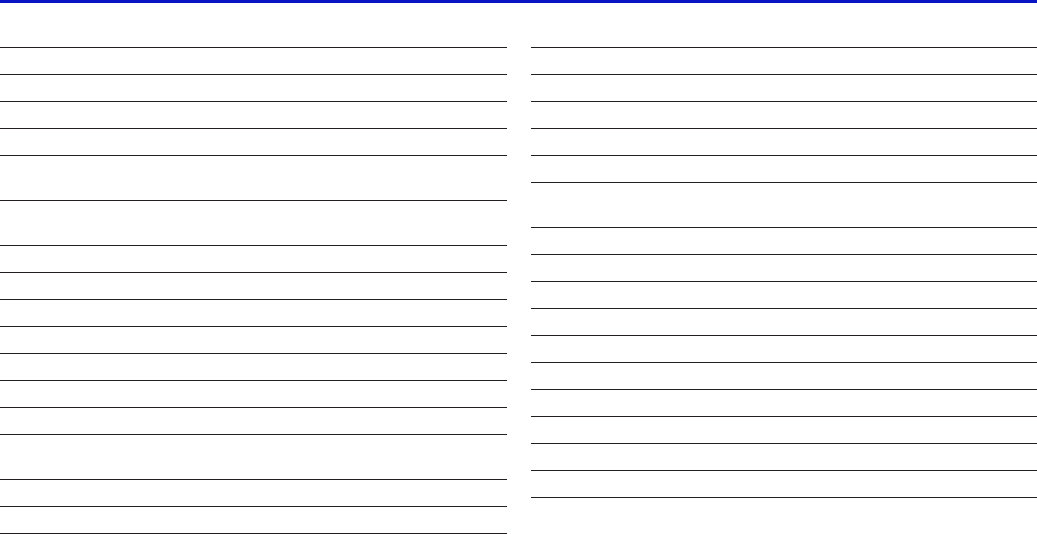
as direct violence, and though the damage is slower
and more subtle, it is more dicult to repair.
Feminist studies of human security have put on
the table relevant themes for women such as the im-
pacts of armed conict on women, gender relations
and gender roles; ways international humanitarian
actions and peacekeeping operations widen or dimin-
ish unequal gender relations; and women’s absence
from decisionmaking positions that are central to
peacebuilding.
Women experience gendered eects
in the context of conicts and are also neglected in
disarmament, demobilization and reintegration be-
cause they are not recognized as combatants or are
viewed simplistically as camp followers or wives of
commanders because of stigma and prejudices about
their gender.
The frame of human security stresses the im-
portance of people being able to take care of them-
selves: all people should have the opportunity to meet
their most essential needs and to earn their own liv-
ing. Empowerment and independence will not be
achieved by framing women and girls as vulnerable
victims of the dierent threats they face but by asking
women and girls how they are secured or unsecured.
Hearing women’s voices will tell a dierent story of
security, where they enforce the respect of their eco-
nomic, political and human rights and are empow-
ered to achieve their own development.
NOTES
1. UNDP 1994.
2. Donoso 2016; Gentry, Shepherd and Sjoberg 2018.
3. Blanchard 2003.
4. Tickner 1999b. See also Ling (2000).
5. The generations of international relations feminists do not match the waves
of feminism (Tickner 1992).
6. Enloe 1989, 1993; Grant 1991; Peterson 1992; Runyan and Peterson 1991; Ste-
ans 1998; Sylvester 1994; Tickner 1992, 1995.
7. Tickner 1995.
8. Enloe 1989, 1993.
9. MacKinnon 1989, p. 162.
10. Gentry, Shepherd and Sjoberg 2018; Harding 2016; Tickner 2015.
11. Steans 1998, p. 67.
12. Nuruzzaman 2006.
13. Steans 1998; Sylvester 1994; Tickner 1992.
14. Based on the work of Michel Foucault (1980), several feminist thinkers used
his theory of power in relation to the body (Steans 1998).
15. Gentry, Shepherd and Sjoberg 2018.
16. Chin 1998; Hooper 2001; Peterson 2003; Prügl 1999; Tickner 2005.
17. Peterson 2004.
18. Wisotzki 2003.
19. McKay 2004.
20. Woroniuk 1999.
21. McKay 2004; Tickner 1999a.
22. Hanisch 1969.
23. Baines 2005; Peterson 2004; Reardon 2001, 2015; Shepherd 2008, 2010;
Tickner 2005, 2015.
24. Reardon 2015.
25. Anzaldúa 1987; Lorde 1980.
26. Crenshaw 1989, 1991, 2017.
27. Collins 1990.
28. Donoso 2016; Gentry, Shepherd and Sjoberg 2018.
29. Collins 2002.
30. Bunch 2003; Bunch and Carrillo 1998.
31. McKay 2004, p. 157. See also McKay (2000).
32. Winter and Leighton 2001.
33. Baines 2005; McKay 2004.
34. Gentry, Shepherd and Sjoberg 2018; McKay and Mazurana 2004.
112 NEW THREATS TO HUMAN SECURITY IN THE ANTHROPOCENE / 2022
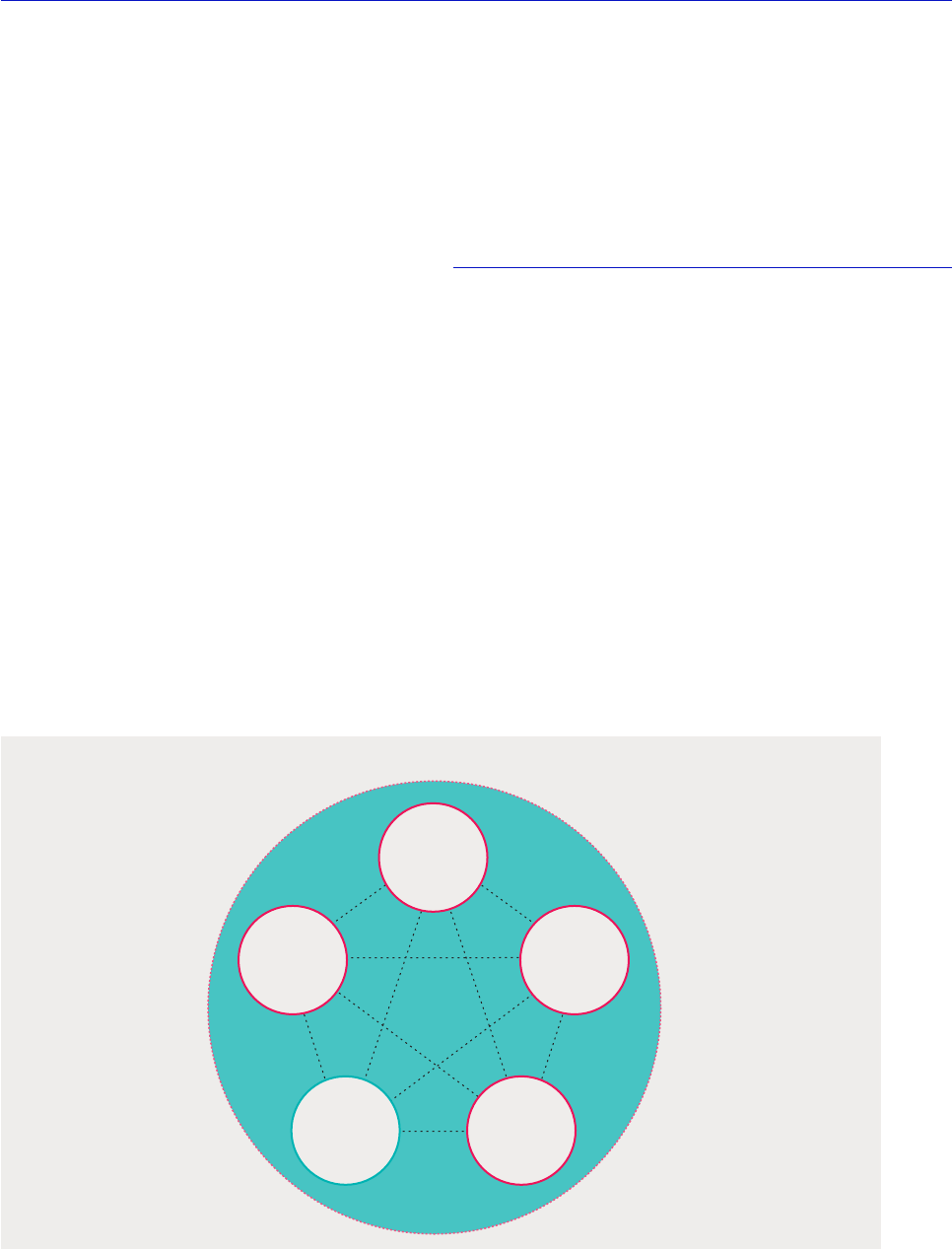
United Nations Children’s Fund
The new generation of human security threats in the
Anthropocene context, including the compound-
ing eects of inequalities, digital technology threats,
health threats and violent conict have a unique and
far-reaching bearing on children and their futures.
The realization of human security inevitably depends
on addressing those widespread and cross-cutting
challenges to their survival, livelihood and dignity,
with profound eects on future generations.
This is exemplied by the Covid-19 pandemic,
whose lingering impact has resulted in increasing
poverty and inequality, which threaten to undermine
the rights of children. An estimated 100 million more
children are projected to be living in multidimension-
al poverty today, representing an increase of 10 per-
cent since 2019.
Along with growing poverty, more
children are out of school, hungry, abused, made to
work and forced into early marriage. The global cri-
sis has taken a harsh toll on children and adolescents,
fuelled by deprivation and loss and heightened by
racism, discrimination and gender inequality.
Anthropocene risks
The Children’s Climate Risk Index
revealed that vir-
tually every child on the planet is exposed to at least
one environmental threat, be it heatwaves, cyclones,
ooding, drought, air pollution or lead poisoning, and
approximately 1 billion children live in countries clas-
sied as extremely high risk from the consequences
of climate change. Children can be particularly vul-
nerable to climate and environmental shocks if there
are inadequate essential services, such as water, san-
itation, healthcare and education. As it stands, en-
vironmental degradation has contributed to one in
three children having elevated levels of lead in their
SPOTLIGHT 5.2
Children and human security
Figure S5.2.1 A new generation of human security threats for children
Source: Human Development Report Office based on UN Treaty Bodies and leading documents.
Digital
technology
threats
Health
threats
Inequalities
Violent
conflict
Other
threats
A
n
t
h
r
o
p
o
c
e
n
e
c
o
n
t
e
x
t
Approximately 1 billion children live in
countries classified as extremely high risk
from the consequences of climate change
One in three children under age 5 is
malnourished and unable to grow,
develop and learn to their full potential.
Current Covid-19 and economic crisis:
Almost 9 million more children may
end up in child labour, 10 million more
girls in early marriages.
Children need to be protected
in cyberspace, with adequate
regulation and strategies
to promote online safety
against abuse, bullying,
sexual exploitation and other
threats, including privacy
breaches, while protecting the
education and health benefits
of digital technologies.
Nearly one in five children in
the world lives in a conflict
zone, where they are at risk
of being killed, maimed,
abducted, subject to sexual
violence or recruited into
armed groups.
113
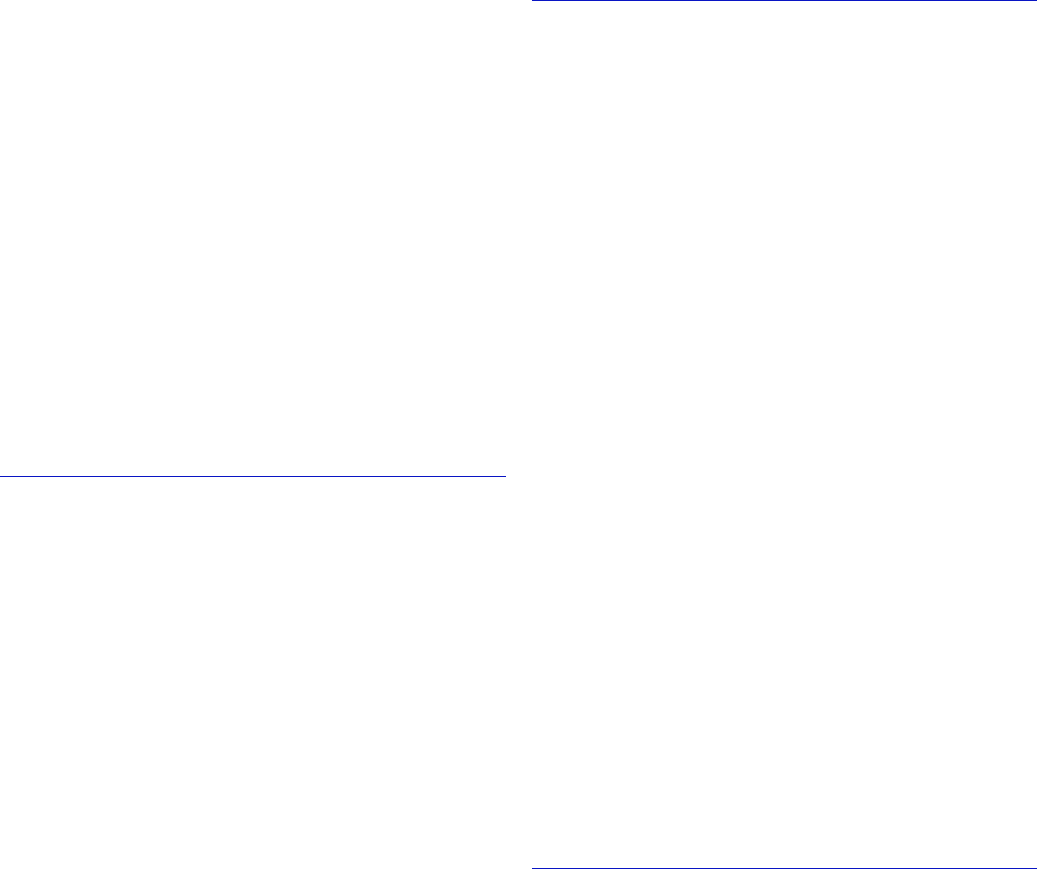
blood. About half a billion children are threatened by
ooding, and by 2040 one in four children will live
amid extreme water stress.
In order to reduce these Anthropocene risks, eorts
are needed to improve the resilience of the essen-
tial services that children depend on to survive and
thrive. This includes improving access to water, sani-
tation and hygiene services, as well as introducing cli-
mate-smart health services. Children will also benet
from schools and education systems that can respond
exibly and adeptly to disasters and from social safe-
ty nets that are climate-responsive. In all these eorts
children and young people must be engaged as agents
of change in environmental and climate action, as it
is their futures that hang in the balance.
Inequalities
Evidence from previous crises (including economic
shocks and especially the current Covid-19 pandem-
ic) shows that the wide-ranging social and econom-
ic impact is likely to be disproportionally higher on
children, with groups most likely to be left behind
suering the severest consequences in terms of pov-
erty and hunger linked to reduced family incomes,
job losses and rising inequality.
The global reach
of the pandemic means that children in both devel-
oped and developing countries are aected. Poorer
and marginalized children globally are also more
vulnerable to loss of education and less able to par-
ticipate in distance learning and access health-care
services. This is particularly true for the 1 in 10 chil-
dren with disabilities worldwide, who may experi-
ence deprivation and be less likely to be counted,
consulted and considered in decisionmaking that
aects them.
The cost of inaction is high. Children stand to lose
the equivalent of $17 trillion, or roughly 14 percent of
global gross domestic product (GDP), from their fu-
ture earnings due to loss of schooling and learning.
Almost 9 million more children may end up in child
labour, 10 million more girls in early marriages, and
many more children will experience violence and
suer negative impacts on their mental health. This
is not only a loss to children but also to communi-
ties, countries and the world, with productivity and
growth prospects likely to be reduced for decades.
Digital technology risks
Digital innovation and technology development are
accelerating, particularly as the Covid-19 pandem-
ic has caused a shift to distance and remote deliv-
ery systems. Digital innovations and solutions have
become fundamental to improving children’s lives
across the spectrum, from health to nutrition, edu-
cation, protection, access to water, sanitation and
hygiene, and inclusion. Children themselves can use
technologies, including the internet, for communica-
tion, play, schoolwork, accessing information, train-
ing, skilling and preparation for the world of work as
well as personal expression.
Widespread school closures during the Covid-19
pandemic have spurred a reimagination in educa-
tion, including through new digital delivery platforms
designed to provide children with the education and
skills they need for the 21st century. The persistence
of the digital divide, however, means that low- and
no-tech solutions that are better suited to reaching
students without internet access must remain viable
alternatives. Finally, with opportunities come risks
and threats. Children need to be protected in cyber-
space, with adequate regulation and strategies to
promote online safety against abuse, bullying, sex-
ual exploitation and other threats, including privacy
breaches, while protecting the education and health
benets of digital technologies.
Health and nutrition challenges
While tremendous progress has been achieved in
maternal and child health and nutrition over the
past two decades, inequalities in access to health
care mean that many groups of children are left be-
hind. Young children, and newborns in particular,
continue to die from preventable causes stemming
from inadequate maternal and newborn health care
and nutrition or from treatable infectious diseas-
es. Moreover, failing to invest adequately in early
childhood development serves to deny young chil-
dren the stimulation their developing brains need
to thrive. Progress in immunization for preventable
diseases has also stagnated, and there is great ine-
quality in the availability and distribution of Covid-
19 vaccines.
114 NEW THREATS TO HUMAN SECURITY IN THE ANTHROPOCENE / 2022
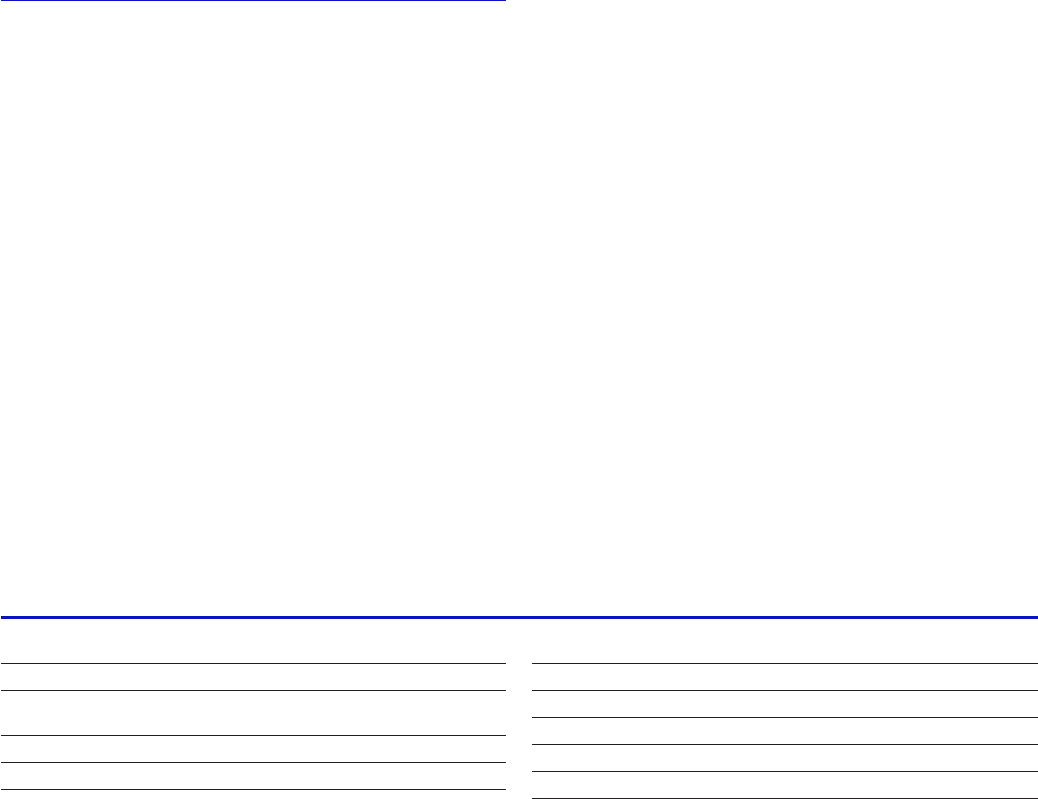
Due to inadequate diets, only half of children ages
6–23 months receive the recommended number of
meals per day that they need to thrive and grow well.
This contributes to there being one in three children
under age 5 who are malnourished and unable to
grow well, develop and learn to their full potential.
To survive and thrive, every child, including adoles-
cents, should have access to nutritious diets to avoid
the double burden of obesity and undernutrition, as
well as quality primary healthcare to promote both
their physical and mental health. Yet globally, more
than one in seven adolescents ages 10–19 is estimated
to live with a diagnosed mental disorder.
Urgent in-
vestment in mental health services is needed, as is an
end to the stigma associated with mental illness, to
promote greater understanding and support of men-
tal health.
Violent conflict
Nearly one in ve children in the world lives in a
conict zone, where they are at risk of being killed,
maimed, abducted, subject to sexual violence or re-
cruited into armed groups.
Armed actors conduct
deliberate campaigns of violence against children,
including putting their schools, hospitals, water fa-
cilities and other essential services under attack.
In 2020 alone the United Nations veried nearly
24,000 grave violations against children in conict
— or about 72 violations per day.
Women and girls
face increased risk of gender-based violence during
humanitarian crises. Added to this are an estimated
33 million children who were forcefully displaced in
2020, accounting for 1 in 70 children globally.
To
help children process and heal from conict they
have experienced, mental and psychosocial support
for children and adolescents must be integral to any
humanitarian response.
Children deserve to grow up in an environment
that is conducive to peace and security. To promote
sustainable peace within societies, factors driving
conict and grievances must be addressed through
the equitable and inclusive delivery and manage-
ment of essential services, including education,
health, nutrition, water and sanitation, social pro-
tection and child protection. Institutions must also
be responsive and accountable to communities and
allow for inclusive participation in decisionmaking
at all levels, including hearing the voices of children
and young people.
None of these threats can be successfully ad-
dressed without the active involvement of children.
Guided by the Convention on the Rights of the Child,
as well as other UN human rights instruments, all
children deserve to be included, without discrimi-
nation, in matters that aect their human security
and to have opportunities and agency in accordance
with their rights. For this to be a reality, children and
young people must be heard on decisions that aect
their lives and, within an environment of trust, sup-
port and capacity development, be engaged as allies
and problem-solvers on the issues that concern them
the most. This will be the most eective way to pre-
pare children for being active citizens and veritable
agents of change and human development.
NOTES
1. UNICEF 2021e.
2. https://www.unicef.org/reports/climate-crisis-child-rights-crisis, accessed
20 December 2021.
3. Furceri, Ostry and Loungani 2020.
4. UNICEF 2021g.
5. World Bank, UNESCO and UNICEF 2021.
6. World Bank 2020a.
7. UNICEF 2019.
8. UNICEF 2021f.
9. UNICEF 2021h.
10. UNICEF 2021i.
11. UNICEF 2021d.
115


Healthcare systems
outmatched by new
human security
challenges
CHAPTER
6

118 NEW THREATS TO HUMAN SECURITY IN THE ANTHROPOCENE / 2022
CHAPTER 6
Healthcare systems outmatched by new human
security challenges
Health is fundamental to human security, which
is concerned with protecting the “vital core of all
human lives in ways that enhance human freedoms
and human fullment,”
and people’s ability to exer-
cise their freedoms depends on their health. In other
words health directly constitutes people’s wellbeing
and enables people to exercise agency (that is, the
ability to pursue what they value in life).
In contrast,
ill health not only diminishes wellbeing; it also limits
people’s agency. Threats to health present some of
the most critical challenges to human security.
The past few decades have seen major improve-
ments in global health. Child mortality was more than
halved between 1990 and 2019,
and life expectancy
has greatly improved. Maternal mortality rates have
declined signicantly, though they remain unaccept-
ably high in some parts of the world.
There have been
large reductions in mortality from HIV/AIDS,
ma-
laria
and diarrhoeal diseases.
Disparities between
developing and developed countries in basic health
outcomes have greatly narrowed over time. But a new
generation of health challenges has come into play in
the form of more frequent new and re-emerging zo-
onotic diseases (linked to the Anthropocene context)
and the predominance of noncommunicable diseas-
es, resulting in a mismatch between new health chal-
lenges and the healthcare systems that have propelled
achievements in basic health outcomes.
The Covid-19 pandemic has been one of the most
acute threats to people’s health in recent decades,
but this type of pandemic is expected to increase in
frequency in the near future.
Covid-19 started as
a health shock and has gone hand in hand with an
enormous setback for human development. In 2021
Covid-19 adjusted Human Development Index (HDI)
values remain far below their precrisis levels (see
box 1.1 in chapter 1), resulting in a clear setback to
human security.
The pandemic has shown that with-
out considering threats to human security, gains in
human development remain vulnerable to reversal.
Health threats are unevenly experienced and their
impacts unequally distributed, mediated by people’s
exposure and their ability to cope with and recov-
er from them once they occur. The ability to weather
poor health and to live a healthy life is connected close-
ly to the conditions for people to grow up, learn, work
and age—that is, to social determinants of health.
In countries at all incomes, poor socioeconomic
outcomes are associated with poor health outcomes.
A substantial and growing body of evidence shows that
the impacts of Covid-19 on people have been driven by
inequalities in the social determinants of health.
Because health outcomes are shaped strongly by
decisions outside the health sector, eorts to protect
against threats to health cannot be limited to health-
care systems alone but must also be connected to sys-
temic measures.
“
The gap between health threats and the ability
of healthcare systems to address them poses
a critical challenge for human security. At the
same time, healthcare systems are among the
most promising spaces for advancing the new
generation of human security strategies, combining
protection, empowerment and solidarity
For instance, the global burden of disease has been
shifting, with noncommunicable diseases accounting
for an increasing share of the causes of ill health and
mortality. Health systems that delivered impressive
gains in meeting the challenges of communicable dis-
eases, maternal health and child health are evolving
to address the new challenges of chronic illnesses and
noncommunicable diseases. Still, while the need for
aordable and comprehensive healthcare is intensify-
ing, healthcare remains inaccessible to many people
around the world. Nearly half the world’s people lack
complete coverage of essential health services.
Pro-
gress towards the World Health Organization’s (WHO)
goal of 1 billion more people benetting from universal
health coverage by 2023 was slowing even before the
Covid-19 pandemic.
Out-of-pocket health spending is
catastrophic for poor people and is an increasingly sub-
stantial burden for middle-class households as well.
The gap between health threats and the ability
of healthcare systems to address them poses a criti-
cal challenge for human security. At the same time,
healthcare systems are among the most promising
spaces for advancing the new generation of human
security strategies, combining protection, empow-
erment and solidarity. The aspiration is for health-
care systems that directly protect people against a
wide range of threats to human security (including
disasters, chronic illnesses and infectious diseases),
empower people by supporting the broad expan-
sion of human capabilities and support solidarity by
119
providing a space to share risks and resources. In-
stead of having individuals bear the risks of illness,
impoverishment or diminished capabilities, collec-
tive resources can insure against risks that individuals
would otherwise be unable to weather on their own.
The current context presents a unique opportunity to
re-evaluate and reform healthcare systems under the
human security lens. Rearming the human securi-
ty lens is especially important in the Anthropocene
context because the nature of health shocks will con-
tinue to evolve, likely not only in the form of future
pandemics but also as people confront the hazards
associated with climate change and other processes
of dangerous planetary change.
In this vein there has been a resurgence of global in-
terest in the universalization of healthcare and other
social policies. Countries as diverse as Brazil, the
Republic of Korea, Spain and Togo have implement-
ed generous cash transfer programmes.
Moreover,
a new ethics appears to be gaining ground. A recent
study in the United Kingdom and the United States
found substantially higher support for such universal
policies than in the past, due in part to respondent’s
experience during the Covid-19 pandemic.
This is also a fresh opportunity to discuss new ef-
forts to institute an international legal instrument for
pandemic preparedness and response. The Covid-19
pandemic has vividly demonstrated the urgent need
to strengthen multilateral action to address shared
threats to health. Proactive eorts towards stronger,
shared measures to tackle human insecurity can now
make an enormous dierence in our ability to with-
stand future challenges.
As economies bounce back from
the Covid-19 pandemic, people’s
health remains under threat
Reported deaths due to the Covid-19 pandemic sur-
passed 5 million at the end of 2021.
Excess mortality
is estimated to be at least double that number global-
ly.
Interruptions in health and nutrition services and
declines in household income due to the pandem-
ic are set to have devastating consequences on child
nutrition and, in turn, possibly on child mortality and
long-term health.
The pandemic has gone from a
health crisis to a full-edged human development cri-
sis. In 2020 the world Covid-19 adjusted HDI value
declined, reecting impacts from large disruptions in
education systems to labour market dislocations.
The year 2021 was expected to be a year of recovery,
as more information about the characteristics of the
virus that causes Covid-19 was uncovered and multi-
ple vaccines became available (even if used unequally
across and within countries). In practice, we are living
through another manifestation of economic develop-
ment with human insecurity. While most economies
bounced back and global income per capita reached
a historical peak, health outcomes reached a new low:
global life expectancy declined for the second year in
a row. Based on data on excess mortality in 2021, the
gap in global life expectancy at birth with respect to
the non-Covid-19 scenario is an estimated 1.5 years, or
a 7 year reversal for the world as a whole (gure 6.1).
“
While most economies bounced back
and global income per capita reached
a historical peak, health outcomes
reached a new low: global life expectancy
declined for the second year in a row
The economic recovery, while substantial, has
been uneven. Developing economies have had more
limited emergency scal responses than developed
countries. By mid-2021 countries had spent $16.9
trillion globally on Covid-19 pandemic–related s-
cal measures.
The heterogeneity across countries
in responses to the economic eects of the pandem-
ic is substantial—in their speed of response, reach
and, above all, size. Overall, in 2020 advanced econ-
omies spent 23.1 percent of GDP on discretionary s-
cal measures, compared with emerging economies’
9.9 percent of a smaller GDP.
Low-income countries
spent 4.1 percent of 2020 GDP. Monetary policy in ad-
vanced economies has also relied on unprecedented
and exceptional measures to support the scal eorts.
Most of the direct scal support measures have tar-
geted households (by expanding or creating new cash
and noncash transfers), businesses (by providing access
to nancial resources and the ability to meet payments
during the Covid-19 pandemic) and health systems (by
spending more in the health sector).
As the pandemic
worsened and the economic consequences of several
lockdowns started to hit, countries designed and imple-
mented alternative lifelines to protect households, sup-
port businesses and bolster the health sector.
120 NEW THREATS TO HUMAN SECURITY IN THE ANTHROPOCENE / 2022
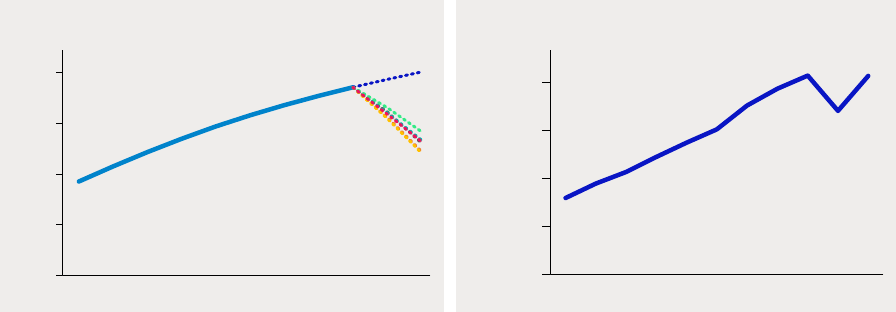
As a result of asymmetries in the scal and mon-
etary measures put in place during the Covid-
19 pandemic, high-income economies have
experienced smaller economic contractions than
low- and middle-income countries.
Low- and
middle-income countries have also experienced
greater disruptions in essential health services dur-
ing the Covid-19 pandemic than high-income coun-
tries and greater challenges accessing life-saving
medicines and other essential supplies, such as med-
ical oxygen.
Emergency support measures are also
winding down earlier in emerging economies than in
high-income ones. A large part of scal support is ex-
piring in Brazil and China, and only in high-income
economies (France, Japan, Spain, the United States)
is it being replaced by additional measures or a sub-
stantial extension of existing programmes.
For the
remaining emerging economies the extension of s-
cal measures has been extremely limited.
Deploying vaccines has been central in making
economic recovery possible. Therefore, disparities
in vaccine access and use are not only a morally re-
pugnant situation but also a key driver of divergence
between countries’ economic recoveries.
Even
though there are some remarkable cases of devel-
oping countries expanding vaccination programmes
at levels comparable to those of wealthier countries,
the disparities across country groups are stark (g-
ure 6.2). By November 2021 around 67 percent of
the population in very high HDI countries was fully
vaccinated, compared with 46 percent in high HDI
countries, 30 percent in medium HDI countries and
only 7 percent in low HDI countries.
The averages
also hide large disparities within countries, including
low vaccine adoption by segments of the population,
even in very high HDI countries.
“
Deploying vaccines has been central in making
economic recovery possible. Therefore, disparities
in vaccine access and use are not only a morally
repugnant situation but also a key driver of
divergence between countries’ economic recoveries
Even though at least 10 manufacturers set produc-
tion targets of a billion doses each by 2021,
access to
Covid-19 vaccines has posed a considerable challenge
for several developing countries. Many developing
countries are still far from the way out of the crisis but
have not been able to access enough licenced vaccines
to cover their entire population. The constraints they
have faced include limited vaccine supply and insu-
cient cooperation and investment in global solutions
to combat Covid-19. In this sense, greater internation-
al cooperation is required to distribute vaccines at af-
fordable prices.
The main cooperative mechanism
to combat inequality in access to vaccines is the global
COVAX initiative, which aims to reach the most vul-
nerable 20 percent of every nation around the world.
Figure 6.1 The global economy is recovering, but people’s health is not
Note: Estimates and projections of life expectancy at birth are based on excess mortality data linked to the Covid-19 pandemic. For the projec-
tions different models represent scenarios of death distribution for younger populations. Model 1 provides the baseline for ages 15–64, and
Model 2 uses conservative assumptions for the distribution of deaths in that age group. Model a is the baseline for ages 0–14, Model b uses
pessimistic assumptions about the effect of Covid-19 on that age group and Model c uses optimistic assumptions about the effect of Covid-19
Source: Human Development Report Office based on data from the Institute for Health Metrics and Evaluation, the International Monetary
Fund, the United Nations Department of Economic and Social Affairs and the Human Mortality Database.
69
70
71
72
73
2011 2012 2013 2014 2015 2016 2017 2018 2019 2020 2021
Life expectancy at birth (years)
12,500
13,500
14,500
15,500
16,500
2011 2012 2013 2014 2015 2016 2017 2018 2019 2020 2021
GNI per capita ($ PPP)
Pre-pandemic
projection
Model 1a
Model 1c
Model 2b
Model 1b
Model 2a
Model 2c
Pre-pandemic
121
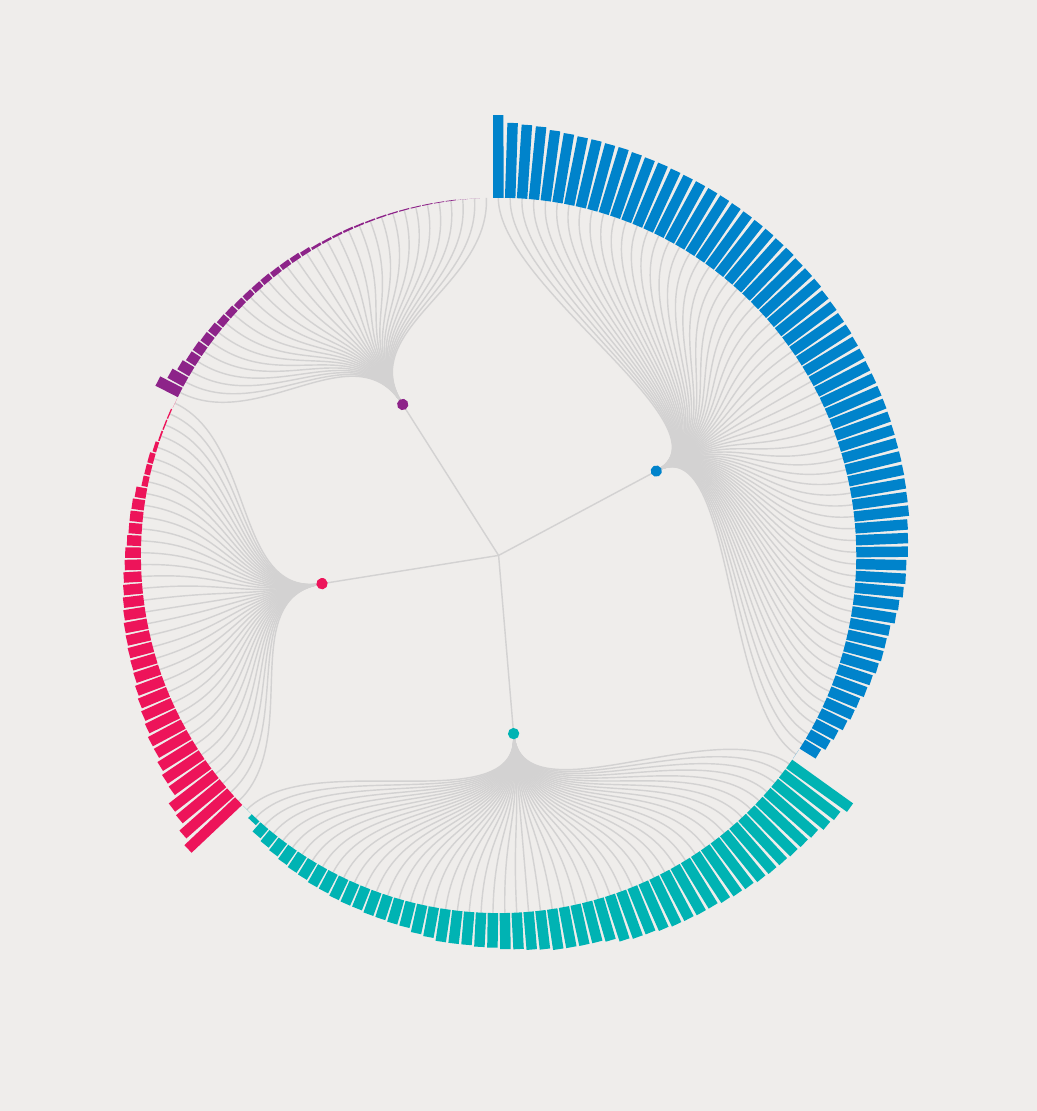
Figure 6.2 The disparities in Covid-19 vaccination across countries and territories are stark
Source:
Very high
human development
88.8
Portugal
88.8
Portugal
87.3
Singapore
87.3
Singapore
86.5
Chile
86.5
Chile
83.8
Malta
83.8
Malta
82.5
Iceland
82.5
Iceland
81.5
Spain
81.5
Spain
81.3
Korea (Republic of)
81.3
Korea (Republic of)
80.6
Brunei Darussalam
80.6
Brunei Darussalam
80.5
Qatar
80.5
Qatar
79.4
Uruguay
79.4
Uruguay
78.7
Canada
78.7
Canada
78.5
Japan
78.5
Japan
77.9
Malaysia
77.9
Malaysia
77.5
Italy
77.5
Italy
77.4
Argentina
77.4
Argentina
77.3
Denmark
77.3
Denmark
77.1
Norway
77.1
Norway
76.8
Ireland
76.8
Ireland
76.5
Finland
76.5
Finland
76.1
France
76.1
France
75.9
Netherlands
75.9
Netherlands
75.2
Belgium
75.2
Belgium
75.1
Australia
75.1
Australia
73.8
Costa Rica
73.8
Costa Rica
73.7
United Kingdom
73.7
United Kingdom
73.5
New Zealand
73.5
New Zealand
71.6
Sweden
71.6
Sweden
71.1
Mauritius
71.1
Mauritius
70.3
Andorra
70.3
Andorra
70.1
Luxembourg
70.1
Luxembourg
69.1
Germany
69.1
Germany
68.9
Saudi Arabia
68.9
Saudi Arabia
68
Panama
68
Panama
68
Lithuania
68
Lithuania
67.8
Cyprus
67.8
Cyprus
67.6
Bahrain
67.6
Bahrain
67.3
Israel
67.3
Israel
66.7
United States
66.7
United States
66.3
Liechtenstein
66.3
Liechtenstein
66.3
Austria
66.3
Austria
66
Switzerland
66
Switzerland
65.5
Turkey
65.5
Turkey
65
Greece
65
Greece
64.8
Latvia
64.8
Latvia
62.1
Hungary
62.1
Hungary
61.6
Hong Kong, China (SAR)
61.6
Hong Kong, China (SAR)
61.1
Estonia
61.1
Estonia
59.3
Czechia
59.3
Czechia
59.2
Oman
59.2
Oman
57.6
Slovenia
57.6
Slovenia
53.9
Poland
53.9
Poland
52.3
Barbados
52.3
Barbados
47.7
Croatia
47.7
Croatia
46.4
Serbia
46.4
Serbia
46.2
Slovakia
46.2
Slovakia
44.4
Kazakhstan
44.4
Kazakhstan
41.7
Montenegro
41.7
Montenegro
40.2
Russian Federation
40.2
Russian Federation
36.8
Romania
36.8
Romania
36.2
Bahamas
36.2
Bahamas
33.5
Kuwait
33.5
Kuwait
29.2
Belarus
29.2
Belarus
26.7
Georgia
26.7
Georgia
22.2
Bulgaria
22.2
Bulgaria
0
Palau
0
Palau
82.3
Seychelles
82.3
Seychelles
80
China
80
China
75.1
Brazil
75.1
Brazil
73.6
Sri Lanka
73.6
Sri Lanka
72.6
Maldives
72.6
Maldives
71.5
Turkmenistan
71.5
Turkmenistan
70.9
Ecuador
70.9
Ecuador
69.8
Fiji
69.8
Fiji
67.8
Mongolia
67.8
Mongolia
66.7
Samoa
66.7
Samoa
65.2
Iran (Islamic Republic of)
65.2
Iran (Islamic Republic of)
63.1
Viet Nam
63.1
Viet Nam
62.9
Thailand
62.9
Thailand
62
Dominican Republic
62
Dominican Republic
61.5
Colombia
61.5
Colombia
60
Peru
60
Peru
57.8
Antigua and Barbuda
57.8
Antigua and Barbuda
57.5
Mexico
57.5
Mexico
55.6
Belize
55.6
Belize
51.1
Tonga
51.1
Tonga
48.9
Azerbaijan
48.9
Azerbaijan
48.7
Saint Kitts and Nevis
48.7
Saint Kitts and Nevis
48.3
Venezuela (Bolivarian Republic of)
48.1
Tunisia
48.1
Tunisia
45.8
Indonesia
45.8
Indonesia
44.8
Trinidad and Tobago
44.8
Trinidad and Tobago
43.2
Uzbekistan
43.2
Uzbekistan
42.7
Suriname
42.7
Suriname
North Macedonia
40.9
North Macedonia
40.9
Paraguay
40.5
Paraguay
40.5
Jordan
39.1
Jordan
39.1
Bolivia (Plurinational State of)
39
Bolivia (Plurinational State of)
39
Dominica
38.8
Dominica
38.8
Albania
35.9
Albania
35.9
Grenada
34.3
Grenada
34.3
Botswana
30.1
Botswana
30.1
Philippines
29.7
Philippines
29.7
Palestine, State of
28.7
Palestine, State of
28.7
Saint Lucia
28.4
Saint Lucia
28.4
Ukraine
26.9
Ukraine
26.9
Lebanon
26.9
Lebanon
26.9
South Africa
26.4
South Africa
26.4
Saint Vincent and the Grenadines
24.7
Saint Vincent and the Grenadines
24.7
Bosnia and Herzegovina
24.4
Bosnia and Herzegovina
24.4
Libya
22.7
Libya
22.7
Moldova (Republic of)
22
Moldova (Republic of)
22
Jamaica
20.6
Jamaica
20.6
Egypt
18.7
Egypt
18.7
Armenia
16.8
Armenia
16.8
Algeria
14.3
Algeria
14.3
Gabon
6.1
Gabon
6.1
Marshall Islands
0
Marshall Islands
0
Bhutan
75.4
Bhutan
75.4
El Salvador
66.9
El Salvador
66.9
Morocco
65.1
Morocco
65.1
India
53.4
India
53.4
Cabo Verde
52.3
Cabo Verde
52.3
Guyana
48.7
Guyana
48.7
Kiribati
44.5
Kiribati
44.5
Lao People's Democratic Republic
44.1
Lao People's Democratic Republic
44.1
Timor-Leste
40.4
Timor-Leste
40.4
Honduras
38.2
Honduras
38.2
Sao Tome and Principe
36
Sao Tome and Principe
36
Pakistan
33.8
Pakistan
33.8
Comoros
30.8
Comoros
30.8
Guatemala
29.9
Guatemala
29.9
Nepal
29.2
Nepal
29.2
Bangladesh
28.1
Bangladesh
28.1
Tajikistan
27.5
Tajikistan
27.5
Vanuatu
25.6
Vanuatu
25.6
Myanmar
24.2
Myanmar
24.2
Zimbabwe
22.5
Zimbabwe
22.5
Eswatini (Kingdom of)
21.2
Eswatini (Kingdom of)
21.2
Solomon Islands
19.3
Solomon Islands
19.3
Nicaragua
18.6
Nicaragua
18.6
Equatorial Guinea
16.8
Equatorial Guinea
16.8
Angola
15.5
Angola
15.5
Kyrgyzstan
15.4
Kyrgyzstan
15.4
Iraq
14.7
Iraq
14.7
Namibia
12.9
Namibia
12.9
Ghana
7.3
Ghana
7.3
Kenya
6.9
Kenya
6.9
Congo
6.8
Congo
6.8
Syrian Arab Republic
4.4
Syrian Arab Republic
4.4
Papua New Guinea
2
Papua New Guinea
2
Zambia
1.6
Zambia
1.6
Cameroon
1.5
Cameroon
1.5
Micronesia (Federated States of)
0
Micronesia (Federated States of)
0
High human development
Medium
human development
Low human development
United Arab Emirates
97.7
88.7
Cuba
88.7
Cuba
Cambodia
82.5
Cambodia
82.5
Rwanda
29.7
Rwanda
29.7
Mauritania
21.4
Mauritania
21.4
Lesotho
16.1
Lesotho
16.1
Mozambique
12.9
Mozambique
12.9
Guinea-Bissau
12.8
Guinea-Bissau
12.8
Guinea
11.7
Guinea
11.7
Togo
11.2
Togo
11.2
Gambia
9.5
Gambia
9.5
Côte d'Ivoire
8.9
Côte d'Ivoire
8.9
Afghanistan
7.8
Afghanistan
7.8
Liberia
7.6
Liberia
7.6
Senegal
7.4
Senegal
7.4
Central African Republic
7.4
Central African Republic
7.4
Uganda
6.8
Uganda
6.8
Djibouti
6.6
Djibouti
6.6
Sierra Leone
6.2
Sierra Leone
6.2
Malawi
5.1
Malawi
5.1
Ethiopia
3.1
Ethiopia
3.1
Nigeria
2.7
Nigeria
2.7
Sudan
2.6
Sudan
2.6
Benin
2.5
Benin
2.5
Niger
2
Niger
2
Burkina Faso
1.7
Burkina Faso
1.7
Mali
1.6
Mali
1.6
Tanzania (United Republic of)
1.4
Tanzania (United Republic of)
1.4
Madagascar
1.3
Madagascar
1.3
Yemen
1.1
Yemen
1.1
Chad
1
Chad
1
Haiti
0.8
Haiti
0.8
South Sudan
0.8
South Sudan
0.8
Congo (Democratic Republic of the)
0.1
Congo (Democratic Republic of the)
0.1
Burundi
0
Burundi
0
EritreaEritrea
0 0
Eritrea
0
122 NEW THREATS TO HUMAN SECURITY IN THE ANTHROPOCENE / 2022
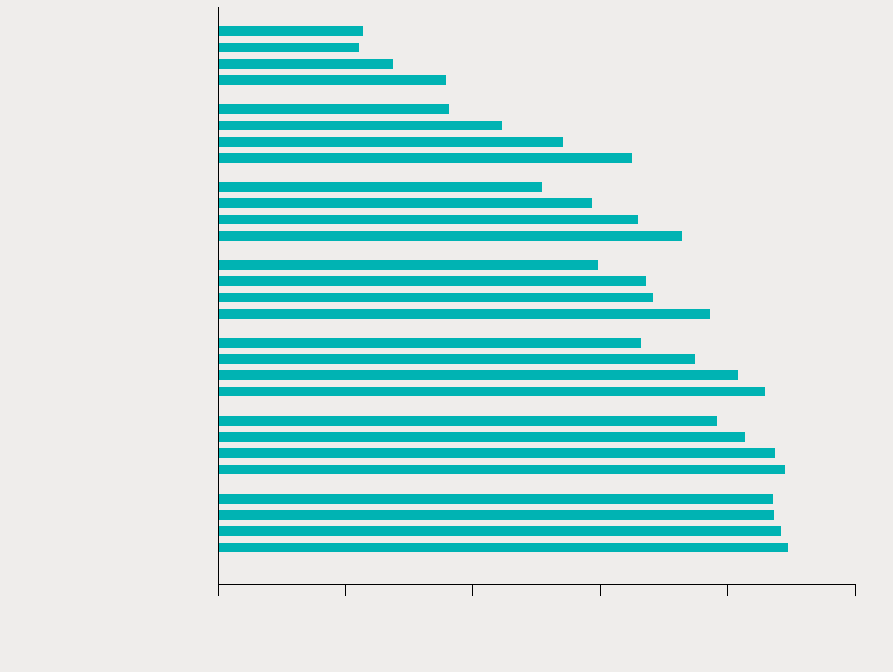
But it has faced insucient funding to purchase vac-
cines and competing national vaccine procurement
strategies.
During the Group of 7 Summit in June
2021, high-income countries announced the donation
of 1 billion vaccines,
to be delivered mainly to devel-
oping countries through the COVAX initiative.
Market mechanisms could also help countries ex-
pand vaccine production. Temporary exemptions on
the protection of intellectual property for Covid-19
vaccines from vaccine-producing countries and man-
ufacturers could help expand vaccine production (see
chapter 3), as could raw material exports, technology
transfers and expanded manufacturing capacity in
low- and middle-income countries.
An evolving disease burden is driving
adjustments to healthcare systems
The Covid-19 pandemic brought to the fore the cen-
trality of communicable diseases in human security,
“
As countries have become better at protecting
basic health, the biggest health threats have
shifted to noncommunicable diseases—
primarily cancer, diabetes, cardiovascular
disease and chronic lung disease
just when healthcare systems were facing increas-
ing pressures from noncommunicable diseases. As
countries have become better at protecting basic
health, the biggest health threats have shifted to
noncommunicable diseases—primarily cancer, di-
abetes, cardiovascular disease and chronic lung
disease. These diseases, on the rise worldwide
over the past decades, are rapidly becoming a cen-
tral public health challenge. Globally, the cause
and distribution of the disease burden are shifting,
from communicable diseases to noncommunicable
diseases, and an increasing share of this new bur-
den of diseases is affecting developing countries
(figure 6.3).
Figure 6.3 More people are dying from noncommunicable diseases today than in the past
Source:
0 20 80 100
Share of deaths caused by noncommunicable diseases (percent)
Sub-Saharan Africa
South Asia
Arab States
Latin America and
the Caribbean
East Asia and
the Pacific
East Europe and
Central Asia
Developed
countries
2019
2019
2010
2000
1990
2019
2010
2000
1990
2019
2010
2000
1990
2019
2010
2000
1990
2010
2000
1990
2019
2019
2010
2000
1990
2010
2000
1990
6040
123

Noncommunicable diseases together accounted
for 74 percent of deaths in 2019,
most of them in de-
veloping countries (see gure 6.3).
The pressure of
these diseases will likely intensify globally because
the number of people over age 65 is expected to more
than double by 2050 (see table 5.1 in chapter 5).
So-
cial determinants of health shape the prevalence
and distribution of noncommunicable diseases as
well as the mortality associated with them.
For in-
stance, the main behavioural risk factors (unhealthy
diets, tobacco smoking, low physical activity and ex-
cess alcohol consumption) and physical risk factors
(obesity, high blood pressure and diabetes) for non-
communicable diseases are socially patterned, as is
exposure to pollutants that cause specic noncom-
municable diseases.
Mental health has become a
“
The growing burden of noncommunicable
diseases places new demands on healthcare
systems, particularly for preventive or chronic care
human security emergency (box 6.1). Having low so-
cioeconomic status or living in a low- or middle-in-
come country increases the risk of developing type 2
diabetes, chronic pulmonary disease, cardiovascular
disease and lung cancer.
Many noncommunicable
diseases are preventable with policy measures that
address their main risk factors and underlying social
determinants. Eective action goes beyond health-
care systems to include justice, education, social wel-
fare, urban planning and environment protection.
Although people in some developing countries (in
particular those in Sub-Saharan Africa) were still
Box 6.1 The mental health crisis is a human security emergency
Addressing mental health is directly relevant to
advancing human security. Mental disorders place
a massive burden on every aspect of human lives
(including relationships, school, work and commu-
nity participation).
1
Roughly 10 percent of the global
population suffers from mental disorders.
2
When
children face hardships or environmental stressors,
long-term physical health problems as well as
damage to the developing brain can result.
3
Glob-
ally, about 20 percent of children and adolescents
4
and about 15 percent of people ages 60 and older
have mental disorders.
5
These numbers are most
likely underestimated.
6
Social stigma works against
reporting and diagnosing mental disorders. In many
countries access to mental health services is so lim-
ited that people do not have the possibility of seek-
ing treatment or being diagnosed.
Common mental health conditions include de-
pres sion, dementia, bipolar disorder and schizo phre-
nia.
7
These disorders tend to be associated with poor
education outcomes,
8
low productivity at work,
9
poverty,
10
premature and excess mortality
11
and poor
overall health.
12
Mental health issues are also esti-
mated to generate substantial losses in economic
output.
13
Some of the leading causes of mental health
conditions are adverse life experiences (such as
abuse, trauma, violence and conflict), ongoing
medical conditions (such as cancer and diabetes),
substance abuse (such as alcohol and recreational
drugs), biological factors (such as genes and brain
chemical imbalances) and isolation and loneliness.
14
Some groups are especially vulnerable. Women, be-
cause they are more exposed to sexual violence and
other potential triggers of mental disorders than
men, tend to be more affected by mental health
conditions (particularly anxiety, depression, post-
traumatic stress and eating disorders).
15
Major threats to human security, such as conflict,
can foster large-scale, long-lasting mental health
crises. For instance, negative life experiences such
as the Covid-19 pandemic have been linked to
anxiety, depression, stress and disturbed sleep,
16
while disrupting mental health services worldwide,
17
particularly in low-income countries.
18
Often overlooked as a human security issue, men-
tal health is essential for people to enjoy secure lives.
So, failing to address mental health amounts to ne-
glecting a major ongoing threat to human security
and can leave health systems unprepared for future
mental health crises.
Notes
1.WHO 2021e. 2.Mnookin 2016. 3.Center on the Developing Child at
Harvard University 2013; National Scientific Council on the Develop-
ing Child 2020. 4.WHO 2021e. 5.WHO 2017. 6.Ritchie 2018. 7.WHO
2019. 8. Brännlund, Strandh and Nilsson 2017. 9. Bubonya, Cobb-
Clark and Wooden 2017. 10.Callander and Schofield 2018. 11.Sax-
ena 2018. 12.World Bank 2018. 13.Estimates of economic loss due to
mental health issues vary depending on the method of estimation
14.CDC 2018. 15.Mental Health
Foundation 2021. 16.Rajkumar 2020. 17.WHO 2020a. 18.Kola 2020.
124 NEW THREATS TO HUMAN SECURITY IN THE ANTHROPOCENE / 2022
more likely to die from a communicable disease (such
as malaria, HIV/AIDS or tuberculosis), deaths from
communicable diseases have been declining. Mean-
while, deaths from noncommunicable diseases are
on the rise across all regions (see gure 6.3).
Some
countries that are undergoing this transition are fac-
ing a triple burden, with increases in noncommuni-
cable diseases and injuries alongside a substantial
existing burden from communicable diseases.
The
growing burden of noncommunicable diseases plac-
es new demands on healthcare systems, particularly
for preventive or chronic care. Many national health-
care systems that have historically catered to commu-
nicable diseases and maternal and child health are
ill-prepared for these new demands.
Even in some
developed countries the growth of multiple noncom-
municable diseases—such as cancer—is creating new
gaps in healthcare outcomes.
Meanwhile, climate change, biodiversity loss and
food insecurity are expected to intensify in the Anthro-
pocene context (see chapter 2), with unequal impacts
across and within countries. Air pollution and warmer
temperatures resulting from climate change are caus-
ing people’s health to deteriorate through both direct
and indirect channels.
By one estimate, anthropo-
genic climate change contributed to 37 percent of
warm-season heat-related deaths between 1991 and
2018.
The biggest increase in heat vulnerability dur-
ing the past 30 years has been in low and medium HDI
countries.
Air pollution is a key factor behind excess
mortality and low life expectancy, in part by exacer-
bating cardiovascular disease.
Climate change is
contributing to the decline in yield potential for major
crops in many parts of the world and in turn undermin-
ing eorts to curb malnutrition.
As chapter 2 discuss-
es, climate change is expected to become a leading
global risk factor by the end of this century (though
with great inequalities in impact across regions).
Planetary disruptions, health and equity are close-
ly linked. Climate change threatens to undo years
of progress in public health and sustainable devel-
opment outcomes, and adaptation responses are far
from adequate.
These new risks pose serious chal-
lenges to health systems, in addition to disrupting
the social, economic and political conditions for the
operation of healthcare systems. Some communi-
ties and countries are better positioned to cope than
others. First, climate change can drive social and
economic dislocation—say, by reducing food security
or access to water. Second, the health impacts of cli-
mate change are not equally borne across people or
communities. They fall disproportionately on those
left behind socially, poor people and individuals
with underlying health conditions.
Health shocks
can cause families to become and remain poor and
in turn be more vulnerable to the hazards associated
with the Anthropocene context.
The Covid-19 pan-
demic presents a glimpse of how this new reality can
exacerbate human insecurity.
Reinforcing human security though
enhanced healthcare systems
Aordable, comprehensive and equitable healthcare
is vital for human security, both to protect against
illness and to promote health more generally. The
performance of healthcare systems is itself an impor-
tant social determinant of health. Well- performing
healthcare systems are essential for realizing the
human right to health: the right to the enjoyment
of the highest attainable standard of physical and
mental health.
The right to health demands that
healthcare services, goods and facilities be availa-
ble, accessible, acceptable and of decent quality—
and be provided to all without discrimination.
The
right to health also calls attention to the need for
going beyond healthcare systems. As Amartya Sen
notes, “The policy question points to the fact that
good health depends on healthcare, and health care
is something that we can be legislate about. But good
health does not depend only on health care. It also
depends on nutrition, lifestyle, education, women’s
empowerment, and the extent of inequality in a soci-
ety.”
So the right to health “has […] broad demands
that go well beyond legislating good health care (im-
portant as that is). There are political, social, eco-
nomic, scientic, and cultural actions that we can
take for advancing the cause of good health for all.”
“
Well- performing healthcare systems are
essential for realizing the human right to
health: the right to the enjoyment of the highest
attainable standard of physical and mental health
Still, strengthening healthcare systems is one of
the central actions needed to full the human right
125
to health. Limitations in the performance or equity of
healthcare systems pose a pervasive challenge for en-
hancing human security and addressing major health
challenges, including noncommunicable diseases,
pandemics and unmet mental health needs. People
in countries at all incomes experience the implica-
tions of limitations in healthcare systems.
Contrib-
uting factors include fragmented healthcare delivery,
shortfalls in the healthcare workforce, ineective
health information systems and weak governance
structures.
Healthcare systems are often dicult to
navigate, so much so that they can deter people from
seeking care altogether.
“
Healthcare remains prohibitively expensive
for many people around the world. When people
lack nancial coverage for healthcare, falling ill
can have catastrophic nancial consequences,
which in turn compromise human security
People in lower income countries suer the most
from inadequacies in healthcare.
In low- and mid-
dle-income countries an estimated 8 million people
die each year from conditions that should be treata-
ble by healthcare systems, and 60 percent of deaths
are due to poor quality care.
About a third of pa-
tients in these countries encounter disrespectful care,
short consultations, poor communication or long
wait times in healthcare systems.
One patient in ten
hospitalized in developing countries can expect to
acquire a healthcare-associated infection, compared
with 7 in 100 in high-income countries.
In low- and
middle-income countries 5.7–8.4 million deaths a
year occur due to poor quality care for a selected set
of health conditions (including some communicable,
noncommunicable, and maternal and child health
conditions).
Healthcare remains prohibitively expensive for
many people around the world. When people lack -
nancial coverage for healthcare, falling ill can have
catastrophic nancial consequences, which in turn
compromise human security. Unaordable health-
care directly impedes people’s wellbeing and restricts
their ability to work, pursue education, participate in
social and political life and live otherwise fullling
lives. As stated in Anirudh Krishna’s seminal work:
“People continue to live only one illness away from
poverty.”
In low-income countries 44 percent of
health spending is met by out-of-pocket payments.
If health insurance or other nancing is unavaila-
ble, poor people cannot obtain the care they need.
Where out-of-pocket spending is the primary source
of nancing for healthcare, social inequities arise be-
cause the costs of healthcare weigh more heavily on
those with low incomes. In Sub-Saharan Africa prob-
lems with aordability were the most frequent barri-
er for people unable to access medical care during the
pandemic, followed by fear of catching Covid-19.
The unequitable burden of out-of-pocket spend-
ing is especially disadvantageous in settings where
the burden of noncommunicable diseases is growing.
The costs of treating these diseases can heavily strain
household incomes, contributing to impoverish-
ment.
The link between noncommunicable diseases
and poverty can be a vicious cycle: poverty is associ-
ated with risk factors for noncommunicable diseases,
and the costs of care for these diseases in turn gener-
ate impoverishment.
High out-of-pocket spending
is often related to the cost of medicines, especial-
ly burdensome for people with chronic conditions.
The unaordability of medicines is a major obstacle
for treating many noncommunicable diseases.
High
prices and limited availability make insulin, crucial
for treating diabetes, inaccessible for many people.
Across countries at all incomes, coping with ill
health can be a major burden. In Organisation for
Economic Co-operation and Development (OECD)
countries 20 percent of health spending is paid di-
rectly by households, on average—ranging from less
than 10 percent in France to more than 30 percent
in Chile, Greece, the Republic of Korea and Mexico.
Evidence from OECD countries shows that private
health spending, such as private health insurance and
out-of-pocket spending on health products and ser-
vices, accounts for a growing share of middle-class
budgets.
Among OECD countries, middle-income
households’ health-related spending rose between
2005 and 2015.
The increase was largest in Chile,
Germany, Latvia, the Slovak Republic, Spain and the
United States.
Middle-class households are spending more on
private health insurance than a decade ago. In the
United States the highest expenses have been asso-
ciated with health insurance premiums and out-of-
pocket expenses when facing illness, and a strong
association has been documented between economic
126 NEW THREATS TO HUMAN SECURITY IN THE ANTHROPOCENE / 2022
insecurity and households facing health challeng-
es. Between 2000 and 2010 the average spending of
middle-income households on healthcare increased
by 51 percent, whereas household incomes grew by
30 percent.
By one measure the mean family health
insurance premium in 2016 equalled 30.7 percent of
median household income.
The increasing costs of
long-term services and support for the older people
and their families present a major risk to the econom-
ic security of middle-class families. Family caregivers
who provide unpaid assistance to family members in
need of long-term services and support do so at the
expense of their own economic security.
And car-
egivers are usually women.
Unaordable and low-quality healthcare diminish-
es human security. From the standpoint of enhanc-
ing human security, and in line with strategies that
are based on solidarity, a key contribution would be
to move towards universalism in healthcare. Univer-
sal policies are “those that reach the entire popula-
tion with similarly generous benets independent
of the instruments used.”
Universalism is a mul-
tidimensional concept, incorporating elements of
coverage, generosity and equity.
A variety of policy
instruments and strategies can achieve universalism.
The appropriate reforms to this end are necessari-
ly context-specic, depending on social structures,
economic conditions, state capacities and initial in-
stitutional arrangements.
Because high out-of-pocket health spending drives
impoverishment and poor health outcomes, there has
been a global push towards universal health cover-
age, which is relevant for advancing human securi-
ty.
By WHO’s denition, universal health coverage
is achieved when all people receive the health ser-
vices they need, including health promotion and
prevention, treatment, rehabilitation and palliative
care across the life course without suering nancial
hardship.
Universal health coverage is one target in
the 2030 Agenda for Sustainable Development. Cov-
erage of essential services—one of two indicators for
monitoring universal health coverage in the Sustain-
able Development Goal framework—has improved
globally since 2000.
Most OECD countries have
near-universal coverage of costs for some health-
care services, including consultations with doctors,
tests and examinations, and surgical and therapeutic
procedures.
In September 2019 UN member states
issued the Political Declaration on Universal Health
Coverage, rearming a commitment to ensure that
by 2030 people would receive the health services they
need without suering nancial hardship.
While universal health coverage seeks to address
nancial protection, the quality of healthcare also
matters greatly for health outcomes. There is growing
recognition that expanding coverage alone does not
translate to better health outcomes, unless healthcare
is also high quality.
Fullling the human right to the
highest attainable standard of health also demands
investments in the quality of care. Improving the qual-
ity of healthcare is important on equity grounds: high
quality healthcare should be accessible to all people
regardless of their status and identities, and eorts
to enhance quality should prioritize people who are
receiving the worst quality care. Enhancing human
security thus requires moving beyond coverage and
towards enhancing quality and equity in healthcare.
“
Improving the quality of healthcare is
important on equity grounds: high quality
healthcare should be accessible to all people
regardless of their status and identities, and
eorts to enhance quality should prioritize
people who are receiving the worst quality care
An important issue in advancing healthcare uni-
versalism relates to public or private provision. Public
provision has long been central in improving popula-
tion health outcomes,
with implications for expand-
ing human development.
Private actors have also
played an important role in health systems, through
provision of care as well as through insurance cov-
erage, pharmaceutical innovation and service de-
livery, among others. There is evidence that private
provision can support some dimensions of univer-
salism—namely coverage, generosity and equity.
It
can compensate for shortfalls in public provision of
healthcare services. Private actors often enjoy great-
er capacity to spur innovation, experimentation and
technological advances in health. Indeed, the private
sector could play an important role in addressing the
burden of noncommunicable diseases through inno-
vation in diagnostics, treatment and care.
In some settings, however, private responses
can undermine equity, as those able to pay enjoy
higher quality care than those who must rely on
127

public provision alone. Where private provision has
long dominated healthcare systems, private actors
can form coalitions opposing progress towards uni-
versalism, thus maintaining a status quo of insu-
cient public provision and high inequality.
In health
nancing systems funded primarily by public funds,
expanding voluntary private insurance can contribute
to higher costs and inequity.
Strategies to enhance human
security based on solidarity:
Towards the new generation of
universalism in healthcare systems
The Covid-19 pandemic has exposed many long-
standing weaknesses of healthcare systems around
the world. It has highlighted that nearly anyone
could face a sudden health threat and that even the
most well-resourced health systems could be over-
whelmed by a crisis on such a large scale. In the
Anthropocene context these types of threats are ex-
pected to increase in frequency and intensity, a lack
of preparedness and vast disparities in people’s abil-
ities to weather a health crisis exposed by Covid-19
should serve as a wakeup call. Meanwhile the evolv-
ing burden of disease and growing inequalities be-
tween and within countries in addressing disease
pose additional risks to human security. Beyond
Covid-19 there is abundant empirical evidence that
long-term adversities—such as poverty, racism, vio-
lence against women and girls or unsafe neighbour-
hoods—can increase the possibility of a wide range
of health conditions. These include obesity, diabe-
tes, cardiovascular disease, cancer, substance abuse,
autoimmune diseases, enhanced inammation, im-
paired cognition, interpersonal and self-directed vio-
lence, and chronic mental illnesses.
In this context
the close relationships among meeting basic needs,
promoting freedoms and protecting against shocks
become all the more important. Strategies for the
new generation of human security must reect the
systemic nature of these threats and move beyond
partial solutions that leave the underlying drivers of
insecurity unaddressed.
In this vein the new generation of human security
needs to systematically foster not only protection and
empowerment (dealing with urgent needs while rein-
forcing agency) but also solidarity. Moving towards
universalism in healthcare would be a concrete way
to advance human security in the enlarged perspec-
tive advocated for in chapter 1.
Actions to meet a shared health threat can come
from a wide range of actors using a variety of instru-
ments, going well beyond healthcare systems alone.
Eorts to stem the spread and impact of Covid-19
have come from governments, civil society, the sci-
entic community, industry and individuals acting
on their own with a common purpose. The success
of measures such as movement restrictions, social
distancing and masking relied strongly on public le-
gitimacy, empowerment and accountability. Special
eorts have been needed to reach those furthest be-
hind, such as people otherwise excluded from social
protection systems. And the uneven deployment of
several eective vaccines against Covid-19 around
the world has highlighted shared (in)security—that
the security of one group is not guaranteed unless
that of all others is addressed too.
Linking universalism in healthcare
with human security
Moving towards universalism in healthcare would di-
rectly enhance human security. A genuinely universal
healthcare system would provide protection that is
not conditional, enhancing capabilities through both
prevention and adequate treatment when needed. It
would also be empowering because it is based on ex-
panding agency.
“
Universal healthcare is framed as a strategy
that advances human security through
protection, empowerment and solidarity and
links to a broader international consensus
expressed in the 2030 Agenda for Sustainable
Development aspiration to leave no one behind
In exposing structural inequalities and the intercon-
nectedness of human security risks, the Covid-19 pan-
demic has further highlighted the need for universal
and systemic responses to health threats that do not
exclude groups and individuals from access to health-
care—not only would that be a direct threat to those
excluded, but it would also put whole populations at
continued risk.
As the inequitable provision and use
128 NEW THREATS TO HUMAN SECURITY IN THE ANTHROPOCENE / 2022

of Covid-19 vaccines show, excluding someone from
access can pose continued severe threats to the health
of many. Experiences during the Covid-19 pandemic
therefore emphasize the vital importance of eective
universal access to adequate healthcare, in a context
of mutual interdependence across countries and peo-
ple when it comes to the conditions that can advance
the pursuit of health as a human right. And it is in this
context that solidarity, along with protection and em-
powerment, acquires heightened relevance.
Universal healthcare is therefore framed as a strat-
egy that advances human security through protec-
tion, empowerment and solidarity and links to a
broader international consensus expressed in the
2030 Agenda for Sustainable Development aspiration
to leave no one behind. It is also expressed in Sus-
tainable Development Goal target 3.8,
in the World
Health Organization’s UHC service coverage index,
in the International Labour Organization’s Social Se-
curity for All and in the Global Partnership for Uni-
versal Social Protection launched by the World Bank
and the International Labour Organization.
Measuring universalism: Introducing the
Healthcare Universalism Index
To measure the extent to which healthcare systems
can be characterized as universal in the sense elab-
orated above, this Report introduces the Healthcare
Universalism Index (HUI). The HUI, which is based
on a comprehensive concept of universalism, incor-
porates not only eective coverage but also generos-
ity and equity (see annex 6.1).
The HUI shows a large gap across countries at dif-
ferent HDI values. Norway, Japan and Sweden top
the index, with values above 0.9, while Afghanistan,
Bangladesh, Equatorial Guinea and Nigeria have val-
ues below 0.1. Some developing countries have high
values, with Costa Rica (0.720), Uruguay (0.703),
Kuwait (0.691) and Maldives (0.671) enjoying uni-
versalism comparable to that in more industrialized
countries such as the United States (0.727). Cuba,
another outlier, ranks seventh, higher than histori-
cal leaders on universal provision of services such as
Germany and the United Kingdom.
Among the HUI components, generosity appears to
be the main barrier for healthcare universalism. This
emphasizes the key argument that coverage alone is
not sucient: it needs to be accompanied by sucient
investment in quality and accessibility. Low scores
among developed countries are typically due to im-
balances in achievements across the three dimensions
of universalism. For example, while Uruguay scores
almost equally well across coverage (0.69), generosity
(0.72) and equity (0.70), the United States is charac-
terized by vast dierences in dimension scores—espe-
cially between coverage (0.86) and equity (0.46).
Among developing regions, Latin America and the
Caribbean stands out with high HUI values, despite
persistent weaknesses in healthcare systems.
The
region is followed by the Arab States, Eastern Eu-
rope and Central Asia, and East Asia and the Pacic.
Countries in South Asia and Sub-Saharan Africa are
lagging behind.
HUI values have improved over time: between
1995 and 2017 the world HUI value increased from
0.395 to 0.472. But there are some points of concern:
• Gaps in universalism between developed and devel-
oping countries are widening on average. In general,
progress in universalism across developing coun-
tries has been too slow to catch up with high HDI
countries (gure 6.4).
• Progress is heterogenous. On the positive side, 80
countries substantially improved on the HUI, with
an increase of more than 0.1. Examples include
populous countries such as China and Indonesia
as well as many African countries, such as the
Democratic Republic of the Congo, Côte d’Ivoire,
Liberia and Togo. On the other hand, 37 countries
experienced a deterioration on the HUI, which
mostly reects less generous, more unequal and
overall more segmented healthcare systems. This
trend is most prevalent among countries with me-
dium universalism in 1995 and especially strong
in Eastern Europe and Central Asia. Countries
such as the Central African Republic, Iraq, Sudan,
Venezuela and Yemen also saw deteriorations.
Making healthcare systems more universal to
address new challenges to human security
To what extent can current healthcare systems re-
spond to the new generation of human security chal-
lenges discussed in this chapter?
129
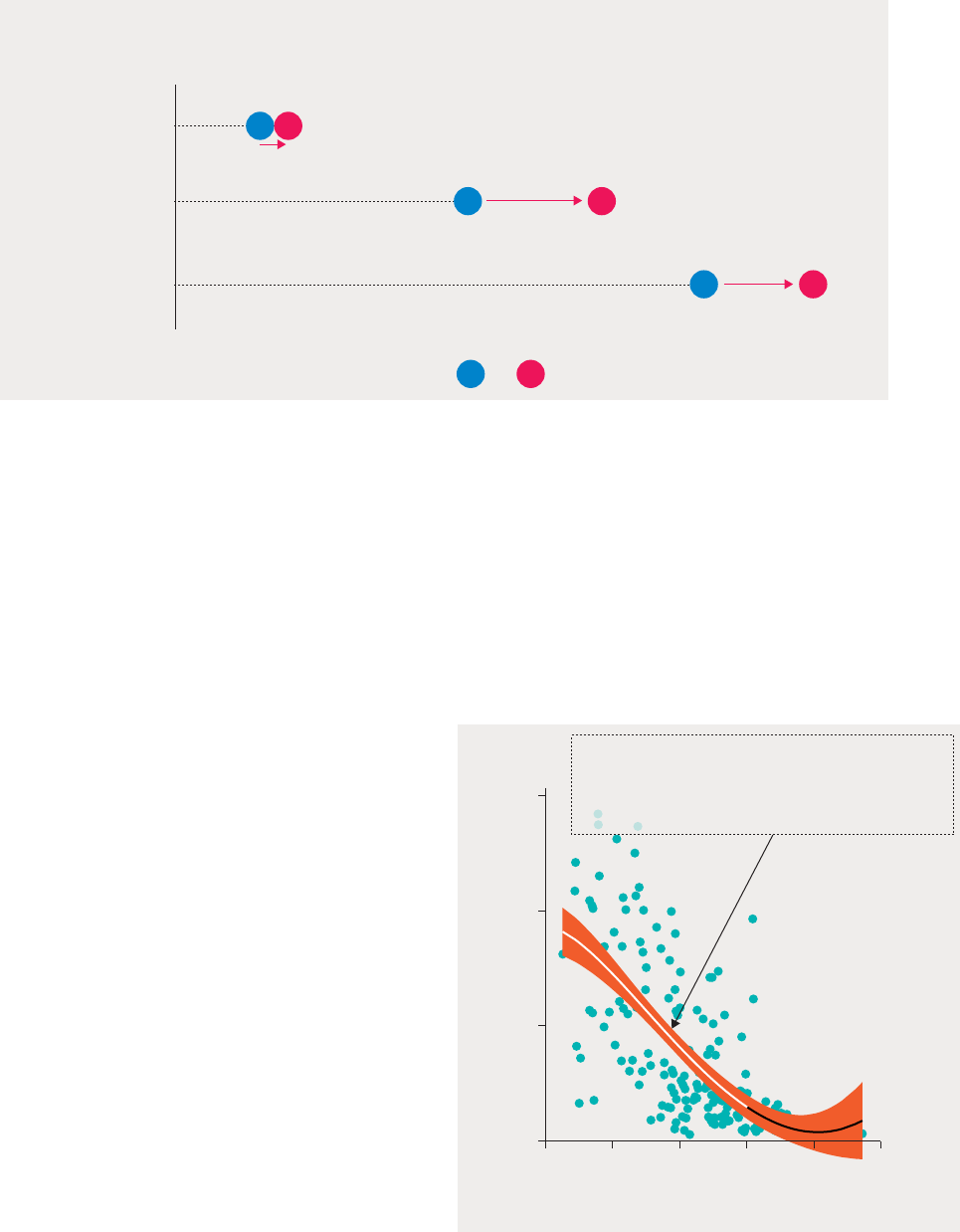
Recall that healthcare universalism is weaker and
improving less rapidly in developing countries. In ad-
dition, healthcare systems in developing countries
seem to be less eective or not t-for-purpose to deal
with the challenges arising from the burden of non-
communicable diseases and pandemics.
The current generation of healthcare systems is
associated with remarkable achievements in human
security, including the reduction in mortality rates at
all ages—but the progress is heterogenous. The 2019
Human Development Report documents two global
trends. First, inequalities in basic capabilities (prox-
ied by surviving the rst years of life, the focus of the
Millennium Development Goals) are declining: coun-
tries with high initial infant mortality rates are expe-
riencing faster reductions and are therefore catching
up. Second, inequalities in enhanced capabilities (im-
proving health at old ages, in line with the Sustaina-
ble Development Goals) are growing: countries that
already had relatively low mortality rates at older
ages have been recording more progress over the last
decade than countries with higher mortality rates at
older ages.
These patterns may be associated with the univer-
salism of healthcare systems. There is a strong neg-
ative association between HUI value and child (ages
0–5) mortality rate, a proxy of basic capabilities,
up to an HUI value of around 0.6—from there on,
improvement on the HUI does not change the child
mortality rate (gure 6.5).
In contrast, improvement on the HUI changes the
mortality rate at ages 50–80, a proxy for enhanced
Figure 6.4 Progress with inequality: Widening gaps in healthcare over time
Note: Balanced panel of 185 countries. Aggregates are based on simple averages.
Source:
Gap in average Healthcare Universalism Index value with
respect to very high Human Development Index group
High
Medium
Low
0.34
0.38
0.25
0.30
0.17
0.18
1995
2017
Figure 6.5 There is a strong negative association between
Healthcare Universalism Index value and child probability
of death up to an index value of around 0.6
Source: Human Development Report Office calculations based on Schillings
0.00
0.05
0.10
0.15
Probability of death at ages 0–5, 2015
0.0 1.0
Healthcare Universalism Index (HUI) value, 2017
0.2 0.4 0.6
0.8
As HUI value increases up to around 0.6, the
probability of death at ages 0–5 declines
rapidly. After that point the increase in HUI
value does not have a significant impact.
130 NEW THREATS TO HUMAN SECURITY IN THE ANTHROPOCENE / 2022
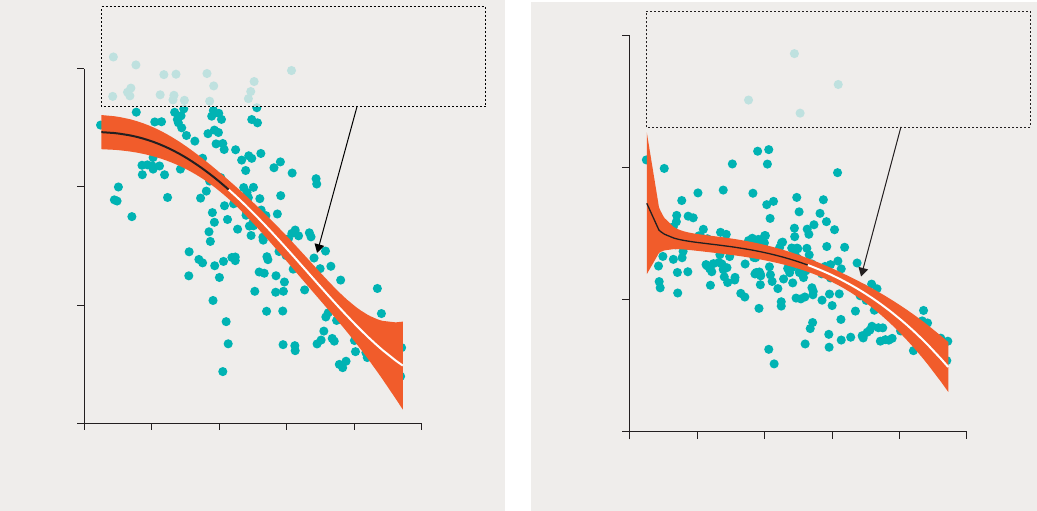
capabilities, very little up, to an HUI value of about
0.4, but from there on mortality rate drops quickly as
HUI value increases (gure 6.6). This is an indication
of the limited universalism (and thus eectiveness)
of developing country healthcare systems in respond-
ing to emerging health threats to human security that
are associated with enhanced capabilities.
“
Healthcare universalism is weaker and improving
less rapidly in developing countries. In addition,
healthcare systems in developing countries seem
to be less eective or not t-for-purpose to deal
with the challenges arising from the burden of
noncommunicable diseases and pandemics
The impact of limited universalism on the eec-
tiveness of healthcare systems to address the new
health threats to human security can be further ex-
amined by considering the burden of noncommu-
nicable diseases and preparedness for pandemics.
Improvements on the HUI up to about 0.5 reduce
the age-normalized death rate associated with non-
communicable diseases by very little (gure 6.7),
but as HUI value increases from that level, there is a
strong relationship between it and noncommunicable
disease– related deaths.
A similar pattern is observed between the Global
Health Security Index (a metric of preparedness for
pandemic response) and the HUI (gure 6.8).
Up
to an HUI value of about 0.4, HUI value is not asso-
ciated with Global Health Security Index value, but
above that level, the relationship is strongly positive
and signicant. For lower HUI values there is no sta-
tistically signicant association.
The limitations of healthcare systems already ev-
ident in this analysis will determine not only the
wellbeing and agency of people living in developing
countries but also how the world will be able to re-
spond to the compounded threats to human securi-
ty going forward in the Anthropocene context. The
greatest threats to human security are likely to be
where HUI values are lower (gure 6.9). Hazards and
challenges likely to be exacerbated in the Anthropo-
cene context will hit harder in countries with an HUI
value of 0.25 or lower and progressively less as HUI
value increases.
Figure 6.6 At a Healthcare Universalism Index value of
about 0.4 and higher, the probability of death at ages
50–80 drops quickly as index value increases
Source: Human Development Report Office calculations based on Schillings
0.2
0.4
0.6
0.8
Probability of death at ages 50–80, 2015
Healthcare Universalism Index (HUI) value, 2017
0.0 1.00.2 0.4 0.6 0.8
An increase in HUI value up to around 0.4 is
linked to relatively small reductions in the
probability of death. After that point the
probability declines rapidly.
Figure 6.7 As Healthcare Universalism Index value
increases from 0.5, there is a strong relationship between
it and noncommunicable disease–related deaths
Source: Human Development Report Office calculations based on Schillings
0
500
1,000
1,500
Death rate per 100,000 people, 2019
0.0 1.0
Healthcare Universalism Index (HUI) value, 2017
0.2 0.4 0.6
0.8
HUI value increases up to around 0.5 do not
have a significant impact on death rates
associated with noncommunicable diseases.
After that point the death rate declines
more rapidly.
131
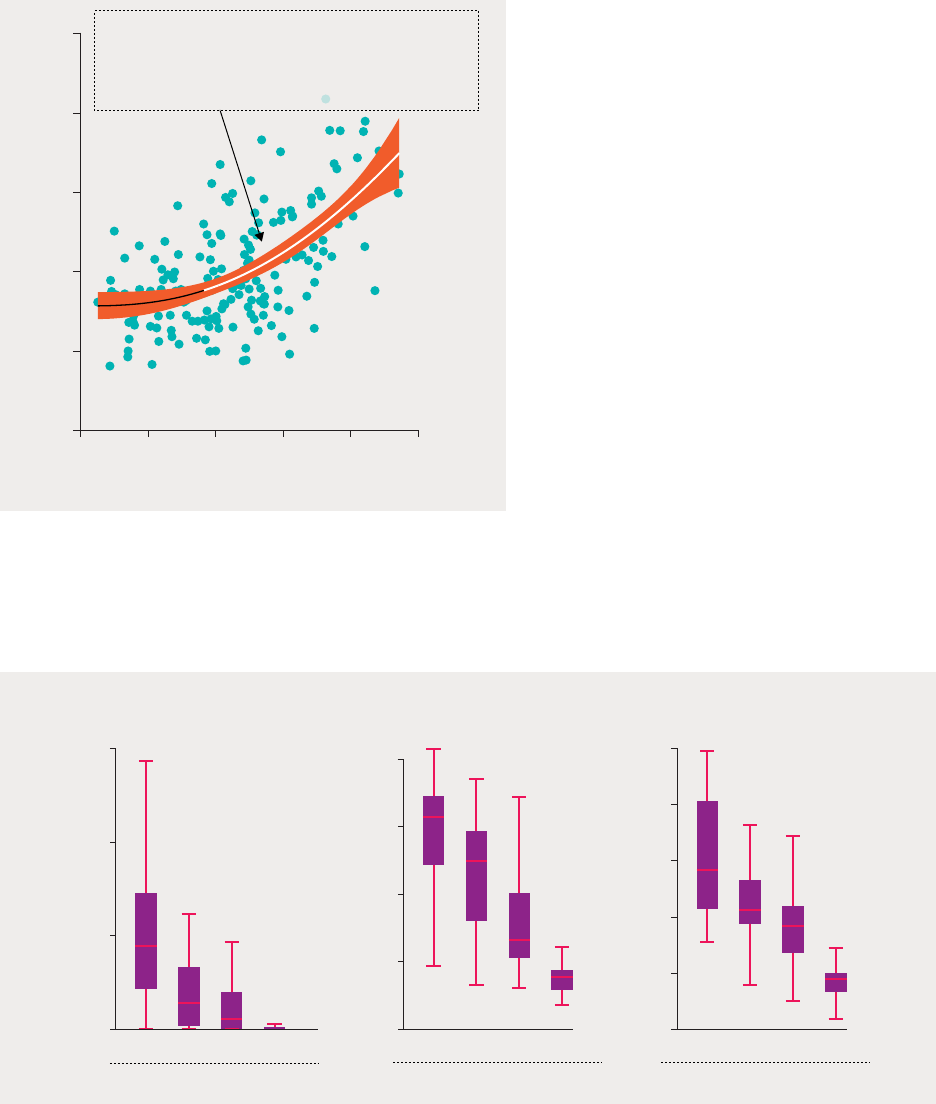
But healthcare universalism faces limitations be-
yond developing countries. The pattern of diver-
gence in life expectancy at older age (with groups
with higher socioeconomic status expanding their
advantage over the rest) is taking place in other de-
veloped countries, including Canada,
Denmark,
Finland,
England (United Kingdom),
the United
States
and some other European countries.
Even
in Sweden, which has a robust universal healthcare
system, health outcomes appear to be improving fast-
er among people at the top of the distribution than
among poorer members of the population.
The impact of the Covid-19 pandemic in societies
has also depended heavily on socioeconomic status,
even in countries with relatively universal health-
care systems. There is evidence that some groups in
Sweden have faced higher morbidity and mortality
from Covid-19: migrants had higher mortality from
Covid-19 than people born in Sweden, and this has
been explained in part by their poorer socioeconom-
ic conditions.
In the United Kingdom Black, Asian
and ethnic groups—who are more likely to have to
low incomes and nonsalaried jobs—are at higher
risk of death from Covid-19 than White Britons.
Figure 6.8 Up to a value of about 0.4, Healthcare
Universalism Index value is not associated with Global
Health Security Index value, but above that level, the
relationship is strongly positive and significant
Source: Human Development Report Office calculations based on Schillings
0
20
80
100
60
40
Global Health Security Index value, 2019
Healthcare Universalism Index (HUI) value
0.0 1.00.2 0.4 0.6 0.8
HUI increases up to around 0.4 are not
associated with changes in Global Health
Security (GHS) Index value. After that point
GHS Index value increases rapidly.
Figure 6.9 The greatest threats to human security in the Anthropocene context are likely to be experienced
where Healthcare Universalism Index values are lower
Note: Each box plots the middle 50 percent of the distribution; the central line is the median. Outside the box the extreme lines are the approximate
minimum and maximum of the distribution. All graphs exclude outliers. Healthcare Universalism Index groups for 2017 are defined as follows: group
I, 0–0.24; group II, 0.25–0.49; group III, 0.50–0.74; group IV, 0.75–1.0. Hot days refer to the number of days with a maximum temperature above 95°F
degrees by 2100 under the Representative Concentration Pathway 4.5 scenario. Inequality loss is based on Inequality-adjusted HDI values.
Source:
0
Number of days above 95°F
300
Hot days by 2100
0
10
20
30
40
Inequality loss (%)
Inequality in
human development
1
1.5
GPI value (higher value = less peace)
2
3
3.5
Global Peace Index (GPI)
I II III IV I II III IV I II III IV
100
200
2.5
Healthcare Universalism Index group Healthcare Universalism Index group Healthcare Universalism Index group
132 NEW THREATS TO HUMAN SECURITY IN THE ANTHROPOCENE / 2022

Affirming solidarity at the core of human security
strategies to address new health threats
The Covid-19 pandemic has shown that human insecu-
rity can indeed be contagious: the uncontrolled spread
of the virus in some countries is a threat to the rest of
the world. This is a moment of shared vulnerability, as
nearly every human on the planet has been aected
by a sense of insecurity or its repercussions. It is also a
moment of shift in the policy mindset. People turned
to their governments and scientists for guidance and
protection. In many countries the Covid-19 moment
brought a new set of social behaviour norms that would
have been unthinkable prior to the pandemic —also
under pinned by a shared sense of solidarity.
At the same time, the Covid-19 pandemic exposed
the structural limitations of existing multilateral
mechanisms in the face of an acute global threat to
human security. By many accounts the pandemic was
met with a failure of preparedness, cooperation and
cross-country solidarity, with dire consequences for
the most vulnerable.
As this Report describes, the
new generation of human security challenges involves
complex multidimensional threats that play out on a
global scale in the Anthropocene context. There is an
urgent need for reimagining and reforming multilater-
al systems to meet these challenges. The present mo-
ment is thus a crucial opportunity to rearm a human
security approach in strengthening multilateralism to
better address health threats to human security.
“
Past major health crises have often been
followed by the reform of global health systems
Determinants of health include various “transna-
tional norms, policies, and practices that arise from
global political interaction across all sectors that af-
fect health,” ranging from trade rules to internation-
al aid ows.
Many of these determinants contribute
to poor health outcomes among some groups (for in-
stance, intellectual property rules for lifesaving drugs
or scal austerity measures that constrain spending
on health).
And many cannot be addressed with-
in national healthcare systems alone. Interventions
must sometimes be cross-sectoral, outside the health
sector and cross-country.
An example of the importance of cross-country
action is the eort to tackle the Covid-19 pandemic
through widespread vaccination. The COVAX initia-
tive oered a way of addressing inequitable access to
life-saving vaccines against Covid-19. The eort has
reinforced how essential collaboration and solidar-
ity are for navigating a deadly, fast-moving threat to
human security. However, the COVAX initiative has
been hampered by entrenched power disparities, in-
stitutional stickiness and weak accountability mech-
anisms.
Power imbalances between partners in the
COVAX initiative and its eventual reliance on volun-
tary vaccine donations (as opposed to enabling large-
scale procurement, as initially envisaged) reduced
COVAX’s ability to secure enough, timely vaccine
doses.
The Covid-19 pandemic also exposed the
limitations of the International Health Regulations in
coordinating an eective response to an acute glob-
al health crisis.
These limitations were apparent in
the delayed reporting of the disease outbreak to the
WHO in the early days of the pandemic, the delays in
declaring a public health emergency of internation-
al concern thereafter and the delays in coordinating
national responses.
Taken together, this presents a
failure of protection, empowerment and solidarity in
the face of a very serious and universal human secu-
rity threat.
Past major health crises have often been followed
by the reform of global health systems.
The SARS
outbreak led to major revisions of the Internation-
al Health Regulations in 2005, and the 2006 H5NI
avian u outbreak was followed by the development
of the Pandemic Inuenza Preparedness Frame-
work. Similarly, the global Covid-19 pandemic could
spur evolution in global cooperation on health. A key
eort to this end is the establishment of the Inde-
pendent Panel for Pandemic Preparedness and Re-
sponse, through World Health Assembly Resolution
73.1 in May 2020.
The panel’s task is to provide an
evidence-based path forward to help countries and
global institutions address health threats, which can
greatly contribute to human security (box 6.2).
The panel’s recommendation on legal instruments
has renewed eorts to establish a new pandemic
agreement.
In May 2021 the World Health Assem-
bly passed a resolution endorsed by 194 countries
to host a special session devoted solely to an inter-
national pandemic agreement.
At the Special Ses-
sion on 1 December 2021 the assembly established
an intergovernmental negotiating body to draft and
133

negotiate a convention, agreement or other interna-
tional instrument to strengthen pandemic preven-
tion, preparedness and response.
“
As discussions over the form of the new and
reformed international instruments continue,
it is critical to retain the focus of this eort on
human security and on embedding protection,
empowerment and solidarity as key pillars
As discussions over the form of the new and re-
formed international instruments continue, it is
critical to retain the focus of this eort on human
security and on embedding protection, empower-
ment and solidarity as key pillars. A new framework
agreement for human security in the face of health
threats must arm the principle of universalism
in healthcare and tackle prevailing dysfunctions in
global governance that undermine health. Of par-
ticular importance is equity—new institutional ar-
rangements must centre the leadership and input of
those most vulnerable to pressing health challenges,
whose vulnerability has stemmed in part from their
disempowerment in global governance structures.
This entails challenging power disparities that cur-
rently shape health outcomes, including the implicit
assumption underlying existing international health
instruments—that pandemics are largely threats that
emerge from poorer countries and threaten the well-
being of the wealthy.
In the language of the 2030
Agenda for Sustainable Development, a new institu-
tional arrangement to advance health must leave no
one behind and reach the furthest behind rst in a
spirit of solidarity.
Box 6.2 From global institutional weakness to the last pandemic
The work of the Independent Panel for Pandemic
Preparedness and Response is organized around four key
themes:
1
• Build on the past. Learn from previous pandemics
and the status of the system and actors pre-Covid-19.
• Review the present. Analyse the chronology of events
and activities in relation to the Covid-19 pandemic,
the recommendations made by the World Health
Organization (WHO) and the responses by national
governments.
• Understand the impacts. Review how health systems
and communities responded to the pandemic and
the impacts of response measures.
• Change for the future. Promote analysis and a vi-
sion for a strengthened international system ideally
equipped for pandemic preparedness and response.
The panel found that the outbreak and spread of
Covid-19 reflected “gaps and failings at every critical
juncture of preparedness.”
2
Containment measures were
too slow, as was emergency response funding, and the
global response lacked coordinated leadership.
3
These
failures, along with gaps in social protection systems,
led to widening inequalities and disproportionate
socioeconomic impacts on vulnerable and marginalized
people around the world.
4
At the same time, enormous
efforts by healthcare workers around the world and the
expeditious development of vaccines have been major
strengths in efforts to mitigate the crisis.
5
The most
successful national responses drew lessons from past
crisis, listened to evidence, engaged communities and
communicated clearly and consistently.
6
The panel called for a set of immediate measures to
curb Covid-19 transmission, including (but not limited
to) commitments from high-income countries to deliver
more than a billion vaccine doses to the Gavi COVAX
Advance Market Commitment, voluntary licensing and
technology transfer for Covid-19 vaccines from vaccine-
producing countries and manufacturers, and additional
resources from Group of 7 and Group of 20 countries to
the Access to Covid-19 Tools Accelerator.
The panel also presented recommendations for
preventing future disease outbreaks from becoming
pandemics:
• Enhancing political leadership for pandemic
preparedness and response (including through a
new high-level Global Health Threats Council and a
Pandemic Framework Convention).
• Strengthening WHO’s independence, authority and
financing. Investing in national preparedness, with
universal periodic peer reviews through WHO and
an evaluation of economic policy response plans
through International Monetary Fund Article IV
consultation with member countries.
• Establishing a new agile and rapid surveillance
information and alert system by WHO with the
authority to publish information about outbreaks
with pandemic potential immediately and the power
to investigate pathogens with pandemic potential.
(continued)
134 NEW THREATS TO HUMAN SECURITY IN THE ANTHROPOCENE / 2022
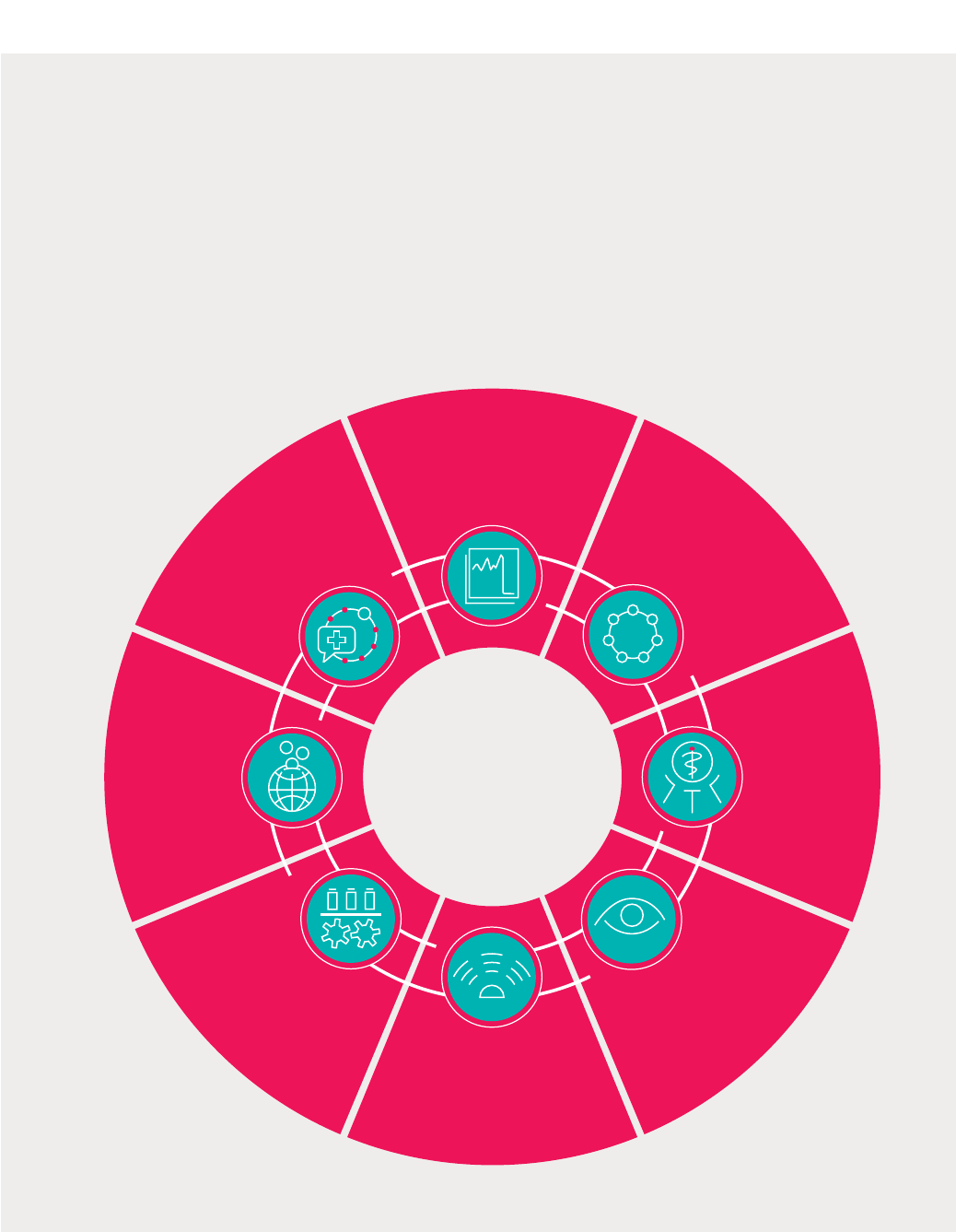
Box 6.2 From global institutional weakness to the last pandemic (continued)
• Establishing a prenegotiated, end-to-end platform for
tools and supplies, supported by technology transfer
and commitment to voluntary licencing agreements,
as well as enhanced regional capacities for manufac-
turing, regulating and procuring necessary tools and
supplies.
• Setting up a new International Pandemic Financing
Facility to support preparedness and response.
• Making national pandemic coordinators who are ac-
countable to heads of state and government, with a
mandate to drive whole-of-government coordination
for pandemic preparedness and response.
Notes
1.Independent Panel for Pandemic Preparedness and Response 2021a.
2.Independent Panel for Pandemic Preparedness and Response 2021b,
p. 2. 3. Independent Panel for Pandemic Preparedness and Response
2021b. 4.Independent Panel for Pandemic Preparedness and Response
5.Independent Panel for Pandemic Preparedness and Response
2021b. 6.Independent Panel for Pandemic Preparedness and Response
2021a.
Recommendations of the Independent Panel for Pandemic Preparedness and Response
Make it the
Last Pandemic
Effective national
coordination
Call for immediate actions
to end Covid-19
Elevate leadership
for global health
Strengthen
the WHO
Invest in
preparedness
now
Establish a new global
surveillance system
Establish a
pre-negotiated
platform for
tools and supplies
New
international
financing
for global
public goods
Source: Independent Panel for Pandemic Preparedness and Response 2021a.
135
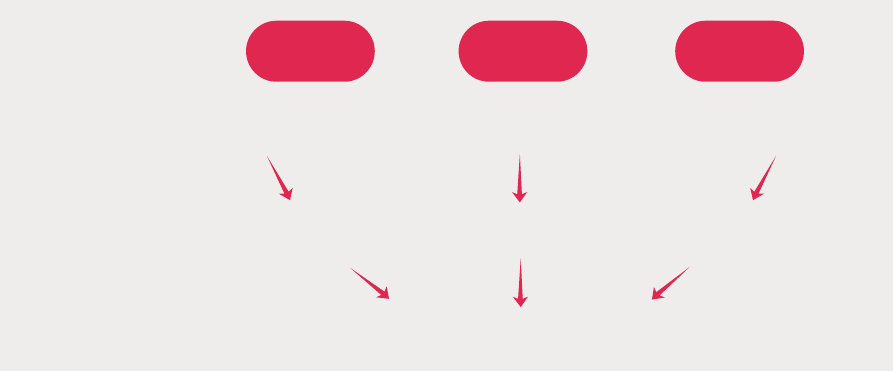
Annex 6.1. The Healthcare Universalism
Index: Coverage, equity and generosity
The Healthcare Universalism Index was developed
by Tobias Schillings and Diego Sánchez-Ancochea
in a background paper commissioned for this
Report on a new generation of human securi-
ty. The index builds on a background paper by
Martínez Franzoni and Sánchez-Ancochea for the
2016 Human Development Report. See Martínez
Franzoni and Sánchez-Ancochea (2016).
Measuring universal health coverage has been a
key focus in global health literature, at least since the
adoption of universal health coverage as Sustainable
Development Goal target 3.8. Target 3.8 aspires to
“universal health coverage, including nancial risk
protection, access to quality essential health-care ser-
vices and access to safe, eective, quality and aorda-
ble essential medicines and vaccines for all.”
But a
universalist approach to health emphasizes the im-
portance of all aspects of health system performance,
especially eective access throughout the lifecycle.
The universalist approach thus goes further than uni-
versal health coverage to consider generosity and
equity in healthcare services. The Healthcare Univer-
salism Index (HUI) combines measures of coverage,
generosity and equity in a single global index.
Like the Human Development Index, the HUI is
constructed as the geometric mean of normalized
indices in each of the three dimensions of universal-
ism (gure A6.1). The selected indicators for each di-
mension of universalism and their rationales are as
follows:
• Coverage: UHC eective coverage index, which
assesses health system performance relative to in-
dividual countries’ population health needs.
• Generosity: Government health spending as a per-
centage of GDP, which signies public eorts and
commitment to comprehensive and accessible
services for all.
• Equity: Private health spending as a percentage of
total health spending,
which indicates the seg-
mentation of healthcare. A large private sector sug-
gests high segmentation in healthcare and inequity
between wealthier and poorer groups in accessing
quality care.
This measure includes out-of-pock-
et spending, which in most countries accounts for
the bulk of private health spending.
The HUI uses these indicators for three reasons.
First, they provide high-level aggregate measures of
healthcare systems that are likely to be central rep-
resentations of universalism across many dierent
countries. Second, the availability of good data on
these indicators allows for comprehensive measure-
ment of healthcare universalism, across both coun-
tries and time. Third, the HUI’s aggregation approach
favours joint measurement along the three dimen-
sions. Joint measurement reects the premise that
Figure A6.1 Dimensions and indicators used to calculate the Healthcare Universalism Index
Source: Global Burden of Disease Health Financing Collaborator Network 2020.
Dimensions
Indicators
Dimension index
Coverage Generosity Equity
UHC effective coverage index Government health spending
(% of GDP)
Coverage index
(33%)
Private health spending
(% of total health spending)
Generosity index
(33%)
Equity index
(33%)
Healthcare Universalism Index
136 NEW THREATS TO HUMAN SECURITY IN THE ANTHROPOCENE / 2022
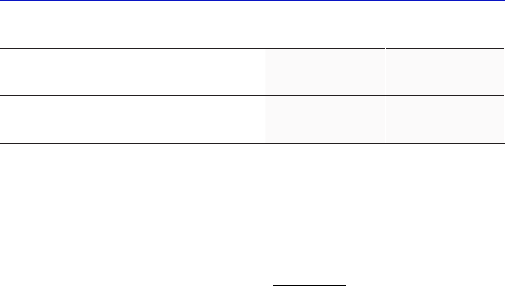
the dierent dimensions depend on each other and
so should not be considered in isolation—and that
their combined achievement is necessary to attain
truly universal outcomes.
The HUI aims to provide a globally comparable,
macro-level measure of healthcare universalism.
This high-level measure could be supplemented with
more granular analyses that capture contextually rel-
evant factors shaping the dimensions of universalism
within countries. For instance, an important con-
tribution to this eect would be to develop nation-
al health satellite accounts to evaluate the eects of
health spending on health outcomes.
The HUI uses geometric mean instead of arithme-
tic mean to aggregate the dimension indices because
geometric means favour equal achievement in all di-
mensions. Simple averages imply that reductions in
one dimension can be linearly compensated for by
equal increases in another, whereas geometric means
reduce the substitutability between the index compo-
nents and make each component’s marginal contri-
bution dependent on the level of the others. Like the
Human Development Index, the HUI assigns equal
weight to each dimension index, based on the theo-
retical assumption that all are equally important for
achieving true universalism.
The HUI’s generosity and equity dimension indi-
ces are calculated by normalizing the corresponding
variables based on their minimum and maximum
values. To avoid the impact of extreme outliers, the
minimum and maximum values are dened as the 1st
and 99th percentile of all country-year observations
(table A6.1).
The dimension indices are then calculated as:
I
D,ij
=
x
ij
– x
min
x
max
– x
min
where I
D
,
ij
is the dimension index D for country i and
year j, and x
ij
is the corresponding observation. Be-
cause the equity indicator (private health spending as
a percentage of total health spending) measures the
level of (negative) market segmentation, the result-
ing index is additionally transformed by subtracting
it from 100 percent.
The geometric mean of the two resulting generosity
and equity dimension indices and the UHC eective
coverage index
are aggregated to create the HUI:
HUI
ij
I
Coverage,ij
* I
Generosity,ij
* I
Equity,ij
⅓
.
The choice of normalization based on the 1st and
99th percentile results in the key limitation that zero
values in one of the dimensions lead to an overall
HUI value of zero and a loss of information in the
other dimensions. The pragmatic solution to this
issue is to add a marginal score to these zero values
equal to the lowest nonzero country-year observation
(usually equal to 0.1 percent).
Table A6.1 Limits of the generosity and equity indices
Indicator
Minimum
(1st percentile)
Maximum
(99th percentile)
Government health spending as a
percentage of GDP 0.3 9
Private health spending as a
percentage of total health spending 5 85
Source: Schillings and Sánchez-Ancochea 2021.
137


Greater solidarity:
Towards human
development with
humansecurity
CONCLUSION

140 NEW THREATS TO HUMAN SECURITY IN THE ANTHROPOCENE / 2022
CONCLUSION
Greater solidarity: Towards human development with
human security
The enormous shock of the Covid-19 pandemic has
unmasked the fragility of progress, touching nearly
everyone on the planet. This should serve as a wake-
up call in the face of compounded threats to human
security that are superimposed on the unprecedented
Anthropocene context. It shows that improving well-
being achievements is not a sucient condition for
human security. The pandemic could represent a dry
run of worse things to come — a series of ever-growing
waves crashing into the inability of governments and
the international community to empower and pro-
tect people around the world, but especially the most
vulnerable.
Yet, the pandemic has also given us a glimpse of
how bold action could help tackle the challenges of
our time and improve lives and wellbeing. We have
witnessed the astonishing production of dozens of
highly eective vaccines in record time — some of
them with breakthrough technologies. The vaccine
rollout has been grossly unequal, but less than a year
after the vaccination campaign started, half the world
has received at least one dose of a Covid-19 vaccine
(see chapter 6). Moreover, the pandemic has opened
the doors to aggressive policy interventions, and
many developing countries have implemented some
sort of income support programme, which in turn has
decelerated Covid-19 cases and deaths.
The Anthropocene context, with interlinked
human security threats, calls for a bold agenda to
match the magnitude of the challenges, put forward
with humility in the face of the unknown. The alter-
native is accepting fragmented security approaches,
with responses likely de-equalizing, likely reactive,
likely late and likely ineective in the long term.
This Report argues for expanding the human se-
curity frame in the face of this new generation of
threats: adding solidarity to the human security strat-
egies of protection and empowerment proposed by
the Ogata-Sen report (2003).
Solidarity recognizes that human security in the
Anthropocene must go beyond securing individuals
and their communities to systematically consider in-
terdependence across all people and between people
and the planet. For each of us to live free from want,
from fear and from indignity, all three strategies
must be deployed — for it is protection, empower-
ment and solidarity working together that advanc-
es human security in the Anthropocene. At the core
of this framework is agency: the ability to hold val-
ues and make commitments, regardless of whether
they advance one’s wellbeing, and to act according-
ly in making one’s own choices or in participating in
collective decisionmaking. Emphasizing agency is
a reminder that wellbeing achievements alone are
not all we should consider when evaluating policies
or assessing progress. Agency will also help avoid
the pitfalls of partial solutions, such as delivering
protection with no attention to disempowerment or
committing to solidarity while leaving some lacking
protection.
The 2030 Agenda for Sustainable Development
and the Sustainable Development Goals provide an
ambitious set of multidimensional objectives that
inform action at all levels and mobilize the interna-
tional community. But eorts remain largely com-
partmentalized, dealing separately with climate
change, biodiversity loss, conicts, migration, refu-
gees, pandemics and data protection. Those eorts
should be strengthened, but tackling them in silos
is insucient in the Anthropocene context. It is im-
perative to go beyond fragmented eorts, to rearm
the principles of the UN founding documents — the
Universal Declaration of Human Rights and the UN
Charter — which are also the central ideas underpin-
ning the concept of human security. Echoing the UN
Secretary-General’s Our Common Agenda,
doing so
in the Anthropocene implies a systematic, permanent
and universal attention to solidarity — not as optional
charity or something that subsumes the individual
to the interests of a collective but as a call to pursue
human security through “the eyes of humankind.”
When the 1994 Human Development Report was
published, the idea of human security challenged the
conception of security and moved the debate from
territories to people. As we face new global, system-
ic and interconnected threats, recognizing our com-
mon fate as humanity implies that we have agency
to shape our future. We will not be able to face the
systemic, global, interconnected threats individually
or by focusing only on narrow national interests. For
each of us to live free from want, from fear and from
indignity will require that everyone live free from
want, fear and indignity. As the vaccine inequality
problem shows, humanity’s problem is not lack of in-
genuity but an inability to see our security in the secu-
rity of others.
CONCLUSION 141


Notes
and
references
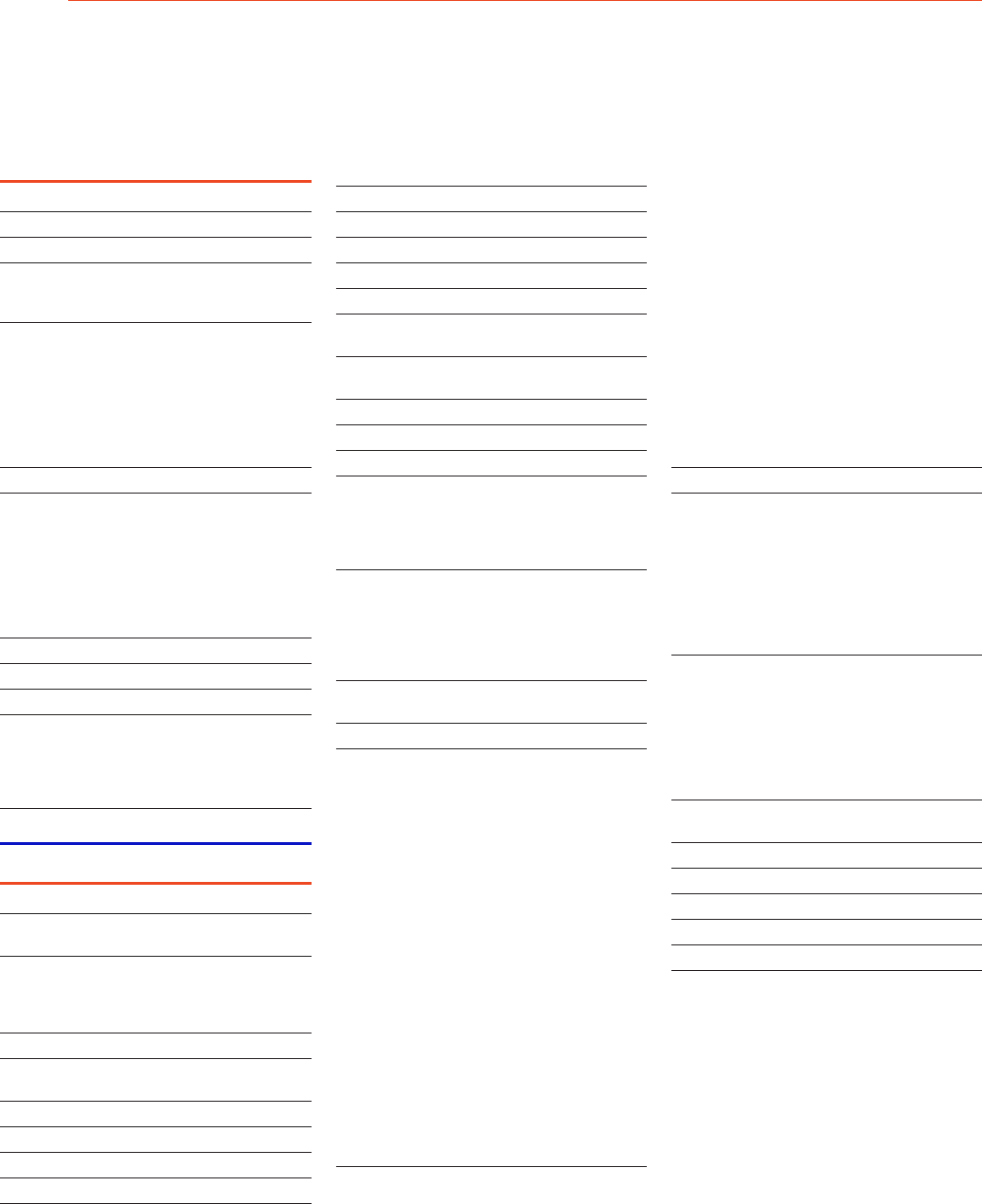
OVERVIEW
1 UNHCR 2021a.
2 Rigaud and others 2018.
3 Albuquerque and others 2016; Badgett,
Hasenbush and Luhur 2017; Romero, Goldberg
and Vasquez 2020; Suriyasarn 2016.
4 Only 25 countries have gender identity or gen-
der expression legislation: Argentina, Belgium,
Bolivia, Canada, Chile, Colombia, Denmark,
Ecuador, France, Greece, Iceland, India,
Ireland, Japan, Luxembourg, Malta, Norway,
Pakistan, Portugal, Spain, Sri Lanka, Thailand,
the United Kingdom, Uruguay and Viet Nam
(Zhan and others 2020).
5 UNDP 2019a.
6 As second-wave feminism established, “the
personal is political” (Firestone and Koedt 1970,
p. 76), and feminist researchers have analysed
violence in the individual and domestic realm
as a form of political violence and a precondi-
tion for increased violence against women
and girls in the public sphere (Firestone and
Koedt 1970; Hanisch 1969).
7 UNODC 2021.
8 Ogata and Sen 2003.
9 See chapter 1.
10 This finding is based on the generalized trust
question in the World Value Survey: “Generally
speaking, would you say that most people can
be trusted or that you can’t be too careful in
dealing with people?”
11 See chapter 1.
PART I
CHAPTER 1
1 For evidence on Covid-19 and fear, see, for
example, Satici and others (2020).
2 Which the 2020 Human Development Report
(UNDP 2020c, p. 268) defined as “asymmetries
in opportunities, wealth, and power across
groups of people.”
3 UNDP 2019a.
4 Berger 2020; Johnson and others 2020; Kees-
ing and Ostfeld 2021.
5 Lewis 2021.
6 UNDP 2020c.
7 UN 2012.
8 UNDP 1994.
9 Human Development Report Office 2020.
Gasper 2013.
10 Gasper and Gomez 2021.
11 Basu 2018, p. 40.
12 UN 1948.
13 https://sdgs.un.org/2030agenda.
14 Walker and others 2013.
15 As is the case in many high-income countries,
see Bénabou and Tirole (2006).
16 As defined in Hodson (1996). This is also the
approach to dignity in Lamont (2000).
17 As argued in Thomas and others (2020).
18 Elster 2015.
19 Lerner and others 2015, p. 807.
20 In particular, evidence suggests that fear in-
duces both stronger risk aversion and less op-
timistic risk assessments than the behaviour
that would take place by a neutral observer
(Lerner and Keltner 2001).
21 For a review of the increased understanding
and recognition of the importance of moti-
vated belief formation and reasoning, see
Bénabou and Tirole (2016). For an experiment
showing how motivated cognition leads to
trust, see Schilke, Reimann and Cook (2015).
22 To use a phrase from Lamont, Welburn and
Fleming (2013), p. 145–146.
23 Douglas 2004, p. 90.
24 Over the last decades several indices have
been created to capture the concept of human
security based on objective and subjective
data. See, for instance, Badaoui (2021), Fund
for Peace (2004), Hastings (2009), Lonergan,
Gustavson and Carter (2000), Piccone (2017),
Randolph, Fukuda-Parr and Lawson-Remer
(2010, 2020) and Takasu and JICA Ogata
Sadako Research Institute for Peace and
Development (2019). The Index of Perceived
Human Insecurity introduced in this Report
contributes to this stream of work with a global
view of perceived human insecurity, based on
information aggregated at the individual level
and comparable over time at the country level.
This effort partially responds to calls for further
innovations in measurement based on percep-
tion data received from expert panelists during
the virtual symposium, “A New Generation of
Human Security” (8–11 June 2021). The informa-
tion about perceptions of insecurity is valuable
and seeks to complement the objective indica-
tors of human insecurity and multiple threats
presented throughout this Report.
25 Based on the I-PHI, people are classified
into three groups: relatively secure, moder-
ately insecure or very insecure. The cutoffs
defining these groups are meant to provide
a general view of the distribution of human
insecurity. The concept of human security is
defined based on freedom from want, fear
and indignity. The expression “freedom from”
conveys a strict criterion for measurement.
If followed literally, less than 2 percent of the
world’s people face no measured insecurity
(based on the indicators used in the index).
Adding some flexibility, we interpret that
someone feels “relatively secure” if the I-PHI is
below 0.2 (less than one-fifth of the weighted
insecurities), someone feels “moderately inse-
cure” if the I-PHI is between 0.2 and 0.5 and
someone fells “very insecure” if the I-PHI is 0.5
or above (experiencing more than half of the
[weighted] insecurities).
26 Affected by most of the (weighted) insecurities.
27 In a similar exercise the average generalized
trust of people feeling relatively secure at least
doubles the level of trust of people feeling very
insecure, across different levels of income and
satisfaction with life. The opposite is not the
case: for people feeling moderately or very
insecure, trust levels remain relatively stable
across different levels of income or satisfac-
tion with their lives.
28 Falk and others (2018) acknowledge that
trust is a belief but also characterize it as an
economic preference, given the importance of
trust for many economic decisions, as argued
in, for instance, Arrow (1972). And Dasgupta
(2000) argues that a reputation for trustwor-
thiness is akin to a commodity, something that
is valuable and sought after.
29 See, for example, Johnson and Mislin (2012)
and Peysakhovich and Rand (2016).
30 Van Lange 2015.
31 Thöni 2017.
32 Elster 2015.
33 Gambetta 2000, p. 228.
34 Butler, Giuliano and Guiso 2016.
35 As recognized long ago in Schelling (1965,
p. 378): “We often thing of trust, reliable com-
munication and enforceable contract as good
things. We like people to overcome distrust,
confusion, and competing interests and reach
an outcome beneficial to both. […] But when
we turn to the Ku Klux Klan, corruption in the
police force, extortion in junior high schools
[…] our concern is to spoil communication, to
create distrust and suspicion, to make agree-
ments unenforceable, to undermine tradition,
to reduce solidarity, to discredit leadership,
and to sever any moral bond that holds the
conspirators together.”
Notes
144 NEW THREATS TO HUMAN SECURITY IN THE ANTHROPOCENE / 2022
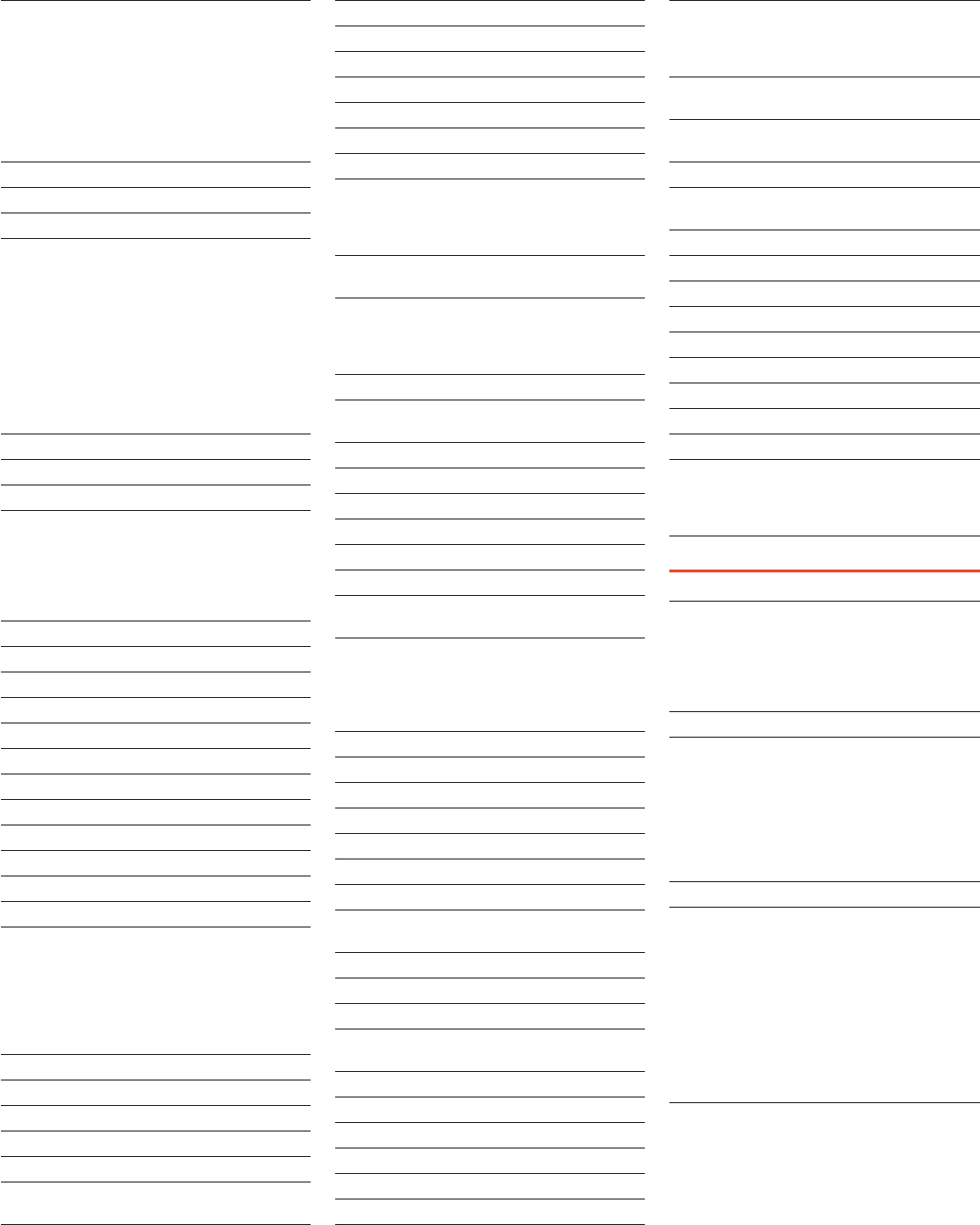
36 Henrich (2020) provides evidence of these
correlations. Henrich and Muthukrishna (2021)
suggest that trust is an antecedent of these
outcomes based on cumulative cultural evolu-
tion (Henrich and others 2016). For a review
of arguments defending, and questioning,
the cultural group selection hypothesis that
underpins cumulative cultural evolutions, see
Richerson and others (2016).
37 Glaeser and others 2000.
38 Falk and others 2018.
39 Bruhin, Fehr and Schunk 2018.
40 For instance, there has been a decrease in
trust in science in the context of Covid-19, even
though trust in scientists is an important corre-
late of the effectiveness of the response to the
pandemic (see Algan and others 2021). Declin-
ing trust is also associated with a progressive
erosion of the quality of democracy—and
the support for it—in the world over the last
decade (Alizada and others 2021). This is
consistent with the support of protectionist,
antiliberal views (Alonso and Ocampo 2020).
41 Gambetta 2000, p. 216.
42 Gambetta 2000, p. 219.
43 Kollock 1994.
44 Schilke, Reimann and Cook 2021, p. 240.
Technology is likely to further accelerate the
importance of “distributed trust,” evident from
the shift from traditional to social media and
the growing interest in digital currencies (Bots-
man 2017, 2018).
45 UNDP 1994; Ogata and Sen 2003.
46 Gasper and Gomez 2021.
47 UN and World Bank 2018.
48 Gasper and Gomez 2021, p. 24.
49 UNDP 2020c.
50 UNDP 2020c.
51 UNDP 2020c.
52 ITU 2021a.
53 UNHCR 2021a.
54 UNHCR 2020, 2021a. See also figure 4.3.
55 UNDP 2020c.
56 Miks and McIlwaine 2020.
57 This does not imply that human development
should not be pursued or that human develop-
ment never goes along with human security.
Instead, it suggests that the link between the
two is not inevitable. We support that view,
but those positive links cannot be taken for
granted.
58 Dodsworth 2019, pp. 20 and 34.
59 Franceschet 2005.
60 IHME 2018.
61 Tadjbakhsh 2013, p. 43.
62 Gasper and Gomez 2021.
63 United Nations Trust Fund for Human Security
2016.
64 Ogata and Sen 2003, p. 10.
65 Ord 2020.
66 Sen 2001, p. 19.
67 Article 7 of ILO 1989.
68 Sen 2001, pp. 18–19.
69 Ogata and Sen 2003.
70 Gasper and Gomez 2021, p. 37.
71 Gasper 2020, p. 577.
72 Even in connection to eminently global issues
such as sustainability, the presence of human
security as a guiding concept has been scat-
tered. See Gasper and Gomez (2021).
73 Martin and Owen 2013, p. 322; see also Correll
(1999).
74 There is a vast literature on global public
goods, but early contributions include Kaul
and Conceição (2006), Kaul, Grunberg and
Stern (1999) and Kaul and others (2003).
75 Slaughter 2009, 2017.
76 Okonjo-Iweala, Shanmugaratnam and Sum-
mers 2021.
77 Kaldor 2020, p. 5.
78 Based on Elster (2015).
79 Petersen 2021; Petersen and others 2021.
80 Guterres 2020.
81 UN 2021d.
82 Sen 2009, p. 130.
83 Hassoun 2021, p. 20, based on Altuire and Has-
soun (2021).
84 The caution, highlighted earlier in the chapter,
about how trust within certain groups can be
not only counterproductive but even some-
thing that we may have reason to undermine
also applies to solidarity within certain groups.
85 UN 2021d.
86 Gasper and Gomez 2021.
87 Bai, Gauri and Fiske 2021.
88 Hirschman 1985, p. 95.
89 UNDP 1994.
90 Ogata and Sen 2003.
91 UN 2013.
92 United Nations Trust Fund for Human Security
2016.
93 UNDP 1994.
94 UN 1948.
95 UNDP 1994, p. 3.
96 Krause (2013), as cited in Martin and Owen
(2013), p. 77.
97 UNDP 1994, p. 10.
98 UNDP 1994.
99 Gasper and Gomez 2014.
100 Ogata and Sen 2003.
101 Ogata and Sen 2003, p. 4.
102 Ogata and Sen 2003, p. 4.
103 Ogata and Sen 2003, p. 12
104 UN 2012. As part of the resolution, it is agreed
that “the notion of human security is distinct
from the responsibility to protect and its imple-
mentation” (p. 2).
105 Tadjbakhsh (2013), as cited in Martin and
Owen (2013).
106 See United Nations Trust Fund for Human
Security (2016).
107 Andersen-Rodgers and Crawford 2018.
108 Unpublished document shared by the UN Hu-
man Security Unit.
109 Gasper and others 2020.
110 Gasper 2020, p. 581.
111 Owen (2004) makes a similar argument.
112 See Christie (2013) for a detailed analysis.
113 Gentry, Shepherd and Sjoberg 2018; UN 2000.
114 Paris 2001, p. 88.
115 Khong 2001, p. 232.
116 Johns 2014, p. 3.
117 Based on Tadjbakhsh and Chenoy (2007).
118 Critical examinations such as those in Chan-
dler and Hynek (2010) present important
challenges to address when advancing and
revisiting the human security approach.
119 Haerpfer and others 2021.
CHAPTER 2
1 Comparisons are between dry biomass and
Anthropogenic mass plus waste. Anthropo-
genic mass includes concrete, aggregates,
bricks, asphalt, metals, wood used for paper
and industry, glass and plastic. See Elhacham
and others (2020).
2 IPCC 2021; UNEP 2021.
3 There is a debate over whether the Anthro-
pocene constitutes a new geological epoch
(see Ellis 2018). The term is used here to signify
the context in which humans have become
a transformative force shaping the planet.
Some scholars have suggested that the
Anthropocene could be characterized as an
ongoing event (Bauer and others 2021).
4 Gomez and Gasper 2021.
5 As argued in the 2020 Human Development
Report (UNDP 2020c), the term “balance” is
used recognizing that the Earth system has
displayed many different states over geo-
logical time and is a dynamic system that is
constantly evolving. It is not meant to evoke
an aspiration to return to a more “balanced
state.” Planetary imbalances are simply a
way of expressing planetary changes that are
dangerous for people and other forms of life
on the planet.
6 For instance, indigenous peoples who often
have a record of effective stewards of nature,
including preservation of forests that help miti-
gate climate change, face limited resources
and agency to continue to contribute to the
stewardship of nature (UNDP 2020c). Mean-
while, groups that account for larger shares
of the contributions to planetary change are
likely to face a lower burden of the resulting
NOTES 145

human insecurity. For instance, with climate
change the top 10 percent of the global
income distribution—with likely the ability to
invest in climate adaptation—generates al-
most half of global greenhouse gas emissions
(Chancel and others 2022).
7 IPCC 2021.
8 IPCC 2021.
9 IPCC 2021.
10 “Continued ice loss over the 21st century is vir-
tually certain for the Greenland Ice Sheet and
likely for the Antarctic Ice Sheet” (IPCC 2021, p.
SPM-21).
11 UNDP 2020c.
12 WWF 2020.
13 IPBES 2019.
14 Bar-On, Phillips and Milo 2018; Ritchie 2021.
15 WWF 2020. Using panel data for 2005–2015,
Bjelle and others (2021) find that food con-
sumption has the highest impact on biodi-
versity. But manufacturing and shelter have
the strongest income elasticity of footprint in
high-income countries.
16 The term “land use” refers to the human use of
land, as for agriculture, residential and indus-
trial purposes. According to the Food and Ag-
riculture Organization of the United Nations,
the rate of deforestation has decreased over
the past three decades and was estimated at
10 million hectares a year between 2015 and
2020. The world is not on track to meet the
target of increasing forest area by 3 percent
worldwide by 2030, as set in the United Na-
tions Strategic Plan for Forests (FAO 2020).
17 IPBES 2019, p. 28.
18 UN-Water 2021.
19 Betts and others 2017.
20 Millard 2021; Soroye, Newbold and Kerr 2020.
Up to $577 billion in annual global crops are at
risk from pollinator loss (IPBES 2019).
21 UNEP 2021.
22
others 2021.
23 Elhacham and others 2020.
24 UNEP 2021.
25 The 2019 Human Development Report (UNDP
2019a) discusses this improvement as a case
of convergence in basic capabilities.
26 FAO 2021b.
27 Coronese and others 2019; UNDP 2020c.
28 https://www.internal-displacement.org/
database/displacement-data, Accessed 10
November 2021.
29 An estimated 1.2 billion people are at risk of
displacement by 2050 (IEP 2020a).
30 Contiguous areas along the coast that are
less than 10 metres above sea level. See Kulp
and Strauss (2019).
31 Kulp and Strauss 2019.
32 Carabine and Dupar 2014; IPCC 2014a.
33 Martyr-Koller and others 2021; Nurse and oth-
ers 2014; Thomas and others 2020.
34 See chapters 2 and 3 in UNDP (2020c).
35 See chapters 2 and 3 in UNDP (2020c).
36 See chapter 2 in UNDP (2020c).
37 See the overview of UNDP (2020c).
38 UNDP 2019a.
39
figure 1.6.
40 This study works with the population-weighted
country-level per capita GDP distribution (Dif-
fenbaugh and Burke 2019).
41 Leach and others 2018; UNDP 2020c. Recog-
nitional equity refers to recognition of interest
holders and respect for their identity, values
and associated rights. Distributional equity re-
fers to the distribution of resources, costs and
benefits among people and groups. Proce-
dural equity relates to how decisions are being
made in reference to institutions, governance
and participation.
42 Galaz, Collste and Moore 2020; Keys and oth-
ers 2019.
43 FAO and others 2021.
44 In 2019. http://ghdx.healthdata.org/gbd-results
-tool, accessed 10 November 2021; IHME 2019.
45 This is summarized in the account by FAO and
others (2021, p. 51): “In the last ten years, the
frequency and intensity of conflict, climate
variability and extremes, and economic
slowdowns and downturns have increased
significantly. The increased occurrence of
these major drivers, now exacerbated by the
COVID-19 pandemic, has led to a rise in hun-
ger and has undermined progress in reducing
all forms of malnutrition, particularly in low-
and middle-income countries.”
46 IFAD 2021.
47 Gheuens, Nagabhatla and Perera 2019.
48 Ray and others 2019.
49 Impacts are mostly negative in Australia, Eu-
rope and Southern Africa, generally positive in
Latin America and mixed in Asia and Northern
and Central America (Ray and others 2019).
50 Wossen and others 2018.
51 Gupta, Somanathan and Dey 2017; Sarker,
Alam and Gow 2012.
52 Niles and Brown 2017.
53 In Africa the frequency and intensity of heat-
waves are projected to continue to increase
through the 21st century (Masson-Delmotte
and others 2019).
54 Tutwiler and others 2017.
55 Castañeda-Álvarez and others 2016; Sharp 2011.
56 This paragraph is based on UNDP (2020c).
57 Ding and others 2017.
58 Different effects interact, as changing environ-
mental conditions can initiate a vicious circle:
infectious disease causes or compounds hun-
ger, which makes affected populations more
susceptible to infectious disease, which in turn
can lower the capacity to use food effectively.
For instance, extreme heat is more likely to
have adverse effects on food-insecure people
(Watts and others 2018).
59 Keesing and others 2010.
60 Rulli and others (2017) show that the Ebola
outbreak in West and Central Africa was
due mostly to human encroachment and
deforestation.
61 McKee and others 2021.
62 MacDonald and Mordecai 2019.
63 Manisalidis and others 2020.
64 WHO 2021k.
65 Lelieveld and others 2020.
66 International trade affects the global distribu-
tion of air pollution. See some evidence for
China in Wang and others (2017).
67 UNEP 2019.
68 Kawser Ahmed and others 2016.
69 Effah and others 2021.
70 Nizzetto, Futter and Langaas 2016; Scheurer
and Bigalke 2018.
71 Sharma and Chatterjee 2017.
72 Waring, Harris and Mitchell 2018.
73 In line with the Sixth Assessment of the Inter-
governmental Panel on Climate Change, we
use the Representative Concentration Path-
way (RCP) 8.5 scenario to illustrate the case of
very high GHG emissions or scenario without
climate change mitigation. About recent chal-
lenges to the assumptions of the RCP8.5 sce-
nario, the report states (IPCC 2021, p. TS-22):
“In the scenario literature, the plausibility of
some scenarios with high CO
2
emissions, such
as RCP8.5 or SSP5-8.5, has been debated in
light of recent developments in the energy sec-
tor. However, climate projections from these
scenarios can still be valuable because the
concentration levels reached in RCP8.5 or
SSP5-8.5 and corresponding simulated climate
futures cannot be ruled out. That is because of
uncertainty in carbon-cycle feedbacks which
in nominally lower emissions trajectories can
result in projected concentrations that are
higher than the central concentration-levels
typically used to drive model projections.”
74 Carleton and others 2020.
75 Carleton and others 2020.
76 Human Development Report Office calcula-
tions using RCP4.5 and RCP8.5 scenarios.
Based on data from Carleton and others
(2020).
77 One indicator of the unequal effect of climate
change is the percentage of people living
in areas with an expected increase in death
rates, which is 97 percent in the Arab States, 95
percent in South Asia, 82 percent in East Asia,
77 percent in both Sub-Saharan Africa and
Latin America and the Caribbean and 56 per-
cent in Eastern Europe and Central Asia. (Hu-
man Development Report Office calculations
with data from Carleton and others 2020).
78 Carleton and others 2020.
146 NEW THREATS TO HUMAN SECURITY IN THE ANTHROPOCENE / 2022
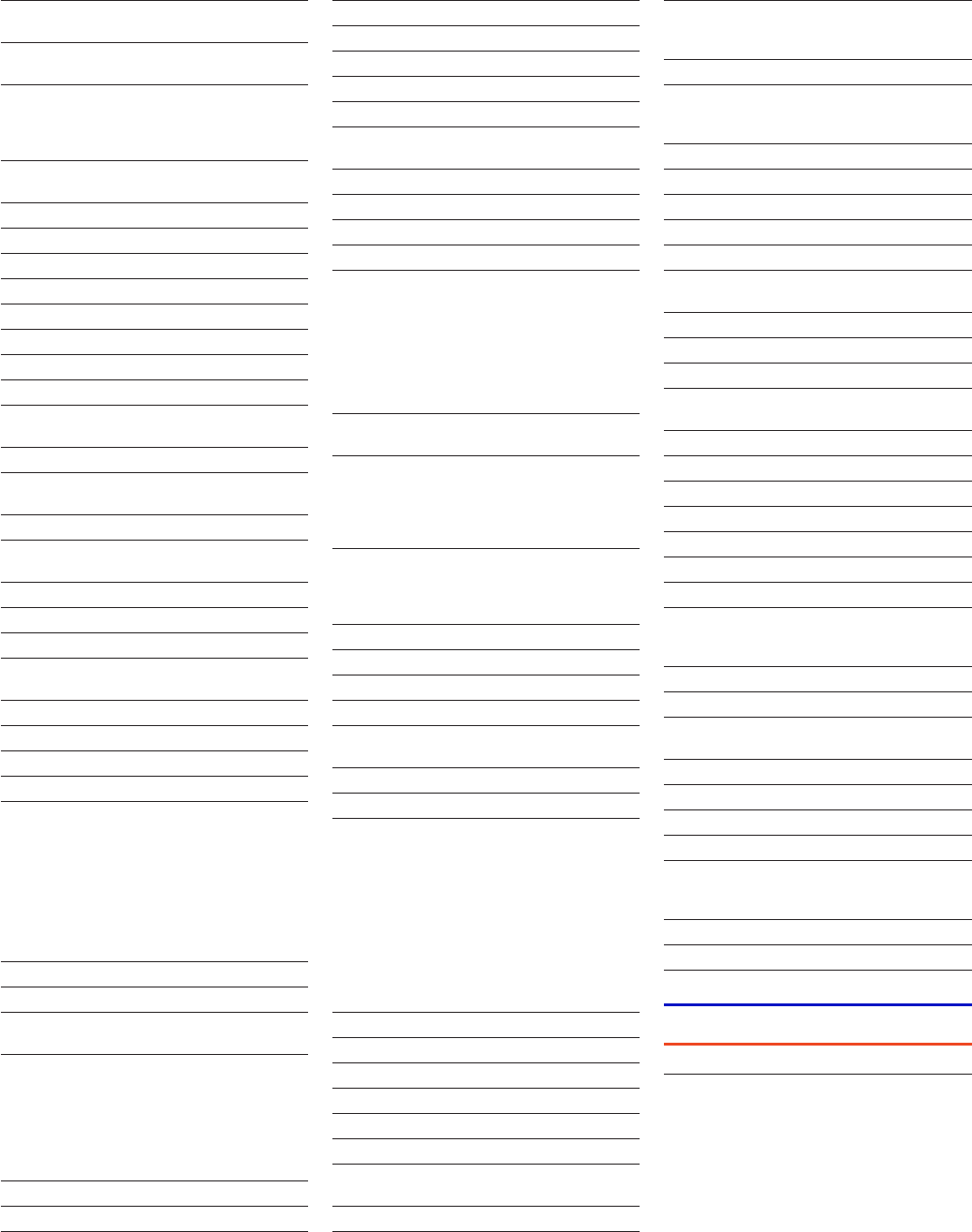
79 See the comprehensive review of this topic in
Lövbrand and Mobjörk (2021).
80 See, for example, Blattman and Miguel (2010)
and Hsiang (2015).
81 See, for example, Lövbrand and Mobjörk
(2021) and Mobjörk, Krampe and Tarif (2021)
for recent discussions of the links between the
Anthropocene and violent conflict.
82 Burke, Hsiang and Miguel 2015; Harp and Kar-
nauskas 2018; Koubi 2019.
83 Koubi 2019.
84 ICRC 2019.
85
86 Ide and others 2020.
87 Harari and Ferrara 2018.
88 Vesco and others 2021.
89 Linke and Ruether 2021.
90 Raleigh, Choi and Kniveton 2015.
91 Adger and others 2021; UNHCR 2019, 2021a,
2021c; UNHCR and UNICEF 2019.
92 UN 2021a.
93 Clement and others 2021; Rigaud and others
2018.
94 Mares and Moffett 2016.
95 Dalby 2013; Kalantzakos 2021; Lazard and
Youngs 2021.
96 Zivin, Hsiang and Neidell 2018.
97 Park and others 2020.
98 Fishman, Carrillo and Russ 2019.
99 Bharadwaj and others 2017; Zaveri and others
2019.; Zivin and Neidell 2013.
100 Baez, Fuente and Santo 2010; McDermott 2012.
101 Baez, Fuente and Santo 2010.
102 Paudel and Ryu 2018.
103 Paudel and Ryu 2018.
104 Physical discomfort caused by heat exposure
can be caused by several factors such as air
temperature, humidity, wind speed, clothing,
exposure to direct sunlight and the intensity
of work. For some occupations factors such
as clothes and exposure to the sun can be
reduced by public and private policies, while
other factors such as temperature and humid-
ity depend largely on climate change.
105 Zander and others 2015.
106 Ma and others 2019.
107 Rode and others 2021a. See also similar esti-
mates in Orlov and others (2020).
108 Kuhla and others 2021. Huang and others
(2020) estimate that an increase in tempera-
ture will reduce an average rural resident’s
time from farm work and increase the time
allocated to off-farm work, which can result
in the outflow of workers from agriculture to
nonfarm occupations.
109 Colmer 2021.
110 Jessoe, Manning and Taylor 2018.
111 Costanza and others 2017.
112 Dasgupta 2021.
113 Of 140 countries studied (UNEP 2018).
114 Chiabai and others 2011.
115 IPBES 2018.
116 World Bank 2017.
117 Hamilton and Casey 2016; Menéndez and oth-
ers 2020.
118 Menéndez and others 2020.
119 Menéndez and others 2020.
120 IPCC 2020.
121 Burrell, Evans and Kauwe 2020.
122 About 76 percent in 2018 (https://www.climate
watchdata.org/ghg-emissions?end_year=
2018&start_year=1990, accessed 10 November
2021). Levesque and others (2018) estimate
that without policy changes, the global
electricity demand from buildings is expected
to increase from 116 EJ a year in 2010 to 120–
378 EJ a year in 2100.
123 See discussion of the literature in Rode and
others (2021b).
124 For instance, Khan and others (2021) show that
mean temperature changes drive increases in
annual electricity demands by 0.5–8 percent
across the United States in 2100, in a scenario
with very high emissions.
125 Wenz, Levermann and Auffhammer (2017)
estimate a significant increase in energy con-
sumption in southern and western Europe and
significant decrease in northern Europe.
126 Peters and others 2020.
127 Rode and others 2021b.
128 See chapter 3 in UNDP (2020c).
129 See chapter 3 in UNDP (2020c).
130 See, for instance, Yigitcanlar and Cugurullo
(2020).
131 See, for instance, Parmentola and others (2021).
132 See, for instance, Mi and Coffman (2019).
133 As Partha Dasgupta (2021, p. 3, as cited in
Morrissey 2021) recently noted, the disciplinary
dominance of Economics and its “exclusion
of nature” from macroeconomic models of
growth and development have brought us to
a key juncture where we need to rethink eco-
nomic production with a new sensibility of the
interconnected human and nonhuman worlds
in which we live: to “break the cycle and revise
the conception we hold of humanity’s place in
the biosphere.”
134 Godber and Wall 2014.
135 Morrissey 2021; Wallace 2016.
136 Gomez and others 2020.
137 UNDP 2020c.
138 UNDP 2020c.
139 Rundle 2019.
140 For vertebrate species, see Schuster and oth-
ers (2019).
141 Walker and others 2020.
142 Renick 2020.
143 For a discussion on factors affecting resilience
of indigenous groups, see Ford and others
(2020).
144 Global Witness 2019.
145 For instance, in the Yellowstone model of
national park management, which has been
used around the world (Sobrevila 2008).
146 Nakashima and others 2012.
147 Schlosberg and Carruthers 2010.
148 Holland 2017.
149 Mfitumukiza and others 2020.
150 Mfitumukiza and others 2020.
151 Díaz and others 2018; Ellis, Pascual and Mertz
2019.
152 Ellis and others 2021.
153 Ellis and others 2021.
154 Díaz and others 2018.
155 Aram and others 2019; Doick, Peace and
Hutchings 2014; Szkordilisz 2014.
156 Lin 2011.
157 Sluijs and Vaage 2016.
158 Ghestem and others 2014.
159 Chausson and others 2020; IUCN 2016.
160 Oral and others 2020.
161 Maiga, Sperling and Mihelcic 2017.
162 Vörösmarty and others 2021.
163 Dibala, Jose and Udawatta 2021; Elevitch,
Mazaroli and Ragone 2018; Keesstra and oth-
ers 2018.
164 Anderson and others 2019.
165 Griscom and others 2017.
166 Brancalion and others 2019; Houghton, Byers
and Nassikas 2015.
167 Seddon and others 2020.
168 UNDP 2019a.
169 Morrissey 2021; UNDP 2020c.
170 See chapters 5 and 6 in UNDP (2020c).
171 On the importance of social capital for resil-
ience, see Aldrich and Meyer (2014) and Butzer
(2012).
172 UNDP 2020c.
173 See Basu (2018).
174 See chapter 4 in UNDP (2020c).
PART II
CHAPTER 3
1 Digital technology is a vast field. This chapter
considers digital security, artificial intelligence
algorithms and digital labour platforms,
based on the relevance of these aspects for
many aspects of life in today’s world (see Hil-
bert 2020). The chapter also covers inequali-
ties in the ability to access technologies and
capacities for driving technological change,
particularly in the context of Covid-19.
NOTES 147

2 Haenssgen and Ariana 2018.
3 Oosterlaken 2009; Oosterlaken and van den
Hoven 2012; UNDP 2020g.
4 Coeckelbergh 2011.
5 UNDP 2016a, 2016b.
6 McLennan 2021.
7 For discussions on applying a human-centric
approach to cybersecurity, see Deibert (2018)
and Liaropoulos (2015).
8 Aneja 2021.
9 Shami 2021.
10 Tunggal 2021.
11 Under cyberthreats, ENISA (2018) includes
malware, web-based attacks, web applica-
tion attacks, phishing, denial of service,
spam, botnets, data breaches, insider threat,
physical manipulation/damage/theft/loss,
information leakage, identity theft, crypto-
jacking, ransomware and cyberespionage. In
2021 ENISA identified supply chain threats as
a separate, ninth category and analysed it in
detail in a dedicated report (ENISA 2021).
12 Purplesec 2021.
13 Purplesec 2021.
14 Calandro 2021.
15 Europol 2021.
16 In recent years Chinese tech firms — such as
CloudWalk, Hikvision, Huawei and Yitu — have
expanded their presence across Africa to be-
come the telecom partners of choice for most
African governments (Bagwandeen 2021; van
der Made 2021). According to Wilson (2019),
Huawei and fellow Chinese telecom group
ZTE are said to have built more than 50 3G
networks in more than 36 African countries.
17 FireEye 2021. “Dwell time” in cybersecurity is
the time between an attacker’s initial penetra-
tion of an organization’s environment and the
point at which the organization finds out the
attacker is there.
18 Calandro 2021.
19 Calandro 2021; https://data.worldbank.org/
indicator/IT.NET.SECR.P6. Three Sub- Saharan
Africa countries with an exceptionally high
number of security servers per million people
are Mauritius (915), South Africa (14,422) and
Seychelles (61,109). The values for Mauritius
and Seychelles are artificially high, caused by
very small population in the denominator.
20 Kshetri 2019; Serianu 2017.
21 Clemente 2013.
22 ITU 2021b.
23 Tunggal 2021.
24 Fisher 2021.
25 Nakashima 2021.
26 ICRC 2021; Kallenborn 2020; Tegmark 2021.
27 Guterres 2018.
28 Deodoro and others 2021a. The International
Monetary Fund argues that financial institu-
tions should take steps now to prepare for the
cryptographic transition to improve overall
cybersecurity resilience. See Deodoro and oth-
ers (2021b).
29 Deodoro and others 2021b.
30 Huang, O’Neill and Tabuchi 2021.
31 Lopez and Livni 2021.
32 Fletcher, Larkin and Corbet 2021.
33 Kode 2018; Roberts 2021.
34 Cox and others 2018; EUROPOL 2021.
35 Alfifi and others 2019; Awan 2017; Cox and oth-
ers 2018; Khawaja and Khan 2016.
36 Cox and others 2018; Parker 2019. See also
Ganor (2021) on the challenges of using AI to
prevent terrorism and Graeber (2015) on mov-
ing from poetic technologies to bureaucratic
technologies.
37 See Dias Oliva (2020) and Newton (2019).
38 Fuller 2020.
39 Dias Oliva 2020.
40 Böke 2021.
41 AI is a broad area of study that deals with
problem solving by machines through
processing information and perceiving its
environment. AI algorithms differ from simple
algorithms by involving learning, mimicking
cognitive functions of humans and actively
perceiving environment. AI applications in-
clude advanced web search engines (such
as Google), recommendation systems (used
by Amazon, Facebook, Netflix and YouTube),
understanding human speech (such as Alexa
and Siri) and text (such as Google Translate),
self-driving cars (such as Tesla), image recog-
nition (Facebook and medical applications),
automated decisionmaking and competing
at the highest level in strategic game systems
(such as chess and Go).
42 Kakani and others 2020.
43 See https://www.businesscalltoaction.org.
44 Hulko 2018.
45 Ahmad and others 2021.
46 See Hilbert (2021).
47 See Hilbert (2021).
48 Pew Research Center 2017.
49 Brady and others 2017.
50 See Hilbert (2021).
51 UNDP 2019a.
52 Stankovich 2021.
53 Knight 2020.
54 Lashbrook 2018.
55 Data2X and Grantham 2020; Niethammer 2020.
56 Eubanks 2018.
57 O’Neil 2016.
58 Madrigal 2013.
59 Perez 2019.
60 Dastin 2018.
61 Stankovich 2021.
62 Mahomed 2018.
63 Zhang 2021.
64 See Stankovich (2021).
65 Nordling 2019.
66 ILO 2021c.
67 Compensation on web-based platforms is
often below minimum wage. See Berg and
others (2018).
68 The findings are from International Labour
Organization surveys conducted among
some 12,000 platform economy workers in 100
countries and interviews with 70 businesses, 16
platform companies and 14 platform worker
associations. See ILO (2021c).
69 ILO 2021c.
70 ILO 2021c.
71 Irani 2015.
72 Rani and Singh 2019.
73 Bloom 2021; De Stefano 2020.
74 Moore, Akhtar and Upchurch 2018.
75 Greene and Alcantara 2021.
76 IFOW 2021.
77 De Stefano 2020; Moore, Akhtar and Upchurch
2018.
78 IFOW 2021.
79 Wachter, Mittelstadt and Floridi 2017.
80 For a discussion on how technological advanc-
es can cause divergence, see UNDP (2019a).
81 Gabredikan and Apuzzo 2021; UN 2021e.
82 Spence, Stiglitz and Ghosh 2021.
83 Krishtel and Malpani 2021; WEF 2021.
84 Prabhala, Jayadev and Baker 2020.
85 Kaplan, Stolberg and Robbins 2021.
86 See, for instance, IFPMA (2020), Pfizer (2021)
and PhRMA (2021).
87 INET 2021.
88 Blenkinshop 2021.
89 See Basu, Gostin and Hassoun (2021).
90 Robbins 2021.
91 Hagiu and Yoffie 2013; UNDP 2001.
92 Baker, Jayadev and Stiglitz 2017; Cheng and
Parra 2018.
93 Baker, Jayadev and Stiglitz 2017; Benkler 2010.
94 Cheng and Parra 2018.
95 ILO 2021c.
96 Gawer 2014.
97 Lerner and Tirole 2005.
98 Lunden 2015.
99 Hard 2014.
100 NASA 2015.
101 Mazzucato 2021; NASA 2014.
CHAPTER 4
1 This chapter is concerned with violent conflict
in the broad sense of the phrase. Measuring
148 NEW THREATS TO HUMAN SECURITY IN THE ANTHROPOCENE / 2022

conflict is afflicted with technical and political
challenges, and definitions vary. Much of the
analysis is based on the definitions of the Up-
psala Conflict Data Program, considered the
gold standard in peace and conflict studies.
However, the chapter also expands the analy-
sis to show the need for innovation in data and
metrics to obtain a more comprehensive un-
derstanding of both peace and conflict. The
following definitions underpin the analysis:
State-based conflict: A contested incom-
patibility over government or territory where
at least one party is a state, and the use of
armed force results in at least 25 battle-related
deaths in a calendar year.
Nonstate conflict: The use of armed force
between organized groups, none of which is
the government of a state, resulting in at least
25 battle-related deaths in a calendar year.
One-sided violence: The use of armed
force by the government of a state or by a
formally organized group against civilians
that results in at least 25 deaths (excluding
extrajudicial killings in custody).
Battle deaths: Fatalities caused by war-
ring parties that can be directly attributed to
combat, including civilian losses.
Conflict event: An incident in which armed
force is used by an organized actor against
another organized actor or against civilians,
resulting in at least 1 direct death at a specific
location and a specific date.
Conflict-affected population: Number of
people living within 50 kilometres of a conflict
event.
2 UNDESA 2020b; UNODC 2019.
3 UN Women 2020b.
4 Kishi 2021.
5 Loescher 2021.
6 Yuan and McNeeley 2016.
7 Sustainable Development Goal indicator 16.1.4
refers to the proportion of the adult population
who feel safe walking alone in their neighbour-
hood (United Nations Statistics Division 2021).
8 UN and World Bank 2018.
9 UN and World Bank 2018; Vera-Adrianzén and
others 2020.
10 Pettersson and others 2021.
11 UNDP 2019a.
12 UNDP 2019a, 2020c.
13 de Coning 2016, 2020.
14 World Bank 2020b.
15 Carothers and O’Donohue 2019.
16 Balcells and Justino 2014; Cederman, Weid-
mann and Gleditsch 2011; Demmers 2017. See
also Stewart, Holdstock and Jarquin (2002) on
horizontal inequalities and violent conflict.
17 Alizada and others 2021.
18 Alizada and others 2021.
19 As shown in the 2020 Human Development
Report (UNDP 2020c), the number of environ-
mental activists killed has more than tripled
over the past 20 years, and approximately 40
percent of murdered environmental defenders
belong to indigenous communities.
20 van Munster and Sylvest 2021.
21 UN 2021c.
22 Lopes da Silva, Tian and Marksteiner 2021.
23 Official development assistance from mem-
bers of the Organisation for Economic Co-
operation and Development’s Development
Assistance Committee rose to an all-time high
of $161.2 billion in 2020 (OECD 2021a).
24 Lopes da Silva, Tian and Marksteiner 2021.
25 Eurostat 2021a.
26 Documenting the exact number of firearms
is challenging due to lack of data transpar-
ency, concealed ownership and illicit trade.
However, the Small Arms Survey uses a wide
range of sources to monitor the proliferation of
firearms (Small Arms Survey 2018).
27 Karp 2018; Small Arms Survey 2018. Civilian gun
ownership increased by 32 percent between
the 2006 and the 2016 survey. There are large
civilian firearm holdings in high and very high
HDI countries that are not officially in armed
conflict, and for the very high HDI group the
United States drives the results, accounting for
4 percent of global population but 40 percent
of global civilian firearm holdings.
28 Banerjee and Muggah 2002; Buttrick 2020;
Dahlberg, Ikeda and Kresnow 2004.
29 UNODA 2018.
30 J-PAL and IPA 2021; Mousa 2019.
31 J-PAL and IPA (Innovations for Poverty Action)
2021.
32 For example, Human Rights Watch (2020d)
notes continuous abuses and violence against
civilians, human rights defenders and other
community leaders in Colombia, despite the
peace accord and reconciliation efforts.
33 Pettersson and others 2021.
34 Arias 2017; Auyero 2007; Feldmann and Luna
2022.
35 Trejo and Ley 2020.
36 The literature on state capture also notes how
vested interests and corruption erode institu-
tional quality and threaten accountability (Hell-
man, Jones and Kaufmann 2000).
37 Muggah and Dudley 2021; Vera-Adrianzén
and others 2020.
38 UN 2020c.
39 Such as the joint United Nations Department
for Political and Peacebuilding Affairs, United
Nations Development Programme and United
Nations Environment Programme Climate
Security Mechanism.
40 Resolution 2250 was adopted by the UN Se-
curity Council in 2015 and recognized the es-
sential role of young people in preventing and
resolving conflicts and in sustaining peace. It
was then reaffirmed in 2018 in Security Council
Resolution 2419.
41 The women, peace and security agenda—
based on UN Security Council Resolution 1325,
adopted in 2000—highlights not only the
disproportionate impacts of war on women
but also the pivotal role women play in conflict
prevention, conflict management and sustain-
able peace efforts.
42 UN 2020a.
43 UN and World Bank 2018.
44 IEP 2021a.
45 UNODA 2018.
46 Autesserre 2007, 2017. For example, research
by Autesserre shows how local conflicts in
the Democratic Republic of Congo became
self-sustaining and continued to kill more
than 1,000 civilians a day even after peace
settlements had been reached, continuing to
violate human security.
47 UN Women 2015.
48 UN 2000.
49 For example, disarmament, demobilization
and reintegration programmes can protect ci-
vilians while helping ex-combatants find alter-
native livelihoods (J-PAL and IPA 2021). And in
violent contexts cognitive behavioural therapy
has been found to change self-images and re-
duce risks of engaging in criminal and violent
behaviour among young men (J-PAL 2018).
50 Tarabah and others 2016.
51 Collier and Hoeffler 2000.
52 Stewart, Holdstock and Jarquin 2002.
53 IPCC 2018.
54 IPCC 2018.
55 Ide and others 2020; Mobjörk, Krampe and
Tarif 2021; von Uexkull and Buhaug 2021.
56 Lövbrand and Mobjörk (2021) provide a
broader discussion on the topic.
57 Buhaug and von Uexkull 2021, p. 546.
58 Smith 2021.
59 Krampe 2021.
60 Lopes da Silva, Tian and Marksteiner 2021.
61 Cottrell and Darbyshire 2021. In 2017 the US
military had a larger carbon footprint than
that of many nations, including Finland,
Morocco and Peru. The reported military
emissions stemming from energy and fuel
consumption account for only a small share
of the military carbon footprint, as indirect
emissions from arms production and military
supply chains more than double the European
Union’s and the United Kingdom’s military car-
bon footprint (Cottrell and Darbyshire 2021).
62 ICRC 2020.
63 Hobbs and Radke 1992.
64 Linke and Ruether 2021.
65 ICRC 2020.
66 For example, flaring, the two-century-old
industry practice of burning excess gas in
oil production, increased during conflicts in
Libya, Syrian Arab Republic and Yemen, even
when overall oil production stalled (Darbyshire
and Weir 2021).
67 Collins, Florin and Sachs 2021.
68 Sasse and Trutnevyte 2020.
69 Collins, Florin and Sachs 2021.
NOTES 149
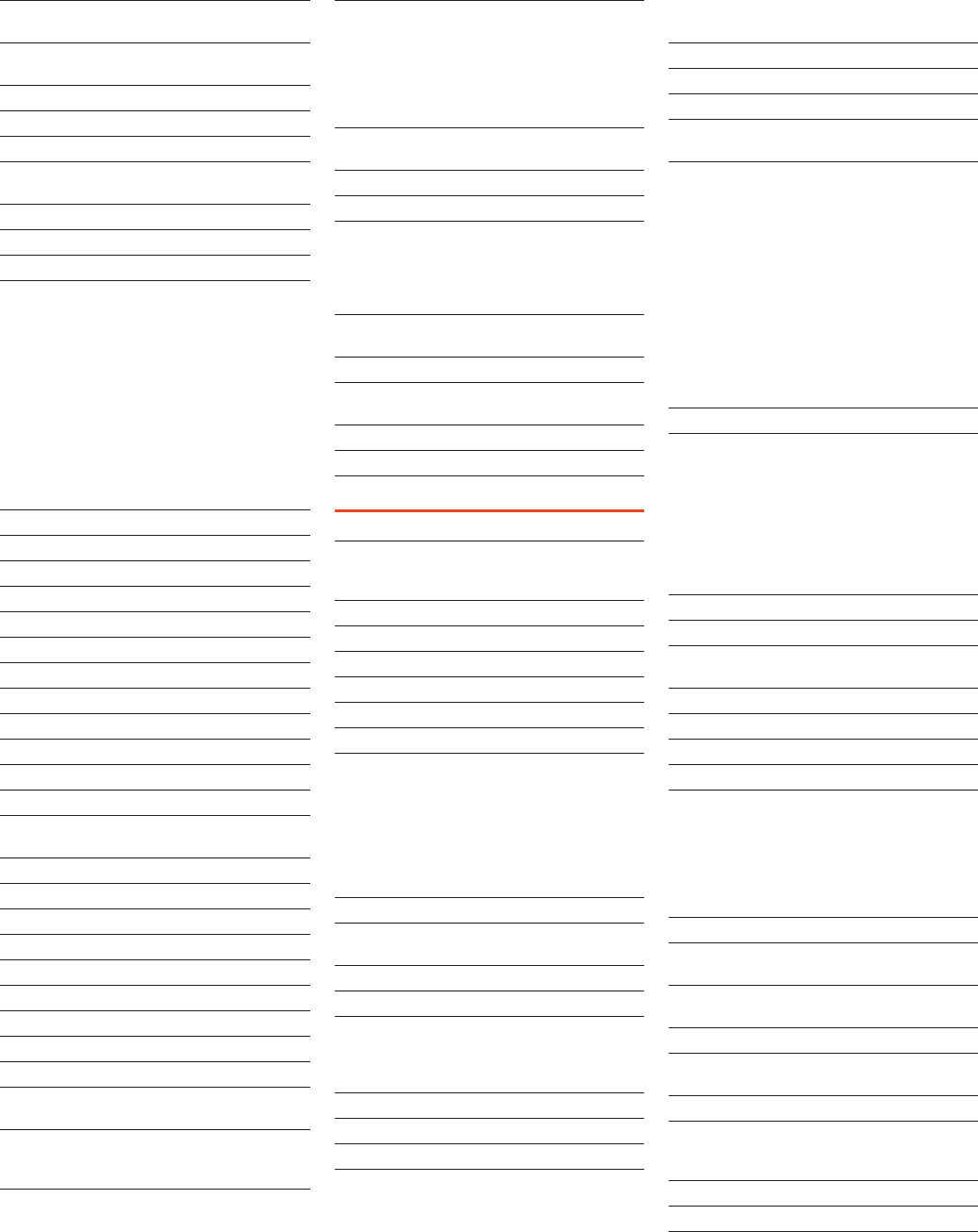
70 Aas Rustad 2021b; Krampe, Smith and Hamidi
2021.
71 Global Commission on the Geopolitics of En-
ergy Transformation 2019.
72 Aas Rustad 2021b.
73 Hegre and others 2017.
74 Kosal 2020.
75 Boulanin and Verbruggen 2017; Boulanin,
Brockmann and Bauer 2019.
76 Keane 2020.
77 Johnson 2021.
78 OHCHR 2021.
79 For example, Urbaniak and others (2022)
employ Big Data techniques to analyse the
effects of online personal attacks among
150,000 Reddit users and show how unmod-
erated cyberviolence significantly reduced
victims’ online activity. Furthermore, hateful
online content can spread fast and reach far,
as shown in a study by Mathew and others
(2019). They analysed more than 21 million
posts generated by 341,000 users on the
online platform Gab and found that hateful
content diffused much faster and wider than
nonhateful posts.
80 UNDP 2020c.
81 Allan and others 2015.
82 Ray and George 2021.
83 Stewart, Holdstock and Jarquin 2002.
84 Hillesund and others 2018.
85 Stewart, Holdstock and Jarquin 2002.
86 UN and World Bank 2018.
87 Demmers 2017; UN and World Bank 2018.
88 UNODC 2019.
89 UN 2021b.
90 WHO 2021l.
91 Garry and Checchi 2019.
92 Aebischer Perone and others 2017; Garry and
Checchi 2019.
93 Garry and Checchi 2019.
94 FSIN 2021.
95 Simon 2020.
96 Kishi 2021.
97 Kishi 2021.
98 Pettersson and others 2021.
99 Aas Rustad 2021a.
100 UNODC 2019.
101 UNODC 2019.
102 Bergman 2018; Muggah and Aguirre Tobón
2018; Yashar 2018.
103 Corral and others (2020) undertook a similar
effort, but the definitions differ and do not
include lower intensity conflicts.
104 See OECD (2020) for the Organisation for
Economic Co-operation and Development
framework for identifying fragile contexts.
105 Examples include reduced likelihood of
giving birth at a health facility (Østby and
others 2018), higher risk of maternal death
(Kotsadam and Østby 2019), lower likelihood of
secondary education (Gates and others 2012)
and greater food insecurity (Martin-Shields
and Stojetz 2019)
106 DeCou and Lynch 2017; Garbarino and others
1992; Guterman and Cameron 1997.
107 Cuartas and Roy 2019.
108 UNHCR 2021a.
109 MSF 2017. The Office of the United Nations
High Commissioner for Refugees has also
called for granting refugee status to “a signifi-
cant percentage” of people fleeing the zone
(UNHCR 2015).
110 Clement and others 2021; Rigaud and others
2018.
111 Sharkey 2018; Yuan and McNeeley 2016.
112 Valera and Guàrdia 2014; Yates and Ceccato
2020.
113 IEP 2021b.
114 IEP 2021b.
115 de Coning and Gelot 2020.
CHAPTER 5
1 See Sen (2005b) for a discussion of how en-
hancing the agency of women improves lives
more broadly.
2 Sen 2005a.
3 UN 1948.
4 Nussbaum 2011, pp. 30–31.
5 Sen 2008.
6 UN 1948.
7 UNDP 2019a.
8 For instance, when people’s social status is
linked to their personal responsibility through
the narrative of meritocracy (Sandel 2020).
The “American Dream” and similar narratives
(with a focus on material success and self-
reliance) can create pressure for the upper
middle class and stigmatization across low-
income populations. See Lamont (2019).
9 Chenoy 2009.
10 Bialasiewicz and others 2007; Gentry, Shep-
herd and Sjoberg 2018.
11 Young 2003.
12 Nussbaum 2001, 2006.
13 Some of these are analysed in the next sec-
tion, in terms of age, sexual orientation and
gender identity, race and ethnicity, and migra-
tion status.
14 Crenshaw 2017.
15 Ogata and Sen 2003.
16 UNDP 2019a.
17 IACWGE 1999. The UN Inter-Agency Com-
mittee on Women and Gender Equality
notes five aspects: violence against women
and girls; gender inequalities in control over
resources; gender inequalities in power and
decisionmaking; women’s human rights; and
women (and men) as actors, not victims.
18 UNDP 2020c.
19 UNDP 2020c.
20 WHO 2020d.
21 Avidor, Palgi and Solomon 2017; Canudas-
Romo 2018; WHO 2015a.
22 Adverse childhood experiences are defined
by the World Health Organization (WHO) as
“(…) multiple types of abuse; neglect; violence
between parents or caregivers; other kinds of
serious household dysfunction such as alcohol
and substance abuse; and peer, community
and collective violence.” WHO includes events
that also “occur outside the boundaries of
home and family. These experiences can in-
clude violence in the surrounding community,
the experience of living in unsafe neighbor-
hoods, homelessness, bullying, discrimination
based on race or ethnicity, and income inse-
curity” (UNICEF 2021c, pp. 60–61).
23 Østby, Aas Rustad and Forø Tollefsen 2020.
24 The UN Security Council has identified and
condemned six grave violations against
children in times of war: killing and maiming
of children, recruitment or use of children in
armed forces and armed groups, attacks on
schools or hospitals, rape or other grave sex-
ual violence, abduction of children and denial
of humanitarian access for children (UNICEF
2021b).
25 UNICEF 2021a.
26 UNICEF 2020a.
27 Bertoni and others 2019; Dabalen and Paul
2014; Diwakar 2015.
28 Gao and Hayes 2021.
29 OPHI and UNDP 2021.
30 Nayyar and Rivera Vazquez 2021.
31 Rodgers 2020.
32 Inanc 2020. Compilation based on the US
Bureau of Labor Statistics’ monthly labour
force statistics from the Current Population
Survey. Moreover, Black people are 24 percent
less likely to receive unemployment benefits,
further exacerbating the impacts of unem-
ployment (Kuka and Stuart 2021).
33 Inanc 2020.
34 Jones, Mitra and Bhuiyan 2021; UN Women
2017.
35 Office of the Secretary-General’s Envoy on
Youth 2021.
36 Nkrumah 2021.
37 Office of the Secretary-General’s Envoy on
Youth 2021.
38 Cuevas-Parra 2021; UN 2021f.
39 Office of the Secretary-General’s Envoy on
Youth 2021; UN and Folke Bernadotte Acad-
emy 2021.
40 UNDESA 2019.
41 WHO 2021j.
42 WHO 2021j.
150 NEW THREATS TO HUMAN SECURITY IN THE ANTHROPOCENE / 2022
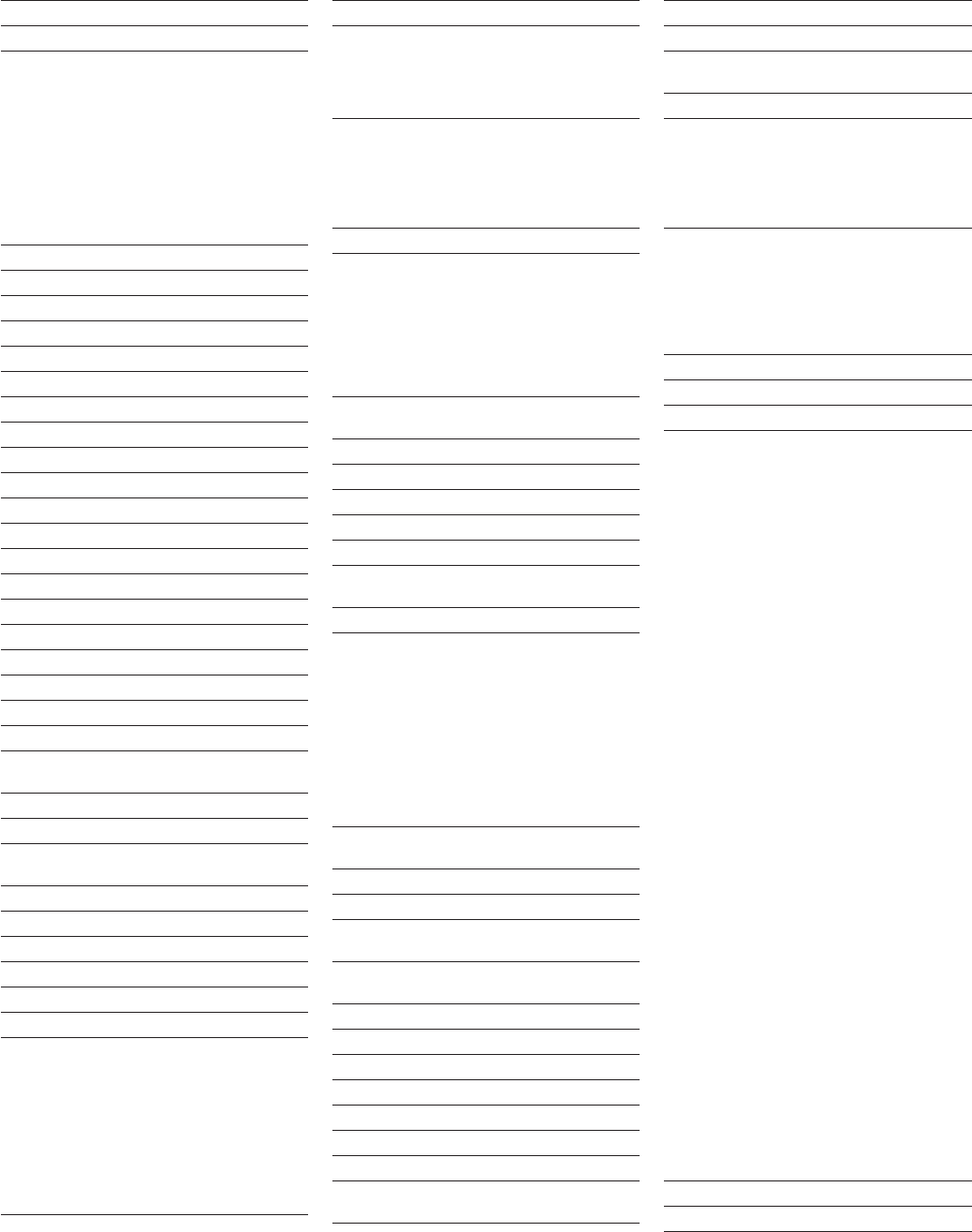
43 UNDESA 2016a.
44 WHO 2015b.
45 Dependency ratios are the relationship of
those not typically active in the workforce
(children under 15 and people over age 65) to
the active population (ages 15–64). It is used
to understand the pressures on the active
population and the level of financial stress
that will be faced by the need for support from
dependent populations. The old-age depen-
dency ratio refers specifically to the amount
of people over age 65 per 100 working-age
people.
46 Ferraro, Kemp and Williams 2017.
47 MacGuire 2020.
48 Garrett and others 2019.
49 Pechey and Monsivais 2016.
50 Volaco, Cavalcanti and Précoma 2018.
51 Wood and others 2006.
52 Erlangsen and others 2017.
53 OECD 2019c.
54 UNDESA 2016b.
55 UNDESA 2016b.
56 Olivera and Tournier 2016.
57 Ye and others 2020.
58 Donizzetti 2019.
59 Moosa and Luyckx 2021.
60 Moosa and Luyckx 2021.
61 UNDP 2020a; UN Women 2020a.
62 Bonnet, Vanek and Chen 2019.
63 ILO 2020; UNDP 2020b; UN Women 2020a.
64 Benyacoub 2021.
65 Maitra 2018; Smith and others 2003.
66 FAO and others 2020; UNDP 2020c; UN Wom-
en 2020a.
67 UNDP 2020c.
68 Maitra 2018; Smith and others 2003.
69 FAO and others 2020; UNDP 2020c; UN Wom-
en 2020a.
70 UNDP 2020c.
71 Madgavkar and others 2020.
72 UNDP 2020b, 2020e; UN Women 2020b.
73 UNDP 2019a, 2020d.
74 UNDP 2020c.
75 UNDP 2019a.
76 UN Women 2021a. Gender-based violence
could include violence against men, provided
the violence stems from a man’s gender iden-
tity or presentation. Violence against women
and girls is more specific, as it refers only to
women, who experience most of the gender-
based violence, so to that extent, gender-
based violence and violence against women
overlap (Dominguez Gonzalez and others
2019).
77 UNFPA, UN Women and UNDP 2017.
78 Galtung 1969, 1990; Galtung and Fischer 2013.
79 A series of strategies, gestures, comments
and actions of daily life that are subtle, almost
imperceptible, but perpetuate and transmit
violence against women and girls from one
generation to another (Gómez 2015).
80 UN Women 2021a. Forms of violence against
women and girls include physical and sexual
violence, human trafficking, female genital
mutilation, child marriage, psychological and
emotional violence and economic violence.
See also spotlight 4.1 in UNDP (2019a).
81 Confortini 2006; Galtung 1990.
82 As the second-wave feminism established “the
personal is political” (Firestone and Koedt 1970,
p. 76), and feminist researchers have analysed
violence in the individual and domestic realm
as a form of political violence and a precondi-
tion for increased violence against women
and girls in the public sphere (Firestone and
Koedt 1970; Hanisch 1969).
83 Alkan, Özar and Ünver 2021; Muluneh and oth-
ers 2020.
84 Fawole 2008.
85 Gentry, Shepherd and Sjoberg 2018.
86 WHO 2021m.
87 Douki and others 2003.
88 UNICEF 2020b.
89 Garcia-Moreno and others 2006; Kishor and
Johnson 2004, 2005; WHO 2021m.
90 Harrison and Esqueda 1999.
91 Although racial categories are socially con-
structed and many people fail to fit into one or
more of the categories that are recognized in
different contexts, they have impacts on peo-
ple’s lives via structural patterns of discrimina-
tion. It is important to acknowledge that social
constructs around race and ethnicity have
tangible impacts on people’s dignity and need
to be prioritized for as long as inequalities
and discrimination based on those constructs
exist.
92 Gentry, Shepherd and Sjoberg 2018; Khalid
2019.
93 Stewart 2016.
94 OHCHR 2005.
95 See Alesina, Michalopoulos and Papaioannou
(2016) and Stewart (2005).
96 Cederman, Weidmann and Gleditsch 2011;
Denny and Walter 2014.
97 Ahuja 2016.
98 Gentry, Shepherd and Sjoberg 2018.
99 Gentry, Shepherd and Sjoberg 2018.
100 OHCHR 2005; UNDESA 2016c, 2018.
101 UNDESA 2018.
102 Gubert and others 2017.
103 Bloomfield 2019.
104 United Nations Inter-Agency Support Group
on Indigenous Issues 2014.
105 Kamwenda 1997; Maseko and Ndlovu 2013.
106 Nesterak 2019.
107 Lajimodiere 2012.
108 Gentry, Shepherd and Sjoberg 2018; Leigh and
Weber 2018.
109 UNDP 2020c.
110 According to Dimick and others (2013, p. 1046),
“Black patients actually tended to live closer
to higher-quality hospitals than white pa-
tients did but were 25–58 percent more likely
than whites to receive surgery at low-quality
hospitals.”
111 He and others 2019. Warmth refers to being
perceived as tolerant, warm, good-natured
and sincere, reflecting how “likable” a target
is; competence refers to being perceived as
competent, confident, independent, competi-
tive and intelligent and generally reflects how
“respected” a target is.
112 Dabone and others 2021; Odoms-Young 2018.
113 Ghandnoosh 2014; Waldron 2020.
114 UNDESA 2020a.
115 This section, due to its limited extension, can-
not assume to faithfully represent the human
security challenges for all human mobility
categories. It uses terms and definitions as
put forth by the International Organization
for Migration’s (IOM) Glossary on Migration
(IOM 2019a). It uses the term “migrant” as an
umbrella term (as per IOM’s definition: “An
umbrella term, not defined under international
law, reflecting the common lay understanding
of a person who moves away from his or her
place of usual residence, whether within a
country or across an international border,
temporarily or permanently, and for a variety
of reasons. The term includes a number of
well-defined legal categories of people, such
as migrant workers; persons whose particular
types of movements are legally defined, such
as smuggled migrants; as well as those whose
status or means of movement are not specifi-
cally defined under international law, such as
international students.”). It defines “displaced
persons” as “Persons or groups of persons who
have been forced or obliged to flee or to leave
their homes or places of habitual residence,
either across an international border or within
a State, in particular as a result of or in order to
avoid the effects of armed conflict, situations
of generalized violence, violations of human
rights or natural or human-made disasters.”;
It uses the United Nations High Commissioner
for Refugees’ definition of refugee (UNHCR
1951): “A person who, owing to a well-founded
fear of persecution for reasons of race, religion,
nationality, membership of a particular social
group or political opinion, is outside the coun-
try of his nationality and is unable or, owing
to such fear, is unwilling to avail himself of the
protection of that country; or who, not having
a nationality and being outside the country
of his former habitual residence as a result of
such events, is unable or, owing to such fear, is
unwilling to return to it.”). And it limits its scope
to people who move across borders.
116 Nagabhatla and others 2020.
117 Nagabhatla and others 2020.
118 Hauer and others 2020.
NOTES 151
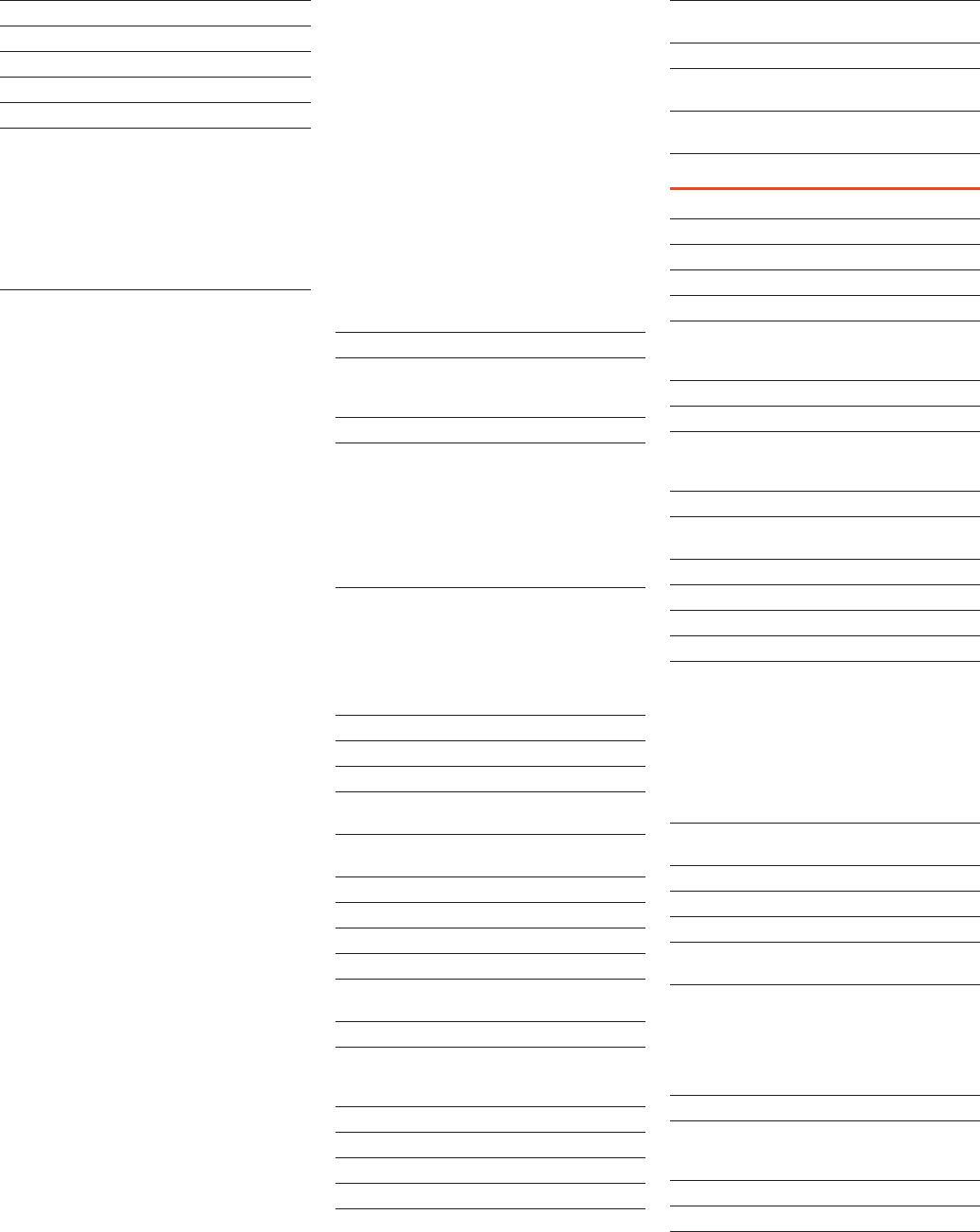
119 UNHCR 2021a.
120 IDMC 2021.
121 ILO 2021b.
122 Szaflarski and Bauldry 2019.
123 UN 2016.
124 This Report uses the terms lesbian, gay,
bisexual, transgender, queer, and intersex (LG-
security and discriminatory practices high-
lighted herein are also relevant to addressing
violence and discrimination on the basis of
sexual orientation, gender identity and sex
characteristics against people who identify
with or use other terms.
125 Even though the distinction between sex and
gender has been clear since the 1950s, still
not everyone is aware of the differences and
their implications for policymaking around
the world. Often, even in research, the terms
sex and gender are used as if they were in-
terchangeable, but they are not. “Sex” refers
to each person’s biological characteristics. In
this classification individuals can identify as
female, male or intersex. Intersex people are
born with physical sex characteristics different
from male or female bodies. For some intersex
people these are apparent at birth, while
for others they emerge later in life, often at
puberty. Intersex people may have any sexual
orientation and gender identity. “Gender” is
a social construct. Gender identity refers to
the experienced sense of one’s own gender,
whereas gender expression refers to actions
and appearance that reflect the way in which
a person expresses gender. When gender and
sex are aligned at birth, the term “cisgender”
can be used. But one’s gender identity or
expression may or may not be aligned with
the sex assigned to them at birth or sexual
orientation. “Nonbinary” and “queer” are
terms that refer to gender identities that are
neither male nor female and that are outside
the gender binary. “Trans” and “transgender”
are both terms used to describe people with a
wide range of gender expressions and identi-
ties—including transsexual people, people
who cross-dress, people who identify as third
gender, people who identify outside of the
male/female binary and others whose ap-
pearance and characteristics are perceived
as gender atypical and whose sense of their
own gender is different from the sex that they
were assigned at birth. Some transgender
people seek surgery or take hormones to bring
their body into alignment with their gender
identity; others do not. Trans people may have
any sexual orientation and sex characteristics.
Finally, “sexual orientation” refers to a person’s
physical, romantic and/or emotional attrac-
tion towards other people. Most people have a
sexual orientation, which is part of their identi-
ty. Gay men and lesbian women are attracted
to individuals of the same sex as themselves.
Heterosexual people are attracted to individu-
als of a different sex from themselves. Bisexual
people may be attracted to individuals of the
same or different sex. Lesbian, gay and bi-
sexual people may have any gender identity
or sex characteristics. Sexual orientation, gen-
der identity and sex characteristics are not the
same. They are each distinct but intersecting
aspects of a person’s identity; hence it is im-
portant to respect people’s choice of terms,
names, and pronouns to refer to themselves.
(Adapted from OHCHR 2019 and information
from United Nations Free & Equal campaign
website and factsheets.)
-
siderably across the world. Important progress
has been achieved on several fronts, and pub-
lic opinion has, overall, seen rising acceptance
in some countries and regions. For example,
rising acceptance of homosexuality has been
recorded in several countries in the past two
decades (Pew Research Center 2020), and
evidence from the United States also shows a
shift in views on same-sex marriage over the
past decades (Gallup 2021). As of December
2021, same-sex marriage is legal in 30 coun-
tries (Council on Foreign Relations 2021).
126 Hagen 2016.
127 Albuquerque and others 2016; Badgett,
Hasenbush and Luhur 2017; Romero, Goldberg
and Vasquez 2020; Suriyasarn 2016.
128 Yogyakarta Principles 2007.
129 Only 25 countries have gender identity or gen-
der expression legislation: Argentina, Belgium
Bolivia, Canada, Chile, Colombia, Denmark,
Ecuador, France, Greece, Iceland, India,
Ireland, Japan, Luxembourg, Malta, Norway,
Pakistan, Portugal, Spain, Sri Lanka, Thailand,
Uruguay, Viet Nam and the United Kingdom
(Zhan and others 2020).
130 Lanham and others 2019. Their experiences
were characterized by verbal abuse, being
forced to alter their gender expression to get
the document or being totally refused the
identification. These experiences of discrimi-
nation made the participants feel humiliated,
affecting their dignity and mental health.
131 Ecker 2016; Ecker, Aubry and Sylvestre 2019.
132 Ecker, Aubry and Sylvestre 2019.
133 UNDP 2016c.
134 Badgett, Waaldijk and van der Meulen Rodg-
ers 2019.
135 Evans and others 2016. This study included on-
ly lesbian, gay, bisexual and trans populations.
136 UNDP 2019b.
137 Johns and others 2019; Johns and others 2020.
138 UNDP 2019b.
139 Human Rights Watch 2020c.
140 UNDP 2019b. This study included only lesbian,
gay, bisexual and trans populations.
141 Berthélémy 2019; Leufer 2021.
142 GLAAD 2021. Facebook (75 percent), Twitter
(24 percent), YouTube (21 percent), Instagram
(24 percent) and TikTok (9 percent).
143 OHCHR 2015, 2019.
144 Stotzer 2009.
145 OHCHR 2016, 2019.
146 UNDP 2021.
147 Allende 2020.
148 Balaji 2011; Henricks 2016; Nazroo, Bhui and
Rhodes 2020.
149 Dunn, Clare and Holland 2008.
150 Extending the use of concepts described by
Molyneux (1986) and Moser (1989).
151 A key principle outlined by Gasper and Gomez
(2021).
152 ILGA 2020.
CHAPTER 6
1 Ogata and Sen 2003.
2 Anand 2012.
3 Ritchie 2019.
4 Roser and Ritchie 2013.
5 UNAIDS 2021. AIDS-related deaths have de-
clined by 47 percent since 2010 and by 64 per-
cent from the peak in 2004.
6 Roser and Ritchie 2019.
7 Dadonaite, Ritchie and Roser 2019.
8 Gavi, The Vaccine Alliance 2020; Global Pre-
paredness Monitoring Board 2019; Marani and
others 2021.
9 UNDP 2020f.
10 UN Platform on Social Determinants of Health
2016; WHO n.d.
11 WHO 2020c.
12 WHO 2021a.
13 Ruger 2004.
14 WHO 2021i, p. 45.
15 WHO 2021i. WHO notes that the pace of im-
provements in service coverage has slowed
since 2010 and that at the current rate of
progress, there will be a shortfall of 710 million
against the target of 1 billion more people
benefiting from universal health coverage —
without accounting for Covid-19-related eco-
nomic contraction and disruptions to health
services.
16 The Economist 2021; Johnson and Roberto
2020.
17 Nettle and others 2021.
18 IHME 2021.
19 IHME 2021.
20 Fore and others 2020; Headey and others
2020; UN 2020b.
21 See UNDP (2020c, 2020f). For instance, in
South Asian countries around 391 million chil-
dren were kept out of schools at the primary
and secondary levels, and up to 5.5 million
may drop out of school altogether (Shiva Ku-
mar, 2021).
22 IMF 2021b.
23 The data referenced here are from IMF (2021a).
This discussion also uses the International
Monetary Fund’s classification of countries.
24 IMF 2021c.
25 IMF 2021c.
26 IMF 2021c.
152 NEW THREATS TO HUMAN SECURITY IN THE ANTHROPOCENE / 2022

27 WHO 2021b.
28 IMF 2021c.
29 Likewise, many economies implemented mul-
tiyear fiscal actions, but a large part of fiscal
support is expiring, and Covid-19 emergency
fiscal support measures are winding down in
emerging economies (IMF 2021b.). Growth in
emerging and developing economies, which
have been constrained by uneven access to
vaccines and waning emergency fiscal sup-
port, is expected to slow considerably by 2022,
and income per capita gains in fragile and
conflict-affected low-income countries have
been set back by at least a decade (World
Bank 2021b). Thus, not only will the recovery
depend on the extent of the response mea-
sures, the effects of recently expired or limited
extensions of fiscal support measures remain
uncertain, and the inequalities in recovery
spending may set us on very unequal recovery
paths, potentially exacerbating pre-existing
gaps. Concerns include what will happen to
employment protection programmes and
whether there will be mass layoffs once the
emergency fiscal support is suspended (IMF
2021e). The insecurity faced by people due
to shocks can last even after recovery in
macroeconomic output — for instance, people
experiencing unemployment may be unable
to bear out-of-pocket healthcare costs for
some time and thus delay getting the care
they need.
30 IMF 2021d. According to the Global Dashboard
for Vaccine Equity, by December 2021 approxi-
mately 65 percent of people in high-income
countries had at least one dose of a Covid-19
vaccine, compared with approximately 8 per-
cent of people in low-income countries. See
UNDP, WHO and University of Oxford (2021).
31 Human Development Report Office calcula-
tions based on data from https://ourworldin-
data.org/ (accessed 9 November 2021). Simple
averages. See also IMF (2021d).
32 Wouters and others 2021.
33 World Bank 2021a.
34 Wouters and others 2021.
35 BBC 2021.
36 WHO 2020b.
37 WHO 2021f.
38 For instance, ageing is expected to be the
main driver of noncommunicable diseases in
Europe. See Devaux and others (2020).
39 Marmot and Bell 2019.
40 Marmot and Bell 2019.
41 Sommer and others 2015.
42 WHO 2013. Additional key principles and ap-
proaches enshrined in WHO’s Global Action
Plan include promoting human rights, equity
and empowerment, using a life-course ap-
proach and universal health coverage. See
also Marmot and Bell (2019) and WHO (2014).
43 WHO 2020b.
44 Karn and Sharma 2021; UN Platform on So-
cial Determinants of Health 2016. Others (for
instance, Abera and others 2017) have noted
the existence of a “double burden” of commu-
nicable and noncommunicable diseases.
45 Bollyky and others 2017; Kruk, Nigenda and
Knaul 2015; Kruk and others 2018.
46 For instance, cancer is a key factor behind the
mortality gap across different socioeconomic
groups in New Zealand. See Teng and others
(2017).
47 Ebi and Hess 2020; Patz, Grabow and Limaye
2014.
48 Vicedo-Cabrera, Scovronick and Gasparrini
2021.
49 The Lancet Countdown 2021.
50 Lelieveld and others 2020.
51 Atwoli and others 2021.
52 See also results in Carleton and others (2020).
53 The Lancet Countdown 2021.
54 IPCC 2018.
55 Hallegatte and others 2014.
56 The right to health goes even further than
access to healthcare to also consider the
underlying determinants of health, such as
adequate nutrition and housing, and health-
related education, which help people lead
healthy lives. See OHCHR and WHO (2008).
57 OHCHR and WHO 2008.
58 Sen 2008.
59 Sen 2008.
60 National Academies of Sciences, Engineering,
and Medicine 2018; WHO, OECD and World
Bank 2018.
61 For a discussion of these factors, see National
Academies of Sciences, Engineering, and
Medicine (2018).
62 National Academies of Sciences, Engineering,
and Medicine 2018.
63 Kruk and others 2018; WHO 2018.
64 Kruk and others 2018.
65 Kruk and others 2018.
66 WHO, OECD and World Bank 2018.
67 National Academies of Sciences, Engineering,
and Medicine 2018, p. 2.
68 Krishna 2010, p. 17.
69 WHO 2021c.
70 Swindle and Newhouse 2021. In countries
where the urban population accounts for a
larger share of the total proportion, such as
Ethiopia, Ghana, Malawi and Senegal, “fear
of contracting Covid-19” was also more fre-
quently answered. “Hospital had insufficient
supplies” was the third most reported barrier.
71 WHO 2010a.
72 WHO 2010a.
73 Beran, Pedersen and Robertson 2019; Saksena,
Xu and Durairaj 2010.
74 Beran, Pedersen and Robertson 2019.
75 WHO 2021d.
76 OECD 2019a.
77 OECD 2019b.
78 OECD 2019b.
79 OECD 2019b.
80 Komisar 2013.
81 Emanuel, Glickman and Johnson 2017.
82 Komisar 2013.
83 Komisar 2013.
84 Schillings and Sánchez-Ancochea 2021.
85 See annex 6.1 and Martínez Franzoni and
Sánchez-Ancochea (2016).
86 Martínez Franzoni and Sánchez-Ancochea
2016.
87 Anand 2012.
88 WHO 2021g.
89 WHO and World Bank 2017.
90 OECD 2014.
91 High-level Meeting on Universal Health Cover-
age 2019.
92 Kruk and others 2018; WHO, OECD and World
Bank 2018.
93 See Martínez Franzoni and Sánchez-
Ancochea 2016; Sen 2015.
94 Anand and Ravallion 1993.
95 Martínez Franzoni and Sánchez-Ancochea
2016.
96 Laryea and Cueni 2019; Smith, Corrigan and
Exeter 2012.
97 Martínez Franzoni and Sánchez-Ancochea
2016.
98 The Lancet Commission on Global Health
2035 2013.
99 Dallman 2010; Danese and others 2014;
Danese and Lewis 2017; Evans and Wachs
2010; Hackett and Steptoe 2017; Hughes and
others 2017; Morris and others 2019.
100 Hussain and Arif 2021.
101 UN 2015b. See also Leisering 2020.
102 ILO 2011, 2016; WHO 2010b.
103 Due to the structure of the HUI as a geometric
mean, these imbalances in achievement are
amplified in the overall score, highlighting the
importance of all dimensions for achieving
true universalism.
104 See Filgueira (2007); Martínez Franzoni and
Sánchez-Ancochea (2018); Pribble (2013).
105 UNDP 2019a.
106 The Global Health Security Index is a joint
project of the Johns Hopkins Center for Health
Security, the Nuclear Threat Initiative and
The Economist Intelligence Unit. The Index
measures countries’ capabilities for prevent-
ing and mitigating epidemics and pandemics
using 140 questions in six categories (preven-
tion, detection and reporting, rapid response,
health systems, compliance with international
norms and risk environment). The index is
scored based on desk research for a sample
of 195 countries. Some results might appear
ambiguous in light of the Covid-19 pandemic.
NOTES 153
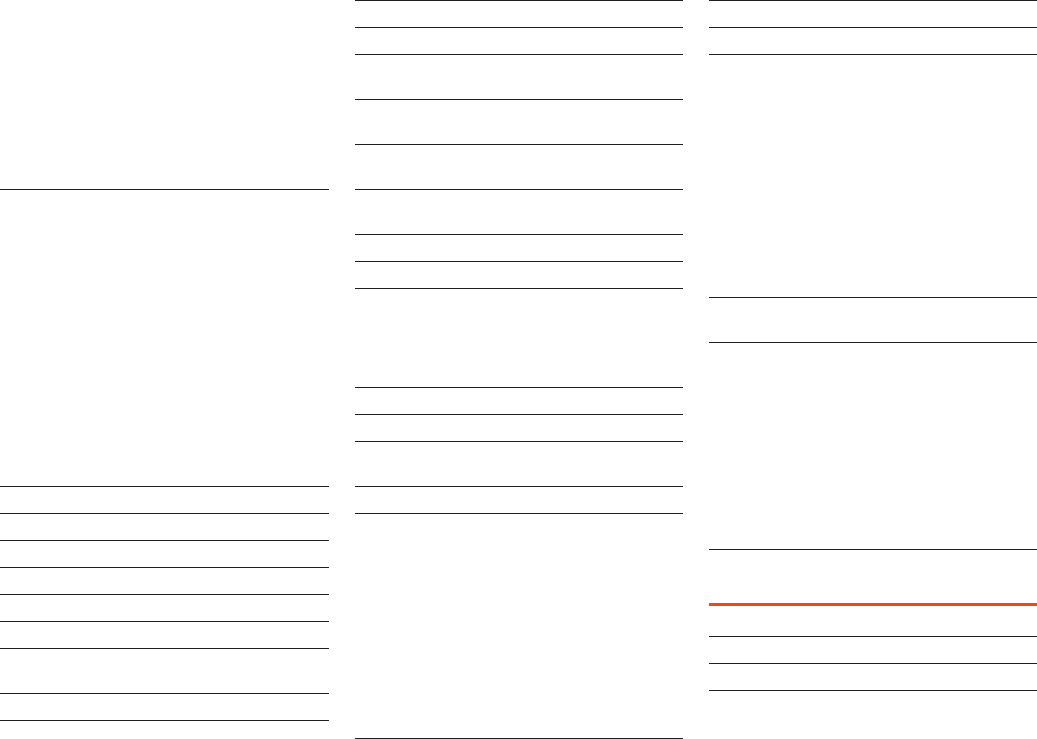
In fact, some of the highest scoring countries
are among the most affected by Covid-19,
such as the United States (1st), the United
Kingdom (2nd), the Netherlands (3rd), Sweden
(7th) and Slovenia (12th). Therefore, some of
the results should be interpreted with cau-
tion and take into account underreporting in
less developed countries. See https://www.
ghsindex.org/about/. See also Schillings and
Sanchez-Ancochea (2021).
107 Some measuring factors can influence these
results in the case of the Global Health Security
Index. It is possible that the index methodology
suffers from potential biases or measurement
errors when scoring the preparedness of less
developed health systems because there
appears to be a large clustering of scores
around the average index value of 35. Also,
universalism is only relevant for some aspects
of the index and overall health disaster pre-
paredness: mainly for treatment and, in part,
for rapid response. Other factors, such as pre-
vention, detection, global cooperation and risk
environment, also play an important role that
might outweigh the impact of universalism.
See Schillings and Sanchez-Ancochea (2021).
108 Baker, Currie and Schwandt 2017.
109 Brønnum-Hansen 2017.
110 van Raalte, Sasson and Martikainen 2018.
111 Nazroo 2017.
112 Currie and Schwandt 2016.
113 Majer and others 2011.
114 Chen, Persson and Polyakova 2020; Katikireddi
and others 2020.
115 Rostila and others 2021.
116 Aldridge and others 2020.
117 UNDP 2020c.
118 EIU 2020; UN 2020d.
119 The Lancet–University of Oslo Commission on
Global Governance for Health 2014, p. 633.
120 The Lancet–University of Oslo Commission on
Global Governance for Health 2014.
121 The Lancet–University of Oslo Commission on
Global Governance for Health 2014.
122 The Lancet–University of Oslo Commission on
Global Governance for Health 2014.
123 Storeng, Puyvallée and Stein 2021.
124 Gostin, Habibi and Meier 2020.
125 Gostin, Habibi and Meier 2020. Moreover,
some government responses have not re-
spected the International Health Regulations.
See Gostin, Habibi and Meier (2020) and
Habibi and others (2020).
126 Nakatani, Katsuno and Urabe 2020.
127 World Health Assembly 2020.
128 Gostin, Halabi and Klock 2021; Nikogosian
2021a.
129 World Health Assembly 2021.
130 WHO 2021h. There is also increased attention
on the possibilities for reforming the Interna-
tional Health Regulations (Ginsbach, Mona-
han and Gottschalk 2021; Wilson, Halabi and
Gostin 2020). A pandemic treaty under Article
19 of the WHO Constitution could go hand in
hand with International Health Regulations
reform — a treaty would also have a more ex-
pansive scope to address political, legal, insti-
tutional and multisectoral issues, on which the
scope of the regulations is limited (Nikogosian
2021b).
131 Fukuda-Parr, Buss and Yamin 2021.
132 UNDESA 2021.
133 Lozano and others 2020.
134 Global Burden of Disease Health Financing
Collaborator Network 2020. A limitation of
using government health spending as a per-
centage of GDP as an indicator is that it does
not distinguish between wasteful and efficient
spending. However, the use of a geometric
mean to determine the HUI alleviates this
limitation, as it rewards equal achievement
across the dimensions. The HUI should differ
between cases of inefficient versus efficient
spending as the former would not translate
into the second dimension, effective coverage,
as much as the latter.
135 Global Burden of Disease Health Financing
Collaborator Network 2020.
136 See Martínez Franzoni and Sánchez-Ancochea
(2016). An alternative measure of equity would
be the proportion of out-of-pocket spending,
which reflects inequity in healthcare. While
out-of-pocket spending is important in the
context of risk protection (particularly in rela-
tion to catastrophic expenditure), the focus of
the equity dimension of the HUI goes beyond
risk protection, to consider segmentation more
broadly and resulting inequalities in access to
healthcare.
137 As the UHC effective coverage index is already
normalized, no further rescaling is necessary.
CONCLUSION
1 Fajardo-Gonzalez and Sandoval 2021.
2 Ogata and Sen 2003.
3 UN 2021d.
154 NEW THREATS TO HUMAN SECURITY IN THE ANTHROPOCENE / 2022

Aas Rustad, S. 2021a. “Conflict Trends.” Background
box contribution for Human Security Report 2021,
United Nations Development Programme, Human
Development Report Office, New York.
Aas Rustad, S. 2021b. “Green Curses: Renewable
Energy and Conflict in Africa.” Background paper
for Human Development Report 2021–2022, United
Nations Development Programme, Human Develop-
ment Report Office, New York.
Abera, S. F., Gebru, A. A., Biesalski, H. K., Ejeta, G.,
Wienke, A., Scherbaum, V., and Kantelhardt, E. J.
2017. “Social Determinants of Adult Mortality from
Non-Communicable Diseases in Northern Ethiopia,
2009–2015: Evidence from Health and Demographic
Surveillance Site.” PloS One
Adger, W. N., de Campos, R. S., Siddiqui, T., Gavonel,
M. F., Szaboova, L., Rocky, M. H., Bhuiyan, M. R. A.,
and Billah, T. 2021. “Human Security of Urban Mi-
grant Populations Affected by Length of Residence
and Environmental Hazards.” Journal of Peace Re-
search
Aebischer Perone, S., Martinez, E., du Mortier, S.,
Rossi, R., Pahud, M., Urbaniak, V., Chappuis, F., and
others. 2017. “Non-Communicable Diseases in Hu-
Con-
flict and Health
Ahmad, T., Zhang, D., Huang, C., Zhang, H., Dai, N.,
Song, Y., and Chen, H. 2021. “Artificial Intelligence
-
lenges and Opportunities.” Journal of Cleaner Pro-
duction 289: 125834.
Ahmed Bhuiyan, M., Rashid Khan, H. U., Zaman, K.,
and Hishan, S. S. 2018. “Measuring the Impact of
Global Tropospheric Ozone, Carbon Dioxide and
Sulfur Dioxide Concentrations on Biodiversity Loss.”
Environmental Research 160: 398–411.
Ahuja, N. 2016. “Race, Human Security, and the
Climate Refugee.” English Language Notes
25–32.
Albuquerque, G. A., de Lima Garcia, C., da Silva
Quirino, G., Alves, M. J. H., Belém, J. M., dos Santos
Figueiredo, F. W., da Silva Paiva, L., and others. 2016.
“Access to Health Services by Lesbian, Gay, Bisex-
ual, and Transgender Persons: Systematic Litera-
ture Review.” BMC International Health and Human
Rights
Aldrich, D. P., and Meyer, M. A. 2014. “Social Capital
and Community Resilience.” American Behavioral
Scientist
Aldridge, R. W., Lewer, D., Katikireddi, S. V., Mathur,
R., Pathak, N., Burns, R., Fragaszy, E. B., and others.
2020. “Black, Asian and Minority Ethnic Groups in
England Are at Increased Risk of Death from Co-
vid-19: Indirect Standardisation of NHS Mortality
Data.” Wellcome Open Research
Alesina, A., Michalopoulos, S., and Papaioannou, E.
2016. “Ethnic Inequality.” Journal of Political Econo-
my
Alfifi, M., Kaghazgaran, P., Caverlee, J., and
Morstatter, F. 2019. “A Large-Scale Study of ISIS So-
cial Media Strategy: Community Size, Collective In-
fluence, and Behavioral Impact.” Proceedings of the
International AAAI Conference on Web and Social
Media
Algan, Y., Cohen, D., Davoine, E., Foucault, M., and
Stantcheva, S. 2021. “Trust in Scientists in Times
of Pandemic: Panel Evidence from 12 Countries.”
Proceedings of the National Academy of Sciences
Alizada, N., Cole, R., Gastaldi, L., Grahn, S., Hellmei-
er, S., Kolvani, P., Lachapelle, J., and others. 2021.
Autocratization Turns Viral: Democracy Report 2021.
Gothenburg, Sweden: University of Gothenburg, V-
Dem Institute.
Alkan, Ö., Özar, Ş., and Ünver, Ş. 2021. “Economic
Violence against Women: A Case in Turkey.” PLoS
One
Allan, H., Glazzard, A., Jesperson, S., Reddy-Tumu,
S., and Winterbotham, E. 2015. “Drivers of Violent Ex-
tremism: Hypotheses and Literature Review.” Royal
United Services Institute, London.
Allende, I. 2020. Mujeres del Alma Mía Sobre el
amor impaciente, la vida larga y las brujas buenas.
Plaza & Hanes.
Allingam, M. G., and Sadmo, A. 1972. “Income Tax
Evasion: A Theoretical Analysis.” Journal of Public
Economics
Alonso, J. A., and Ocampo, J. A. 2020. Trapped in the
Middle? Developmental Challenges for Middle-In-
come Countries. Oxford, UK: Oxford University Press.
Amnesty International. 2021a. “Ban Dangerous
Facial Recognition Technology That Amplifies Rac-
ist Policing.” Press Release, 26 January. https://
www. amnesty.org/en/latest/news/2021/01/ban-
dangerous-facial-recognition-technology-that-
amplifies-racist-policing/. Accessed 17 November
2021.
Amnesty International. 2021b. “Surveillance City:
NYPD Can Use More Than 15,000 Cameras to Track
People Using Facial Recognition in Manhattan,
Bronx and Brooklyn.” https://www.amnesty.org/en/
latest/news/2021/06/scale-new-york-police-facial-
recognition-revealed/. Accessed 20 January 2022
Anand, S. 2012. “Human Security and Universal
Health Insurance.” The Lancet
Anand, S., and Ravallion, M. 1993. “Human Devel-
opment in Poor Countries: On the Role of Private
Incomes and Public Services.” Journal of Economic
Perspectives
Andersen-Rodgers, D., and Crawford, K. F. 2018. Hu-
man Security: Theory and Action. New York: Row-
man & Littlefield.
Anderson, C. M., Defries, R. S., Litterman, R., Mat-
son, P. A., Nepstad, D. C., Pacala, S., Schlesinger, W.
H., and others. 2019. “Natural Climate Solutions Are
Not Enough.” Science
Aneja, U. 2021. “Interrogating Digital Public Goods
for More Equitable Futures.” United Nations Develop-
ment Programme, New York.
Anzaldúa, G. 1987. Borderlands/La Frontera: The
New Mestiza. San Francisco, CA: Aunt Lute Books.
Aram, F., García, E. H., Solgi, E., and Mansournia, S.
2019. “Urban Green Space Cooling Effect in Cities.”
Heliyon
Arias, E. D. 2017. Criminal Enterprises and Gover-
nance in Latin America and the Caribbean. Cam-
bridge, UK: Cambridge University Press.
Arrow, K. J. 1972. “Gifts and Exchanges.” Philosophy
& Public Affairs
Atuire, C., and Hassoun, N. 2021. “Rethinking Solidar-
ity and Global Health.” Working paper. Binghamton,
NY: Binghamton University.
Atwoli, L., Baqui, A. H., Benfield, T., Bosurgi, R.,
Godlee, F., Hancocks, S., Horton, R., and others.
2021. “Call for Emergency Action to Limit Global
Temperature Increases, Restore Biodiversity, and
Protect Health.” The Lancet
Autesserre, S. 2007. “DR Congo: Explaining Peace
Building Failures, 2003–2006.” Review of African Po-
litical Economy
Autesserre, S. 2017. “International Peacebuilding
and Local Success: Assumptions and Effectiveness.”
International Studies Review
Auyero, J. 2007. Routine Politics and Violence in Ar-
gentina: The Gray Zone of State Power. Cambridge,
UK: Cambridge University Press.
Avidor, S., Palgi, Y., and Solomon, Z. 2017. “Lower
Subjective Life Expectancy in Later Life Is a Risk
Factor for Posttraumatic Stress Symptoms among
Trauma Survivors.” Psychological Trauma: Theory,
Research, Practice, and Policy
References
REFERENCES 155
Awan, I. 2017. “Cyber-Extremism: ISIS and the Power
of Social Media.” Society
Badaoui, S. 2021. “The African Human Security In-
dex: From ‘Think’ to ‘Do.’” http://dx.doi.org/10.2139/
ssrn.3804730.
Badgett, M. L., Hasenbush, A., and Luhur, W. E. 2017.
“LGBT Exclusion in Indonesia and Its Economic Ef-
fects.” University of California Los Angeles School of
Law, Williams Institute.
Badgett, M. L., Waaldijk, K., and van der Meulen
Rodgers, Y. 2019. “The Relationship between LGBT
Inclusion and Economic Development: Macro-level
Evidence.” World Development 120: 1–14.
Baez, J., Fuente, A. d. l., and Santo, I. 2010. Do Natu-
ral Disasters Affect Human Capital? An Assessment
Based on Existing Empirical Evidence. Bonn, Ger-
many: IZA.
Bagwandeen, M. 2021. “Don’t Blame China for the
Rise of Digital Authoritarianism in Africa.” London
School of Economics blog, 9 September. https://
blogs.lse.ac.uk/africaatlse/2021/09/09/dont-blame-
china-for-rise-of-digital-authoritarianism-africa-
surveillance-capitalism/. Accessed 17 November 2021.
Bai, X., Gauri, V., and Fiske, S. T. 2021. “Cosmopoli-
tan Morality Trades Off In-Group for the World, Sep-
arating Benefits and Protection.” Proceedings of the
National Academy of Sciences
Baines, E. 2005. “Rethinking Women, Peace and Se-
curity: A Critique of Gender in the Canadian Human
Security Agenda.” 1 April. University of British Colum-
bia, Vancouver, BC.
Baker, D., Jayadev, A., and Stiglitz, J. 2017. Innovation,
Intellectual Property, and Development: A Better Set
of Approaches for the 21st Century. AccessIBSA.
Baker, M., Currie, J., and Schwandt, H. 2017. “Mortal-
ity Inequality in Canada and the US: Divergent or
Convergent Trends?” Working Paper 23514, National
Bureau of Economic Research, Cambridge, MA.
Balaji, M. 2011. “Racializing Pity: The Haiti Earth-
quake and the Plight of ‘Others.’” Critical Studies in
Media Communication
Balcells, L., and Justino, P. 2014. “Bridging Micro
and Macro Approaches on Civil Wars and Political
Violence: Issues, Challenges, and the Way Forward.”
Journal of Conflict Resolution
Balzer, C., LaGata, C., and Berredo, L. 2016. “TMM
Annual Report 2016.” TvT Publication Series 14,
Transgender Europe, Berlin.
Banerjee, D., and Muggah, R. 2002. “Small Arms and
Human Insecurity.” Regional Centre for Strategic
Studies, Colombo.
Bar-On, Y. M., Phillips, R., and Milo, R. 2018. “The
Biomass Distribution on Earth.” Proceedings of the
National Academy of Sciences 115: 6506–6511.
Basu, K. 2018. The Republic of Beliefs: A New Ap-
proach to Law and Economics. Princeton, NJ: Princ-
eton University Press.
Basu, K., Gostin, L., and Hassoun, N. 2021. “Pandem-
ic Preparedness and Response: Beyond the Who’s
Access to Covid-19 Tools Accelerator.” Brookings
Global Economy and Development Working Paper,
Brookings Institution, Washington, DC.
Bauer, A. M., Edgeworth, M., Edwards, L. E., Ellis, E.
C., Gibbard, P., and Merritts, D. J. 2021. “Anthropo-
cene: Event or Epoch?” Nature
BBC. 2021. “Coronavirus G7: Could a Billion More
Vaccines for Poorer Countries Make a Difference?”
14 June. https://www.bbc.com/news/57427877. Ac-
cessed 8 November 2021.
Bell, S. R., and Murdie, A. 2018. “The Apparatus for
Violence: Repression, Violent Protest, and Civil War
in a Cross-National Framework.” Conflict Manage-
ment and Peace Science
Bénabou, R., and Tirole, J. 2006. “Belief in a Just
World and Redistributive Politics.” The Quarterly
Journal of Economics
Bénabou, R., and Tirole, J. 2016. “Mindful Economics:
The Production, Consumption, and Value of Beliefs.”
Journal of Economic Perspectives
Benkler, Y. 2010. “The Idea of Access to Knowledge
and the Information Commons: Long-Term Trends
and Basic Elements.” In Kapczynski, A., and Kriko-
Access to Knowledge in the Age of
Intellectual Property. New York: Zone Books.
Benyacoub, B. 2021. “Empirical Study of Barriers
to Women’s Financial Inclusion in Morocco.” Inter-
national Journal of Accounting, Finance, Auditing,
Management and Economics
Beran, D., Pedersen, H. B., and Robertson, J. 2019.
“Noncommunicable Diseases, Access to Essential
Medicines and Universal Health Coverage.” Global
Health Action
Berg, J., Furrer, M., Harmon, E., Rani, U., and Sil-
berman, M. S. 2018. “Digital Labour Platforms and
the Future of Work: Towards Decent Work in the
Online World.” International Labour Organization,
Geneva.
Berger, K. 2020. “The Man Who Saw the Pan-
demic Coming.” Nautilus, 12 March. https://nautil.
us/ issue/83/intelligence/the-man-who-saw-the-
pandemic-coming. Accessed 10 November 2021.
Bergman, M. 2018. More Money, More Crime: Pros-
perity and Rising Crime in Latin America. Oxford,
UK: Oxford University Press.
Berthelemy, C. 2019.
People: When Technology Reinforces Societal Op-
pressions.” https://edri.org/our-work/the-digital-
rights-lgbtq-technology-reinforces-societal-
oppressions/. Accessed 15 December 2021.
Bertoni, E., Di Maio, M., Molini, V., and Nistico, R.
2019. “Education Is Forbidden: The Effect of the Boko
Haram Conflict on Education in North-East Nigeria.”
Journal of Development Economics 141: 102249.
Betts, M. G., Wolf, C., Ripple, W. J., Phalan, B., Mill-
ers, K. A., Duarte, A., Butchart, S. H. M., and Levi, T.
2017. “Global Forest Loss Disproportionately Erodes
Biodiversity in Intact Landscapes.” Nature
441–444.
Bharadwaj, P., Gibson, M., Zivin, J. G., and Neilson,
C. 2017. “Gray Matters: Fetal Pollution Exposure
and Human Capital Formation.” Journal of the As-
sociation of Environmental and Resource Econo-
mists
Bialasiewicz, L., Campbell, D., Elden, S., Graham, S.,
Jeffrey, A., and Williams, A. J. 2007. “Performing Se-
curity: The Imaginative Geographies of Current US
Strategy.” Political Geography
Bjelle, E. L., Kuipers, K., Verones, F., and Wood, R.
2021. “Trends in National Biodiversity Footprints of
Land Use.” Ecological Economics 185: 107059.
Blanchard, E. M. 2003. “Gender, International Rela-
tions, and the Development of Feminist Security
Theory.” Signs: Journal of Women in Culture and So-
ciety
Blattman, C., and Miguel, E. 2010. “Civil War.” Jour-
nal of Economic Literature
Blenkinshop, P. 2021. “Resisting Patent Waiver,
EU Submits Vaccine Plan to WTO.” Reuters, 4
June. https://www.reuters.com/world/europe/
eu-executive-submits-vaccine-access-proposal-
wto-2021-06-04/. Accessed 1 November 2021.
Bloom, D. E., Cafiero, E. T., Jané-Llopis, E., Abraha-
ms-Gessel, S., Bloom, L. R., Fathima, S., Feigl, A. B.,
and others. 2011. The Global Economic Burden of
Non-Communicable Diseases. Geneva: World Eco-
nomic Forum.
Bloom, J. 2021. “Computer Says Go: Taking Orders
from an AI Boss.” BBC News, 15 February. https://
www.bbc.com/news/business-56023932. Accessed
1 November 2021.
Bloomfield, A. 2019. “Household Food Insecurity
Among Children: New Zealand Health Survey.” Wel-
lington: New Zealand Ministry of Health.
Böke, S. S. 2021. “Artificial Intelligence and Health
Care in Light of Covid-19: Ensuring a Human-Rights
Perspective.” OECD Forum Network, 11 March.
https://www.oecd-forum.org/posts/artificial-
intelligence-and-health-care-in-light-of-covid-19-
ensuring-a-human-rights-perspective?channel_
id=722- digitalisation. Accessed 17 November 2021.
Bollyky, T. J., Templin, T., Cohen, M., and Dieleman, J.
L. 2017. “Lower-Income Countries That Face the Most
Rapid Shift in Noncommunicable Disease Burden
Are Also the Least Prepared.” Health Affairs
Bonnet, F., Vanek, J., and Chen, M. 2019. “Women
and Men in the Informal Economy: A Statistical
Brief.” Geneva: International Labour Office.
Botsman, R. 2017. Who Can You Trust? How Tech-
nology Brought Us Together and Why It Might Drive
Us Apart. New York: PublicAffairs.
Botsman, R. 2018. How Trust Is Shifting. Sydney,
Australia: Association of Superannuation Funds of
Australia.
Boulanin, V., and Verbruggen, M. 2017. “Article 36 Re-
views: Dealing with the Challenges Posed by Emerg-
ing Technologies.” Stockholm International Peace
Research Institute, Stockholm.
156 NEW THREATS TO HUMAN SECURITY IN THE ANTHROPOCENE / 2022
Boulanin, V., Brockmann, K., and Bauer, S. 2019. “Bio
Plus X: Arms Control and the Convergence of Biol-
ogy and Emerging Technologies.” Stockholm Inter-
national Peace Research Institute, Solna, Sweden.
Brady, W. J., Wills, J. A., Jost, J. T., Tucker, J. A., and
Van Bavel, J. J. 2017. “Emotion Shapes the Diffusion
of Moralized Content in Social Networks.” Proceed-
ings of the National Academy of Sciences
7313–7318.
Brancalion, P. H. S., Niamir, A., Broadbent, E., Crou-
zelles, R., Barros, S. M., Zambrano, M. A., Baccini,
A., and others. 2019. “Global Restoration Opportu-
nities in Tropical Rainforest Landscapes.” Science
Advances 5.
Brannen, S., Haig, C., and Schmidt, K. 2020. “The
Age of Mass Protests: Understanding an Escalat-
ing Global Trend.” CSIS Risk and Foresight Group,
Center for Strategic & International Studies, Wash-
ington, DC.
Brännlund, A., Strandh, M., and Nilsson, K. 2017.
“Mental-Health and Educational Achievement: The
Link between Poor Mental-Health and Upper Sec-
ondary School Completion and Grades.” Journal of
Mental Health
Brønnum-Hansen, H. 2017. “Socially Disparate
Trends in Lifespan Variation: A Trend Study on In-
come and Mortality Based on Nationwide Danish
Register Data.” BMJ Open
Bruhin, A., Fehr, E., and Schunk, D. 2018. “The Many
Faces of Human Sociality: Uncovering the Distribu-
tion and Stability of Social Preferences.” Journal of
the European Economic Association
Bubonya, M., Cobb-Clark, D. A., and Wooden, M.
2017. “Mental Health and Productivity at Work:
Does What You Do Matter?” Labour Economics 46:
150–165.
Buhaug, H., and von Uexkull, N. 2021. “Vicious Cir-
cles: Violence, Vulnerability, and Climate Change.”
Annual Review of Environment and Resources 46.
Bunch, C. 2003. “Feminism, Peace, Human Rights
and Human Security.” Canadian Woman Studies
Bunch, C., and Carrillo, R. 1998. “Global Violence
against Women: The Challenge to Human Rights
and Development.” In Klare, M. T., and Chandrani,
World Security: Challenges for a New Cen-
tury. New York: St. Martin’s Press.
Burke, M., Hsiang, S. M., and Miguel, E. 2015. “Cli-
mate and Conflict.” Annual Review of Economics
Burrell, A. L., Evans, J. P., and Kauwe, M. G. D. 2020.
“Anthropogenic Climate Change Has Driven over 5
Million km2 of Drylands towards Desertification.” Na-
ture Communications 11.
Butler, J. V., Giuliano, P., and Guiso, L. 2016. “The
Right Amount of Trust.” Journal of the European Eco-
nomic Association
Buttrick, N. 2020. “Protective Gun Ownership as a
Coping Mechanism.” Perspectives on Psychological
Science
Butzer, K. W. 2012. “Collapse, Environment, and So-
ciety.” Proceedings of the National Academy of Sci-
ences
Calandro, E. 2021. “How Can Digital Transformation
Undermine Development and Human Security?”
HDRO Background Paper, United Nations Develop-
ment Programme, Human Development Report Of-
fice, New York.
Callander, E. J., and Schofield, D. J. 2018. “Psychologi-
cal Distress Increases the Risk of Falling into Poverty
Amongst Older Australians: The Overlooked Costs-
of-Illness.” BMC Psychology
Canudas-Romo, V. 2018. “Life Expectancy and Pov-
erty.” The Lancet Global Health
Carabine, E., and Dupar, M. 2014. “The IPCC’s Fifth
Assessment Report: What’s in It for Small Island De-
veloping States.” Geneva: Intergovernmental Panel
on Climate Change.
Carleton, T. A., Jina, A., Delgado, M. T., Greenstone,
M., Houser, T., Hsiang, S. M., Hultgren, A., and others.
2020. “Valuing the Global Mortality Consequences
of Climate Change Accounting for Adaptation Costs
and Benefits.” Working Paper 27599, National Bureau
of Economic Research, Cambridge, MA.
Carothers, T., and O’Donohue, A. 2019. Democracies
Divided: The Global Challenge of Political Polariza-
tion. Washington, DC: Brookings Institution Press.
Castañeda-Álvarez, N. P., Khoury, C. K., Achicanoy,
H. A., Bernau, V., Dempewolf, H., Eastwood, R. J.,
Guarino, L., and others. 2016. “Global Conservation
Priorities for Crop Wild Relatives.” Nature Plants 2.
CDC (US Centers for Disease Control and Preven-
tion). 2018. “Mental Health.” https://www.cdc.gov/
mentalhealth/learn/index.htm. Accessed 11 March
2021.
Cederman, L.-E., Weidmann, N. B., and Gleditsch, K.
S. 2011. “Horizontal Inequalities and Ethnonational-
ist Civil War: A Global Comparison.” American Politi-
cal Science Review
Center for American Progress. 2020. “Closing Latino
Labor Market Gap Requires Targeted Policies to End
Discrimination.” Washington, DC.
Center on the Developing Child at Harvard Univer-
sity. 2013. “InBrief: Early Childhood Mental Health.”
https://developingchild.harvard.edu/resources/
inbrief-early-childhood-mental-health/. Accessed 20
December 2021.
Chancel, L., Piketty, T., Saez, E., Zucman, G., and
others. 2022. World Inequality Report. Paris: World
Inequality Lab.
Chandler, D., and Hynek, N. 2010. Critical Perspec-
tives on Human Security: Rethinking Emancipation
and Power in International Relations. Abingdon, UK:
Routledge.
Chausson, A., Turner, B., Seddon, D., Chabaneix,
N., Girardin, C. A. J., Kapos, V., Key, I., and others.
2020. “Mapping the Effectiveness of Nature-based
Solutions for Climate Change Adaptation.” Global
Change Biology
Chen, Y., Persson, P., and Polyakova, M. 2020. “The
Roots of Health Inequality and the Value of Intra-
Family Expertise.” Working Paper 25618, National
Bureau of Economic Research, Cambridge, MA.
Cheng, H. W. J., and Parra, M. 2018. “The Fourth In-
dustrial Revolution, Development and Intellectual
Property-the World Economic and Social Survey
2018 and Beyond.” In Heath, C., Sanders, A. K., and
Intellectual Property Law and the
Fourth Industrial Revolution. Alphen aan den Rijn,
Netherlands: Wolters Kluwer.
Chenoy, A. M. 2009. “The Gender and Human Secu-
rity Debate.” IDS Bulletin
Chiabai, A., Travisi, C. M., Markandya, A., Ding, H.,
and Nunes, P. A. L. D. 2011. “Economic Assessment
of Forest Ecosystem Services Losses: Cost of Policy
Inaction.” Environmental and Resource Economics
50: 405–445.
Chin, C. B. 1998. In Service and Servitude: Foreign
Female Domestic Workers and the Malaysian ‘Mo-
dernity’ Project. New York: Columbia University Press.
Christie, R. 2013. “The Siren Song of Human Securi-
ty.” In The Routledge Handbook of Human Security.
Abingdon, UK: Routledge.
Clement, V., Rigaud, K. K., de Sherbinin, A., Jones,
B., Adamo, S., Schewe, J., Sadiq, N., and Shabahat,
E. 2021. Groundswell Part 2: Acting on Internal Cli-
mate Migration. Washington, DC: World Bank.
Clemente, D. 2013. Cyber Security and Global Inter-
dependence: What Is Critical? London: Chatham
House.
Coeckelbergh, M. 2011. “Human Development or
Human Enhancement? A Methodological Reflection
on Capabilities and the Evaluation of Information
Technologies.” Ethics and Information Technology
Collier, P., and Hoeffler, A. 2000. “Greed and Griev-
ance in Civil War.” Policy Research Working Paper
2355, World Bank, Washington, DC.
Collins, A., Florin, M.-V., and Sachs, R. 2021. “Risk
Governance and the Low-Carbon Transition.” École
polytechnique fédérale de Lausanne, International
Risk Governance Center, Lausanne, Switzerland.
Collins, P. H. 1990. “Black Feminist Thought in the
Matrix of Domination.” Black Feminist Thought:
Knowledge, Consciousness, and the Politics of Em-
powerment
Collins, P. H. 2002. Black Feminist Thought: Knowl-
edge, Consciousness, and the Politics of Empower-
ment. Abingdon, UK and New York: Routledge.
Colmer, J. 2021. “Temperature, Labor Reallocation,
and Industrial Production: Evidence from India.”
American Economic Journal: Economic Policy
101–124.
Community Psychology. n.d. “The Effects of Depor-
tation on Families and Communities.” https://www.
communitypsychology.com/effects-of-deportation-
on-families-communities/. Accessed 15 December
2021.
REFERENCES 157
Confortini, C. C. 2006. “Galtung, Violence, and Gen-
der: The Case for a Peace Studies/Feminism Alli-
ance.” Peace & Change
Coronese, M., Lamperti, F., Keller, K., Chiaromonte,
F., and Roventini, A. 2019. “Evidence for Sharp In-
crease in the Economic Damages of Extreme Natu-
ral Disasters.” Proceedings of the National Academy
of Sciences
Corral, P., Irwin, A., Krishnan, N., Gerszon Mahler, D.,
and Vishwanath, T. 2020. Fragility and Conflict: On
the Front Lines of the Fight against Poverty. Wash-
ington, DC: World Bank.
Costanza, R., Groot, R., Braat, L., Kubiszewskia, I.,
Fioramonti, L., Sutton, P., Farber, S., and Grasso, M.
2017. “Twenty Years of Ecosystem Services: How Far
Have We Come and How Far Do We Still Need to
Go?” Ecosystem Services 38: 1–16.
Cottrell, L., and Darbyshire, E. 2021. “The Military’s
Contribution to Climate Change.” https://ceobs.org/
the-militarys-contribution-to-climate-change/. Ac-
cessed 16 November 2021.
Council on Foreign Relations. 2021. “Marriage
Equality: Global Comparisons.” https://www.cfr.
org/ backgrounder/marriage-equality-global-
comparisons. Accessed 10 January 2022.
Cox, K., Marcellino, W., Bellasio, J., Ward, A., Galai,
K., Meranto, S., and Paoli, G. P. 2018. “Social Media
in Africa. A Double-Edged Sword for Security and
Development.” United Nations Development Pro-
gramme, New York.
Crenshaw, K. 1989. “Demarginalizing the Intersec-
tion of Race and Sex: A Black Feminist Critique of
Antidiscrimination Doctrine, Feminist Theory and
Antiracist Politics.” University of Chicago Legal Fo-
rum
Crenshaw, K. 1991. “Mapping the Margins: Intersec-
tionality, Identity Politics, and Violence against Wom-
en of Color.” Stanford Law Review
Crenshaw, K. 2017. On Intersectionality: Essential
Writings. New York: The New Press.
Cuartas, J., and Roy, A. L. 2019. “The Latent Threat
of Community Violence: Indirect Exposure to Local
Homicides and Adolescents’ Mental Health in Co-
lombia.” American Journal of Community Psychol-
ogy
Cuevas-Parra, P. 2021. “Thirty Years after the UN-
CRC: Children and Young People’s Participation
Continues to Struggle in a COVID-19 World.” Journal
of Social Welfare and Family Law
Currie, J., and Schwandt, H. 2016. “Inequality in Mor-
tality Decreased among the Young While Increas-
ing for Older Adults, 1990–2010.” Science
708–712.
Dabalen, A. L., and Paul, S. 2014. “Estimating the Ef-
fects of Conflict on Education in Côte d’Ivoire.” Jour-
nal of Development Studies
Dabone, C., Mbagwu, I., Muray, M., Ubangha, L.,
Kohoun, B., Etowa, E., Nare, H., Kiros, G., and Etowa,
J. 2021. “Global Food Insecurity and African, Ca-
COVID-19 Pandemic: A Rapid Review.” Journal of Ra-
cial and Ethnic Health Disparities: 1–16.
Dadonaite, B., Ritchie, H., and Roser, M. 2019.
“Diarrheal Diseases.” Our World in Data. https://
ourworldindata.org/diarrheal-diseases. Accessed 5
October 2021.
Dahlberg, L. L., Ikeda, R. M., and Kresnow, M.-J.
2004. “Guns in the Home and Risk of a Violent Death
in the Home: Findings from a National Study.” Ameri-
can Journal of Epidemiology
Dalby, S. 2013. “The Geopolitics of Climate Change.”
Political Geography 37: 38–47.
Dallman, M. F. 2010. “Stress-Induced Obesity and
the Emotional Nervous System.” Trends in Endocri-
nology & Metabolism
Danese, A., and Lewis, S. J. 2017. “Psychoneuroim-
munology of Early-Life Stress: The Hidden Wounds
of Childhood Trauma?” Neuropsychopharmacology
Danese, A., Dove, R., Belsky, D., Henchy, J., Williams,
B., Ambler, A., and Arseneault, L. 2014. “Leptin De-
ficiency in Maltreated Children.” Translational Psy-
chiatry
Darbyshire, E., and Weir, D. 2021. “How Does War
Contribute to Climate Change.” https://ceobs.org/
how-does-war-contribute-to-climate-change/. Ac-
cessed 16 November 2021.
Dasgupta, P. 2000. “Trust as a Commodity.” In Gam-
Trust: Making and Breaking Coopera-
tive Relations. Oxford, UK: Oxford University Press.
Dasgupta, P. 2021. The Economics of Biodiversity:
The Dasgupta Review. London: HM Treasury.
Dastin, J. 2018. “Amazon Scraps Secret AI Recruiting
Tool that Showed Bias against Women.” Reuters, 10
October. https://www.reuters.com/article/us- amazon-
com-jobs-automation-insight/amazon-scraps-secret-
ai-recruiting-tool-that-showed-bias-against-women-
idUSKCN1MK08G. Accessed 16 June 2021.
Data2X and Grantham, D. K. 2020. “Mapping Gen-
der Data Gaps: An SDG Era Update.” Data2X.
Davies, R. 2019. Extreme Economies: 9 Lessons from
the World’s Limits. London: Bantam Press.
de Coning, C. 2016. “From Peacebuilding to Sustain-
ing Peace: Implications of Complexity for Resilience
and Sustainability.” Resilience
de Coning, C. 2018. “Adaptive Peacebuilding.” Inter-
national Affairshttps://doi.org/10.1093/
ia/iix251.
de Coning, C. 2020. “The Six Principles of Adaptive
Peacebuilding.” Conflict Trends
de Coning, C., and Gelot, L. 2020. “Placing People at
the Center of UN Peace Operations.” 29 May, Global
https://theglobalobservatory.org/2020/05/placing-
people-center-un-peace-operations/. Accessed 13
December 2021.
De Stefano, V. 2020. “Algorithmic Bosses and What
to Do About Them: Automation, Artificial Intelligence
and Labour Protection.” In Marino, D., and Monaca,
Economic and Policy Implications of Arti-
ficial Intelligence. Cham, Switzerland: Springer.
DeCou, C. R., and Lynch, S. M. 2017. “Assessing Adult
Exposure to Community Violence: A Review of Defi-
nitions and Measures.” Trauma, Violence, & Abuse
Deibert, R. J. 2018. “Toward a Human-Centric Ap-
proach to Cybersecurity.” Ethics & International Af-
fairs
Demmers, J. 2017. Theories of Violent Conflict, 2nd
Edition. New York: Routledge.
Denny, E. K., and Walter, B. F. 2014. “Ethnicity and
Civil War.” Journal of Peace Research
Deodoro, J., Gorbanyov, M., Malaika, M., and Sedik,
T. S. 2021a.
Perils.” International Monetary Fund, Washington, DC.
Deodoro, J., Gorbanyov, M., Malaika, M., and Sedik,
T. S. 2021b.
System: Spooky Action at a Distance?” Working Pa-
per 2021/071, International Monetary Fund, Wash-
ington, DC.
Devaux, M., Lerouge, A., Giuffre, G., Giesecke, S.,
Baiocco, S., Ricci, A., Reyes, F., and others. 2020.
“How Will the Main Risk Factors Contribute to the
Burden of Non-communicable Diseases under Dif-
ferent Scenarios by 2050? A Modelling Study.” PloS
One
Dias Oliva, T. 2020. “Content Moderation Technolo-
gies: Applying Human Rights Standards to Protect
Freedom of Expression.” Human Rights Law Review
Díaz, S., Pascual, U., Stenseke, M., Martín-López, B.,
Watson, R. T., Molnár, Z., Hill, R., and others. 2018.
“Assessing Nature’s Contributions to People.” Sci-
ence
Dibala, R., Jose, S., and Udawatta, R. P. 2021. “Silvo-
pasture for Food Security in a Changing Climate.” In
Agroforestry and
Ecosystem Services. New York: Springer.
Diffenbaugh, N. S., and Burke, M. 2019. “Global
Warming Has Increased Global Economic Inequal-
ity.” Proceedings of the National Academy of Sci-
ences
Dimick, J., Ruhter, J., Sarrazin, M. V., and Birkmeyer,
J. D. 2013. “Black Patients More Likely than Whites to
Undergo Surgery at Low-quality Hospitals in Segre-
gated Regions.” Health Affairs
Ding, Q., Chen, X., Hilborn, R., and Chen, Y. 2017.
“Vulnerability to Impacts of Climate Change on Ma-
rine Fisheries and Food Security.” Marine Policy 83:
55–61.
Diwakar, V. 2015. “The Effect of Armed Conflict on
Education: Evidence from Iraq.” Journal of Develop-
ment Studies
Dodsworth, F. 2019. The Security Society: History, Pa-
triarchy, Protection. New York: Springer.
Doick, K. J., Peace, A., and Hutchings, T. R. 2014.
“The Role of One Large Greenspace in Mitigating
158 NEW THREATS TO HUMAN SECURITY IN THE ANTHROPOCENE / 2022
London’s Nocturnal Urban Heat Island.” Science of
the Total Environment 493: 662–671.
Dominguez Gonzalez, K., Arango, D., McCleary-Sills,
J., and Bianchi, B. 2019. Violence against Women
and Girls (VAWG). Transport Brief, Washington, DC:
World Bank.
Donizzetti, A. R. 2019. “Ageism in an Aging Society:
The Role of Knowledge, Anxiety about Aging, and
Stereotypes in Young People and Adults.” Interna-
tional Journal of Environmental Research and Public
Health
Donoso, C. 2016. “Feminist Critical Human Security:
Borders.” University of British Columbia, Vancouver,
BC.
Douglas, M. 2004. “Traditional Culture: Let’s Hear No
Culture
and Public Action. Stanford, CA: Stanford University
Press.
Douki, S., Nacef, F., Belhadj, A., Bouasker, A., and
Ghachem, R. 2003. “Violence against Women in
Arab and Islamic Countries.” Archives of Women’s
Mental Health
Dunn, M. C., Clare, I. C., and Holland, A. J. 2008. “To
Empower or to Protect? Constructing the ‘Vulner-
able Adult’ in English Law and Public Policy.” Legal
Studies
Dunning, D., Anderson, J. E., Schlösser, T., Ehl-
ebracht, D., and Fetchenhauer, D. 2014. “Trust at
Zero Acquaintance: More a Matter of Respect than
Expectation of Reward.” Journal of Personality and
Social Psychology
Ebi, K. L., and Hess, J. J. 2020. “Health Risks Due to
Climate Change: Inequity in Causes and Conse-
quences.” Health Affairs
Ecker, J. 2016.-
view of the Literature.” Child & Youth Services
325–361.
Ecker, J., Aubry, T., and Sylvestre, J. 2019. “A Review
Homelessness.” Journal of Homosexuality
297–323.
The Economist.
2021. “Might the Pandemic
Pave the Way for a Universal Basic Income?” 4
March. https://www.economist.com/finance-and-
economics/2021/03/02/might-the-pandemic-pave-
the-way-for-a-universal-basic-income. Accessed 1
November 2021.
ECOSOC (United Nations Economic and Social
Council). 2013. “Vienna Declaration on Femicide.” In
Commission on Crime Prevention and Criminal Jus-
tice. New York.
Effah, E., Aheto, D. W., Acheampong, E., Tulashie,
S. K., and Adotey, J. 2021. “Human Health Risk As-
sessment from Heavy Metals in Three Dominant Fish
Species of the Ankobra River, Ghana.” Toxicology
Reports 8: 1081–1086.
EIU (Economist Intelligence Unit). 2020. “Covid-19
and Fragile Contexts: Reviving Multilateralism’s
Promise to ‘Leave No One Behind.’” London.
EIU (Economist Intelligence Unit). 2021. Democracy
Index 2020: In Sickness and in Health? London.
Elevitch, C. R., Mazaroli, D. N., and Ragone, D. 2018.
“Agroforestry Standards for Regenerative Agricul-
ture.” Sustainability
Elhacham, E., Ben-Uri, L., Grozovski, J., Bar-On, Y.
M., and Milo, R. 2020. “Global Human-made Mass
Exceeds All Living Biomass.” Nature
442–444.
Elliott, L. 2015. “Human Security/Environmental Se-
curity.” Contemporary Politics
Ellis, E. C. 2018. Anthropocene: A Very Short Intro-
duction. Oxford, UK: Oxford University Press.
Ellis, E. C., Gauthier, N., Goldewijk, K. K., Bird, R. B.,
Boivin, N., Díaz, S., Fuller, D. Q., and others. 2021.
“People Have Shaped Most of Terrestrial Nature for
at Least 12,000 Years.” Proceedings of the National
Academy of Sciences
Ellis, E. C., Pascual, U., and Mertz, O. 2019. “Ecosys-
tem Services and Nature’s Contribution to People:
Negotiating Diverse Values and Trade-offs in Land
Systems.” Current Opinion in Environmental Sustain-
ability 38: 86–94.
Elster, J. 2015. Explaining Social Behavior: More Nuts
and Bolts for the Social Sciences. Cambridge, UK:
Cambridge University Press.
Emanuel, E. J., Glickman, A., and Johnson, D. 2017.
“Measuring the Burden of Health Care Costs on
US Families, the Affordability Index.” Journal of the
American Medical Association
ENISA (European Union Agency for Cybersecurity).
2018. ENISA Threat Landscape Report 2018. Athens.
ENISA (European Union Agency for Cybersecurity).
2021. Threat Landscape for Supply Chain Attacks.
Athens.
Enke, B., Rodriguez-Padilla, R., and Zimmermann, F.
2021. “Moral Universalism: Measurement and Eco-
nomic Relevance.” Management Science. https://
doi.org/10.1287/mnsc.2021.4086.
Enloe, C. 1989. Bananas, Beaches and Bases: Mak-
ing Feminist Sense of International Politics. Berkeley,
CA: University of California Press.
Enloe, C. 1993. The Morning after: Sexual Politics at
the End of the Cold War. Berkeley, CA: University of
California Press.
Erlangsen, A., Andersen, P. K., Toender, A., Laursen,
T. M., Nordentoft, M., and Canudas-Romo, V. 2017.
“Cause-specific Life-years Lost in People with Men-
tal Disorders: A Nationwide, Register-based Cohort
Study.” The Lancet Psychiatry
Eubanks, V. 2018. Automating Inequality: How High-
Tech Tools Profile, Police, and Punish the Poor. New
York: St. Martin’s Press.
Europol (European Union Agency for Law Enforce-
ment Cooperation). 2021. Internet Organised Crime
Threat Assessment (IOCTA) 2021. Luxembourg.
Eurostat. 2021a. “Government Expendi-
ture on Environmental Protection.” https://
ec.europa.eu/eurostat/statistics-explained/
index.php?title=Government_expenditure_
on_environmental_protection#Expenditure_
on_.27environmental_protection.27. Accessed 16
August 2021.
Eurostat. 2021b. “Migrant Integration Statistics: La-
bour Market Indicators.” Luxembourg.
Evans, G. W., and Wachs, T. D. 2010. “Chaos and
Its Influence on Children’s Development.” American
Psychological Association, Washington, DC.
Evans, M. G., Cloete, A., Zungu, N., and Simbayi, L.
C. 2016. “HIV Risk among Men Who Have Sex with
Men, Women Who Have Sex with Women, Lesbian,
Gay, Bisexual and Transgender Populations in South
Africa: A Mini-review.” The Open AIDS Journal 10: 49.
Fajardo-Gonzalez, J., and Sandoval, C. E. 2021. “In-
come Support Programs and COVID-19 in Develop-
ing Countries.” Development Futures Series Working
Papers, United Nations Development Programme,
New York. https://www.undp.org/sites/g/files/zsk-
gke326/files/2021-08/UNDP-DFS-Income-Support-
Programs-and-COVID-19-in-Developing-Countries.
pdf.
Falk, A., Becker, A., Dohmen, T., Enke, B., Huffman,
D., and Sunde, U. 2018. “Global Evidence on Eco-
nomic Preferences.” The Quarterly Journal of Eco-
nomics
FAO (Food and Agriculture Organization of the
United Nations). 2019. The State of the World’s Bio-
diversity for Food and Agriculture. Rome.
FAO (Food and Agriculture Organization of the Unit-
ed Nations). 2020. The State of the World’s Forests
2020: Forests, Biodiversity and People. Rome.
FAO (Food and Agriculture Organization of the Unit-
ed Nations). 2021a. FAOSTAT statistical database.
Rome.
FAO (Food and Agriculture Organization of the Unit-
ed Nations). 2021b. The Impact of Disasters and Cri-
ses on Agriculture and Food Security. Rome.
FAO (Food and Agriculture Organization of the United
Nations), IFAD (International Fund for Agricultural De-
velopment), UNICEF (United Nations Children’s Fund),
WFP (World Food Programme) and WHO (World
Health Organization). 2020. The State of Food Securi-
ty and Nutrition in the World 2020: Transforming Food
Systems for Affordable Healthy Diets. Rome: FAO.
FAO (Food and Agriculture Organization of the United
Nations), IFAD (International Fund for Agricultural De-
velopment), UNICEF (United Nations Children’s Fund),
WFP (World Food Programme) and WHO (World
Health Organization). 2021. The State of Food Se-
curity and Nutrition in the World 2021: Transforming
Food Systems for Food Security, Improved Nutrition
and Affordable Healthy Diets for All. Rome: FAO.
Fawole, O. I. 2008. “Economic Violence to Women
and Girls: Is It Receiving the Necessary Attention?”
Trauma, Violence, & Abuse
Feldmann, A., and Luna, J. P. 2022. “Criminal Gover-
nance and the Crisis of Contemporary Latin Ameri-
can States.” Annual Review of Sociology
REFERENCES 159
Feldstein, S. 2019. The Global Expansion of AI Sur-
veillance. Washington, DC: Carnegie Endowment
for International Peace.
Ferraro, K. F., Kemp, B. R., and Williams, M. M. 2017.
“Diverse Aging and Health Inequality by Race and
Ethnicity.” Innovation in Aging
Ferreira, F., and Schoch, M., 2020. “Inequality and
Social Unrest in Latin America: The Tocqueville
February. https://blogs.worldbank.org/development-
talk/inequality-and-social-unrest-latin-america-
tocqueville-paradox-revisited. Accessed 10 August
2021.
Filgueira, F. 2007. “The Latin American Social States:
Critical Junctures and Critical Choices.” In Bangura,
Democracy and Social Policy. New York: Pal-
grave Macmillan.
Firchow, P. 2018. Reclaiming Everyday Peace: Local
Voices in Measurement and Evaluation after War.
Cambridge, UK: Cambridge University Press.
Firchow, P., and Urwin, E. 2020. “Not Just at Home or
in Afghanistan.” Journal of Intervention and State-
building: 1–20. https://doi.org/10.1080/17502977.202
0.1812893.
FireEye. 2021. “M-Trends 2021 Reports.” FireEye, Mil-
pitas, CA.
Firestone, S., and Koedt, A., (eds.). 1970. Notes from
the Second Year: Women’s Liberation: Major Writ-
ings of the Radical Feminists. New York: Radical
Feminism.
Fisher, M. 2021. “Constant but Camouflaged, Flurry
of Cyberattacks Offers Glimpse of New Era.” The
New York Times, 20 July. https://www.nytimes.
com/2021/07/20/world/global-cyberattacks.html.
Accessed 10 September 2021.
Fishman, R., Carrillo, P., and Russ, J. 2019. “Long-
term Impacts of Exposure to High Temperatures on
Human Capital and Economic Productivity.” Journal
of Environmental Economics and Management 93:
221–238.
Fletcher, E., Larkin, C., and Corbet, S. 2021. “Coun-
tering Money Laundering and Terrorist Financing:
A Case for Bitcoin Regulation.” Research in Interna-
tional Business and Finance 56: 101387.
Ford, J. D., King, N., Galappaththi, E. K., Pearce, T.,
McDowell, G., and Harper, S. L. 2020. “The Resilience
of Indigenous Peoples to Environmental Change.”
One Earth
Fore, H. H., Dongyu, Q., Beasley, D. M., and Ghebr-
eyesus, T. A. 2020. “Child Malnutrition and Covid-19:
The Time to Act Is Now.” The Lancet
517–518.
Foucault, M. 1980. Power/Knowledge: Selected In-
terviews and Other Writings, 1972–1977. New York:
Vintage.
Franceschet, A. 2005. “The Politics of Global Legal-
ism and Human Security.” Policy and Society
1–23.
Freedom for Immigrants. 2021. “Detention by the
Numbers.” https://www.freedomforimmigrants.org/
detention-statistics. Accessed 15 December 2021.
Fridays for Future. 2021. “Strike Statistics.” https://
fridaysforfuture.org/what-we-do/strike-statistics/.
Accessed 15 December 2021.
FSIN (Food Security Information Network). 2021.
2021 Global Report on Food Crises: Joint Analysis for
Better Decisions.
Fuentes-Nieva, R., and Lengfelder, C. 2021. “The
State of Human Security in the 21st Century.” Back-
ground paper for the Special Report on Human
Security, United Nations Development Programme,
Human Development Report Office, New York.
Fukuda-Parr, S., Buss, P., and Yamin, A. E. 2021.
“Pandemic Treaty Needs to Start with Rethinking
the Paradigm of Global Health Security.” BMJ Global
Health
Fuller, S. 2020. “Freedom of Expression: Wave of So-
cial Media Regulation Threatens Access to Informa-
tion.” 15 September. International Bar Association.
https://www.ibanet.org/article/FCE2692F-42CD-
42AF-B0B0-14052F139B6C. Accessed 17 November
2021.
Fund for Peace. 2004. “Fragile States Index Methodol-
ogy and Cast Framework.” https:// fragilestatesindex.
org/wp-content/uploads/2017/05/FSI-Methodology.
pdf. Accessed 3 January 2022.
Furceri, D., Ostry, J. D., and Loungani, P. 2020. “How
Pandemics Leave the Poor Even Farther Behind.”
International Monetary Fund. https://blogs.imf.
org/2020/05/11/how-pandemics-leave-the-poor-
even-farther-behind/. Accessed 10 January 2022.
Gabredikan, S., and Apuzzo, M. 2021. “Rich Coun-
tries Signed Away a Chance to Vaccinate the
World.” The New York Times, 21 March. https://www.
nytimes.com/2021/03/21/world/vaccine-patents-us-
eu.html. Accessed 11 September 2021.
Galaz, V., Collste, D., and Moore, M.-L. 2020. Plane-
tary Change and Human Development. Stockholm:
Stockholm Resilience Centre, Stockholm University.
Gallup. 2021. “LGBT Rights.” https://news.gallup.
com/poll/1651/gay-lesbian-rights.aspx. Accessed 10
January 2022.
Galtung, J. 1969. “Violence, Peace, and Peace Re-
search.” Journal of Peace Research
Galtung, J. 1990. “Cultural Violence.” Journal of
Peace Research
Galtung, J., and Fischer, D. 2013. Violence: Direct,
Structural and Cultural. New York: Springer.
Gambetta, D. 2000. “Can We Trust Trust?” In Gam-
Trust: Making and Breaking Coopera-
tive Relations. Oxford, UK: University of Oxford.
Ganor, B. 2021. “Artificial or Human: A New Era of
Counterterrorism Intelligence?” Studies in Conflict &
Terrorism
Gao, N., and Hayes, J. 2021. “The Digital Divide in Edu-
cation.” Fact Sheet, Public Policy Institute of California.
Garbarino, J., Dubrow, N., Kostelny, K., and Pardo,
C. 1992. Children in Danger: Coping with the Con-
sequences of Community Violence. San Francisco,
CA: Jossey-Bass/Wiley.
García Bochenek, M. 2019. “US: Family Separa-
tion Harming Children, Families.” Human Rights
Watch, 11 July. https://www.hrw.org/news/2019/07/11/
us-family-separation-harming-children-families.
Garcia-Moreno, C., Jansen, H. A., Ellsberg, M., Heise,
L., and Watts, C. H. 2006. “Prevalence of Intimate
Partner Violence: Findings from the WHO Multi-
country Study on Women’s Health and Domestic
Violence.” The Lancet
Garrett, B. E., Martell, B. N., Caraballo, R. S., and
King, B. A. 2019. “Socioeconomic Differences in Cig-
arette Smoking among Sociodemographic Groups.”
Preventing Chronic Disease 16.
Garry, S., and Checchi, F. 2019. “Armed Conflict and
Public Health: Into the 21st Century.” Journal of Pub-
lic Health
Gasper, D. 2013. “From Definitions to Investigating a
Rout-
ledge Handbook of Human Security. Abingdon, UK:
Routledge.
Gasper, D. 2020. “Human Security.” In Chiappero-
The Cambridge Handbook of the Capability Ap-
proach. Cambridge, UK: Cambridge University Press.
Gasper, D., and Gomez, O. 2014. “Evolution of Think-
ing and Research on Human and Personal Security,
1994–2013.” Occasional Paper, United Nations Devel-
opment Programme, Human Development Report
Office, New York.
Gasper, D., and Gómez, O. A. 2015. “Human Security
Thinking in Practice: ‘Personal Security,’ ‘Citizen Se-
curity’ and Comprehensive Mappings.” Contempo-
rary Politics
Gasper, D., and Gomez, O. 2021. “The Position of
Crises in Human Development Processes and Think-
ing Using the Human Security Approach in an Era
of Transitions.” Background paper for the Special
Report on Human Security, United Nations Develop-
ment Programme, Human Development Report Of-
fice, New York.
Gasper, D., Jolly, R., Koehler, G., Kool, T. A., and Si-
mane, M. 2020. “Shake and Stir: Adding Human Se-
curity and Human Resilience to Help Advance the
SDGs Agenda.” Journal of Human Security Studies
Gates, S., Hegre, H., Nygård, H. M., and Strand, H.
2012. “Development Consequences of Armed Con-
flict.” World Development
Gavi, the Vaccine Alliance. 2020. “5 Reasons Why
Pandemics Like Covid-19 Are Becoming More Likely.
#Vaccineswork Series.” 10 June. https://www.gavi.org/
vaccineswork/5-reasons-why-pandemics-like-covid-
19-are-becoming-more-likely. Accessed 28 April 2021.
Gawer, A. 2014. “Bridging Differing Perspectives
on Technological Platforms: Toward an Integrative
Framework.” Research Policy
160 NEW THREATS TO HUMAN SECURITY IN THE ANTHROPOCENE / 2022
Gentry, C. E., Shepherd, L. J., and Sjoberg, L. 2018. In
The Routledge Handbook of Gender and Security.
Abingdon, UK and New York: Routledge.
Ghandnoosh, N. 2014. “Race and Punishment: Ra-
cial Perceptions of Crime and Support for Punitive
Policies.” Washington, DC: The Sentencing Project.
Ghestem, M., Veylon, G., Bernard, A., Vanel, Q., and
Stokes, A. 2014. “Influence of Plant Root System Mor-
phology and Architectural Traits on Soil Shear Resis-
tance.” Plant and Soil
Gheuens, J., Nagabhatla, N., and Perera, E. D. P.
2019. “Disaster-Risk, Water Security Challenges and
Water
Ghosh, I. 2020. “Mapped: The State of Facial
Recognition Around the World.” https://www.
visualcapitalist.com/facial-recognition-world-map/.
Accessed 17 November 2021.
Ginsbach, K. F., Monahan, J. T., and Gottschalk,
K. 2021. “Beyond Covid-19: Reimagining the Role
of International Health Regulations in the Global
Health Law Landscape.” Health Affairs Blog, 1 No-
vember. https://www.healthaffairs.org/do/10.1377/
hblog20211027.605372/full/. Accessed 30 November
2021.
Girasa, R. 2020. “Ethics and Privacy I: Facial Recog-
nition and Robotics.” Artificial Intelligence as a Dis-
ruptive Technology. Cham, Switzerland: Palgrave
Macmillan.
Gjoneska, B., Liuzza, M. T., Porciello, G., Caprara, G.
V., and Aglioti, S. M. 2019. “Bound to the Group and
Blinded by the Leader: Ideological Leader–Follower
Dynamics in a Trust Economic Game.” Royal Society
Open Science
GLAAD. 2021. “Social Media Safety Index.” Los An-
geles, CA.
Glaeser, E. L., Laibson, D. I., Scheinkman, J. A., and
Soutter, C. L. 2000. “Measuring Trust.” The Quar-
terly Journal of Economics
Global Burden of Disease Health Financing Col-
laborator Network. 2020. Global Health Spending
1995–2017. Seattle, WA: Institute for Health Metrics
and Evaluation.
Global Commission on the Geopolitics of Energy
Transformation. 2019. A New World: The Geopolitics
of the Energy Transformation. Abu Dhabi: Interna-
tional Renewable Energy Agency.
Global Initiative Against Transnational Organized
Crime. 2018. Responding to the Human Trafficking–
Migrant Smuggling Nexus. Geneva.
Global Preparedness Monitoring Board. 2019. A
World at Risk: Annual Report on Global Prepared-
ness for Health Emergencies. Geneva: World Health
Organization.
Global Witness. 2019. Defending Tomorrow. Lon-
don: Global Witness.
Godber, O. F., and Wall, R. 2014. “Livestock and Food
Security: Vulnerability to Population Growth and
Climate Change.” Global Change Biology
3092–3102.
Gómez, L. 2015. “Micromachismos, un machismo si-
lencioso y sutil.” Tinta Libre 20: 28–30. https://www.
mujeresenred.net/IMG/pdf/Micromachismos.pdf.
Gomez, O., Atsushi, H., Ryutaro, M., Ken, K., Saeda,
M., Ako, M., and Assa, J. 2020. “Protecting Our Hu-
man World Order: A Human Security Compass for
a New Sustainability Decade.” Background paper
for the 2020 Human Development Report, United
Nations Development Programme, Human Develop-
ment Report Office, New York.
Gostin, L. O., Habibi, R., and Meier, B. M. 2020. “Has
Global Health Law Risen to Meet the Covid-19 Chal-
lenge? Revisiting the International Health Regula-
tions to Prepare for Future Threats.” The Journal of
Law, Medicine & Ethics
Gostin, L. O., Halabi, S. F., and Klock, K. A. 2021. “An
International Agreement on Pandemic Prevention
and Preparedness.” JAMA
Government of Estonia. 1992. The Constitution of
the Republic of Estonia.
Government of Estonia. 2021. “Become an E-
Resident.” https://e-resident.gov.ee/become-an-e-
resident/. Accessed 28 October 2021.
Graeber, D. 2015. The Utopia of Rules: On Technol-
ogy, Stupidity, and the Secret Joys of Bureaucracy.
London: Melville House.
Grant, R. 1991. “The Sources of Gender Bias in Inter-
national Relations Theory.” In Grant, R., and New-
Gender and International Relations.
Bloomington, IN: Indiana University Press.
Greene, J., and Alcantara, C. 2021. “Amazon
Warehouse Workers Suffer Serious Injuries at
Higher Rates than Other Firms.” The Washington
Post, 1 June. https://www.washingtonpost.com/
technology/2021/06/01/amazon-osha-injury-rate/.
Accessed 17 November 2021.
Griscom, B. W., Adams, J., Ellis, P. W., Houghton, R.
A., Lomax, G., Miteva, D. A., Schlesinger, W. H., and
others. 2017. “Natural Climate Solutions.” Proceed-
ings of the National Academy of Sciences
11645–11650.
Gubert, M. B., Segall-Corrêa, A. M., Spaniol, A. M.,
Pedroso, J., Coelho, S. E. d. A. C., and Pérez-Esca-
milla, R. 2017. “Household Food Insecurity in Black-
slaves Descendant Communities in Brazil: Has the
Legacy of Slavery Truly Ended?” Public Health Nutri-
tion
Guetta, N., Shabtai, A., Singh, I., Momiyama, S.,
and Elovici, Y. 2021. “Dodging Attack Using Care-
fully Crafted Natural Makeup.” https://arxiv.org/
abs/2109.06467. Accessed 10 October 2021.
Gupta, R., Somanathan, E., and Dey, S. 2017. “Global
Warming and Local Air Pollution Have Reduced
Wheat Yields in India.” Climatic Change
593–604.
Guterman, N. B., and Cameron, M. 1997. “Assessing
the Impact of Community Violence on Children and
Youths.” Social Work
Guterres, A. 2018. “Remarks at Web Summit.” 5
November. https://www.un.org/sg/en/content/sg/
speeches/2018-11-05/remarks-web-summit. Ac-
cessed 11 October 2021.
Guterres, A. 2020. “Tackling the Inequality Pandem-
ic: A New Social Contract for a New Era.” United Na-
tions Secretary-General’s Nelson Mandela Lecture.
Habibi, R., Burci, G. L., Campos, T. C. d., Chirwa, D.,
Cinà, M., Dagron, S., Eccleston-Turner, M., and oth-
ers. 2020. “Do Not Violate the International Health
Regulations during the Covid-19 Outbreak.” The
Lancet
Hackett, R. A., and Steptoe, A. 2017. “Type 2 Dia-
betes Mellitus and Psychological Stress—A Modi-
fiable Risk Factor.” Nature Reviews Endocrinology
Haenssgen, M. J., and Ariana, P. 2018. “The Place of
Technology in the Capability Approach.” Oxford De-
velopment Studies
Haerpfer, C., Inglehart, R., Moreno, A., Welzel, C.,
Kizilova, K., Diez-Medrano J., Lagos M., Norris, P., Po-
narin, E., Puranen, B., and others (eds.). 2021. World
Values Survey: Round Seven - Country-Pooled Data-
file. Madrid and Vienna: JD Systems Institute and
WVSA Secretariat. http://doi.org/10.14281/18241.13.
Hagen, J. J. 2016.-
curity.” International Affairs
Hagiu, A., and Yoffie, D. B. 2013. “The New Patent
Intermediaries: Platforms, Defensive Aggregators,
and Super-Aggregators.” Journal of Economic Per-
spectives
Hallegatte, S., Bangalore, M., Bonzanigo, L., Fay, M.,
Narloch, U., Rozenberg, J., and Vogt-Schilb, A. 2014.
Climate Change and Poverty, an Analytical Frame-
work. Washington, DC: World Bank.
Hamilton, S. E., and Casey, D. 2016. “Creation of a
High Spatio-temporal Resolution Global Database
of Continuous Mangrove Forest Cover for the 21st
Global Ecology and Biogeog-
raphy
Hanisch, C. 1969. “The Personal Is Political.” In Fire-
Notes from the Sec-
ond Year: Women’s Liberation. New York: Radical
Feminism.
Harari, M., and Ferrara, E. L. 2018. “Conflict, Climate,
and Cells: A Disaggregated Analysis.” Review of Eco-
nomics and Statistics
Hard, A. 2014. “Good Guy Elon Musk Opens up Tes-
la’s Patents, Gives away Free Access to Technology.”
12 June. https://www.digitaltrends.com/cars/good-
guy-elon-musk-opens-teslas-patents-gives-free-
access-technology/. Accessed 17 November 2021.
Harding, S. 2016. Whose Science? Whose Knowl-
edge? Ithaca, NY: Cornell University Press.
Harp, R. D., and Karnauskas, K. B. 2018. “The Influ-
ence of Interannual Climate Variability on Regional
Violent Crime Rates in the United States.” GeoHealth
Harrison, L. A., and Esqueda, C. W. 1999. “Myths and
Stereotypes of Actors Involved in Domestic Violence:
Implications for Domestic Violence Culpability Attribu-
tions.” Aggression and Violent Behavior
REFERENCES 161
Hassoun, N. 2021. “Human Development, Vulnerabil-
ity, and Creative.” Background paper for the 2022
Human Development Report, United Nations Devel-
opment Programme, Human Development Report
Office, New York.
Hastings, D. A. 2009. “From Human Development
to Human Security: A Prototype Human Security In-
dex.” United Nations Economic and Social Commis-
sion for Asia and the Pacific, Macroeconomic Policy
and Development Division, Bangkok.
Hauer, M. E., Fussell, E., Mueller, V., Burkett, M., Call,
M., Abel, K., McLeman, R., and Wrathall, D. 2020.
“Sea-level Rise and Human Migration.” Nature Re-
views Earth & Environment
He, J. C., Kang, S. K., Tse, K., and Toh, S. M. 2019.
“Stereotypes at Work: Occupational Stereotypes
Predict Race and Gender Segregation in the Work-
force.” Journal of Vocational Behavior 115: 103318.
Headey, D., Heidkamp, R., Osendarp, S., Ruel, M.,
Scott, N., Black, R., Shekar, M., and others. 2020.
“Impacts of Covid-19 on Childhood Malnutrition and
Nutrition-Related Mortality.” The Lancet
519–521.
Hegre, H., Metternich, N. W., Nygård, H. M., and
Wucherpfennig, J. 2017. “Introduction: Forecasting
in Peace Research.” Journal of Peace Research
Hellman, J. S., Jones, G., and Kaufmann, D. 2000.
“Seize the State, Seize the Day: State Capture, Cor-
ruption and Influence in Transition.” Policy Research
Working Paper 2444, World Bank, Washington, DC.
Henrich, J. 2020. The Weirdest People in the World:
How the West Became Psychologically Peculiar and
Particularly Prosperous. New York: Farrar, Strauss,
and Giroux.
Henrich, J., and Muthukrishna, M. 2021. “The Origins
and Psychology of Human Cooperation.” Annual Re-
view of Psychology
Henrich, J., Boyd, R., Derex, M., Kline, M. A., Mesoudi,
A., Muthukrishna, M., Powell, A. T., Shennan, S. J.,
and Thomas, M. G. 2016. “Understanding Cumula-
tive Cultural Evolution.” Proceedings of the National
Academy of Sciences
Henricks, K. 2016. “Racism, Structural and Institu-
tional.” In Stone, J., Dennis, R.M., Rizova, P.S., Smith,
The Wiley Blackwell Encyclo-
pedia of Race, Ethnicity, and Nationalism. Hoboken,
NJ: John Wiley & Sons.
High-level Meeting on Universal Health Coverage.
2019. “Universal Health Coverage: Moving Together
to Build a Healthier World.” UN High-Level Meeting
on Universal Health Coverage, 23 September, New
York. https://www.un.org/pga/73/event/universal-
health-coverage/. Accessed 1 November 2021.
Hilbert, M. 2020. “Digital Technology and Social
Change: The Digital Transformation of Society from
a Historical Perspective.” Dialogues in Clinical Neu-
roscience
Hilbert, M. 2021. “The Social Dilemma.” Background
paper. United Nations Development Programme,
Human Development Report Office, New York.
Hill, K. 2020. “Another Arrest, and Jail Time, Due
to a Bad Facial Recognition Match.” The New
York Times, 30 December. https://www.nytimes.
com/2020/12/29/technology/facial-recognition-
misidentify-jail.html. Accessed 17 November 2021.
Hillesund, S., Bahgat, K., Barrett, G., Dupuy, K.,
Gates, S., Nygård, H. M., Rustad, S. A., and others.
2018. “Horizontal Inequality and Armed Conflict: A
Comprehensive Literature Review.” Canadian Jour-
nal of Development Studies/Revue canadienne
d’études du développement
Hirschman, A. O. 1985. “Against Parsimony: Three
Easy Ways of Complicating Some Categories of
Economic Discourse.” Economics and Philosophy
Ho, B. 2021. “Why Trust Matters.” Why Trust Matters:
An Economist’s Guide to the Ties That Bind Us. New
York: Columbia University Press.
Hobbs, P. V., and Radke, L. F. 1992. “Airborne Stud-
ies of the Smoke from the Kuwait Oil Fires.” Science
Hodson, R. 1996. “Dignity in the Workplace under
Participative Management: Alienation and Free-
dom Revisited.” American Sociological Review:
719–738.
Holland, B. 2017. “Procedural Justice in Local Climate
Adaptation: Political Capabilities and Transforma-
tional Change.” Environmental Politics 26: 391–412.
Hooper, C. 2001. Manly States: Masculinities, Inter-
national Relations, and Gender Politics. New York:
Columbia University Press.
Hoshino, T. 2021. “Human Security Now, a Reprise
and Update.” Background paper for the Special
Report on Human Security, United Nations Develop-
ment Programme, Human Development Report Of-
fice, New York.
Houghton, R. A., Byers, B., and Nassikas, A. A. 2015.
“A Role for Tropical Forests in Stabilizing Atmospher-
ic CO2.” Nature Climate Change 5: 1022–1023.
Hsiang, S. 2015. “Climate Econometrics.” Annual Re-
view of Resource Economics
Hsu, Y.-C., and Tapia, H. 2022. “The Impact of
COVID- 19 Excess Mortality on Life Expectancy.”
Background paper for the Special Report on Human
Security. United Nations Development Programme,
Human Development Report Office, New York.
Huang, J., O’Neill, C., and Tabuchi, H. 2021. “Bitcoin
Uses More Electricity Than Many Countries. How Is
That Possible?” The New York Times, 3 September.
https://www.nytimes.com/interactive/2021/09/03/
climate/bitcoin-carbon-footprint-electricity.html. Ac-
cessed 25 November 2021.
Huang, K., Zhao, H., Huang, J., Wang, J., and Find-
lay, C. 2020. “The Impact of Climate Change on the
Labor Allocation: Empirical Evidence from China.”
Journal of Environmental Economics and Manage-
ment 104: 102376.
Hughes, K., Bellis, M. A., Hardcastle, K. A., Sethi,
D., Butchart, A., Mikton, C., Jones, L., and Dunne,
M. P. 2017. “The Effect of Multiple Adverse Child-
hood Experiences on Health: A Systematic Review
and Meta-Analysis.” The Lancet Public Health
356–366.
Hulko, T. 2018. “Will AI Be a Bane or Boon for Global
Development?” https://www.undp.org/blog/will-ai-
be-bane-or-boon-global-development. Accessed 11
October 2021.
Human Development Report Office. 2020. “The
Next Frontier: Human Development and the An-
thropocene. Briefing Note for Countries on the 2020
Human Development Report: Papua New Guinea.”
New York: United Nations Development Programme,
Human Development Report Office.
Human Rights Watch. 2018. “In the Freezer: Abusive
Conditions for Women and Children in US Immigra-
tion Holding Cells.” 28 February. https://www.hrw.
org/report/2018/02/28/freezer/abusive-conditions-
women-and-children-us-immigration-holding-cells.
Human Rights Watch. 2019. “Turkey: Syr-
ians Being Deported to Danger.” 24 Octo-
ber. https://www.hrw.org/news/2019/10/24/
turkey-syrians-being-deported-danger.
Human Rights Watch. 2020a. “Deported to Dan-
ger, United States Deportation Policies Expose
Salvadorans to Death and Abuse.” 5 February.
https://reliefweb.int/report/united-states-america/
deported-danger-united-states-deportation-
policies-expose-salvadorans.
Human Rights Watch. 2020b. “Greece: Vio-
lence Against Asylum Seekers at Border.” 17
March. https://www.hrw.org/news/2020/03/17/
greece-violence-against-asylum-seekers-border.
Human Rights Watch. 2020c. “‘My Teacher Said I Had
a Disease’ Barriers to the Right to Education for LGBT
Youth in Vietnam.” 12 February. https://www.hrw.org/
report/2020/02/13/my-teacher-said-i-had-disease/
barriers-right-education-lgbt-youth-vietnam.
Human Rights Watch. 2020d. World Report 2020:
Events of 2019. New York.
Human Rights Watch. 2021. “Mexico: Abus-
es Against Asylum Seekers at US Border.” 5
March. https://www.hrw.org/news/2021/03/05/
mexico-abuses-against-asylum-seekers-us-border.
Hussain, R., and Arif, S. 2021. “Universal Health
Coverage and Covid-19: Recent Developments and
Implications.” Journal of Pharmaceutical Policy and
Practice 14.
IACWGE (United Nations Administrative Committee
on Coordination Inter-Agency Committee on Wom-
en and Gender Equality). 1999. “Women’s Empower-
ment in the Context of Human Security.” Workshop
Proceedings, 7–8 December, Bangkok.
IADB (Inter-American Development Bank). 2018.
“Tras los pasos del migrante: Perspectivas y experi-
encias de la migración de El Salvador, Guatemala y
Honduras en Estados Unidos.” 17 December. https://
reliefweb.int/report/el-salvador/tras-los-pasos-del-
migrante-perspectivas-y-experiencias-de-la-migra-
ci-n-de-el.
ICRC (International Committee of the Red Cross).
2019. “Natural Environment: Neglected Victim of
Armed Conflict.” https://www.icrc.org/en/document/
162 NEW THREATS TO HUMAN SECURITY IN THE ANTHROPOCENE / 2022
natural-environment-neglected-victim-armed-
conflict. Accessed 28 December 2021.
ICRC (International Committee of the Red Cross).
2020. When Rain Turns to Dust: Understanding
and Responding to the Combined Impact of Armed
Conflicts and the Climate and Environment Crisis
on People’s Lives. Geneva.
ICRC (International Committee of the Red Cross).
2021. “ICRC Position on Autonomous Weapon
Systems.” https://www.icrc.org/en/document/icrc-
position-autonomous-weapon-systems. Accessed
15 December 2021.
IDABC (Interoperable Delivery of European eGov-
ernment Services to Public Administrations, Busi-
nesses and Citizens). 2007. “Estonia eGovernment
Factsheet.” Version 6.1, January 2007. eGovernment
Factsheets.
Ide, T., Brzoska, M., Donges, J. F., and Schleussner,
C.-F. 2020. “Multi-method Evidence for When and
How Climate-related Disasters Contribute to Armed
Conflict Risk.” Global Environmental Change 62:
102063.
Ide, T., Kristensen, A., and Bartusevičius, H. 2021.
“First Comes the River, then Comes the Conflict? A
Political Unrest.” Journal of Peace Research
83–97.
IDMC (Internal Displacement Monitoring Centre).
2020. Global Internal Displacement Database.
Geneva.
IDMC (Internal Displacement Monitoring Centre).
2021. Global Report on Internal Displacement.
Geneva.
IEP (Institute for Economics & Peace). 2020a. Ecolog-
ical Threat Register 2020: Understanding Ecological
Threats, Resilience and Peace. Sydney, Australia.
IEP (Institute for Economics & Peace). 2020b. Global
Peace Index 2021: Measuring Peace in a Complex
World. Sydney, Australia.
IEP (Institute for Economics & Peace). 2021a. Eco-
nomic Value of Peace 2021: Measuring the Global
Economic Impact of Violence and Conflict. Sydney,
Australia.
IEP (Institute for Economics & Peace). 2021b. Global
Peace Index 2021: Measuring Peace in a Complex
World. Sydney, Australia.
IFAD (International Fund for Agricultural Develop-
ment). 2021. Rural Development Report 2021: Trans-
forming Food Systems for Rural Prosperity. Rome.
https://www.ifad.org/en/rural-development-report/.
Accessed 1 January 2022.
IFOW (Institute for the Future of Work). 2021. The
Amazonian Era: The Gigification of Work. London.
https://www.ifow.org/publications/the-amazonian-
era-the-gigification-of-work. Accessed 17 November
2021.
IFPMA (International Federation of Pharmaceuti-
cal Manufacturers & Associations). 2020. “Pharma
Delivers COVID-19 Solutions, But Calls for the Dilu-
tion Of Intellectual Property Rights Are Counter-
productive.” 8 December. https://www.ifpma.org/
resource-centre/pharma-innovation-delivers-covid-
19-solutions-beyond-expectations-but-calls-for-the-
dilution-of-intellectual-property-rights-are-counte-
productive/. Accessed 20 January 2022.
IHME (Institute for Health Metrics and Evaluation).
2018. Findings from the Global Burden of Disease
Study 2017. Seattle, WA.
IHME (Institute for Health Metrics and Evaluation).
2019. Global Health Data Exchange. Seattle, WA.
IHME (Institute for Health Metrics and Evalua-
tion). 2020. Global Burden of Disease 2019. https://
www.healthdata.org/gbd/2019 and https://www.
thelancet.com/gbd. Accessed 1 November 2021.
IHME (Institute for Health Metrics and Evaluation).
2021. “Covid-19 Projections: Cumulative Deaths.” Se-
attle, WA.
ILGA (International Lesbian, Gay, Bisexual, Trans
and Intersex Association). 2020. “State-Sponsored
Homophobia: Global Legislation Overview Update.”
Geneva.
ILO (International Labour Organization). 1989.
“C169: Indigenous and Tribal Peoples Convention,
ILO (International Labour Organization). 2011.
World Social Security Report 2010/11: Providing Cov-
erage in Times of Crisis and Beyond. Geneva.
ILO (International Labour Organization). 2016.
“Global Partnership for Universal Social Protec-
tion to Achieve the Sustainable Development
Goals.” https://www.social-protection.org/gimi/
gess/ NewYork.action?id=34. Accessed 7 Novem-
ber 2021.
ILO (International Labour Organization). 2020. “The
COVID-19 Response: Getting Gender Equality Right
for a Better Future for Women at Work.” Policy Brief.
Geneva.
ILO (International Labour Organization). 2021a.
Building Forward Fairer: Women’s Rights to Work
and at Work at the Core of the Covid-19 Recovery.
Geneva.
ILO (International Labour Organization). 2021b. ILO
Global Estimates on International Migrant Workers.
Results and Methodology. Geneva.
ILO (International Labour Organization). 2021c.
World Economic and Social Outlook: The Role of
Digital Labour Platforms in Transforming the World
of Work. Geneva.
IMF (International Monetary Fund). 2021a. Fiscal
Monitor Database of Country Fiscal Measures in Re-
sponse to the Covid-19 Pandemic. Washington, DC.
IMF (International Monetary Fund). 2021b. Fiscal
Monitor October 2021: Strengthening the Credibility
of Public Finances. Washington, DC.
IMF (International Monetary Fund). 2021c. Fiscal
Monitor: A Fair Shot. Washington, DC.
IMF (International Monetary Fund). 2021d. World
Economic Outlook October 2021: Recovery During a
Pandemic. Washington, DC.
IMF (International Monetary Fund). 2021e. World
Economic Outlook: Managing Divergent Recoveries.
Washington, DC.
Inanc, H. 2020. Breaking down the Numbers: What
Does COVID-19 Mean for Youth Unemployment?
Cambridge, MA: Mathematica.
Independent Panel for Pandemic Preparedness
and Response. 2021a. “Covid-19: Make It the Last
Pandemic.” https://theindependentpanel.org/wp-
content/uploads/2021/05/COVID-19-Make-it-the-
Last-Pandemic_final.pdf.
Independent Panel for Pandemic Preparedness
and Response. 2021b. “Covid-19: Make It the Last
Pandemic, A Summary.” https://theindependent-
panel.org/wp-content/uploads/2021/05/Summary_
COVID-19-Make-it-the-Last-Pandemic_final.pdf.
INET (Institute of New Economic Thinking). 2021. The
Pandemic and the Economic Crisis: A Global Agen-
da for Urgent Action. New York.
International Crisis Group. 2016. “Easy Prey: Crimi-
nal Violence and Central American Migration.” Re-
port 57, Washington, DC.
IOM (International Organization for Migration).
2016. Hunger Without Borders, The Hidden Links
between Food Insecurity, Violence and Migration in
the Northern Triangle of Central America. Geneva.
IOM (International Organization for Migration).
2019a. Glossary on Migration. Geneva.
IOM (International Organization for Migration).
2019b. World Migration Report 2020. Geneva.
IOM (International Organization for Migration).
2020a. “COVID-19 Analytical Snapshot #49: Impacts
on Migrants in Informal Economies.” Geneva.
IOM (International Organization for Migration).
2020b. “Protecting Migrant Workers in the Informal
Economy: Inclusion of Migrant Workers in Covid-19
Responses.” Geneva.
IOM (International Organization for Migration).
2021. “Missing Migrants: Tracking Deaths Along Mi-
gratory Routes.” Geneva.
IPBES (Intergovernmental Science-Policy Platform
on Biodiversity and Ecosystem Services). 2018. The
IPBES Assessment Report on Land Degradation and
Restoration. Bonn, Germany.
IPBES (Intergovernmental Science-Policy Platform
on Biodiversity and Ecosystem Services). 2019.
“Summary for Policymakers of the Global Assess-
ment Report on Biodiversity and Ecosystem Serv-
ices.” Bonn, Germany.
IPCC (Intergovernmental Panel on Climate Change).
2014a. Climate Change 2014: Impacts, Adaptation
and Vulnerability. Geneva.
IPCC (Intergovernmental Panel on Climate Change).
2014b. “Summary for Policymakers.” Climate Change
2014: Impacts, Adaptation and Vulnerability. Geneva.
IPCC (Intergovernmental Panel on Climate Change).
2018. Global Warming of 1.5°C: An IPCC Special
Report on the Impacts of Global Warming of 1.5°C
above Pre-Industrial Levels and Related Global
REFERENCES 163
Greenhouse Gas Emission Pathways, in the Context
of Strengthening the Global Response to the Threat
of Climate Change, Sustainable Development, and
Efforts to Eradicate Poverty. Geneva.
IPCC (Intergovernmental Panel on Climate Change).
2020. IPCC Special Report on Climate Change and
Land. Geneva.
IPCC (Intergovernmental Panel on Climate Change).
2021. Climate Change 2021: The Physical Science
Basis. Geneva.
IPUMS (Integrated Public Use Microdata Series)
USA. 2021. IPUMS Online data analysis system.
Irani, L. 2015. “The Cultural Work of Microwork.” New
Media & Society
ITU (International Telecommunication Union).
2021a. “Individuals Using the Internet.” https://www.
itu.int/en/ITU-D/Statistics/Pages/stat/default.aspx.
Accessed 3 January 2022.
ITU (International Telecommunication Union). 2021b.
The Global Cybersecurity Index 2020. Geneva.
IUCN (International Union for Conservation of Na-
ture). 2016. Nature-based Solutions for Sustainable
Drinking Water. Gland, Switzerland.
Jessoe, K., Manning, D. T., and Taylor, J. E. 2018. “Cli-
mate Change and Labour Allocation in Rural Mexi-
co: Evidence from Annual Fluctuations in Weather.”
The Economic Journal
Johns, L. 2014. “A Critical Evaluation of the Concept
of Human Security.” https://www.e-ir.info/2014/07/05/
a-critical-evaluation-of-the- concept-of-human-
security/. Accessed 10 November 2021.
Johns, M. M., Lowry, R., Andrzejewski, J., Barrios, L.
C., Demissie, Z., McManus, T., Rasberry, C. N., Robin,
L., and Underwood, J. M. 2019. “Transgender Iden-
tity and Experiences of Violence Victimization, Sub-
stance Use, Suicide Risk, and Sexual Risk Behaviors
among High School Students—19 States and Large
Urban School Districts, 2017.” Morbidity and Mortal-
ity Weekly Report
Johns, M. M., Lowry, R., Haderxhanaj, L. T., Rasberry,
C. N., Robin, L., Scales, L., Stone, D., and Suarez,
N. A. 2020. “Trends in Violence Victimization and
Suicide Risk by Sexual Identity among High School
Students: Youth Risk Behavior Survey, United States,
2015–2019.” MMWR Supplements
Johnson, A. F., and Roberto, K. J. 2020. “The Covid-19
Pandemic: Time for a Universal Basic Income?” Pub-
lic Administration and Development
Johnson, C. K., Hitchens, P. L., Pandit, P. S., Rush-
more, J., Evans, T. S., Young, C. C. W., and Doyle, M.
M. 2020. “Global Shifts in Mammalian Population
Trends Reveal Key Predictors of Virus Spillover Risk.”
Proceedings of the Royal Society B: Biological Sci-
ences
Johnson, J. 2021. “Cyber Crime Encounter Rate in Se-
lected Countries 2019.” Statista. https://www.statista.
com/statistics/194133/cybercrime-rate-in-selected-
countries/. Accessed 13 December 2021.
Johnson, N. D., and Mislin, A. 2012. “How Much
Should We Trust the World Values Survey Trust
Economics Letters
Jones, E. A., Mitra, A. K., and Bhuiyan, A. R. 2021. “Im-
pact of COVID-19 on Mental Health in Adolescents: A
Systematic Review.” International Journal of Environ-
mental Research and Public Health
J-PAL (Abdul Latif Jameel Poverty Action Lab). 2018.
“Reducing Criminal Behavior through Cognitive Be-
havioral Therapy.” J-PAL Policy Insights, Cambridge,
MA.
J-PAL (Abdul Latif Jameel Poverty Action Lab) and
IPA (Innovations for Poverty Action). 2021. Gover-
nance, Crime and Conflict Initiative Evidence Wrap-
up, Lessons from Randomized Evaluations on Man-
aging and Preventing Crime, Violence, and Conflict.
Cambridge, MA.
Juskalian, R. 2018. “Inside the Jordan Refugee Camp
that Runs on Blockchain.” MIT Technology Review,
12 April.
Kakani, V., Nguyen, V. H., Kumar, B. P., Kim, H., and
Pasupuleti, V. R. 2020. “A Critical Review on Com-
puter Vision and Artificial Intelligence in Food In-
dustry.” Journal of Agriculture and Food Research
2: 100033.
Kalache, A., and Kickbusch, I. 1997. “A Global Strat-
egy for Healthy Ageing.” World Health
Kalantzakos, S. 2021. “Ecological Diplomacy and
EU International Partnerships: China, Africa, and
Beyond.” https://carnegieeurope.eu/2021/07/12/
ecological-diplomacy-and-eu-international-
partnerships-china-africa-and-beyond-pub-84878.
Carnegie Europe, Brussels. Accessed 10 November
2021.
Kaldor, M. 2020. “Human Security: Practical Possi-
bilities.” LSE Public Policy Review
Kallenborn, Z. 2020. “A Partial Ban on Autono-
mous Weapons Would Make Everyone Safer.”
Foreign Policy, 14 October. https://foreignpolicy.
com/2020/10/14/ai-drones-swarms-killer-robots-
partial-ban-on-autonomous-weapons-would-make-
everyone-safer/. Accessed 20 November 2021.
Kamwenda, G. 1997. “Language Rights in the Dicta-
torship: The Case of Malawi During Dr Banda’s Rule.”
Language Matters
Kaplan, T., Stolberg, S. G., and Robbins, R. 2021.
“Taking ‘Extraordinary Measures,’ Biden Backs Sus-
pending Patents on Vaccines.” The New York Times,
5 May. https://www.nytimes.com/2021/05/05/us/
politics/biden-covid-vaccine-patents.html. Ac-
cessed 1 September 2021.
Karn, M., and Sharma, M. 2021. “Climate Change,
Natural Calamities and the Triple Burden of Dis-
ease.” Nature Climate Change 11: 796–797.
Karp, A. 2018. Estimating Global Civilian-Held Fire-
arms Numbers. Geneva: Small Arms Survey.
Katikireddi, S. V., Niedzwiedz, C. L., Dundas, R.,
Kondo, N., Leyland, A. H., and Rostila, M. 2020. “In-
equalities in All-Cause and Cause-Specific Mortal-
ity across the Life Course by Wealth and Income in
Sweden: A Register-Based Cohort Study.” Interna-
tional Journal of Epidemiology
Kaul, I., and Conceição, P. 2006. The New Public Fi-
nance: Responding to Global Challenges. New York:
Oxford University Press.
Kaul, I., Conceição, P., Le Goulven, K., and Mendoza,
R. U. 2003. Providing Global Public Goods: Manag-
ing Globalization. New York: Oxford University Press.
Kaul, I., Grunberg, I., and Stern, M. 1999. Global Pub-
lic Goods: International Cooperation in the 21st Cen-
tury. Oxford, UK: Oxford University Press.
Kawser Ahmed, M., Baki, M. A., Kundu, G. K., Saiful
Islam, M., Monirul Islam, M., and Muzammel Hos-
sain, M. 2016. “Human Health Risks from Heavy Met-
als in Fish of Buriganga River, Bangladesh.” Spring-
erPlus
Keane, K. 2020. “Does Bitcoin Use Affect Crime
Rates?” The Corinthian
Keesing, F., and Ostfeld, R. S. 2021. “Impacts of
Biodiversity and Biodiversity Loss on Zoonotic Dis-
eases.” Proceedings of the National Academy of
Sciences
Keesing, F., Belden, L. K., Daszak, P., Dobson, A.,
Harvell, C. D., Holt, R. D., Hudson, P., and others.
2010. “Impacts of Biodiversity on the Emergence
and Transmission of Infectious Diseases.” Nature
Keesstra, S., Nunes, J., Novara, A., Finger, D., Avelar,
D., Kalantari, Z., and Cerdà, A. 2018. “The Superior
Effect of Nature-based Solutions in Land Manage-
ment for Enhancing Ecosystem Services.” Science of
the Total Environment 610: 997–1009.
Keys, P. W., Galaz, V., Dyer, M., Matthews, N., Folke,
C., Nyström, M., and Cornell, S. E. 2019. “Anthropo-
cene Risk.” Nature Sustainability 2: 667–673.
Khalid, M. 2019. “Gender, Race, and the Insecurity
of ‘Security.’” In The Routledge Handbook of Gen-
der and Security. Abingdon, UK and New York:
Routledge.
Khan, Z., Iyer, G., Patel, P., Kim, S., Hejazi, M., Burley-
son, C., and Wise, M. 2021. “Impacts of Long-term
Temperature Change and Variability on Electric-
ity Investments.” Nature Communications
1643–1643.
Khawaja, A. S., and Khan, A. H. 2016. “Media Strat-
egy of ISIS: An Analysis.” Strategic Studies
104–121.
Khong, Y. F. 2001. “Human Security: A Shotgun Ap-
proach to Alleviating Human Misery.” Global Gover-
nance 7: 231.
Kishi, R. 2021. A Year of Covid-19: The Pandemic’s Im-
pact on Global Conflict and Demonstration Trends.
The Armed Conflict Location and Event Data Project.
Kishor, S., and Johnson, K. 2004. Profiling Domes-
tic Violence: A Multi-country Study. Calverton, MD:
Kishor, S., and Johnson, K. 2005. “Profiling Domestic
Violence: A Multi-country Study.” Studies in Family
Planning
164 NEW THREATS TO HUMAN SECURITY IN THE ANTHROPOCENE / 2022
Kitsing, M. 2011. “Success without Strategy: E-Gov-
ernment Development in Estonia.” Policy & Internet 3.
Klein, A-M, Vaissière, B., Cane, J., Steffan-Dewenter,
I., Cunningham, S., Kremen, C. and Tscharntke, T.
2007. “Importance of Pollinators in Changing Land-
scapes for World Crops.” Proceedings of the Royal
Society 274: 303–313.
Knight, W. 2020. “AI Can Help Diagnose Some Ill-
nesses—If Your Country Is Rich.” Wired, 11 October.
https://www.wired.com/story/ai-diagnose-illnesses-
country-rich/. Accessed 17 November 2021.
Kode, D. 2018. “Civic Space Restrictions in Africa:
How Does Civil Society Respond?” Conflict Trends
Kola, L. 2020. “Global Mental Health and Covid-19.”
The Lancet Psychiatry
Kollock, P. 1994. “The Emergence of Exchange Struc-
tures: An Experimental Study of Uncertainty, Com-
mitment, and Trust.” American Journal of Sociology
Komisar, H. 2013. The Effects of Rising Health Care
Costs on Middle-Class Economic Security. Washing-
ton, DC: AARP Public Policy Institute.
Kosal, M. E. 2020. Disruptive and Game Changing
Technologies in Modern Warfare. Cham, Switzer-
land: Springer.
Kotsadam, A., and Østby, G. 2019. “Armed Conflict
and Maternal Mortality: A Micro-Level Analysis of
Sub-Saharan Africa, 1989–2013.” Social Science &
Medicine 239: 112526.
Koubi, V. 2019. “Climate Change and Conflict.” An-
nual Review of Political Science
Krampe, F. 2021. “Why United Nations Peace Op-
erations Cannot Ignore Climate Change.” Topi-
cal Backgrounder, Stockholm International Peace
Research Institute, 22 February. https://www.sipri.
org/ commentary/topical-backgrounder/2021/why-
united-nations-peace-operations-cannot-ignore-
climate-change. Accessed 26 November 2021.
Krampe, F., Smith, E. S., and Hamidi, M. D. 2021.
“Security Implications of Climate Development in
Conflict-Affected States: Implications of Local-Level
Effects of Rural Hydropower Development on Farm-
ers in Herat.” Political Geography 90: 102454.
Krause, K. 2013. Critical Perspectives on Human Se-
curity. Abingdon, UK: Routledge.
Krishna, A. 2010. One Illness Away: Why People Be-
come Poor and How They Escape Poverty. Oxford,
UK: Oxford University Press.
Krishtel, P., and Malpani, R. 2021. “Suspend Intel-
lectual Property Rights for Covid-19 Vaccines.” BMJ
373: n1344.
Kruk, M. E., Gage, A. D., Arsenault, C., Jordan, K.,
Leslie, H. H., Roder-DeWan, S., Adeyi, O., and others.
2018.-
able Development Goals Era: Time for a Revolution.”
The Lancet Global Health Commission
Kruk, M. E., Nigenda, G., and Knaul, F. M. 2015.
“Redesigning Primary Care to Tackle the Global
Epidemic of Noncommunicable Disease.” American
Journal of Public Health
Kshetri, N. 2019. “Cybercrime and Cybersecurity in
Africa.” Journal of Global Information Technology
Management
Kuhla, K., Willner, S. N., Otto, C., Wenz, L., and Lev-
ermann, A. 2021. “Future Heat Stress to Reduce Peo-
ple’s Purchasing Power.” PLoS One
Kuka, E., and Stuart, B. 2021. “Racial Inequality in
Unemployment Insurance Receipt and Take-Up.”
NBER Working Paper 29595, National Bureau of Eco-
nomic Research, Cambridge, MA.
Kulp, S. A., and Strauss, B. H. 2019. “New Elevation
Data Triple Estimates of Global Vulnerability to Sea-
level Rise and Coastal Flooding.” Nature Communi-
cations
Laczko, F., Singleton, A., and Black, J. 2017. Fatal
Journeys Volume 3 Part 2: Improving Data on Miss-
ing Migrants. Geneva.
Lajimodiere, D. 2012. “A Healing Journey.” Wíčazo Ša
Review
Lamont, M. 2000. The Dignity of Working Men: Mo-
rality and the Boundaries of Race, Class, and Immi-
gration. Cambridge, MA: Harvard University Press.
Lamont, M. 2019. “From ‘Having’ to ‘Being’: Self-
worth and the Current Crisis of American Society.”
The British Journal of Sociology
Lamont, M., Welburn, J. S., and Fleming, C. M. 2013.
“Responses to Discrimination and Social Resilience
under Neoliberalism.” In Hall, P. A. and Lamont, M.,
Social Resilience in the Neoliberal Era. New
York: Cambridge University Press.
The Lancet Commission on Global Health 2035.
2013. “Global Health 2035: A World Converging with-
in a Generation.” The Lancet 382: 1898–1955.
The Lancet Countdown. 2021. “The 2021 Report
of the Lancet Countdown on Health and Climate
Change: Code Red for a Healthy Future.” The Lancet
The Lancet–University of Oslo Commission on Glob-
al Governance for Health. 2014. “The Political Ori-
gins of Health Inequity: Prospects for Change.” The
Lancet 383: 630–667.
Lanham, M., Ridgeway, K., Dayton, R., Castillo, B. M.,
Brennan, C., Davis, D. A., Emmanuel, D., and others.
2019. “‘We’re Going to Leave You for Last, Because
of How You Are:’ Transgender Women’s Experiences
of Gender-Based Violence in Healthcare, Education,
and Police Encounters in Latin America and the Ca-
ribbean.” Violence and Gender
Laryea, D. O., and Cueni, T. B. 2019. “Including the
Private Sector in Partnerships to Tackle Non-Com-
municable Diseases.” BMJ Opinion, 6 December 2019.
https://blogs.bmj.com/bmj/2019/12/06/ including-
the-private-sector-in-partnerships-to-tackle-non-
communicable-diseases/. Accessed 1 November
2021.
Lashbrook, A. 2018. “AI-Driven Dermatology Could
Leave Dark-Skinned Patients Behind.” The At-
lantic, 16 August. https://www.theatlantic.com/
health/ archive/2018/08/machine-learning-derma-
tology-skin-color/567619/. Accessed 17 November
2021.
Lazard, O., and Youngs, R. 2021. The EU and Climate
Security: Toward Ecological Diplomacy. Washing-
ton, DC and Brussels: Carnegie Endowment for
International Peace and Open Society European
Policy Institute.
Leach, M., Reyers, B., Bai, X., Brondizio, E. S., Cook,
C., Díaz, S., Espindola, G., and others. 2018. “Equity
and Sustainability in the Anthropocene: A Social–
Ecological Systems Perspective on their Intertwined
Futures.” Global Sustainability 1.
Leigh, D., and Weber, C. 2018. “Gendered and Sexu-
alized Figurations of Security.” In The Routledge
Handbook of Gender and Security. Abingdon, UK
and New York: Routledge.
Leisering, L. 2020. “The Calls for Universal Social
Protection by International Organizations: Con-
structing a New Global Consensus.” Social Inclusion
Lelieveld, J., Pozzer, A., Pöschl, U., Fnais, M., Haines,
A., and Münzel, T. 2020. “Loss of Life Expectancy
from Air Pollution Compared to Other Risk Factors:
A Worldwide Perspective.” Cardiovascular Research
Lerner, J. S., and Keltner, D. 2001. “Fear, Anger, and
Risk.” Journal of Personality and Social Psychology
Lerner, J. S., Li, Y., Valdesolo, P., and Kassam, K. S.
2015. “Emotion and Decision Making.” Annual Re-
view of Psychology
Lerner, J., and Tirole, J. 2005. “The Economics of
Technology Sharing: Open Source and Beyond.”
Journal of Economic Perspectives
Leufer, D. 2021. “Computers Are Binary, People
-
tity.” EDRi, 22 April. https://www.accessnow.org/
how-ai-systems-undermine-lgbtq-identity/.
Levesque, A., Pietzcker, R. C., Baumstark, L., De
Stercke, S., Grübler, A., and Luderer, G. 2018. “How
Much Energy Will Buildings Consume in 2100? A
Global Perspective within a Scenario Framework.”
Energy 148: 514–527.
Lewis, M. 2021. “What Will Covid Do Next? A
Top Pandemic Doctor Has Some Ideas.” Bloom-
berg, 13 December. https://www.bloomberg.com/
opinion/ articles/2021-12-13/michael-lewis-q-a-with-
pandemic-expert-richard-hatchett-on-covid. Ac-
cessed 3 January 2022.
Liaropoulos, A. 2015. “A Human-Centric Approach
to Cybersecurity.” Journal of Information Warfare
Lin, B. B. 2011. “Resilience in Agriculture through
Crop Diversification: Adaptive Management for En-
vironmental Change.” BioScience 61: 183–193.
Ling, L. H. 2000. “Hypermasculinity on the Rise,
Again: A Response to Fukuyama on Women and
World Politics.” International Feminist Journal of Poli-
tics
REFERENCES 165
Linke, A. M., and Ruether, B. 2021. “Weather, Wheat,
and War: Security Implications of Climate Variability
for Conflict in Syria.” Journal of Peace Research
114–131.
Lipsky, M. 1968. “Protest as a Political Resource.”
American Political Science Review
Loescher, G. 2021. Refugees: A Very Short Introduc-
tion. Oxford, UK: Oxford University Press.
Lonergan, S., Gustavson, K., and Carter, B. 2000.
“The Index of Human Insecurity.” AVISO
Long, C., and Bell, D. 2021. “Roadmap for Ur-
gent Change in Immigration Detention.” 13
May. https://www.hrw.org/news/2021/05/13/
roadmap-urgent-change-immigration-detention.
Lopes da Silva, D., Tian, N., and Marksteiner, A. 2021.
“Trends in World Military Expenditure, 2020.” SIPRI
Policy Brief, Stockholm International Peace Research
Institute, Stockholm.
Lopez, O., and Livni, E. 2021. “In Global First, El Salva-
dor Adopts Bitcoin as Currency.” The New York Times,
7 October. https://www.nytimes.com/2021/09/07/
world/americas/el-salvador- bitcoin.html. Accessed
10 October 2021.
Lorde, A. 1980. “Age, Race, Class, and Sex: Women
Redefining Difference.” Women in Culture: An Inter-
sectional Anthology for Gender and Women’s Stud-
ies: 16–22.
Lövbrand, E., and Mobjörk, M. (eds.). 2021. Anthro-
pocene (in)Securities Reflections on Collective Sur-
vival 50 Years after the Stockholm Conference. Ox-
ford, UK: Oxford University Press.
Lozano, R., Fullman, N., Mumford, J. E., Knight, M.,
Barthelemy, C. M., Abbafati, C., Abbastabar, H.,
and others. 2020. “Measuring Universal Health Cov-
erage Based on an Index of Effective Coverage of
Health Services in 204 Countries and Territories,
1990–2019: A Systematic Analysis for the Global Bur-
den of Disease Study 2019.” The Lancet
1250–1284.
Lunden, I. 2015. “Google Offers to Give away Patents
to Startups in Its Push against Patent Trolls.” Tech-
Crunch, 23 July. https://techcrunch.com/2015/07/23/
google-offers-to-sell-patents-to-startups-to-boost-
its-wider-cross-licensing-initiative/. Accessed 17 No-
vember 2021.
Ma, R., Zhong, S., Morabito, M., Hajat, S., Xu, Z., He,
Y., Bao, J., and others. 2019. “Estimation of Work-
related Injury and Economic Burden Attributable to
Heat Stress in Guangzhou, China.” Science of the
Total Environment 666: 147–154.
MacDonald, A. J., and Mordecai, E. A. 2019. “Amazon
Deforestation Drives Malaria Transmission, and Ma-
laria Burden Reduces Forest Clearing.” Proceedings
of the National Academy of Sciences
MacGuire, F. A. 2020. “Reducing Health Inequalities
in Aging Through Policy Frameworks and Interven-
tions.” Frontiers in Public Health 8.
MacKinnon, C. A. 1989. Toward a Feminist Theory of
the State. Cambridge, MA: Harvard University Press.
Madgavkar, A., White, O., Krishnan, M., Mahajan,
D., and Azcue, X. 2020. “COVID-19 and Gender
Equality: Countering the Regressive effects.” McK-
insey Global Institute, 15 July. https://www.mckinsey.
com/featured-insights/future-of-work/covid-19-and-
gender-equality-countering-the-regressive-effects.
Madianou, M. 2019. “The Biometric Assemblage:
Surveillance, Experimentation, Profit, and the Mea-
suring of Refugee Bodies.” Television & New Media
Madrigal, A. C. 2013. “Your Job, Their Data: The
Most Important Untold Story About the Future.”
The Atlantic, 21 November. https://www.theatlantic.
com/technology/archive/2013/11/your-job-their-
data-the-most-important-untold-story-about-the-
future/281733/. Accessed 10 November 2021.
Mahomed, S. 2018. “Healthcare, Artificial Intelli-
gence and the Fourth Industrial Revolution: Ethical,
Social and Legal Considerations.” South African
Journal of Bioethics and Law 11: 93.
Maiga, Y., Sperling, M. v., and Mihelcic, J. 2017. “Con-
structed Wetlands.” Global Water Pathogen Project.
East Lansing, MI: Michigan State University.
Maitra, C. 2018. “A Review of Studies Examining the
Link between Food Insecurity and Malnutrition.”
Technical Paper, Food and Agricultural Organiza-
tion of the United Nations, Rome.
Majer, I. M., Nusselder, W. J., Mackenbach, J. P., and
Kunst, A. E. 2011. “Socioeconomic Inequalities in Life
and Health Expectancies around Official Retire-
ment Age in 10 Western-European Countries.” Jour-
nal of Epidemiology and Community Health
972–979.
Manisalidis, I., Stavropoulou, E., Stavropoulos, A.,
and Bezirtzoglou, E. 2020. “Environmental and
Health Impacts of Air Pollution: A Review.” Frontiers
in Public Health 8: 14.
Marani, M., Katul, G. G., Pan, W. K., and Parolari, A.
J. 2021. “Intensity and Frequency of Extreme Novel
Epidemics.” Proceedings of the National Academy
of Sciences
Mares, D. M., and Moffett, K. W. 2016. “Climate
Change and Interpersonal Violence: A ‘Global’ Es-
timate and Regional Inequities.” Climatic Change
Marmot, M., and Bell, R. 2019. “Social Determinants
and Non-Communicable Diseases: Time for Inte-
grated Action.” BMJ
Martin, M., and Owen, T. 2013. Routledge Handbook
of Human Security. Abingdon, UK: Routledge.
Martínez Franzoni, J., and Sánchez-Ancochea, D.
2016. “Achieving Universalism in Developing Coun-
tries.” Background paper for the 2016 Human De-
velopment Report, United Nations Development
Programme, Human Development Report Office,
New York.
Martínez Franzoni, J., and Sánchez-Ancochea, D.
2018. “Undoing Segmentation? Latin American
Health Care Policy during the Economic Boom.” So-
cial Policy & Administration
Martin-Shields, C. P., and Stojetz, W. 2019. “Food
Security and Conflict: Empirical Challenges and Fu-
ture Opportunities for Research and Policy Making
on Food Security and Conflict.” World Development
119: 150–164.
Martyr-Koller, R., Thomas, A., Friedrich-Schleussner,
C., Nauels, A., and Lissner, T. 2021. “Loss and Dam-
age Implications of Sea-level Rise on Small Island
Developing States.” Current Opinion in Environmen-
tal Sustainability 50: 245–259.
Maseko, B., and Ndlovu, K. 2013. “Indigenous Lan-
guages and Linguistic Rights in the Zimbabwean
Media.” Online International Journal of Arts and Hu-
manities
Masson-Delmotte, T., Zhai, P., Pörtner, H., Roberts,
D., Skea, J., Shukla, P., Pirani, A., and others. 2018.
“Summary for Policymakers.” Global Warming of
1.5°C: An IPCC Special Report on the Impacts of
Global Warming of 1.5°C above Pre-industrial Lev-
els and Related Global Greenhouse Gas Emission
Pathways, in the Context of Strengthening the
Global Response to the Threat of Climate Change,
Sustainable Development, and Efforts to Eradicate
Poverty. Geneva: Intergovernmental Panel on Cli-
mate Change.
Mathew, B., Dutt, R., Goyal, P., and Mukherjee, A.
2019. “Spread of Hate Speech in Online Social Me-
dia.” Proceedings of the 10th ACM Conference on
Web Science. Boston, MA: Association for Comput-
ing Machinery.
Mazzucato, M. 2021. Mission Economy: A Moonshot
Guide to Changing Capitalis. Harper Business.
McDermott, T. K. J. 2012. “The Effects of Natural Di-
sasters on Human Capital Accumulation.” Institute
for International Integration Studies and School of
Business, Trinity College Dublin.
McKay, S. 2000. “Gender Justice and Reconcilia-
tion.” Women’s Studies International Forum
561–570.
McKay, S. 2004. “Women, Human Security, and
Peace-building: A Feminist Analysis.” Conflict and
Human Security: A Search for New Approaches of
Peace-building 19: 152–170.
McKay, S., and Mazurana, D. E. 2004. “Where
Are the Girls? Girls in Fighting Forces in Northern
Uganda, Sierra Leone and Mozambique: Their
Democracy.
McKee, C. D., Islam, A., Luby, S. P., Salje, H., Hudson,
P. J., Plowright, R. K., and Gurley, E. S. 2021. “The
Ecology of Nipah Virus in Bangladesh: A Nexus of
Land-Use Change and Opportunistic Feeding Be-
havior in Bats.” Viruses
McLennan, M. 2021. The Global Risks Report 2021.
Cologny, Switzerland: World Economic Forum.
Menéndez, P., Losada, I. J., Torres-Ortega, S., Nara-
yan, S., and Bec, M. W. 2020. “The Global Flood Pro-
tection Benefits of Mangroves.” Scientific Reports 10.
Mental Health Foundation. 2021. “Women and Men-
tal Health.” London. https://www.mentalhealth.org.
uk/a-to-z/w/women-and-mental-health. Accessed
11 March 2021.
166 NEW THREATS TO HUMAN SECURITY IN THE ANTHROPOCENE / 2022
Mfitumukiza, D., Roy, A. S., Simane, B., Hammill, A.,
Rahman, M. F., and Huq, S. 2020. “Scaling Local and
Community-based Adaptation.” Background Pa-
per, Global Commission on Adaptation, Rotterdam,
Netherlands and Washington, DC.
Mi, Z., and Coffman, D. M. 2019. “The Sharing Econ-
omy Promotes Sustainable Societies.” Nature Com-
munications
Migration Data Portal. 2021a. “International Migrant
Stocks.” https://migrationdataportal.org/themes/
international-migrant-stocks. Accessed 17 Decem-
ber 2021.
Migration Data Portal. 2021b. “Unemployment Gap
between the Foreign-born and Native Populations in
OECD Countries in 2019.”
Miks, J., and McIlwaine, J. 2020. “Keeping the
World’s Children Learning through Covid-19.” UNI-
CEF, 20 April. https://www.unicef.org/coronavirus/
keeping-worlds-children-learning-through-covid-19.
Accessed 3 January 2022.
Millard, J. 2021. “Global Effects of Land-use Intensity
on Local Pollinator Biodiversity.” Nature Communi-
cations
Mnookin, S. 2016. Out of the Shadows: Making
Mental Health a Global Development Priority.
Washington, DC: World Bank. https://documents.
worldbank.org/en/publication/documents- reports/
documentdetail/270131468187759113/out-of-
the-shadows- making-mental-health-a-global-
development-priority. Accessed 1 November 2021.
Mobjörk, M., Krampe, F., and Tarif, K. 2021. “Path-
ways of Climate Insecurity: Guidance for Policy-
makers.” SIPRI Policy Brief, Stockholm International
Peace Research Institute, Stockholm.
Molyneux, M. 1986. “Mobilization without Emancipa-
tion? Women’s Interests, State and Revolution.” In
Transition and Development: Problems of Third
World Socialism. New York: Monthly Review Press.
Moore, P. V., Akhtar, P., and Upchurch, M. 2018. “Digi-
talisation of Work and Resistance.” In Moore, P. V.,
Humans and
Machines at Work: Monitoring, Surveillance and Au-
tomation in Contemporary Capitalism. Cham, Swit-
zerland: Springer International Publishing.
Moosa, M. R., and Luyckx, V. A. 2021. “The Realities
of Rationing in Health Care.” Nature Reviews Ne-
phrology
Morris, G., Berk, M., Maes, M., Carvalho, A. F., and
Puri, B. K. 2019. “Socioeconomic Deprivation, Ad-
verse Childhood Experiences and Medical Disorders
in Adulthood: Mechanisms and Associations.” Mo-
lecular Neurobiology
Morrissey, J. 2021. “Envisioning Security for a More-
than-human World.” Background paper for the
Special Report on Human Security, United Nations
Development Programme, Human Development Re-
port Office, New York.
Moser, C. O. 1989. “Gender Planning in the Third
World: Meeting Practical and Strategic Gender
Needs.” World Development
Mousa, S. 2019. “Creating Coexistence: Intergroup
Contact and Soccer in Post-ISIS Iraq.” Unpublished
manuscript. Stanford University.
MSF (Médecins Sans Frontières). 2017. “Report:
Forced to Flee Central America’s Northern Triangle:
A Neglected Humanitarian Crisis.” 11 May. https://
www.doctorswithoutborders.org/what-we-do/news-
stories/research/report-forced-flee-central-ameri-
cas-northern-triangle. Accessed 26 November 2021.
Muggah, R., and Aguirre Tobón, K. 2018. “Citizen Se-
curity in Latin America: Facts and Figures.” Strategic
Paper 33, Igarapé Institute, Rio de Janeiro, Brazil.
Muggah, R., and Dudley, S. 2021. “Covid-19 Is Re-
configuring Organized Crime in Latin America
and the Caribbean.” Small Wars Journal, 2 March.
https://smallwarsjournal.com/jrnl/art/covid-19-
reconfiguring-organized-crime-latin-america-and-
caribbean. Accessed 3 December 2021.
Muluneh, M. D., Stulz, V., Francis, L., and Agho, K.
2020. “Gender Based Violence against Women
in Sub-Saharan Africa: A Systematic Review and
Meta-analysis of Cross-sectional Studies.” Interna-
tional Journal of Environmental Research and Public
Health
Nagabhatla, N., Pouramin, P., Brahmbhatt, R., Fio-
ret, C., Glickman, T., Newbold, K. B., and Smakhtin,
V. 2020. “Water and Migration: A Global Overview.”
-
versity Institute for Water, Environment and Health,
Hamilton, ON.
Nakashima, D., McLean, K. G., Thulstrup, H., Castil-
lo, A. R., and Rubis, J. 2012. Weathering Uncertainty:
Traditional Knowledge for Climate Change Assess-
ment and Adaptation. Paris: United Nations Educa-
tional, Scientific and Cultural Organization.
Nakashima, E. 2021. “Pressure Grows on Biden to
Curb Ransomware Attacks.” The Washington Post,
7 July. https://www.washingtonpost.com/national-
security/ransomware-biden-russia/2021/07/06/
ff52a9de-de72-11eb-b507-697762d090dd_story.html.
Accessed 10 September 2021.
Nakatani, H., Katsuno, K., and Urabe, H. 2020.
“Global Health Landscape Challenges Triggered by
Covid-19.” Inflammation and Regeneration
NASA (US National Aeronautics and Space Admin-
istration). 2014. “Project Apollo: A Retrospective
Analysis.” Washington, DC. https://history.nasa.gov/
Apollomon/Apollo.html. Accessed 14 December 2021.
NASA (US National Aeronautics and Space Admin-
istration). 2015. “NASA Offers Licenses of Patented
Technologies to Start-Up Companies.” Washington,
DC.
Nasi, R., Taber, A., and Van Vliet, N. 2011. “Empty For-
ests, Empty Stomachs? Bushmeat and Livelihoods in
the Congo and Amazon Basins.” International For-
estry Review 13: 355–368.
National Academies of Sciences, Engineering, and
Medicine. 2018. Crossing the Global Quality Chasm:
Improving Health Care Worldwide. Washington, DC.
National Scientific Council on the Developing Child.
2020. “Connecting the Brain to the Rest of the Body:
Early Childhood Development and Lifelong Health
Are Deeply Intertwined.” Working Paper 15, Center
on the Developing Child at Harvard University, Cam-
bridge, MA.
Nayyar, S., and Rivera Vazquez, C. 2021. “Covid-19
Exposes the Gender Digital Divide.” In United Na-
tions Interagency Task Team on Science Technology
and Innovation for the Sustainable Development
Emerging Science, Frontier Technolo-
gies, and the SDGs Perspectives from the UN Sys-
tem and Science and Technology Communities.
New York: United Nations.
Nazroo, J. 2017. “Class and Health Inequality in Later
Life: Patterns, Mechanisms and Implications for Poli-
cy.” International Journal of Environmental Research
and Public Health
Nazroo, J. Y., Bhui, K. S., and Rhodes, J. 2020. “Where
Next for Understanding Race/Ethnic Inequalities in
Severe Mental Illness? Structural, Interpersonal and
Institutional Racism.” Sociology of Health & Illness
Nesterak, M. 2019. “Uprooted: The 1950s Plan to
Erase Indian Country.” APM Reports Documentaries.
Nettle, D., Johnson, E., Johnson, M., and Saxe, R.
2021. “Why Has the Covid-19 Pandemic Increased
Support for Universal Basic Income?” Humanities
and Social Sciences Communications 8: 79.
Newton, C. 2019. “The Trauma Floor: The Secret Lives of
Facebook Moderators in America.” The Verge, 25 Feb-
ruary. https://www.theverge.com/2019/2/25/18229714/
cognizant-facebook- content-moderator-interviews-
trauma-working-conditions-arizona. Accessed 10 Oc-
tober 2021.
Niethammer, C. 2020. “AI Bias Could Put
Women’s Lives at Risk: A Challenge for Regula-
tors.” Forbes, 2 March. https://www.forbes.com/
sites/carmenniethammer/2020/03/02/ai-bias-
could-put-womens-lives-at-riska-challenge-for-
regulators/?sh=5e79f6fc534f. Accessed 10 October
2021.
Nikogosian, H. 2021a. “The Case for an International
Pandemic Treaty.” BMJ 372.
Nikogosian, H. 2021b. A Guide to a Pandemic Trea-
ty. Geneva: Global Health Centre, the Graduate
Institute of International and Development Studies.
Niles, M. T., and Brown, M. E. 2017. “A Multi-country
Assessment of Factors Related to Smallholder Food
Security in Varying Rainfall Conditions.” Scientific
Reports
Nizzetto, L., Futter, M., and Langaas, S. 2016. “Are
Agricultural Soils Dumps for Microplastics of Urban
Origin?” Environmental Science & Technology
Nkrumah, B. 2021. “Beyond Tokenism: The ‘Born
Frees; and Climate Change in South Africa.” Inter-
national Journal of Ecology 2021.
Nordling, L. 2019. “A Fairer Way Forward for AI in
Health Care.” Nature 573: S103–S105.
NTI (Nuclear Threat Initiative) and JHU (Johns Hop-
kins University). 2019. Global Health Security In-
dex: Building Collective Action and Accountability.
Washington, DC, and Baltimore, MD.
REFERENCES 167
Nurse, L. A., McLean, R. F., Agard, J., Briguglio, L. P.,
Duvat-Magnan, V., Pelesikoti, N., Tompkins, E., and
Webb, A. 2014. “Small Islands.” Climate Change
2014: Impacts, Adaptation, and Vulnerability. Part B:
Regional Aspects. Contribution of Working Group II
to the Fifth Assessment Report of the Intergovern-
mental Panel on Climate Change. Cambridge, UK
and New York: Cambridge University Press.
Nuruzzaman, M. 2006. “Paradigms in Conflict: The
Contested Claims of Human Security, Critical The-
ory and Feminism.” Cooperation and Conflict
285–303.
Nussbaum, M. 2001. Women and Human Develop-
ment: The Capabilities Approach. Cambridge, UK:
Cambridge University Press.
Nussbaum, M. 2006. “Frontiers of Justice: Disability,
Nationality, Species Membership.” Utilitas
Nussbaum, M. 2011. Creating Capabilities: The Hu-
man Development Approach. Cambridge, MA:
Belknap Press.
O’Neil, C. 2016. “How Algorithms Rule Our Work-
ing Lives.” The Guardian, 1 September. https://
www.theguardian.com/science/2016/sep/01/how-
algorithms-rule-our-working-lives. Accessed 10 Oc-
tober 2021.
Odoms-Young, A. M. 2018. “Examining the Impact of
Structural Racism on Food Insecurity: Implications
for Addressing Racial/Ethnic Disparities.” Family &
Community Health
OECD (Organisation for Economic Co-operation and
Development). 2014. “Coverage for Health Care.” In
Society at a Glance 2014: OECD Social Indicators.
Paris: OECD Publishing.
OECD (Organisation for Economic Co-operation and
Development). 2019a. Out-of-Pocket Spending: Ac-
cess to Care and Financial Protection. Paris: OECD
Publishing.
OECD (Organisation for Economic Co-operation
and Development). 2019b. Under Pressure: The
Squeezed Middle Class. Paris: OECD Publishing.
OECD (Organisation for Economic Co-operation and
Development). 2019. “Pensions at a Glance 2019.”
Paris: OECD Publishing.
OECD (Organisation for Economic Co-operation and
Development). 2020. States of Fragility 2020. Paris:
OECD Publishing.
OECD (Organisation for Economic Co-operation and
Development). 2021a. “Covid-19 Spending Helped to
Lift Foreign Aid to an All-Time High in 2020 but More
Effort Needed.” Press Release, 13 April. https://www.
oecd.org/newsroom/covid-19-spending-helped-to-
lift-foreign-aid-to-an-all-time-high-in-2020-but-more-
effort-needed.htm. Accessed 26 November 2021.
OECD (Organisation for Economic Co-operation and
Development). 2021b. “Official Development Assis-
https://www.oecd.org/dac/financing-
sustainable-development/development-finance-
standards/official-development-assistance.htm.
Accessed 13 December 2021.
Office of the Secretary-General’s Envoy on Youth.
2021. If I Disappear: Global Report on Protecting
Young People in Civic Space. New York.
Ogata, S., and Sen, A. 2003. Human Security Now:
Commission on Human Security, Final Report. New
York: Commission on Human Security.
OHCHR (Office of the High Commissioner for Hu-
man Rights). 2005. “Dimensions of Racism.” Geneva.
OHCHR (Office of the High Commissioner for Hu-
man Rights). 2015. “Report of the United Nations
High Commissioner for Human Rights on Discrimi-
natory Laws and Practices and Acts of Violence
against Individuals Based on Their Sexual Orienta-
tion and Gender Identity.” A/HRC/29/23. Geneva.
OHCHR (Office of the High Commissioner for Hu-
man Rights). 2016. Living Free and Equal: What
States Are Doing to Tackle Violence and Discrimina-
tion Against Lesbian, Gay, Bisexual, Transgender
and Intersex People. Geneva.
OHCHR (Office of the High Commissioner for Hu-
man Rights). 2019. Born Free and Equal: Sexual
Orientation and Gender Identity in International Hu-
man Rights Law. Geneva.
OHCHR (Office of the High Commissioner for Hu-
man Rights). 2021. “Report: Online Hate Increas-
ing against Minorities, Says Expert.” Geneva.
https://www.ohchr.org/EN/NewsEvents/Pages/sr-
minorities-report.aspx. Accessed 15 August 2021.
OHCHR (Office of the High Commissioner for Hu-
man Rights) and WHO (World Health Organization).
2008. The Right to Health. Geneva.
Okonjo-Iweala, N., Shanmugaratnam, T., and
Summers, L. H. 2021. “Pandemic.” Finance &
Development.
Olivera, J., and Tournier, I. 2016. “Successful Ageing
and Multi-dimensional Poverty: The Case of Peru.”
Ageing & Society
Oosterlaken, I. 2009. “Design for Development: A
Capability Approach.” Design Issues
Oosterlaken, I., and van den Hoven, J. (eds.). 2012.
The Capability Approach, Technology and Design.
New York: Springer.
OPHI (Oxford Poverty and Human Development Ini-
tiative) and UNDP (United Nations Development Pro-
gramme). 2021. The 2021 Global Multidimensional
Poverty Index (MPI). Oxford, UK: OPHI.
Oral, H. V., Carvalho, P., Gajewska, M., Ursino, N.,
Masi, F., Hullebusch, E. D. v., Kazak, J. K., and oth-
ers. 2020. “A Review of Nature-based Solutions for
Urban Water Management in European Circular
Cities: A Critical Assessment Based on Case Stud-
ies and Literature.” Blue-Green Systems
Ord, T. 2020. The Precipice: Existential Risk and the
Future of Humanity. New York: Hachette Books.
Orlov, A., Sillmann, J., Aunan, K., Kjellstrom, T.,
and Aaheim, A. 2020. “Economic Costs of Heat-
induced Reductions in Worker Productivity Due to
Global Warming.” Global Environmental Change 63:
102087.
Østby, G., Aas Rustad, S., and Arasmith, A. 2021.
“Children Affected by Armed Conflict 1990–2020.”
Peace Research Institute Oslo, Oslo.
Østby, G., Aas Rustad, S., and Tollefsen, A. F. 2020.
“Children Affected by Armed Conflict, 1990–2019.”
Peace Research Institute Oslo, Oslo.
Østby, G., Urdal, H., Tollefsen, A. F., Kotsadam, A.,
Belbo, R., and Ormhaug, C. 2018. “Organized Vio-
lence and Institutional Child Delivery: Micro-Level
Evidence from Sub-Saharan Africa, 1989–2014.” De-
mography
Owen, T. 2004. “Human Security: Conflict, Critique
and Consensus: Colloquium Remarks and a Pro-
posal for a Threshold-based Definition.” Security
Dialogue
Pahl-Wostl, C. 2002. “Participative and Stakeholder-
Based Policy Design, Evaluation and Modeling Pro-
cesses.” Integrated Assessment
Paris, R. 2001. “Human Security: Paradigm Shift or
Hot Air?” International Security
Park, R. J., Goodman, J., Hurwitz, M., and Smith, J.
2020. “Heat and Learning.” American Economic
Journal: Economic Policy
Parker, T. 2019. Avoiding the Terrorist Trap: Why Re-
spect for Human Rights Is the Key to Defeating Ter-
rorism. London: World Scientific.
Parmentola, A., Petrillo, A., Tutore, I., and De Felice,
F. 2021. “Is Blockchain Able to Enhance Environmen-
tal Sustainability? A Systematic Review and Re-
search Agenda from the Perspective of Sustainable
Business Strategy and
the Environment.
Patz, J. A., Grabow, M. L., and Limaye, V. S. 2014.
“When It Rains, It Pours: Future Climate Extremes
and Health.” Annals of Global Health
Paudel, J., and Ryu, H. 2018. “Natural Disasters and
Human Capital: The Case of Nepal’s Earthquake.”
World Development 111: 1–12.
Pechey, R., and Monsivais, P. 2016. “Socioeconomic
Inequalities in the Healthiness of Food Choices: Ex-
ploring the Contributions of Food Expenditures.” Pre-
ventive Medicine 88: 203–209.
Perez, C. C. 2019. Invisible Women: Exposing Data
Bias in a World Designed for Men. New York: Ran-
dom House.
Peters, G. P., Andrew, R. M., Canadell, J. G.,
Friedlingstein, P., Jackson, R. B., Korsbakken, J. I., Le
Quéré, C., and Peregon, A. 2020. “Carbon Dioxide
Emissions Continue to Grow amidst Slowly Emerg-
ing Climate Policies.” Nature Climate Change
3–6.
Petersen, M. B. 2021. “Covid Lesson: Trust the Public
with Hard Truths.” Nature
Petersen, M. B., Bor, A., Jørgensen, F., and Lind-
holt, M. F. 2021. “Transparent Communication
About Negative Features of Covid-19 Vaccines De-
creases Acceptance but Increases Trust.” Proceed-
ings of the National Academy of Sciences
e2024597118.
168 NEW THREATS TO HUMAN SECURITY IN THE ANTHROPOCENE / 2022
Peterson, V. S. 1992. Gendered States: Feminist (Re)
visions of International Relations Theory. Boulder,
CO: Lynne Rienner.
Peterson, V. S. 2003. A Critical Rewriting of Global Po-
litical Economy: Integrating Reproductive, Productive,
and Virtual Economies. Hove, UK: Psychology Press.
Peterson, V. S. 2004. “Feminist Theories within, Invis-
ible to, and beyond IR.” The Brown Journal of World
Affairs
Pettersson, T., Davies, S., Deniz, A., Engström, G.,
Hawach, N., Högbladh, S., Sollenberg, M., and
Öberg, M. 2021. “Organized Violence 1989–2020,
with a Special Emphasis on Syria.” Journal of Peace
Research
Pew Research Center. 2017. “Critical Posts Get
More Likes, Comments, and Shares Than Other
Posts.” 21 February. https://www.pewresearch.
org/ politics/2017/02/23/partisan-conflict-and-
congressional-outreach/pdl-02-23-17_antipathy-
new-00-02/. Accessed 10 September 2021.
Pew Research Center. 2020. “Rising Acceptance of
Homosexuality by People in Many Countries around
the World over the Past Two Decades.” Washington,
DC.
Peysakhovich, A., and Rand, D. G. 2016. “Habits of
Virtue: Creating Norms of Cooperation and Defec-
tion in the Laboratory.” Management Science
631–647.
Pfizer. 2021. “An Open Letter from Pfizer Chair-
man and CEO to Colleagues.” 7 May. https://www.
pfizer.com/news/articles/why_pfizer_opposes_the_
trips_intellectual_property_waiver_for_covid_19_
vaccines. Accessed 20 January 2022.
PhRMA (Pharmaceutical Research and Manufac-
turers of America). 2021. “Letter to President Biden
from 31 PhRMA Board Members.” 5 March. https://
phrma.org/access-to-medicines/letter-to-president-
biden-from-31-phrma-board-members. Accessed 20
January 2022.
Piccone, T. 2017. “Democracy and Human Security
in Developing Countries.” Democracy and Security
Dialogue Working Paper Series, Brookings Institu-
tion, Washington, DC.
Pinckney, J. 2016. “Making or Breaking Nonviolent
Discipline in Civil Resistance Movements.” ICNC
Monograph Series, International Center on Nonvio-
lent Conflict, Washington, DC.
Potts, S. G., Imperatriz-Fonseca, V., Ngo, H., Bies-
meijer, J. C., Breeze, T., Dicks, L., Garibaldi, L., and
others. 2016. “Summary for Policymakers of the As-
sessment Report of the Intergovernmental Science-
Policy Platform on Biodiversity and Ecosystem Ser-
Production.” Bonn, Germany: IPBES.
Prabhala, A., Jayadev, A., and Baker, D. 2020.
“Want Vaccines Fast? Suspend Intellectual Property
Rights.” The New York Times, 7 December. https://
www.nytimes.com/2020/12/07/opinion/covid-
vaccines-patents.html. Accessed 1 September 2021.
Pribble, J. 2013. Welfare and Party Politics in Latin
America. Cambridge, UK: Cambridge University
Press.
Priisalu, J., and Ottis, R. 2017. “Personal Control of
Privacy and Data: Estonian Experience.” Health and
Technology
Prügl, E. 1999. The Global Construction of Gender:
Home-based Work in the Political Economy of the
20th Century. New York: Columbia University Press.
Purplesec. 2021. “2020 Cyber Security Statistics.”
https://purplesec.us/resources/cyber-security-
statistics/. Accessed 14 December 2021.
Qiao, X., Shu, X., Tang, Y., Duan, L., Seyler, B. C.,
Guo, H., Xiao, Y., Ying, Q., and Zhang, H. 2021. “At-
mospheric Deposition of Sulfur and Nitrogen in
the West China Rain Zone: Fluxes, Concentrations,
Ecological Risks, and Source Apportionment.” Atmo-
spheric Research 256.
Radu, S. 2019. “The Technology That’s Turn-
ing Heads.” U.S. News and World Report, 26 July.
https://www.usnews.com/news/best-countries/
articles/2019-07-26/growing-number-of-countries-
employing-facial-recognition-technology. Accessed
10 September 2021.
Rajkumar, R. P. 2020. “Covid-19 and Mental Health:
A Review of the Existing Literature.” Asian Journal of
Psychiatry 52: 102066.
Raleigh, C., Choi, H. J., and Kniveton, D. 2015. “The
Devil Is in the Details: An Investigation of the Rela-
tionships between Conflict, Food Price and Climate
across Africa.” Global Environmental Change 32:
187–199.
Randolph, S., Fukuda-Parr, S., and Lawson-Remer, T.
2010. “Economic and Social Rights Fulfillment Index:
Country Scores and Rankings.” Journal of Human
Rights
Randolph, S., Fukuda-Parr, S., Lawson-Remer, T.
2020. “SERF Index Methodology 2020 Update Tech-
nical Note.” Economic and Social Rights Empower-
ment Initiative, Wellington.
Rani, U., and Singh, P. J. 2019. “Digital Platforms,
Data, and Development: Implications for Workers
in Developing Economies.” Comparative Labor Law
and Policy Journal 41: 263.
Ray, A., and George, J. 2021. “Online Hate and Its
Routes to Aggression: A Research Agenda.” Pro-
ceedings of the 54th Hawaii International Confer-
ence on System Sciences.
Ray, D. K., West, P. C., Clark, M., Gerber, J. S., Prish-
chepov, A. V., and Chatterjee, S. 2019. “Climate
Change Has Likely Already Affected Global Food
Production.” PLoS One
Reardon, B. A. 2001. Education for a Culture of
Peace in a Gender Perspective. Paris: United Nations
Educational, Scientific and Cultural Organization.
Reardon, B. A. 2015. “Feminist Concepts of Peace
and Security.” In Betty A. Reardon: Key Texts in Gen-
der and Peace. New York: Springer.
Renick, H. 2020. “Fire, Forests, and Our Lands:
An Indigenous Ecological Perspective.” https://
nonprofitquarterly.org/fire-forests-and-our-lands-
an-indigenous-ecological-perspective/. Accessed 23
December 2021.
Repeckaite, D. 2020. “How Deportation Became
the Core of Europe’s Migration Policy.” Jacobin,
27 July. https://www.jacobinmag.com/2020/07/
deportation-migration-european-union. Accessed
10 December 2021.
Richerson, P., Baldini, R., Bell, A. V., Demps, K., Frost,
K., Hillis, V., Mathew, S., and others. 2016. “Cultural
Group Selection Plays an Essential Role in Explain-
ing Human Cooperation: A Sketch of the Evidence.”
Behavioral and Brain Sciences 39.
Rigaud, K. K., De Sherbinin, A., Jones, B., Bergmann,
J., Clement, V., Ober, K., Schewe, J., and others. 2018.
Groundswell: Preparing for Internal Climate Migra-
tion. Washington, DC: World Bank.
Riigikogu. 2000. “Public Information Act.” Tallinn.
Riigikogu. 2004. “Electronic Communications Act.”
Tallinn.
Ritchie, H. 2018. “Global Mental Health: Five Key
Insights Which Emerge from the Data.” https://
ourworldindata.org/global-mental-health. Accessed
20 December 2021.
Ritchie, H. 2019. “The Number of Children Dy-
ing Each Year Has More Than Halved since 1990.”
https:// ourworldindata.org/global-child-deaths-
have-halved-since-1990. Accessed 5 October 2021.
Ritchie, H., and Roser, M. 2021. “Biodiversity.” https://
ourworldindata.org/biodiversity. Accessed 18 Octo-
ber 2021.
Robbins, B. G. 2016. “What Is Trust? A Multidisci-
plinary Review, Critique, and Synthesis.” Sociology
Compass
Robbins, R. 2021. “Pfizer Will Turn to a Plant in Af-
rica to Help Supply the Continent with Vaccines
Next Year.” The New York Times, 21 July. https://
www. nytimes.com/2021/07/21/business/pfizer-
will-turn-to-a-plant-in-africa-to-help-supply-the-
continent-with-vaccines-next-year.html. Accessed 1
September 2021.
Roberts, T. (ed.). 2021. Digital Rights in Closing Civic
Space: Lessons from Ten African Countries. Brigh-
ton, UK: Institute of Development Studies.
Rode, A., Baker, R., Carleton, T., DAgostino, A., Del-
gado, M., Foreman, T., Greenstone, M., and others.
2021a. “Labour Disutility in a Warmer World: Impact
of Climate Change on the Global Workforce.”
Rode, A., Carleton, T., Delgado, M., Greenstone,
M., Houser, T., Hsiang, S., Hultgren, A., and others.
2021b. “Estimating a Social Cost of Carbon for Glob-
al Energy Consumption.” Nature
Rodgers, D. M. 2020. Children in Social Movements:
Rethinking Agency, Mobilization and Rights. Abing-
don, UK and New York: Routledge.
Romero, A. P., Goldberg, S. K., and Vasquez, L. A.
2020. “LGBT People and Housing Affordability, Dis-
crimination, and Homelessness.” University of Cali-
fornia Los Angeles, Williams Institute, Los Angeles,
CA.
Roser, M., and Ritchie, H. 2013. “Maternal Mortality.”
https://ourworldindata.org/maternal-mortality. Ac-
cessed 5 October 2021.
REFERENCES 169
Roser, M., and Ritchie, H. 2019. “Malaria.” https://
ourworldindata.org/malaria. Accessed 5 October
2021.
Rostila, M., Cederström, A., Wallace, M., Brandén,
M., Malmberg, B., and Andersson, G. 2021. “Dis-
parities in Coronavirus Disease 2019 Mortality by
Country of Birth in Stockholm, Sweden: A Total-Pop-
ulation–Based Cohort Study.” American Journal of
Epidemiology
Ruger, J. P. 2004. “Ethics of the Social Determinants
of Health.” The Lancet
Rulli, M. C., Santini, M., Hayman, D. T. S., and
D’Odorico, P. 2017. “The Nexus between Forest Frag-
mentation in Africa and Ebola Virus Disease Out-
breaks.” Scientific Reports
Rundle, H. 2019. “Indigenous Knowledge Can Help
Solve the Biodiversity Crisis.” Scientific American,
12 October. https://blogs.scientificamerican.com/
observations/indigenous-knowledge-can-help-
solve-the-biodiversity-crisis/. Accessed 23 December
2021.
Runyan, A. S., and Peterson, V. S. 1991. “The Radical
Future of Realism: Feminist Subversions of IR Theo-
ry.” Alternatives
Saksena, P., Xu, K., and Durairaj, V. 2010. “The Driv-
ers of Catastrophic Expenditure: Outpatient Serv-
ices, Hospitalization or Medicines?” Background pa-
per for the 2010 World Health Report, World Health
Organization, Geneva.
Sandel, M. J. 2020. The Tyranny of Merit: What’s
Become of the Common Good? London: Penguin
Press.
Sarker, M. A. R., Alam, K., and Gow, J. 2012. “Explor-
ing the Relationship between Climate Change and
Rice Yield in Bangladesh: An Analysis of Time Series
Data.” Agricultural Systems 112: 11–16.
Sasse, J.-P., and Trutnevyte, E. 2020. “Regional Im-
pacts of Electricity System Transition in Central Eu-
rope until 2035.” Nature Communications
Satici, B., Saricali, M., Satici, S. A., and Griffiths,
M. D. 2020. “Intolerance of Uncertainty and Mental
Wellbeing: Serial Mediation by Rumination and Fear
of Covid-19.” International Journal of Mental Health
and Addiction
Saxena, S. 2018. “Excess Mortality among People
with Mental Disorders: A Public Health Priority.” The
Lancet Public Health
Schelling, T. C. 1965. “Strategic Analysis and Social
Problems.” Social Problems
Scheurer, M., and Bigalke, M. 2018. “Microplastics
in Swiss Floodplain Soils.” Environmental Science &
Technology
Schilke, O., Reimann, M., and Cook, K. S. 2015. “Pow-
er Decreases Trust in Social Exchange.” Proceed-
ings of the National Academy of Sciences
12950–12955.
Schilke, O., Reimann, M., and Cook, K. S. 2021. “Trust
in Social Relations.” Annual Review of Sociology
239–259.
Schillings, T., and Sánchez-Ancochea, D. 2021. “The
Role of Health Care Universalism in Advancing Hu-
man Security.” Background paper for the Special
Report on Human Security, United Nations Develop-
ment Programme, Human Development Report Of-
fice, New York.
Schlosberg, D., and Carruthers, D. 2010. “Indigenous
Struggles, Environmental Justice, and Community
Capabilities.” Global Environmental Politics
Schuster, R., Germain, R. R., Bennett, J. R., Reo, N.
J., and Arcese, P. 2019. “Vertebrate Biodiversity on
Indigenous-managed Lands in Australia, Brazil, and
Canada Equals that in Protected Areas.” Environ-
mental Science & Policy 101: 1–6.
Seddon, N., Chausson, A., Berry, P., Girardin, C. A.
J., Smith, A., and Turner, B. 2020. “Understanding
the Value and Limits of Nature-based Solutions to
Climate Change and Other Global Challenges.”
Philosophical Transactions of the Royal Society B:
Biological Sciences
Sen, A. 2001. Development as Freedom. Oxford, UK:
Oxford Paperbacks.
Sen, A. K. 2005a. “Human Rights and Capabilities.”
Journal of Human Development
Sen, A. K. 2005b. “Women and Men.” In The Argu-
mentative Indian: Writings on Indian History, Culture
and Identity. New York: Farrar, Straus and Giroux
Sen, A. 2008. “Why and How Is Health a Human
Right?” The Lancet
Sen, A. 2009. The Idea of Justice. Cambridge, MA:
Harvard University Press.
Sen, A. 2015. “Universal Healthcare: The Afford-
able Dream.” The Guardian, 6 January. https://
www. theguardian.com/society/2015/jan/06/-
sp- universal-healthcare-the-affordable-dream-
amartya-sen. Accessed 1 November 2021.
Serianu. 2017. Africa Cyber Security Reports 2017.
Nairobi.
Shami, E. 2021. “Assessing the Risks of Civilian
Harm from Military Cyber Operations during Armed
Conflicts.” Humanitarian Law and Policy, 22 June.
https://blogs.icrc.org/law-and-policy/2021/06/22/
risks-civilian-harm-cyber-operations/. Accessed 28
July 2021.
Sharkey, P. 2018. “The Long Reach of Violence: A
Broader Perspective on Data, Theory, and Evidence
on the Prevalence and Consequences of Expo-
sure to Violence.” Annual Review of Criminology 1:
85–102.
Sharma, S., and Chatterjee, S. 2017. “Microplastic
Pollution, a Threat to Marine Ecosystem and Human
Health: A Short Review.” Environmental Science and
Pollution Research 24: 21530–21547.
Sharp, G. 2011. “Loss of Genetic Diversity in U.S.
Food Crops.” Sociological Images blog, 18 July.
https://thesocietypages.org/socimages/2011/07/19/
loss-of-genetic-diversity-in-u-s-food-crops/.
Shepherd, L. 2008. Gender, Violence and Security:
Discourse as Practice. London: Zed Books.
Shepherd, L. J. 2010. “Sex or Gender? Bodies in
World Politics and Why Gender Matters.” In Gender
Matters in Global Politics: A Feminist Introduction to
International Relations. Abingdon, UK and New York:
Routledge.
Shiva Kumar, A. K. 2021. “Covid-19 and Human Inse-
curity.” Policy Brief. United Nations Development Pro-
gramme, Regional Bureau for Asia and the Pacific,
Strategy, Policy and Partnerships Team, New York.
Simon, S. 2020. “Subtle Connections: Pandemic and
the Authoritarian Impulse.” Survival
Slaughter, A.-M. 2009. A New World Order. Prince-
ton, NJ: Princeton University Press.
Slaughter, A.-M. 2017. The Chessboard and the
Web. New Haven, CT: Yale University Press.
Sluijs, J. P. v. d., and Vaage, N. S. 2016. “Pollinators
and Global Food Security: The Need for Holistic
Global Stewardship.” Food Ethics 1: 75–91.
Small Arms Survey. 2018. “Global Firearms Hold-
ings.” Geneva. https://www.smallarmssurvey.org/
database/global-firearms-holdings. Accessed 8 Au-
gust 2021.
Smith, D. 2021. “The Security Space in the Anthropo-
Anthropocene (in)Securities Reflections on Collec-
tive Survival 50 Years after the Stockholm Confer-
ence. Oxford, UK: Oxford University Press.
Smith, L. C., Ramakrishnan, U., Ndiaye, A., Had-
dad, L., and Martorell, R. 2003. “The Importance
of Women’s Status for Child Nutrition in Developing
Countries: International Food Policy Research Insti-
Food and
Nutrition Bulletin
Smith, R., Corrigan, P., and Exeter, C. 2012. Coun-
tering Non-Communicable Disease through In-
novation. Report of the Non-Communicable Dis-
ease Working Group 2012. Geneva: World Health
Organization.
Sobrevila, C. 2008. The Role of Indigenous Peoples
in Biodiversity Conservation: The Natural but Of-
ten Forgotten Partners. Washington, DC: World
Bank.
Soroye, P., Newbold, T., and Kerr, J. 2020. “Climate
Change Contributes to Widespread Declines
among Bumble Bees across Continents.” Science
Spence, M., Stiglitz, J., and Ghosh, J. 2021. “Avoid-
ing a K-Shaped Global Recovery.” Project Syndi-
cate, 24 March. https://www.project- syndicate.
org/ commentary/global-economy-avoiding-k-
shaped-recovery-by-michael-spence-et-al-2021-03.
Accessed 10 June 2021.
Stankovich, M. M. 2021. “Regulating AI and Big
Data Deployment in Healthcare: Proposing Robust
and Sustainable Solutions for Developing Coun-
tries’ Governments.” AISIS
https://aisis-2021.nucleares.unam.mx/
keynotes/stankovich/. Accessed 1 September 2021.
Steans, J. 1998. Gender and International Relations:
An Introduction. New Brunswick, NJ: Rutgers Univer-
sity Press.
170 NEW THREATS TO HUMAN SECURITY IN THE ANTHROPOCENE / 2022
Stewart, F. 2005. “Horizontal Inequalities: A Neglect-
ed Dimension of Development.” In United Nations
University World Institute for Development Econom-
Perspectives on Global De-
velopment. New York: Springer.
Stewart, F. 2016. “The Dynamics of Horizontal In-
equalities.” 2016 UNDP Human Development Re-
port Think Piece, United Nations Development Pro-
gramme, Human Development Report Office, New
York.
Stewart, F., Holdstock, D., and Jarquin, A. 2002.
“Root Causes of Violent Conflict in Developing Coun-
tries. Commentary: Conflict—from Causes to Pre-
vention?” BMJ
Storeng, K. T., Puyvallée, A. d. B., and Stein, F. 2021.
“COVAX and the Rise of the ‘Super Public Private
Partnership’ for Global Health.” Global Public Health.
https://doi.org/10.1080/17441692.2021.1987502.
Stotzer, R. L. 2009. “Violence against Transgender
People: A Review of United States Data.” Aggression
and Violent Behavior
Sunderland, T., Powell, B., Ickowitz, A., Foli, S., Pine-
do-Vasquez, M., Nasi, R., and Padoch, C. 2013. “Food
Security and Nutrition.” Center for International For-
estry Research, Bogor, Indonesia.
Suriyasarn, B. 2016. “Discrimination and Margin-
alization of LGBT Workers in Thailand.” In Köllen, T.
Sexual Orientation and Transgender Issues in
Organizations. Cham, Switzerland: Springer.
Swindle, R., and Newhouse, D. 2021. “Barriers to Ac-
in Early Stages of Covid-19 Pandemic.” Poverty and
Equity Notes 38, World Bank, Washington, DC.
Sylvester, C. 1994. Feminist Theory and Internation-
al Relations in a Postmodern Era. Cambridge, UK:
Cambridge University Press.
Szaflarski, M., and Bauldry, S. 2019. “The Effects of
Perceived Discrimination on Immigrant and Refugee
Physical and Mental Health.” Advances in Medical
Sociology 19: 173–204.
Szkordilisz, F. 2014. “Mitigation of Urban Heat Island
by Green Spaces.” Pollack Periodica
Tadjbakhsh, S. 2013. “In Defense of the Broad View
of Human Security.” Routledge Handbook of Human
Security. Abingdon, UK: Routledge.
Tadjbakhsh, S., and Chenoy, A. 2007. Human Security:
Concepts and Implications. Abingdon, UK: Routledge.
Takasu, Y. and Japan International Cooperation
Agency Ogata Sadako Research Institute for Peace
and Development. 2019. “SDGs and Japan Human
Security Indicators for Leaving No One Behind.” Tokyo.
Tarabah, A., Badr, L. K., Usta, J., and Doyle, J. 2016.
“Exposure to Violence and Children’s Desensitization
Attitudes in Lebanon.” Journal of Interpersonal Vio-
lence
Tegmark, M., Russell, S., Aguirre, A., Javorsky, E.
2021. “Lethal Autonomous Weapons Exist; They Must
Be Banned.” IEEE Spectrum, 16 June. https://spec-
trum.ieee.org/lethal-autonomous-weapons-exist-
they-must-be-banned. Accessed 17 November 2021.
Teng, A. M., Atkinson, J., Disney, G., Wilson, N. and
Blakely, T. 2017. “Changing Socioeconomic Inequali-
ties in Cancer Incidence and Mortality: Cohort Study
with 54 Million Person-Years Follow-up 1981–2011.” In-
ternational Journal of Cancer
Thomas, A., Baptiste, A., Martyr-Koller, R., Pringle,
P., and Rhiney, K. 2020. “Climate Change and Small
Island Developing States.” Annual Review of Environ-
ment and Resources 45: 1–27.
Thomas, C. C., Otis, N. G., Abraham, J. R., Markus,
H. R., and Walton, G. M. 2020. “Toward a Science of
Delivering Aid with Dignity: Experimental Evidence
and Local Forecasts from Kenya.” Proceedings of the
National Academy of Sciences
Thöni, C. 2017. “Trust and Cooperation: Survey Evi-
dence and Behavioral Experiments.” In Lange, P. V.,
Trust in
Social Dilemmas. New York: Oxford University Press.
Tickner, J. A. 1992. Gender in International Relations:
Feminist Perspectives on Achieving Global Security.
New York: Columbia University Press.
Tickner, J. A. 1995. “Introducing Feminist Perspec-
tives into Peace and World Security Courses.” Wom-
en’s Studies Quarterly
Tickner, J. A. 1999a. “Feminist Perspectives on Secu-
rity in a Global Economy.” In Thomas, C., and Wilkin,
Globalization, Human Security, and the Af-
rican Experience. Boulder, CO: Lynne Rienner.
Tickner, J. A. 1999b. “Why Women Can’t Run the
World: International Politics According to Francis
Fukuyama.” International Studies Review
Tickner, J. A. 2005. “Gendering a Discipline: Some
Feminist Methodological Contributions to Interna-
tional Relations.” Signs: Journal of Women in Culture
and Society
Tickner, J. A. 2015. “Revisiting IR in a Time of Crisis:
Learning from Indigenous Knowledge.” International
Feminist Journal of Politics
Trans Murder Monitoring Observatory. 2020. “TMM
Update Trans Day of Remembrance 2020.” Press
Release, 11 November. https://transrespect.org/en/
tmm-update-tdor-2020/. Accessed 10 January 2022.
Trans Murder Monitoring Observatory. 2021. “TMM
Update Trans Day of Remembrance 2021.”
Trejo, G., and Ley, S. 2020. Votes, Drugs, and Vio-
lence: The Political Logic of Criminal Wars in Mexico.
Cambridge, UK: Cambridge University Press.
Tunggal, A. T. 2021. “What Is a Cyber Threat?”
UpGuard. https://www.upguard.com/blog/cyber-
threat. Accessed 17 November 2021.
Turley, J. 2020. “Anonymity, Obscurity, and Technol-
ogy: Reconsidering Privacy in the Age of Biometrics.”
Boston University Law Review
Tutwiler, M. A., Bailey, A., Attwood, S., Remans, R.,
and Ramirez, M. 2017. “Agricultural Biodiversity and
Food System Sustainability.” Mainstreaming Agro-
biodiversity in Sustainable Food Systems. Rome: Bio-
versity International.
UN (United Nations). 1948. “Universal Declaration of
Human Rights.” United Nations General Assembly
UN (United Nations). 2000. “Resolution 1325.” New
York: United Nations.
UN (United Nations). 2012. “Resolution Adopted by
the General Assembly on 10 September 2012.” A/
RES/66/290. New York.
UN (United Nations). 2013. “Follow-up to General As-
sembly Resolution 66/290 on Human Security: Re-
port of the Secretary-General.” A/68/685. New York.
UN (United Nations). 2015a. “General Assembly Res-
olution A/RES/70/1, 2015, para. 4.” New York: United
Nations.
UN (United Nations). 2015b. “Transforming Our World:
The 2030 Agenda for Sustainable Development.”
General Assembly Resolution A/Res/70/1. New York.
UN (United Nations). 2016. “General Assembly,
Seventy-first Session. Promotion and Protection of
Alternative Approaches for Improving the Effective
Enjoyment of Human Rights and Fundamental Free-
doms. Human Rights of Migrants.” New York.
UN (United Nations). 2020a. “Inclusive, Networked
Multilateralism Vital for Better World Governance,
Says Secretary-General, at General Assembly’s
Seventy-Fifth Anniversary Meeting.” SG/SM/20264.
New York.
UN (United Nations). 2020b. “The Impact of Covid-19
on Food Security and Nutrition.” Policy Brief. New York.
UN (United Nations). 2020c. “A New Era of Conflict
and Violence.” https://www.un.org/en/un75/new-era-
conflict-and-violence. Accessed 14 December 2021.
UN (United Nations). 2020d. “Secretary-General
Highlights ‘Essential’ Failure of International Coop-
eration, in Address to Security Council Meeting on
Post-Coronavirus Global Governance.” https://www.
un.org/press/en/2020/sc14312.doc.htm. Accessed
30 November 2021.
UN (United Nations). 2021a. “Climate Change
Link to Displacement of Most Vulnerable Is Clear:
UNHCR.” Press Release, 22 April. https://news.un.org/
en/story/2021/04/1090432.
UN (United Nations). 2021b. Conflict-Related Sexual
Violence: Report of the United Nations Secretary
General. New York.
UN (United Nations). 2021c. “Humanity Remains Un-
acceptably Close to Nuclear Annihilation, Says UN
Chief on International Day.” New York. https://news.
un.org/en/story/2021/09/1101242. Accessed 14 De-
cember 2021.
UN (United Nations). 2021d. Our Common Agenda:
Report of the Secretary-General. New York.
UN (United Nations). 2021e. “Secretary-General
Calls Vaccine Equity Biggest Moral Test for Global
Community, as Security Council Considers Equita-
ble Availability of Doses.” Press Release, 17 February.
https://www.un.org/press/en/2021/sc14438.doc.htm.
Accessed 11 September 2021.
REFERENCES 171
UN (United Nations). 2021f. The UN Security Council
and Climate Change. New York.
UN (United Nations) and Folke Bernadotte Academy.
2021. Youth, Peace and Security: A Programming
Handbook. New York.
UN (United Nations) and World Bank. 2018. Path-
ways for Peace: Inclusive Approaches to Preventing
Violent Conflict. New York: United Nations.
UN Platform on Social Determinants of Health. 2016.
“Health in the Post-2015 Development Agenda: Need
for a Social Determinants of Health Approach.” Joint
Statement of the UN Platform on Social Determinants
of Health. https://www.who.int/publications/m/item/
health-in-the-post-2015- development-agenda-need-
for-a-social-determinants-of-health-approach. Ac-
cessed 20 December 2021.
UN Women (United Nations Entity for Gender Equality
and the Empowerment of Women). 2015. “Preventing
Conflict, Transforming Justice, Securing the Peace: A
Global Study on the Implementation of United Na-
tions Security Council Resolution 1325.” New York.
UN Women (United Nations Entity for Gender Equal-
ity and the Empowerment of Women). 2017. “Youth
Leap into Gender Equality. UN Women’s Youth and
Gender Equality Strategy: Empowered Young Wom-
en and Young Men as Partners in Achieving Gender
Equality.” Policy strategies, New York.
UN Women (United Nations Entity for Gender Equal-
ity and the Empowerment of Women). 2020a. “From
Insights to Action: Gender Equality in the Wake of
COVID-19.” New York.
UN Women (United Nations Entity for Gender Equali-
ty and the Empowerment of Women). 2020b. “Policy
Brief: The Impact of Covid-19 on Women.” New York.
UN Women (United Nations Entity for Gender
Equality and the Empowerment of Women). 2021a.
against Women and Girls.” New York. https://www.
unwomen.org/en/what-we-do/ending-violence-
against-women/faqs/types-of-violence. Accessed
10 January 2022.
UN Women (United Nations Entity for Gender Equal-
ity and the Empowerment of Women). 2021b. Mea-
suring the Shadow Pandemic: Violence against
Women During Covid-19. New York: UN Women.
UNAIDS (Joint United Nations Programme on HIV
and AIDS). 2021. “Global HIV & AIDS Statistics: Fact
Sheet.” Geneva.
UNDESA (United Nations Department of Economic
and Social Affairs). 2015. “Millennium Development
Goals Indicators website.” https://unstats.un.org/
unsd/mdg/default.aspx. Accessed 23 December 2021.
UNDESA (United Nations Department of Economic
and Social Affairs). 2016a. “Economic Inequalities in
Old Age.” New York.
UNDESA (United Nations Department of Economic
and Social Affairs). 2016b. “Income Poverty in Old
Age: An Emerging Development Priority.” New York.
UNDESA (United Nations Department of Econom-
ic and Social Affairs). 2018. State of the World’s
Indigenous Peoples II: Indigenous Peoples’ Access to
Health Services. New York.
UNDESA (United Nations Department of Economic
and Social Affairs). 2019. World Population Ageing
2019. New York.
UNDESA (United Nations Department of Economic
and Social Affairs). 2020. “International Migration
2020 Highlights.” New York.
UNDESA (United Nations Department of Economic
and Social Affairs). 2020. The Sustainable Devel-
opment Goals Report 2020. New York. https://doi.
org/10.18356/214e6642-en.
UNDESA (United Nations Department of Economic
and Social Affairs). 2021. “Goal 3. Ensure Healthy
Lives and Promote Well-Being for All at All Ages.” New
York. https://unstats.un.org/sdgs/metadata/?Text=&
Goal=3&Target=3.8. Accessed 7 November 2021.
UNDP (United Nations Development Programme).
1994. Human Development Report 1994: New Di-
mensions of Human Security. New York: Oxford Uni-
versity Press.
UNDP (United Nations Development Programme).
2001. Human Development Report 2001: Making
New Technologies Work for Human Development.
New York.
UNDP (United Nations Development Programme).
2016a. Risk-Proofing the Western Balkans: Empow-
ering People to Prevent Disasters. Regional Human
Development Report 2016: Western Balkans. New
York.
UNDP (United Nations Development Programme).
2016b. Serbia NHDR 2016: Social Capital, the Invis-
ible Face of Resilience. New York.
UNDP (United Nations Development Programme).
2016c. Being LGBTI in China—A National Survey on
Social Attitudes towards Sexual Orientation, Gen-
der Identity and Gender Expression. New York.
UNDP (United Nations Development Programme).
2019a. Human Development Report 2019: Beyond
Income, Beyond Averages, Beyond Today: Inequali-
ties in Human Development in the 21st Century. New
York.
UNDP (United Nations Development Programme).
2019b. Tolerance but Not Inclusion: A National Sur-
vey on Experiences of Discrimination and Social At-
titudes towards LGBT People in Thailand. Bangkok.
UNDP (United Nations Development Programme).
2020a. “COVID-19 Will Widen Poverty Gap between
Women and Men, New UN Women and UNDP Data
Show.” New York. https://www.undp.org/press-
releases/covid-19-will-widen-poverty-gap-between-
women-and-men-new-un-women-and-undp-data.
Accessed 10 January 2022.
UNDP (United Nations Development Programme).
2020b. “Gender Inequality and the Covid-19 Crisis:
A Human Development Perspective.” UNDP Human
Development Working Paper. New York.
UNDP (United Nations Development Programme).
2020c. Human Development Report 2020: The Next
Frontier: Human Development and the Anthropo-
cene. New York.
UNDP (United Nations Development Programme).
2020d. Tackling Social Norms, A Game Changer for
Gender Inequalities. Human Development Perspec-
tives. New York.
UNDP (United Nations Development Programme).
2020e. “UNDP Brief: Gender-Based Violence and
COVID-19.” New York.
UNDP (United Nations Development Programme).
2020f. “Covid-19 and Human Development: Assess-
ing the Crisis, Envisioning the Recovery.” 2020 Hu-
man Development Perspectives. New York.
UNDP (United Nations Development Programme).
2020g. “UNDP Supported the Development of a
Telemedicine Application.” Press Release, 9 Decem-
ber. https://www.kg.undp.org/content/kyrgyzstan/
en/home/presscenter/pressreleases/2020/12/undp-
supported-the-development-of-a-telemedicine-
application.html. Accessed 1 September 2021.
UNDP (United Nations Development Programme).
2021. “Informe de Resultados Encuesta Nacional
LGBTI 2020.” New York.
UNDP (United Nations Development Programme),
WHO (World Health Organization) and University
of Oxford. 2021. Global Dashboard for Vaccine
Equity. New York: United Nations Development
Programme.
UNEP (United Nations Environment Programme).
2018. Inclusive Wealth Report 2018. Nairobi, Kenya.
UNEP (United Nations Environment Programme).
2019. “Better Sewage Treatment Critical for Hu-
man Health and Ecosystems.” Press Release, 5
April. https://www.unep.org/news-and-stories/
story/ better-sewage-treatment-critical-human-
health-and-ecosystems. Accessed 23 December
2021.
UNEP (United Nations Environment Programme).
2021. Making Peace for Nature: A Scientific Blue-
print to Tackle the Biodiversity and Pollution Emer-
gencies. Nairobi.
UNFPA (United Nations Population Fund), UN
Women (United Nations Entity for Gender Equal-
ity and the Empowerment of Women) and UNDP
(United Nations Development Programme). 2017.
“‘Freedom from Fear:’ Ending Violence against
Women.” New York: UNFPA. https://www.unfpa.org/
press/%E2%80%98freedom-fear%E2%80%99-end-
ing-violence-against-women. Accessed 10 January
2022.
UNHCR (United Nations High Commissioner for Ref-
ugees). 1951. “Convention and Protocol Relating to
the Status of Refugees.” Geneva.
UNHCR (United Nations High Commissioner for
Refugees). 2015. Protection and Solutions Strategy
for the Northern Triangle of Central America, 2016–
2018. Geneva.
UNHCR (United Nations High Commissioner for
Refugees). 2018. Desperate Journeys: Refugees and
Migrants Arriving in Europe and at Europe’s Borders.
Geneva.
UNHCR (United Nations High Commissioner for Ref-
ugees). 2019. Global Trends: Forced Displacement in
2018. Geneva.
172 NEW THREATS TO HUMAN SECURITY IN THE ANTHROPOCENE / 2022
UNHCR (United Nations High Commissioner for Ref-
ugees). 2020. Refugee Data Finder. Geneva. https://
www.unhcr.org/refugee-statistics/. Accessed 10 Au-
gust 2021
UNHCR (United Nations High Commissioner for Ref-
ugees). 2021a. Global Trends: Forced Displacement
in 2020. Copenhagen.
UNHCR (United Nations High Commissioner for Ref-
ugees). 2021b. “Operational Data Portal: Refugee
Situations, Mediterranean Situation.” Geneva.
UNHCR (United Nations High Commissioner for Ref-
ugees). 2021c. “Venezuela Situation.” https://www.
unhcr.org/en-us/venezuela-emergency.html. Ac-
cessed 17 December 2021.
UNHCR (United Nations High Commissioner for
Refugees). 2021d. “What Is the Difference between
Population Statistics for Forcibly Displaced and the
Population of Concern to UNHCR?” https://www.
unhcr.org/refugee-statistics/insights/explainers/
forcibly-displaced-pocs.html. Accessed 19 January
2022.
UNHCR (United Nations High Commissioner for Ref-
ugees) and UNICEF (United Nations Children’s Fund).
2019. “Families on the Run: Why Families Flee from
Northern Central America.” Geneva.
UNICEF (United Nations Children’s Fund). 2019. The
State of the World’s Children 2019: Children, Food
and Nutrition: Growing Well in a Changing World.
New York.
UNICEF (United Nations Children’s Fund). 2020a.
“Children Recruited by Armed Forces.” Updated 27
August 2021. https://www.unicef.org/protection/
children-recruited-by-armed-forces. Accessed 17 De-
cember 2021.
UNICEF (United Nations Children’s Fund). 2020b. Fe-
male Genital Mutilation: A New Generation Calls for
Ending an Old Practice. New York.
UNICEF (United Nations Children’s Fund). 2021a.
“Children Under Attack.” https://www.unicef.org/
children-under-attack. Accessed 17 December
2021.
UNICEF (United Nations Children’s Fund). 2021b.
“Six Grave Violations against Children in Times of
War.” https://www.unicef.org/stories/children-under-
attack-six-grave-violations-against-children-times-
war. Accessed 17 December 2021.
UNICEF (United Nations Children’s Fund). 2021c. The
State of the World’s Children 2021: On My Mind: Pro-
moting, Protecting and Caring for Children’s Mental
Health. New York.
UNICEF (United Nations Children’s Fund). 2021d.
“Child Displacement.” https://data.unicef.org/topic/
child-migration-and-displacement/displacement/.
Acessed 10 January 2022.
UNICEF (United Nations Children’s Fund). 2021e. “Co-
vid-19 ‘Biggest Global Crisis for Children in Our 75-
Year History.’” Press release, 9 December, New York.
UNICEF (United Nations Children’s Fund). 2021f. “Im-
pact of Covid-19 on Poor Mental Health in Children
and Young People ‘Tip of the Iceberg.’” Press release,
4 October, New York.
UNICEF (United Nations Children’s Fund). 2021g.
“Nearly 240 Million Children with Disabilities around
the World, Unicef’s Most Comprehensive Statistical
Analysis Finds.” Press release, 10 November, New
York.
UNICEF (United Nations Children’s Fund). 2021h.
Preventing a Lost Decade: Urgent Action to Reverse
the Devastating Impact of Covid-19 on Children and
Young People. New York.
UNICEF (United Nations Children’s Fund). 2021i. Uni-
cef Humanitarian Action for Children 2022 - Over-
view. New York.
UNICEF (United Nations Children’s Fund) and Gallup.
2021. The Changing Childhood Project Report. New
York: UNICEF.
UNICEF (United Nations Children’s Fund) and ITU
(International Telecommunication Union). 2020.
How Many Children and Young People Have In-
ternet Access at Home? Estimating Digital Con-
nectivity during the Covid-19 Pandemic. New York:
UNICEF.
UN-Water. 2021. “Summary Progress Update 2021:
SDG 6 – Water and Sanitation for All.” Geneva.
https://www.unwater.org/app/uploads/2021/12/
SDG-6-Summary-Progress-Update-2021_Version-
July-2021a.pdf. Accessed 10 January 2022.
United Nations Human Rights Committee. 2020.
York.
United Nations Inter-Agency Support Group on
Indigenous Issues. 2014. “Indigenous People’s Ac-
cess to Decent Work and Social Protection.” The-
matic paper towards the preparation of the 2014
World Conference on Indigenous Peoples. https://
www.un.org/en/ga/69/meetings/indigenous/pdf/
IASG%20Thematic%20paper_%20Employment%20
and%20Social%20Protection%20-%20rev1.pdf.
United Nations Statistics Division. 2021. “SDG Indi-
cators: Metadata Repository.” https://unstats.un.org/
sdgs/metadata/. Acceessed 3 December 2021.
United Nations Trust Fund for Human Security.
2016. Human Security Handbook: An Integrated Ap-
proach for the Realization of the Development Sus-
tainable Goals and the Priority Areas of the Interna-
tional Community and the United Nations System.
New York: United Nations.
UNODA (United Nations Office for Disarmament
Affairs). 2018. Securing Our Common Future: An
Agenda for Disarmament. New York.
UNODC (United Nations Office on Drugs and Crime).
2018. Global Study on Homicide: Gender-related Kill-
ing of Women and Girls. Vienna.
UNODC (United Nations Office on Drugs and Crime).
2019. Global Study on Homicide. Vienna.
UNODC (United Nations Office on Drugs and Crime).
2020. Global Report on Trafficking in Persons 2020.
Vienna.
UNODC (United Nations Office on Drugs Crime).
2021. “Killings of Women and Girls by Their Inti-
mate Partner or Other Family Members: Global
Estimates 2020.” Vienna. https://www.unodc.org/
documents/data-and-analysis/statistics/crime/UN_
BriefFem_251121.pdf.
UNODC (United Nations Office on Drugs and Crime).
n.d. “Smuggling of Migrants: The Harsh Search for a
Better Life.” Vienna.
UNPFII (United Nations Permanent Forum on Indig-
enous Issues). 2016. State of the World’s Indigenous
Peoples: Indigenous People’s Access to Health Ser-
vices. New York.
Urbaniak, R., Ptaszyński, M., Tempska, P., Leliwa, G.,
Brochocki, M., and Wroczyński, M. 2022. “Personal
Attacks Decrease User Activity in Social Network-
ing Platforms.” Computers in Human Behavior 126:
106972.
US Customs and Border Patrol. 2021. “Southwest
Land Border Encounters.” Washington, DC.
US Department of Homeland Security. 2019. Year-
book of Immigration Statistics 2019. Washington,
DC.
Vaeza, M.-N. 2020. “Addressing the Impact of the
Covid-19 Pandemic on Violence against Women and
Girls.” https://www.un.org/en/addressing- impact-
covid-19-pandemic-violence-against-women-and-
girls. Accessed 2 December 2021.
Valera, S., and Guàrdia, J. 2014. “Perceived Inse-
curity and Fear of Crime in a City with Low-Crime
Rates.” Journal of Environmental Psychology 38:
195–205.
Valimised. 2021. “Statistics about Internet Voting
in Estonia.” https://www.valimised.ee/en/archive/
statistics-about-internet-voting-estonia. Accessed
14 December 2021.
van der Made, J. 2021. “Chinese Tech, Ignored
by the West, Is Taking over Africa’s Cyberspace.”
RFI, 22 July. https://www.rfi.fr/en/science-and-
technology/20210722-chinese-tech-ignored-by-
the-west-is-taking-over-africa-s-cyberspace. Ac-
cessed 17 November 2021.
Van Lange, P. 2015. “Generalized Trust: Four Lessons
from Genetics and Culture.” Current Directions in
Psychological Science
van Munster, R., and Sylvest, C. 2021. “Nuclear
Weapons, Extinction, and the Anthropocene: Reap-
praising Jonathan Schell.” Review of International
Studies
van Raalte, A. A., Sasson, I., and Martikainen, P.
2018. “The Case for Monitoring Life-Span Inequality.”
Science
Vera-Adrianzén, F., Dizxon, P., Ortega, D., Cubillos
Rodríguez, E., Muñoz Ramírez, M., Arias Callejas,
R., Bonilla Lozada, S., and others. 2020. “Trash Is
Piling up in Rural Colombia—That’s a Bad Sign for
Peace.” Political Violence at a Glance, 2 July. https://
politicalviolenceataglance.org/2020/07/02/trash-
is-piling-up-in-rural-colombia-thats-a-bad-sign-for-
peace/. Accessed 26 November 2021.
Vesco, P., Kovacic, M., Mistry, M., and Croicu, M.
2021. “Climate Variability, Crops and Conflict: Ex-
ploring the Impacts of Spatial Concentration in
REFERENCES 173
Agricultural Production.” Journal of Peace Research
Vicedo-Cabrera, A. M., Scovronick, N., and Gaspar-
rini, A. 2021. “The Burden of Heat-Related Mortal-
ity Attributable to Recent Human-Induced Climate
Change.” Nature Climate Change 11: 492–500.
Volaco, A., Cavalcanti, A. M., and Précoma, D. B.
2018. “Socioeconomic Status: The Missing Link be-
tween Obesity and Diabetes Mellitus?” Current Dia-
betes Reviews
von Uexkull, N., and Buhaug, H. 2021. “Security Impli-
cations of Climate Change: A Decade of Scientific
Progress.” Journal of Peace Research
Vörösmarty, C. J., Stewart-Koster, B., Green, P. A.,
Boone, E. L., Flörke, M., Fischer, G., Wiberg, D. A.,
and others. 2021. “A Green-Gray Path to Global Wa-
ter Security and Sustainable Infrastructure.” Global
Environmental Change 70: 102344.
Wachter, S., Mittelstadt, B., and Floridi, L. 2017.
“Transparent, Explainable, and Accountable AI for
Robotics.” Science Robotics
Waldron, I. R. 2020. “The Wounds That Do Not Heal:
Black Expendability and the Traumatizing Afteref-
fects of Anti-Black Police Violence.” Equality, Diver-
sity and Inclusion: An International Journal
29–40.
Walker, R., Kyomuhendo, G. B., Chase, E., Choudhry,
S., Gubrium, E. K., Nicola, J. Y., Lødemel, I., and oth-
ers. 2013. “Poverty in Global Perspective: Is Shame
a Common Denominator?” Journal of Social Policy
Walker, W. S., Gorelik, S. R., Baccini, A., Aragon-
Osejo, J. L., Josse, C., Meyer, C., Macedo, M. N., and
others. 2020. “The Role of Forest Conversion, Deg-
radation, and Disturbance in the Carbon Dynamics
of Amazon Indigenous Territories and Protected Ar-
eas.” Proceedings of the National Academy of Sci-
ences
Wallace, R. 2016. Big Farms Make Big Flu: Dispatch-
es on Influenza, Agribusiness, and the Nature of Sci-
ence. New York: NYU Press.
Wang, H., Zhang, Y., Zhao, H., Lu, X., Zhang, Y., Zhu,
W., Nielsen, C. P., and others. 2017. “Trade-driven
Relocation of Air Pollution and Health Impacts in
China.” Nature Communications
Waring, R. H., Harris, R. M., and Mitchell, S. C. 2018.
“Plastic Contamination of the Food Chain: A Threat
to Human Health?” Maturitas 115: 64–68.
Watts, N., Amann, M., Ayeb-Karlsson, S., Belesova,
K., Bouley, T., Boykoff, M., Byass, P., and others.
2018. “The Lancet Countdown on Health and Cli-
mate Change: From 25 Years of Inaction to a Global
Transformation for Public Health.” The Lancet
WEF (World Economic Forum). 2021. “What Does
Waiving Intellectual Property Rights for Covid-19
Vaccines Mean?” https://www.weforum.org/
agenda/2021/05/could-the-world-be-about-to-
waive-covid-19-vaccines. Accessed 1 September
2021.
Weisse, M., and Dow Goldman, E. 2020. “We Lost
a Football Pitch of Primary Rainforest Every 6 Sec-
onds in 2019.” World Resources Institute blog, 2
June. https://www.wri.org/blog/2020/06/global-tree-
cover-loss-data-2019. Accessed 23 December 2021.
Wenz, L., Levermann, A., and Auffhammer, M. 2017.
“North–South Polarization of European Electricity
Consumption under Future Warming.” Proceedings
of the National Academy of Sciences
WHO (World Health Organization). 2010a. Global
Status Report on Noncommunicable Diseases 2010.
Geneva.
WHO (World Health Organization). 2010b. World
Health Report 2010: Health Systems Financing: The
Path to Universal Coverage. Geneva.
WHO (World Health Organization). 2013. Global Ac-
tion Plan for the Prevention and Control of Noncom-
municable Diseases 2013–2020. Geneva.
WHO (World Health Organization). 2014. Global
Status Report on Noncommunicable Diseases 2014.
Geneva.
WHO (World Health Organization). 2015a. “Meeting
Report on Excess Mortality in Persons with Severe
Mental Disorders.” Geneva.
WHO (World Health Organization). 2015b. World
Report on Ageing and Health. Geneva.
WHO (World Health Organization). 2017. “Mental
Health of Older Adults.” https://www.who.int/news-
room/fact-sheets/detail/mental-health-of-older-
adults. Accessed 10 March 2021.
WHO (World Health Organization). 2018. “Low
-
ness and Health Costs Globally.” https://www.who.
int/news/item/05-07-2018-low-quality-healthcare-is-
increasing-the-burden-of-illness-and-health-costs-
globally. Accessed 20 December 2021.
WHO (World Health Organization). 2019. “Mental
Disorders.” https://www.who.int/news-room/fact-
sheets/detail/mental-disorders. Accessed 10 March
2021.
WHO (World Health Organization). 2020a. “Co-
vid-19 Disrupting Mental Health Services in Most
Countries, WHO Survey.” https://www.who.int/news/
item/05-10-2020-covid-19-disrupting-mental-health-
services-in-most-countries-who-survey. Accessed 11
March 2021.
WHO (World Health Organization). 2020b. “The
Top 10 Causes of Death.” https://www.who.int/
news-room/fact-sheets/detail/the-top-10-causes-of-
death. Accessed 5 October 2021.
WHO (World Health Organization). 2020c. World
Health Statistics 2020: Monitoring Health for the
SDGs, Sustainable Development Goals. Geneva.
WHO (World Health Organization). 2020d. “Ageing:
Healthy Ageing and Functional Ability.” https://www.
who.int/news-room/questions-and-answers/item/
ageing-healthy-ageing-and-functional-ability#. Ac-
cessed 20 December 2021.
WHO (World Health Organization). 2021a. Covid-19
and the Social Determinants of Health and Health
Equity: Evidence Brief. Geneva.
WHO (World Health Organization). 2021b. “Cov-
id-19 Oxygen Emergency Impacting More Than Half
a Million People in Low- and Middle-Income Coun-
tries Every Day, as Demand Surges.” https://www.
who.int/news/item/25-02-2021-covid-19-oxygen-
emergency-impacting-more-than-half-a-million-
people-in-low--and-middle-income-countries-
every-day-as- demand-surges. Accessed 31 August
2021.
WHO (World Health Organization). 2021c. Global
Expenditure on Health: Public Spending on the Rise?
Geneva.
WHO (World Health Organization). 2021d. Keeping
the 100-Year-Old Promise: Making Insulin Access
Universal. Geneva.
WHO (World Health Organization). 2021e. “Mental
Health.” https://www.who.int/health-topics/mental-
health#tab=tab_1. Accessed 10 March 2021.
WHO (World Health Organization). 2021f. “Non-
communicable Diseases.” https://www.who.int/
news-room/fact-sheets/detail/noncommunicable-
diseases. Accessed 6 December 2021.
WHO (World Health Organization). 2021g. “Univer-
https://www.
who.int/news-room/fact-sheets/detail/universal-
. Accessed 1 November 2021.
WHO (World Health Organization). 2021h. “World
Health Assembly Agrees to Launch Process to Develop
Historic Global Accord on Pandemic Prevention, Pre-
paredness and Response.” Geneva. https://www.who.
int/news/item/01-12-2021-world-health- assembly-
agrees-to-launch-process-to-develop-historic-global-
accord-on-pandemic-prevention-preparedness-and-
response. Accessed 1 December 2021.
WHO (World Health Organization). 2021i. World
Health Statistics 2021: Monitoring Health for the
Sustainable Development Goals. Geneva.
WHO (World Health Organization). 2021j. “Ageing
and Health.” Geneva. https://www.who.int/news-
room/fact-sheets/detail/ageing-and-health. Ac-
cessed 17 December 2021.
WHO (World Health Organization). 2021k. “Air
Pollution.” https://www.who.int/health-topics/air-
pollution#tab=tab_3. Accessed 23 December 2021.
WHO (World Health Organization). 2021l. Violence
against Women. Geneva.
WHO (World Health Organization). 2021m. “Violence
Against Women Prevalence Estimates, 2018.” Geneva.
WHO (World Health Organization). n.d. “Social De-
terminants of Health.” https://www.who.int/health-
topics/social-determinants-of-health#tab=tab_1.
Accessed 21 November 2021.
WHO (World Health Organization) and World Bank.
2017. Tracking Universal Health Coverage: 2017
Global Monitoring Report. Geneva.
WHO (World Health Organization), OECD (Organisa-
tion for Economic Co-operation and Development),
174 NEW THREATS TO HUMAN SECURITY IN THE ANTHROPOCENE / 2022
and World Bank. 2018. Delivering Quality Health
Services, a Global Imperative for Universal Health
Coverage. Geneva: World Health Organization.
Wilson, K., Halabi, S., and Gostin, L. O. 2020. “The
of Populism and the Covid-19 Pandemic.” Globaliza-
tion and Health 16.
Wilson, T. 2019. “Huawei and African Union Boost
Relationship with Deal.” Financial Times, 31 May.
https://www.ft.com/content/30ec5c54-83aa-11e9-
b592-5fe435b57a3b. Accessed 1 September 2021.
Winter, D., and Leighton, D. C. 2001. “Structural Vio-
lence.” In Peace, Conflict, and Violence: Peace Psy-
chology in the 21st Century. Hoboken, NJ: Prentice
Hall.
WIPO (World Intellectual Property Organization).
2021. PATENTSCOPE database. https://www.wipo.
int/patentscope/en/. Accessed 1 June 2021.
Wisotzki, S. 2003. “Engendering Security Discourses
in IR: Theoretical Insights and Practical Implica-
tions.” Working Paper 47, Austrian Institute for Inter-
national Affairs, Vienna.
Wood, R., Sutton, M., Clark, D., McKeon, A., and
Bain, M. 2006. “Measuring Inequalities in Health:
The Case for Healthy Life Expectancy.” Journal of Ep-
idemiology & Community Health
World Bank. 2017. The Sunken Billions Revisited:
Progress and Challenges in Global Marine Fisheries.
Washington, DC.
World Bank. 2018. Mental Health: Some Perspec-
tives on Challenges and Options for Scaling up Re-
sponse. Washington, DC.
World Bank. 2020a. “Pandemic Threatens Human
Capital Gains of the Past Decade, New Report Says.”
Press release, 16 September, Washington, DC.
World Bank. 2020b. Violence without Borders: The
Internationalization of Crime and Conflict. Wash-
ington, DC.
World Bank. 2021a. Global Economic Prospects,
June 2021. Washington, DC.
World Bank. 2021b. “The Global Economy: On
Track for Strong but Uneven Growth as Covid-19
Still Weighs.” 8 June. Washington, DC. https://www.
worldbank.org/en/news/feature/2021/06/08/the-
global-economy-on-track-for-strong-but-uneven-
growth-as-covid-19-still-weighs. Accessed 11 Novem-
ber 2021.
World Bank, UNESCO (United Nations Economic and
Social Council) and UNICEF (United Nations Chil-
dren’s Fund). 2021. The State of the Global Educa-
tion Crisis: A Path to Recovery. Washington, DC, Par-
is, New York: The World Bank, UNESCO and UNICEF.
World Health Assembly. 2020. “Resolution 73.1 Co-
vid-19 Response.” Geneva.
World Health Assembly. 2021. “Special Session of
the World Health Assembly to Consider Developing
a Who Convention, Agreement or Other Interna-
tional Instrument on Pandemic Preparedness and
Response.” Geneva.
Woroniuk, B. 1999. “Women’s Empowerment in the
Context of Human Security: A Discussion Paper:
Background Document for the Joint Workshop of
the UN Inter-Agency Committee on Women and
Gender Equality and the OECD.” DAC Working Party
on Gender Equality on Women’s Empowerment in
the Context of Human Security: 7–8.
Wossen, T., Berger, T., Haile, M. G., and Troost, C.
2018. “Impacts of Climate Variability and Food Price
Volatility on Household Income and Food Security of
Farm Households in East and West Africa.” Agricul-
tural Systems 163: 7–15.
Wouters, O. J., Shadlen, K. C., Salcher-Konrad, M.,
Pollard, A. J., Larson, H. J., Teerawattananon, Y., and
Jit, M. 2021. “Challenges in Ensuring Global Access
to Covid-19 Vaccines: Production, Affordability, Al-
location, and Deployment.” The Lancet
1023–1034.
WWF (World Wildlife Fund). 2020. Living Planet Re-
port 2020: Bending the Curve of Biodiversity Loss.
Gland, Switzerland.
Yashar, D. J. 2018. Homicidal Ecologies: Illicit Econo-
mies and Complicit States in Latin America. Cam-
bridge, UK: Cambridge University Press.
Yates, A., and Ceccato, V. 2020. “Individual and Spa-
tial Dimensions of Women’s Fear of Crime: A Scan-
dinavian Study Case.” International Journal of Com-
parative and Applied Criminal Justice
Ye, B., Gao, J., Fu, H., Chen, H., Dong, W., and Gu, M.
2020. “How Does Ageism Influence Frailty? A Prelimi-
nary Study Using a Structural Equation Model.” BMC
Geriatrics
Yigitcanlar, T., and Cugurullo, F. 2020. “The Sustain-
ability of Artificial Intelligence: An Urbanistic View-
point from the Lens of Smart and Sustainable Cit-
ies.” Sustainability
Yogyakarta Principles. 2007. “Yogyakarta Principles
on the Application of International Human Rights Law
in Relation to Sexual Orientation and Gender Identity.”
Yogyakarta, Indonesia. Accessed 17 December 2021.
Young, I. M. 2003. “The Logic of Masculinist Pro-
tection: Reflections on the Current Security State.”
Signs: Journal of Women in Culture and Society
Yuan, Y., and McNeeley, S. 2016. “Reactions to
Crime: A Multilevel Analysis of Fear of Crime and
Defensive and Participatory Behavior.” Journal of
Crime and Justice
Zander, K. K., Botzen, W. J. W., Oppermann, E.,
Kjellstrom, T., and Garnett, S. T. 2015. “Heat Stress
Causes Substantial Labour Productivity Loss in Aus-
tralia.” Nature Climate Change 5: 647–651.
Zaveri, E., Russ, J., Desbureaux, S., Damania, R.,
Rodella, A.-S., and Ribeiro, G. 2019. The Nitrogen
Legacy. Washington, DC: World Bank.
Zhan, Z., Duffy, S., González Gil, M., Goodwin, L.,
and Patel, N. T. M. 2020. Trans Legal Mapping Re-
port 2019: Recognition before the Law. Geneva:
ILGA World. https://ilga.org/downloads/ILGA_
World_Trans_Legal_Mapping_Report_2019_EN.pdf.
Zhang, P. 2021. “The ‘CEO’ Is a Man: How Chinese
Artificial Intelligence Perpetuates Gender Biases.”
South China Morning Post, 30 September. https://
www.scmp.com/news/people-culture/social-
welfare/article/3150600/ceo-man-how-chinese-
artificial-intelligence. Accessed 17 November 2021.
Zivin, J. G., and Neidell, M. 2013. “Environment,
Health, and Human Capital.” Journal of Economic
Literature 51: 689–730.
Zivin, J. G., Hsiang, S. M., and Neidell, M. 2018. “Tem-
perature and Human Capital in the Short and Long
Run.” Journal of the Association of Environmental
and Resource Economists
REFERENCES 175

United Nations Development Programme
One United Nations Plaza
New York, NY 10017
www.undp.org
New threats to human security in the Anthropocene
Demanding greater solidarity
